.gamma.-diketones as Wnt/.beta.-catenin signaling pathway activators
KC , et al. Oc
U.S. patent number 10,457,672 [Application Number 15/918,086] was granted by the patent office on 2019-10-29 for .gamma.-diketones as wnt/.beta.-catenin signaling pathway activators. This patent grant is currently assigned to Samumed, LLC. The grantee listed for this patent is Samumed, LLC. Invention is credited to Charlene F. Barroga, John Hood, Sunil Kumar KC, David Mark Wallace.


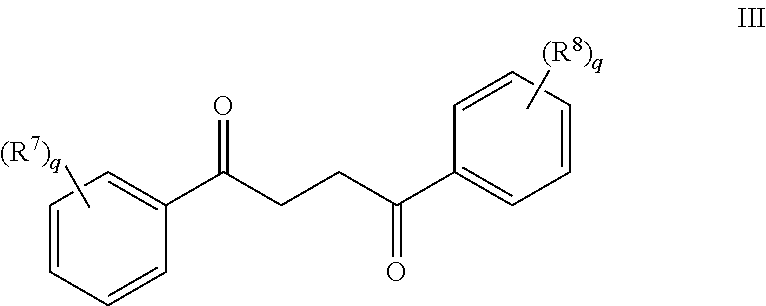

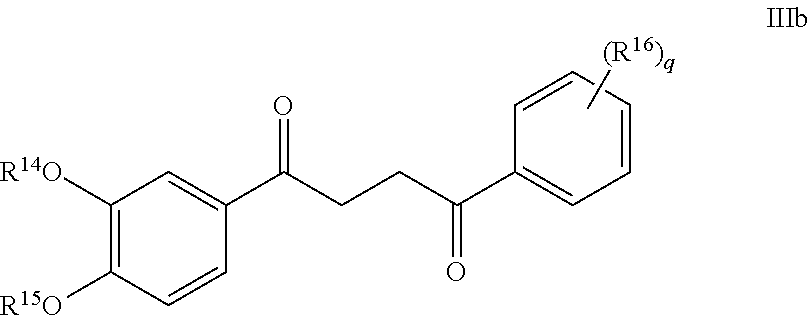

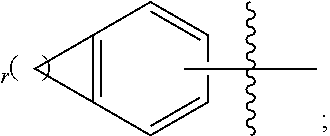





View All Diagrams
| United States Patent | 10,457,672 |
| KC , et al. | October 29, 2019 |
.gamma.-diketones as Wnt/.beta.-catenin signaling pathway activators
Abstract
The present disclosure provides .gamma.-diketones or analogs thereof, that activate Wnt/.beta.-catenin signaling and thus treat or prevent diseases related to signal transduction, such as osteoporosis and osteoarthropathy; osteogenesis imperfecta, bone defects, bone fractures, periodontal disease, otosclerosis, wound healing, craniofacial defects, oncolytic bone disease, traumatic brain injuries or spine injuries, brain atrophy/neurological disorders related to the differentiation and development of the central nervous system, including Parkinson's disease, strokes, ischemic cerebral disease, epilepsy, Alzheimer's disease, depression, bipolar disorder, schizophrenia; otic disorders like cochlear hair cell loss; eye diseases such as age related macular degeneration, diabetic macular edema or retinitis pigmentosa and diseases related to differentiation and growth of stem cell, such as hair loss, hematopoiesis related diseases and tissue regeneration related diseases.
| Inventors: | KC; Sunil Kumar (San Diego, CA), Wallace; David Mark (San Diego, CA), Hood; John (San Diego, CA), Barroga; Charlene F. (San Diego, CA) | ||||||||||
|---|---|---|---|---|---|---|---|---|---|---|---|
| Applicant: |
|
||||||||||
| Assignee: | Samumed, LLC (San Diego,
CA) |
||||||||||
| Family ID: | 51388762 | ||||||||||
| Appl. No.: | 15/918,086 | ||||||||||
| Filed: | March 12, 2018 |
Prior Publication Data
| Document Identifier | Publication Date | |
|---|---|---|
| US 20190055227 A1 | Feb 21, 2019 | |
Related U.S. Patent Documents
| Application Number | Filing Date | Patent Number | Issue Date | ||
|---|---|---|---|---|---|
| 15356903 | Nov 21, 2016 | 9951053 | |||
| 14187063 | Jan 3, 2017 | 9533976 | |||
| 61768033 | Feb 22, 2013 | ||||
| Current U.S. Class: | 1/1 |
| Current CPC Class: | C07D 319/18 (20130101); C07D 407/06 (20130101); C07D 409/06 (20130101); C07D 263/56 (20130101); C07D 317/46 (20130101); C07D 405/06 (20130101); C07D 307/80 (20130101); C07D 319/16 (20130101); C07D 311/58 (20130101); C07D 235/06 (20130101); C07D 401/06 (20130101); C07D 231/56 (20130101); C07D 339/08 (20130101); C07D 327/06 (20130101); C07D 413/06 (20130101); A61P 25/00 (20180101); C07D 213/50 (20130101); C07D 411/06 (20130101); C07D 333/54 (20130101); C07D 317/54 (20130101) |
| Current International Class: | C07D 411/06 (20060101); C07D 317/54 (20060101); A61P 25/00 (20060101); C07D 307/80 (20060101); C07D 413/06 (20060101); C07D 407/06 (20060101); C07D 235/06 (20060101); C07D 333/54 (20060101); C07D 213/50 (20060101); C07D 317/46 (20060101); C07D 319/16 (20060101); C07D 327/06 (20060101); C07D 339/08 (20060101); C07D 401/06 (20060101); C07D 405/06 (20060101); C07D 409/06 (20060101); C07D 263/56 (20060101); C07D 311/58 (20060101); C07D 319/18 (20060101); C07D 231/56 (20060101) |
References Cited [Referenced By]
U.S. Patent Documents
| 3040054 | June 1962 | Bodanszky et al. |
| 3855675 | December 1974 | Denzel et al. |
| 4014889 | March 1977 | Stetter et al. |
| 4032526 | June 1977 | Cross et al. |
| 4164559 | August 1979 | Miyata et al. |
| 4284629 | August 1981 | Grohe et al. |
| 4474752 | October 1984 | Haslam et al. |
| 4537617 | August 1985 | Plath et al. |
| 4761471 | August 1988 | Urist |
| 5194619 | March 1993 | Reuschling et al. |
| 5252191 | October 1993 | Pauli et al. |
| 5420273 | May 1995 | Klaus et al. |
| 5585118 | December 1996 | Stoll |
| 5977108 | November 1999 | Kikuchi et al. |
| 6020488 | February 2000 | Wuonola et al. |
| 6120484 | September 2000 | Silverstein |
| 6310049 | October 2001 | Wada et al. |
| 6346260 | February 2002 | Holzl et al. |
| 6377849 | April 2002 | Lenarz et al. |
| 6440102 | August 2002 | Arenberg et al. |
| 6620804 | September 2003 | Chang et al. |
| 6624184 | September 2003 | Gu et al. |
| 6648873 | November 2003 | Arenberg et al. |
| 6911211 | June 2005 | Eini et al. |
| 6960591 | November 2005 | Hirano et al. |
| 7012075 | March 2006 | Prasit et al. |
| 7041837 | May 2006 | Lohray et al. |
| 7053111 | May 2006 | Gu et al. |
| 7060720 | June 2006 | Gu et al. |
| 7205324 | April 2007 | Gu et al. |
| 7524975 | April 2009 | Mae et al. |
| 7709519 | May 2010 | Hirano et al. |
| 7960562 | June 2011 | Hirano et al. |
| 8088369 | January 2012 | Izawa et al. |
| 8124760 | February 2012 | Haga et al. |
| 8410109 | April 2013 | Wong et al. |
| 8609717 | December 2013 | KC et al. |
| 8629176 | January 2014 | Kumar KC et al. |
| 8741357 | June 2014 | Linter et al. |
| 8921413 | December 2014 | Kumar KC et al. |
| 9303010 | April 2016 | Kumar KC et al. |
| 9493437 | November 2016 | Kumar KC et al. |
| 9533976 | January 2017 | Kumar KC et al. |
| 9795550 | October 2017 | Hood et al. |
| 9884053 | February 2018 | KC et al. |
| 9951053 | April 2018 | Kc |
| 2003/0028015 | February 2003 | Chang et al. |
| 2003/0087922 | May 2003 | Bethiel et al. |
| 2004/0224003 | November 2004 | Schultz |
| 2004/0266732 | December 2004 | Galvez et al. |
| 2005/0054578 | March 2005 | Sandberg et al. |
| 2005/0267110 | December 2005 | Hirano et al. |
| 2005/0282707 | December 2005 | Almsick et al. |
| 2006/0142358 | June 2006 | Autier et al. |
| 2006/0264897 | November 2006 | Lobl |
| 2006/0276536 | December 2006 | Vander Jagt et al. |
| 2007/0021606 | January 2007 | Egle et al. |
| 2007/0060644 | March 2007 | Vander Jagt et al. |
| 2007/0185152 | August 2007 | Yamashita et al. |
| 2007/0238733 | October 2007 | Joshi et al. |
| 2008/0139585 | June 2008 | Rathinavelu et al. |
| 2008/0146555 | June 2008 | Caligiuri et al. |
| 2008/0262205 | October 2008 | ter Haar et al. |
| 2009/0232754 | September 2009 | Meyer et al. |
| 2010/0152493 | June 2010 | Shibata et al. |
| 2010/0204245 | August 2010 | Malamas et al. |
| 2010/0210036 | August 2010 | Arnold et al. |
| 2012/0046320 | February 2012 | KC et al. |
| 2013/0079643 | March 2013 | Korichi et al. |
| 2013/0171274 | July 2013 | Son et al. |
| 2013/0172291 | July 2013 | Peter et al. |
| 2014/0005228 | January 2014 | Kumar KC et al. |
| 2014/0080902 | March 2014 | Kumar |
| 2014/0179642 | June 2014 | Santhanam et al. |
| 2014/0243349 | August 2014 | Kumar KC et al. |
| 2015/0299157 | October 2015 | Kumar KC et al. |
| 2015/0299174 | October 2015 | Kumar KC et al. |
| 2017/0246154 | August 2017 | Kumar KC et al. |
| 2017/0260176 | September 2017 | Kumar KC et al. |
| 2018/0193244 | July 2018 | Hood et al. |
| 1382688 | Dec 2002 | CN | |||
| 1440391 | Sep 2003 | CN | |||
| 1558758 | Dec 2004 | CN | |||
| 103153053 | Feb 2015 | CN | |||
| 201000673 | Apr 2011 | EA | |||
| 201000718 | Jun 2011 | EA | |||
| 201101244 | Apr 2012 | EA | |||
| 0230110 | Jul 1987 | EP | |||
| 0290442 | Nov 1988 | EP | |||
| 0322033 | Jun 1989 | EP | |||
| 0360701 | Mar 1990 | EP | |||
| 0365089 | Apr 1990 | EP | |||
| 0500005 | Aug 1992 | EP | |||
| 0557089 | Aug 1993 | EP | |||
| 0738705 | Oct 1996 | EP | |||
| 0885869 | Dec 1998 | EP | |||
| 1067195 | Jan 2001 | EP | |||
| H05-170764 | Jul 1993 | JP | |||
| 2001503381 | Mar 2001 | JP | |||
| 2008106011 | May 2008 | JP | |||
| 2008222606 | Sep 2008 | JP | |||
| 2009-179619 | Aug 2009 | JP | |||
| 2010195768 | Sep 2010 | JP | |||
| WO1987005297 | Sep 1987 | WO | |||
| WO1988003805 | Jun 1988 | WO | |||
| WO1990011366 | Oct 1990 | WO | |||
| WO1993022259 | Nov 1993 | WO | |||
| WO1996021665 | Jul 1996 | WO | |||
| WO1996032938 | Oct 1996 | WO | |||
| WO1996040668 | Dec 1996 | WO | |||
| WO9746225 | Dec 1997 | WO | |||
| WO2000026197 | May 2000 | WO | |||
| WO2001000578 | Jan 2001 | WO | |||
| WO2001004100 | Jan 2001 | WO | |||
| WO2001019822 | Mar 2001 | WO | |||
| WO2001027116 | Apr 2001 | WO | |||
| WO2001049291 | Jul 2001 | WO | |||
| WO2001053268 | Jul 2001 | WO | |||
| WO2001077090 | Oct 2001 | WO | |||
| WO2002043675 | Jun 2002 | WO | |||
| WO2003009841 | Feb 2003 | WO | |||
| WO2003016266 | Feb 2003 | WO | |||
| WO2003037316 | May 2003 | WO | |||
| WO2003048109 | Jun 2003 | WO | |||
| WO2004016592 | Feb 2004 | WO | |||
| WO2005009997 | Feb 2005 | WO | |||
| WO2005108347 | Nov 2005 | WO | |||
| WO2006017896 | Jan 2006 | WO | |||
| WO2006002119 | Feb 2006 | WO | |||
| WO2006077851 | Jul 2006 | WO | |||
| WO2007003389 | Jan 2007 | WO | |||
| WO2007051314 | May 2007 | WO | |||
| WO2007059108 | May 2007 | WO | |||
| WO2007103584 | Sep 2007 | WO | |||
| WO2008001921 | Jan 2008 | WO | |||
| WO2008020625 | Feb 2008 | WO | |||
| WO2008118626 | Oct 2008 | WO | |||
| WO2008156345 | Dec 2008 | WO | |||
| WO2009071997 | Jun 2009 | WO | |||
| WO2009129267 | Oct 2009 | WO | |||
| WO2009136889 | Nov 2009 | WO | |||
| WO2010054126 | May 2010 | WO | |||
| WO2010/075551 | Jul 2010 | WO | |||
| WO2010075551 | Jul 2010 | WO | |||
| WO2011009826 | Jan 2011 | WO | |||
| WO2012024404 | Feb 2012 | WO | |||
| WO2012106343 | Aug 2012 | WO | |||
| WO2013113722 | Aug 2013 | WO | |||
| WO2013169724 | Nov 2013 | WO | |||
| WO2014128207 | Aug 2014 | WO | |||
| WO2014128591 | Aug 2014 | WO | |||
| WO2014130869 | Aug 2014 | WO | |||
| WO2014130879 | Aug 2014 | WO | |||
Other References
|
Adam et al., "The Importance of Spin Polarization in Electronic Substituent Effects of the Zero-Field EPR D Parameter in 1,3-Diarylcyclopentane-1,3-diyl Triplet Diradicals," J. Am. Chem. Soc., 121(46): 10820-10827, Nov. 6, 1999. cited by applicant . Agathocleous et al., "A directional Wnt/.beta.-catenin-Sox2-proneural pathway regulates the transition from proliferation to differentiation in the Xenopus retina," Development 2009, 136(19), 3289-3299. cited by applicant . Akiri et al., "Wnt pathway aberrations including autocrine Wnt activation occur at high frequency in human non-small-cell lung carcinoma," Oncogene 2009, 28(21): 2163-2172. cited by applicant . Amit et al., "Axin-mediated CKI phosphorylation of .beta.-catenin at Ser 45: a molecular switch for the Wnt pathway," Genes & Development 2002, 16(9): 1066-1076. cited by applicant . Baron and Rawadi, "Minireview: Targeting the Wnt/-Catenin Pathway to Regulate Bone Formation in the Adult Skeleton," Endocrinology Jun. 2007, 148(6): 2635-2643. cited by applicant . Belgodere et al., "Studies in isomeric pyridylisoxazoles," Heterocycles, 20(3): 501-504, 1983. cited by applicant . Benati et al., "Thermal reactions of aryl azides with trans-1,2-dibenzoyl- and trans-1,2-diacetyl-ethylene. Reactivity of 4,5-dibenzoyl- and 4,5-diacetyl-1-aryltriazoles" J. Chem. Soc., Perkin Trans. 1, No. 12 (1989), pp. 2235-2243. cited by applicant . Bhattacharyya and Dayal, "Age-related cochlear hair cell loss in the chinchilla," Ann Otol Rhinol Laryngol., 94(1 Pt 1):75-80, Jan.-Feb. 1985. cited by applicant . Bienz and Clevers, "Linking colorectal cancer to Wnt signaling," Cell, 103(2):311-320, Oct. 13, 2000. cited by applicant . Biftu et al., "Syntheses of lignans from 2,3-diaroylbutanes," J Chem Soc Perkin 1: Organic and Bio-Organic Chemistry (1972-1999), (1978), vol. 19, pp. 1147-1150. cited by applicant . Bodine et al., "A small molecule inhibitor of the Wnt antagonist secreted frizzled-related protein-1 stimulates bone formation," Bone 2009, 44(6): 1063-1068. cited by applicant . Bogdan Allemann et al., "Antioxidants used in skin care formulations," Skin Therapy Lett., 13(7):5-9, Sep. 2008. cited by applicant . Boger et al., "Non-Amide-Based Combinatorial Libraries Derived from N-Boc-Iminodiacetic Acid: Solution-Phase Synthesis of Piperazinone Libraries with Activity Against LEF-1/.beta.-Catenin-Mediated Transcription," Helvetica Chimica Acta, 83(8): 1825-1845, Aug. 9, 2000. cited by applicant . Bruchhausen and Lingner, [A Synthesis of DL-Asarinin and DL-Sesamin] "Eine Synthese von DL-Asarinin and DL-Sesamin," Archiv Der Pharmazie, 290:1-16, Jan. 1957 [English translation included], 38 pages. cited by applicant . Bylund et al., "Vertebrate neurogenesis is counteracted by Sox1-3 activity," Nature Neuroscience 2003, 6(11): 1162-1168. cited by applicant . Cairo et al., "Hepatic stem-like phenotype and interplay of Wnt/beta-catenin and Myc signaling in aggressive childhood liver cancer." Cancer Cell Dec. 2008, 14(6): 471-484. cited by applicant . Chai et al., "Wnt signaling induces proliferation of sensory precursors in the postnatal mouse cochlea," Proc Natl Acad Sci U S A., 109(21):8167-72, Epub May 4, 2012. cited by applicant . Chemical Abstracts 154:83772 of Wang et al, Natural Product Communications (2009), 4(11), pp. 1571-1574. [Abstract]. cited by applicant . Chen and Alman, "Wnt Pathway, an Essential Role in Bone Regeneration," 2009, Journal of Cellular Biochemistry 106:353-362. cited by applicant . Chilosi et al., "Aberrant Wnt/beta-catenin pathway activation in idiopathic pulmonary fibrosis," Am J Pathol., 162(5):1495-1502, May 2003. cited by applicant . Chou and Talalay, "Quantitative analysis of dose-effect relationships: the combined effects of multiple drugs or enzyme inhibitors," Adv Enzyme Regul., 22:27-55, 1984. cited by applicant . Clarke, A. R. "Wnt signalling in the mouse intestine," Oncogene 2006, 25(57): 7512-7521. cited by applicant . Cointet et al., "Synthese et proprietes pharmacologiques des acetoacetyl-3 indoles et leurs derives," [Synthesis and pharmacological properties of 3-acetoacetylindoles and their derivatives] European Journal of Medicinal Chemistry, 11(5):471-479, 1976 [English machine translation]. cited by applicant . Constable et al., "Platinamacrocycles containing 2, 5-thiophenediyl and poly (2, 5-thiophenediyl)-linked azaaromatic ligands. New structural paradigms for metallosupramolecular chemistry," Polyhedron 25(8): 1844-1863, 2006. cited by applicant . Corr, "Wnt-.beta.-catenin signaling in the pathogenesis of osteoarthritis" Nature Clinical Practice, Oct. 2008, 4(10): 550-556. cited by applicant . Denayer et al., "Canonical Wnt signaling controls proliferation of retinal stem/progenitor cells in postembryonic Xenopus eyes," Stem Cells 2008, 26(8): 2063-2074. cited by applicant . Duli ska-Molak et al., "Age-related changes in the mechanical properties of human fibroblasts and its prospective reversal after anti-wrinkle tripeptide treatment," International journal of peptide research and therapeutics, 20(1): 77-85, 2014. cited by applicant . Extended European Search Report for Application No. 14753569.4, dated Jun. 8, 2016, 6 pages. cited by applicant . Farwick et al., "An ECM-derived Tetrapeptide to Counterbalance ECM Degeneration," Cosmetics & Toiletries, 124: 51-54, 2009. cited by applicant . Fernandez-Martos et al., "Differential expression of Wnts after spinal cord contusion injury in adult rats," PLoS One, 6(11):e27000, 12 pages, Epub Nov. 2011. cited by applicant . Fischer et al., "Direct and non-direct measurement techniques for analysis of skin surface topography," Skin Pharmacol Appl Skin Physiol., 12(1-2):1-11, Jan.-Apr. 1999. cited by applicant . Ford et al., "Anti-irritants: Myth or reality? an overview," Exogenous Dermatology., 3(3):154-160, 2004. cited by applicant . Gerbino, Remington: The Science and Practice of Pharmacy, 21st Edition. Philadelphia, PA: Lippincott Williams & Wilkins, 2005. cited by applicant . Glass et al., "Canonical Wnt Signaling in Differentiated Osteoblasts Controls Osteoclast Differentiation," Developmental Cell 2005, 8(5): 751-764. cited by applicant . Gonzalez et al., "The latest on skin photoprotection," Clin Dermatol., 26(6):614-626, Nov.-Dec. 2008. cited by applicant . Graham et al., "SOX2 Functions to Maintain Neural Progenitor Identity," Neuron 2003, 39(5): 749-765. cited by applicant . Greene and Wuts, "The role of protective groups in organic synthesis," Protective Groups in Organic Synthesis, 4th Ed., John Wiley & Sons, 15 pages, 2007. cited by applicant . Harris, "Cellular diversification in the vertebrate retina," Current Opinion in Genetics & Development 1997, 7(5): 651-658. cited by applicant . Hollis and Zou, "Expression of the Wnt signaling system in central nervous system axon guidance and regeneration," Front Mol Neurosci., 5:5, 5 pages, Feb. 2012. cited by applicant . Hollis and Zou, "Reinduced Wnt signaling limits regenerative potential of sensory axons in the spinal cord following conditioning lesion," Proc Natl Acad Sci U S A., 109(36):14663-14668, Aug. 2012. cited by applicant . Huntzicker et al., "Controlling Hair Follicle Signaling Pathways through Polyubiquitination," Investigative Dermatology 2008, 128(5): 1081-1087. cited by applicant . Inestrosa and Arenas, "Emerging roles of Wnts in the adult nervous system" Nature Reviews 2010, 11: 77-86. cited by applicant . International Preliminary Report on Patentability for PCT/US2011/48086, dated Feb. 28, 2013, 6 pages. cited by applicant . International Preliminary Report on Patentability for PCT/US2014/017794, dated Aug. 25, 2015, 8 pages. cited by applicant . International Preliminary Report on Patentability for International App. No. PCT/US2015/046120, dated Mar. 2, 2017, 27 pages. cited by applicant . International Search Report and Written Opinion for PCT/US2011/48086 dated Jan. 5, 2012, 7 pages. cited by applicant . International Search Report and Written Opinion for PCT/US2014/017794, dated May 9, 2014, 15 pages. cited by applicant . International Search Report and Written Opinion for PCT/US2015/046120, dated Jan. 12, 2016, 35 pages. cited by applicant . Invitation to Pay for International App. No. PCT/US2015/046120, dated Nov. 4, 2015, 2 pages. cited by applicant . Japanese Office Action in Japanese Application No. 2015-559015, dated Jan. 17, 2018, 11 pages. cited by applicant . Jaenisch and Young, "Stem cells, the molecular circuitry of pluripotency and nuclear reprogramming," Cell, 132(4):567-582, Feb. 22, 2008. cited by applicant . Jiang et al., "Pluripotency of mesenchymal stem cells derived from adult marrow," Nature 2002, 418 (6893): 41-49. cited by applicant . Jo czyk et al., "Reactions of carbanions from 2-(dialkylamino)-arylacetonitriles with acetylene--simple syntheses of 1,3-dienamines and 1,4-diketones.sup.1," Tetrahedron, vol. 46, No. 3 (1990), pp. 1025-1038. cited by applicant . Kale et al., "Synthesis and characterization of some important indazolyl derivatives," Journal of Heterocyclic Chemistry, 44(2): 289-301, Mar.-Apr. 2007. cited by applicant . Kel'in and Kulinkovich, "A New Simple Synthesis of Aryl-Substituted 1,4-Diketones," Synthesis 1996, pp. 330-332. cited by applicant . Kim et al., "Anti-wrinkle and anti-inflammatory effects of active garlic components and the inhibition of MMPs via NF-.kappa.B signaling," PLoS One., 8(9):e73877, Sep. 16, 2013. cited by applicant . Kim et al., "The mechanism of retinol-induced irritation and its application to anti-irritant development," Toxicol Lett., 146(1):65-73, Dec. 15, 2003. cited by applicant . Klopp et al., "Effect of four treatment variants on the functional and cosmetic state of mature scars," J Wound Care., 9(7):319-324, Jul. 2000. cited by applicant . Koenekoo et al., "Novel RPGR mutations with distinct retinitis pigmentosa phenotypes in French-Canadian families," Am J Ophthalmol., 136(4):678-687, Oct. 2003. cited by applicant . Kubo et al., "Wnt2b controls retinal cell differentiation at the ciliary marginal zone," Development, 130(3):587-598, Feb. 2003. cited by applicant . Kubo et al., "Wnt2b inhibits differentiation of retinal progenitor cells in the absence of Notch activity by downregulating the expression of proneural genes," Development, 132(12):2759-2770, Epub May 18, 2005. cited by applicant . Lee et al., "Canonical Wnt signaling through Lef1 is required for hypothalamic neurogenesis," Development 2006, 133(22): 4451-4461. cited by applicant . Li et al., "Ring-opening of tertiary cyclopropanols derived from .beta.-diketones," Tetrahedron, 62(33):7762-7771, Aug. 14, 2006. cited by applicant . Lie et al., "Wnt signalling regulates adult hippocampal neurogenesis," Nature 2005, 437(7063):1370-1375. cited by applicant . Lindsley et al., "Canonical Wnt signaling is required for development of embryonic stem cell-derived mesoderm," Development, 2006, 133(19): 3787-3796. cited by applicant . Livesey and Cepko, "Vertebrate Neural Cell-Fate Determination: Lessons from the Retina," Nature Reviews Neuroscience 2001, 2: 109-118. cited by applicant . Logan and Nusse, "The Wnt signaling pathway in development and disease," Annu Rev Cell Dev Biol., 20:781-810, 2004. cited by applicant . Lopes L M X et al: "Further lignoids from Virola Sebifera," Jan. 1, 1984 (Jan. 1, 1984), Phytochemistry, Pergamon Press, Gb pp. 2647-2652, XP02662136. cited by applicant . Mao et al., "Low-Density Lipoprotein Receptor-Related Protein-5 Binds to Axin and Regulates the Canonical Wnt Signaling Pathway," Molecular Cell 2001, 7(4): 801-809. cited by applicant . Maramaldi et al., "Anti-inflammaging and antiglycation activity of a novel botanical ingredient from African biodiversity (Centevita.TM.)," Clin Cosmet Investig Dermatol., 7:1-9, Dec. 12, 2013. cited by applicant . Marson et al., "Wnt signaling promotes reprogramming of somatic cells to pluripotency," Cell Stem Cell, 3(2): 132-135, Aug. 7, 2008. cited by applicant . Marvin et al., "Inhibition of Wnt activity induces heart formation from posterior mesoderm," Genes & Development 2001, 15(3): 316-327. cited by applicant . McCormick et al., "Comparative ototoxicity of netilmicin, gentamicin, and tobramycin in cats," Toxicol Appl Pharmacol., 77(3):479-489, Mar. 15, 1985. cited by applicant . McCrea et al., "A homolog of the armadillo protein in Drosophila (plakoglobin) associated with E-cadherin," Science, 1991, 254(5036): 1359-1361. cited by applicant . Merrill, "Develop-WNTs in Somatic Cell Reprogramming," Cell Stem Cell 2008, 3(5): 465-466. cited by applicant . Michaelidis and Lie, "Wnt signaling and neural stem cells: caught in the Wnt web," Cell Tissue Res., 331(1):193-210, Epub Sep. 9, 2007. cited by applicant . Mitani et al., "Prevention of the photodamage in the hairless mouse dorsal skin by kojic acid as an iron chelator," Eur J Pharmacol., 411(1-2):169-174, Jan. 5, 2001. cited by applicant . Moon et al., "The Promise and Perils of Wnt Signaling Through .beta.-Catenin," Science, 2002, 296(5573): 1644-1646. cited by applicant . More et al., Synthesis antioxidant and antimicrobial activities of some 7-methoxy-3methyl benzofuran incorporated chromon-4-ones, Indian Journal of Heterocyclic Chemistry, 16(4): 379-382, Apr.-Jun. 2007. cited by applicant . Morin, "Beta-catenin signaling and cancer," BioEssays, Dec. 1999, 21(12): 1021-1030. cited by applicant . Morrison, Sean J. "Neuronal potential and lineage determination by neural stem cells," Current Opinion in Cell Biology,, 2001, 13: 666-672. cited by applicant . Morvan et al., "Deletion of a single allele of the Dkk1 gene leads to an increase in bone formation and bone mass ," Journal of Bone and Mineral Research, 2009, 21(6): 934-945. cited by applicant . Naito et al., "Developmental stage-specific biphasic roles of Wnt/.beta.-catenin signaling in cardiomyogenesis and hematopoiesis," Proc Natl Acad Sci USA. 2006, 103(52): 19812-19817. cited by applicant . Nevar et al., "One Step Preparation of 1,4-Diketones from Methyl Ketones and .alpha.-Bromomethyl Ketones in the Presence of ZnCl.sub.2 t-BuOH Et.sub.2NR as a Condensation Agent" Synthesis, No. 9 (2000), pp. 1259-1262. cited by applicant . Nishiyama and Kobayashi, "Synthesis of 1,4-Diketones: Reaction of .alpha.-Bromo Ketones with Tetrakis (dimethylamino)ethylene (TDAE)," Tetrahedron Letters, vol. 47, (2006) pp. 5565-5567. cited by applicant . Nuriev et al., "Synthetic pathways to a family of pyridine-containing azoles-promising ligands for coordination chemistry," Arkivoc 4: 208-224, 2005. cited by applicant . Okano et al., "Improvement of wrinkles by an all-trans-retinoic acid derivative, D-.delta.-tocopheryl retinoate," Journal of Dermatological Science Supplement, 2(1): S65-S74. cited by applicant . Okita et al., "Generation of germline-competent induced pluripotent stem cells," Nature (2007), 448(7151): 313-317. cited by applicant . Osakada et al., "Wnt Signaling Promotes Regeneration in the Retina of Adult Mammals," Journal of Neuroscience (2007), 27(15): 4210-4219. cited by applicant . Parker et al., "Polymers for drug eluting stents," Curr Pharm Des., 16(36):3978-3988, 2010. cited by applicant . Passarotti et al., "Synthesis of some 5-azaflavones," Bollettino Chimico Farmaceuitico, 130(8):312-314, Sep. 1991. cited by applicant . Patani et al., "Bioisosterism: A rational approach in drug design," Chem. Rev. 96: 3147-3176, 1996. cited by applicant . Pelletier et al., "(1-(4-(Naphthalen-2-yl)pyrimidin-2-yl)piperidin-4-yl)methanamine: a wingless beta-catenin agonist that increases bone formation rate," Journal of Medicinal Chemistry, 2009, 52(22): 6962-6965. cited by applicant . Polakis, "Wnt signaling and cancer," Genes Dev., 2000, 14(15): 1837-1851. cited by applicant . Rajesh et al., "Synthesis and in vitro short term cytotoxic studies of some novel .beta.-di ketones," Indian drugs, 40(1): 37-40, Jan. 2003. cited by applicant . Robinson et al., "Wnt/-Catenin Signaling is a Normal Physiological Response to Mechanical Loading in Bone," The Journal of Biological Chemistry, Oct. 2006, 281(42): 31720-31728. cited by applicant . Rosa et al., "N-and C-Acylation in .beta.-Enamino Ketones : Structural Effects on Regiocontrol," Synlett, No. 20 (2007), pp. 3165-3717. cited by applicant . Rosenberg Zand et al., "Flavonoids can block PSA production by breast and prostate cancer cell lines," Clinica Chimica Acta, 317:17-26, 2002. cited by applicant . Sakanaka et al., "Casein kinase IE in the Wnt pathway: Regulation of .beta.-catenin function," Proceedings of the National Academy of Sciences of the USA 1999, 96(22): 12548-12552. cited by applicant . Sampath, et al., "Isolation of osteogenin, an extracellular matrix-associated, bone-inductive protein, by heparin affinity chromatography," Proc. Natl. Acad. Sci. USA 1987, 84(20): 7109-7113. cited by applicant . Santini et al., "New molecular targets in bone metastases" Cancer Treatment Reviews, 36S3 (2010) S6-S10. cited by applicant . Sauthier et al., "Carbonylative 1,4-addition of potassium aryltrifluoroborates to vinyl ketones," New J. Chem., vol. 33 (2009), pp. 969-971. cited by applicant . Schneider et al., "Wnt antagonism initiates cardiogenesis in Xenopus laevis," Genes & Development, 2001, 15(3): 304-315. cited by applicant . Selic et al., "A Simple Stereoselective One-Pot Conversion of Compounds with a Dimethylaminomethylene Group into Enol Esters," Synthetic Communications, vol. 31, No. 11 (2001) pp. 1743-1752. cited by applicant . Selvamurugan and Aidhen, "N-Methoxy-N-methyl-3-bromopropionamide: anew three carbon homologating agent for the synthesis of unsymmetrical 1,4-diketones," Tetrahedron vol. 57, No. 28 (Jul. 2001) pp. 6065-6069. cited by applicant . Sheikh et al., "Synthesis of heterocyclic beta-diketones," Indian Journal of Heterocyclic Chemistry, 18(4): 333-336, Jan.-Mar. 2009. cited by applicant . Shi et al., "Identification of a novel signal for activation of Ti plasmid-encoded vir genes from rice (Oryza sativa L.)," Chinese Science Bulletin, 40(21): 1824-1828, Nov. 1995. cited by applicant . Shi et al., "Wnt-responsive Lgr5-expressing stem cells are hair cell progenitors in the cochlea," J Neurosci., 32(28):9639-9648, Jul. 11, 2012. cited by applicant . Silkstone et al., ".beta.-Catenin in the race to fracture repair: in it to Wnt," Nature Clinical Practice, Aug. 2008, 4(8): 413-419. cited by applicant . Slepecky et al., "Correlation of audiometric data with changes in cochlear hair cell stereocilia resulting from impulse noise trauma," Acta Otolaryngol., 93(5-6):329-340, May-Jun. 1982. cited by applicant . Sorsak et al., "The synthesis of ethyl 2[(2,2-dibenzoypethenyl]amino-3-dimethyl-aminopropanoate and its application to the synthesis of fused 3-aminopyran-2-ones and 3-aminoazolo- and-aminopyridine-4(4H)-ones," J. Heterocyclic Chem, vol. 35, No. 6, pp. 1275-1279, 1998. cited by applicant . Sosnovskikh et al., "3-(Polyhaloacyl)chromones and Their Hetero Analogues: Synthesis and Reactions with Amines," Synthesis, No. 16 (2006) pp. 2707-2718. cited by applicant . Sosnovskikh et al., "Synthesis and some properties of 6-di(tri)fluoromethyl-and 5-di(tri)fluoroacetyl-3-methyl-1-phenylpyrano[2,3-c]pyrazol-4(1H)-ones," Russian Chemical Bulletin, vol. 54, No. 12 (2005), pp. 2846-2850. cited by applicant . Soufyane et al., "Synthesis of some fluorinatednitrogen heterocycles from (diethylaminomethylene)hexafluoroacetylacetone (DAMFA)," Tetrahedron Letters, vol. 34, No. 48 (Nov. 1993), pp. 7737-7740. cited by applicant . Sperling, L. C.; "Hair anatomy for the clinician," J. Amer. Acad. Dermatology 1991, 25(1, Part 1): 1-17. cited by applicant . Suh et al., "Axonal regeneration effects of Wnt3a-secreting fibroblast transplantation in spinal cord-injured rats," Acta Neurochir (Wien), 153(5):1003-1010, Epub Jan. 2011. cited by applicant . Tamura et al., "Role of the Wnt signaling pathway in bone and tooth," Frontiers in Bioscience, Jun. 2010, E2, 1405-1413. cited by applicant . Tashiro, et al., "A Synthetic Peptide Containing the IKVAV Sequence from the A Chain of Laminin Mediates Cell Attachment, Migration, and Neurite Outgrowth,"The Journal of Biological Chemistry 1989, 264(27): 16174-16182. cited by applicant . Tencer, et al., "The effect of local controlled release of sodium fluoride on the stimulation of bone growth," Journal of Biomedical Materials Research 1989, 23(6): 571-589. cited by applicant . Trivedi et al., "Investigational anabolic therapies for osteoporosis" Expert Opin. Investig. Drugs, 2010, 19(8): 995-1005. cited by applicant . Tsukahara et al., "Inhibition of ultraviolet-B-induced wrinkle formation by an elastase-inhibiting herbal extract: implication for the mechanism underlying elastase-associated wrinkles," Int J Dermatol., 45(4):460-468, Apr. 2006. cited by applicant . Van Raay et al., "Frizzled 5 signaling governs the neural potential of progenitors in the developing Xenopus retina," Neuron 2005, 46(1): 23-36. cited by applicant . Van Uitert et al., "Coordination compounds. II. The dissociation constants of beta-diketones in water-dioxane solutions," Journal of the American Chemical Society, 75:455-457, Jan. 20, 1953. cited by applicant . Voituriez et al., "Preparation of a Storable Zinc Carbenoid Species and its Application in Cyclopropanation, Chain Extension, and [2,3]-Sigmatropic Rearrangement Reactions," J. Org. Chem, vol. 75, No. 4 (2010), pp. 1244-1250. cited by applicant . Wagner et al., "The Therapeutic Potential of the Wnt Signaling Pathway in Bone Disorders" Current Molecular Pharmacology, 2011, 4:14-25. cited by applicant . Wang et al, "Evaluation of the influence of compound structure on stacked-dimer formation in the DNA minor groove," Biochemistry, 40(8): 2511-2521, Feb. 2001. cited by applicant . Wang et al., "Caspase inhibitors, but not c-Jun NH2-terminal kinase inhibitor treatment, prevent cisplatin-induced hearing loss," Cancer Res., 64(24):9217-9224, Dec. 15, 2004. cited by applicant . Wang et al., "Two new lignans from the fruits of Schisandra sphenanthera," Nat Prod Commun., 4(11):1571-1574, Nov. 2009. cited by applicant . Wernig et al., "Neurons derived from reprogrammed fibroblasts functionally integrate into the fetal brain and improve symptoms of rats with Parkinson's disease," Proc. Natl. Acad. Sci. USA 2008, 105(15): 5856-5861. cited by applicant . Wong et al., "Effects Effects of forced expression of an NH2-terminal truncated beta-Catenin on mouse intestinal epithelial homeostasis," J Cell Biol., 141(3):765-777, May 4, 1998. cited by applicant . Wong et al., "Selection of multipotent stem cells during morphogenesis of small intestinal crypts of Lieberkuhn is perturbed by stimulation of Lef-1/beta-catenin signaling," J Biol Chem., 277(18):15843-50. Epub Feb. 19, 2002. cited by applicant . Wu and Farrelly, "Regulatory perspectives of Type II prodrug development and time-dependent toxicity management: nonclinical Pharm/Tox analysis and the role of comparative toxicology," Toxicology, 236(1-2):1-6, Epub Apr. 2007. cited by applicant . Wu Anxin et al: "An Expeditious Synthetic Route to Furolignans having Two Different Aryl Groups+," J. of Chem. Res.--Synopses, No. 3, Jan. 1, 1998 (Jan. 1, 1997), pp. 136-137, XP055276538. cited by applicant . Xue et al., "Zinc-mediated chain extension reaction of 1,3-diketones to 1,4-diketones and diastereoselective synthesis of trans-1,2-disubstituted cyclopropanols," Journal of Organic Chemistry 2006, 71(1): 215-218. cited by applicant . Yamaguchi et al., "Histone deacetylase 1 regulates retinal neurogenesis in zebrafish by suppressing Wnt and Notch signaling pathways," Development, 132(13):3027-3043, Jul. 2005. cited by applicant . Yasuda et al., "Cross-coupling reaction of alpha-chloroketones and organotin enolates catalyzed by zinc halides for synthesis of gamma-diketones," J Am Chem Soc., vol. 124, No. 25 (Jun. 2002), pp. 7440-7447. cited by applicant . Yavropoulou and Yovos, "The role of the wnt signaling pathway in osteoblast commitment and differentiation" Hormones, 2007, 6(4):279-294. cited by applicant . Yoon et al., "Anti-wrinkle effect of bone morphogenetic protein receptor 1a-extracellular domain (BMPR1a-ECD)," BMB Rep., 46(9):465-470, Sep. 2013. cited by applicant . Yoshimura et al., "Discovery of novel and potent retinoic acid receptor alpha agonists: syntheses and evaluation of benzofuranyl-pyrrole and benzothiophenyl-pyrrole derivatives," J Med Chem., 43(15):2929-2937, Jul. 27, 2000. cited by applicant . Zaragosi et al., Effects of GSK3 inhibitors on in vitro expansion and differentiation of human adipose-derived stem cells into adipocytes. BMC Cell Biology 2008, 9(11), pp. 1-9, Published: Feb. 13, 2006, Abstract; p. 2. cited by applicant . Zhang et al., "Role of the conserved aspartate and phenylalanine residues in prokaryotic and mitochondrial elongation factor Ts in guanine nucleotide exchange," FEBS Lett., 391(3):330-332, Aug. 12, 1996. cited by applicant . Zhu and Zhang, "Synthesis and reaction of .beta.,.beta.-di(trifluoroacetyl) ethylenederivatives, (CF.sub.3CO).sub.2C=CR.sub.1R.sub.2" Journal of Fluorine Chemistry, vol. 74, No. 2 (1995), pp. 167-170. cited by applicant . U.S. Appl. No. 13/211,665, filed Aug. 17, 2011, Kumar KC et al. cited by applicant . U.S. Appl. No. 14/019,092, filed Sep. 5, 2013, Kumar KC et al. cited by applicant . U.S. Appl. No. 14/086,529, filed Nov. 21, 2013, Kumar KC et al. cited by applicant . U.S. Appl. No. 14/547,858, filed Nov. 19, 2014, Kumar KC et al. cited by applicant . U.S. Appl. No. 14/547,951, filed Nov. 19, 2014, Kumar KC et al. cited by applicant . U.S. Appl. No. 15/349,118, filed Nov. 11, 2016, Kumar KC et al. cited by applicant . U.S. Appl. No. 15/855,463, filed Dec. 27, 2017, Kumar KC et al. cited by applicant . U.S. Appl. No. 14/187,063, filed Feb. 21, 2014, Kumar KC et al. cited by applicant . U.S. Appl. No. 15/356,903, filed Nov. 21, 2016, Kumar KC et al. cited by applicant . U.S. Appl. No. 14/831,456, filed Aug. 20, 2015, Hood et al. cited by applicant . U.S. Appl. No. 15/706,908, filed Sep. 18, 2017, Hood et al. cited by applicant . Extended European Search Report for Application No. 15833863.2, dated Mar. 12, 2018, 5 pages. cited by applicant . Extended European Search Report for Application No. 17193280.9, dated Mar. 6, 2018, 6 pages. cited by applicant . EP Partial European Search Report in European Appln. No. 18182474.9, dated Jan. 17, 2019, 11 pages. cited by applicant . Kazimierz et al, "Condensation of phenylglyoxals with 3-Acetylpyridine," Acta Poloniae Pharmaceutica, Jan. 15, 1981, pp. 33-39. cited by applicant. |
Primary Examiner: Shameem; Golam M
Attorney, Agent or Firm: Fish & Richardson P.C.
Parent Case Text
CROSS-REFERENCE TO RELATED APPLICATIONS
This application is a divisional application of U.S. application Ser. No. 15/356,903, filed Nov. 21, 2016, which is a divisional application of U.S. application Ser. No. 14/187,063, filed Feb. 21, 2014, and claims the benefit of U.S. Provisional Application No. 61/768,033, filed Feb. 22, 2013, each of which is incorporated herein by reference in its entirety.
Claims
What is claimed is:
1. A compound of Formula IIIb: ##STR01124## or a pharmaceutically acceptable salt thereof, wherein: R.sup.14 is selected from the group consisting of unsubstituted --C.sub.1-6 alkyl, --C.sub.1-3 haloalkyl, and CF.sub.3; R.sup.15 is selected from the group consisting of unsubstituted --C.sub.1-6 alkyl, --C.sub.1-3 haloalkyl, and CF.sub.3; each R.sup.16 is independently selected at each occurrence from the group consisting of H, unsubstituted --C.sub.1-6 alkyl, --CH.sub.2OH, --CH.sub.2N(R.sup.17b).sub.2, --C.sub.1-3 haloalkyl, halide, --OR.sup.17, CF.sub.3, and CN; each R.sup.17 is independently selected from the group consisting of unsubstituted --C.sub.1-6 alkyl, --C.sub.1-3 haloalkyl, and CF.sub.3; each R.sup.17b is independently selected from the group consisting of H and unsubstituted --C.sub.1-3 alkyl; and q is an integer of 1 to 5; with the proviso that the compound of Formula IIIb is not a compound selected from the group consisting of: ##STR01125##
2. The compound of claim 1, wherein R.sup.14 and R.sup.15 are independently selected from the group consisting of CH.sub.3 and CF.sub.3.
3. The compound of claim 2, wherein R.sup.14 and R.sup.15 are both CH.sub.3.
4. The compound of claim 1, wherein each R.sup.16 is independently selected at each occurrence from the group consisting of H, Me, halide, --OMe, CF.sub.3, and CN.
5. The compound of claim 3, wherein each R.sup.16 is independently selected at each occurrence from the group consisting of H, Me, halide, --OMe, CF.sub.3, and CN.
6. The compound of claim 5, wherein R.sup.16 is independently selected at each occurrence from the group consisting of H, Me, halide, --OMe, CF.sub.3, and CN; and q is 1.
7. The compound of claim 5, wherein R.sup.16 is independently selected at each occurrence from the group consisting of H, Me, F, and Cl; and q is 1.
8. The compound of claim 1, wherein the compound of Formula IIIb is selected from the group consisting of: ##STR01126## ##STR01127## or a pharmaceutically acceptable salt thereof.
Description
BACKGROUND
Technical Field
This disclosure relates to activators of one or more proteins in the Wnt pathway, including activators of one or more Wnt proteins, and compositions comprising the same. More particularly, it concerns the use of a .gamma.-diketones or salts or analogs thereof, in the treatment of osteoporosis and osteoarthropathy; osteogenesis imperfecta; bone defects; bone fractures; periodontal disease; otosclerosis; wound healing; craniofacial defects; oncolytic bone disease; traumatic brain or spine injuries; brain atrophy/neurological disorders related to the differentiation and development of the central nervous system, including Parkinson's disease, strokes, ischemic cerebral disease, epilepsy, Alzheimer's disease, depression, bipolar disorder, and schizophrenia; otic disorders like cochlear hair cell loss; eye diseases such as age related macular degeneration, diabetic macular edema or retinitis pigmentosa; and diseases related to differentiation and growth of stem cell, such as hair loss, hematopoiesis related diseases and tissue regeneration related diseases.
Background
The Wnt/.beta.-catenin signaling pathway is involved in many biological processes. For example, aberrant activation of the Wnt/.beta.-catenin pathway has led to several phenotypes, including the development of a variety of human cancers, and diseases leading to abnormal development and functioning of stem cells [Oncogene (2009), 28(21), 2163-2172; Cancer Cell (2008), 14(6), 471-484; American Journal of Pathology (2003), 162(5), 1495-1502]. Chronic activation of the Wnt/.beta.-catenin signaling pathway has been implicated in the development of a variety of human malignancies, including high bone mass syndrome, sclerosteosis, colorectal carcinomas, hepatocellular carcinomas (HCCs), ovarian, uterine, pancreatic carcinomas, and melanomas [BioEssays (1999) 21(12), 1021-1030; Cell (2000), 103(2), 311-320; Genes Dev. (2000), 14(15), 1837-1851]. Since the Wnt/.beta.-catenin pathway is involved in a number of growth and development processes, mutation of the proteins involved in the Wnt/.beta.-catenin signal transduction system has also been linked to other human diseases such as abnormalities in development, hair follicle morphogenesis, stem cell differentiation, bone formation, and cell proliferation.
SUMMARY
The present disclosure relates to methods for increasing cell or tissue regeneration in a vertebrate patient. The disclosure relates to methods for increasing the activity of embryonic and/or adult stem cells, progenitor cells, mesenchymal progenitor/stem cells and/or differentiated cells in vivo in a vertebrate patient. The disclosure further relates to methods for increasing cell or tissue regeneration in a vertebrate patient by administering to a vertebrate patient in need thereof a compound according to Formula I, II, III, IIIa, IIIb, and/or IV, and increasing a stem cell, progenitor cell, and/or differentiated cell population in the vertebrate patient as compared to the stem cell, progenitor cell, and/or differentiated cell population in the vertebrate patient before treatment. Increasing the stem cell, progenitor cell, or differentiated cell population in the vertebrate patient can be a result of one or more of cell proliferation, cell homing, decreased apoptosis, self-renewal, and increased cell survival.
In one embodiment, the cell or tissue regeneration can occur in tissues including but not limited to, bone, chondrocytes/cartilage, muscle, skeletal muscle, cardiac muscle, pancreatic cells, endothelial cells, vascular endothelial cells, adipose cells, liver, skin, connective tissue, hematopoietic stem cells, neonatal cells, umbilical cord blood cells, fetal liver cells, adult cells, bone marrow cells, peripheral blood cells, erythroid cells, granulocyte cells, macrophage cells, granulocyte-macrophage cells, B cells, T cells, multipotent mixed lineage colony types, embryonic stem cells, mesenchymal progenitor/stem cells, mesodermal progenitor/stem cells, neural progenitor/stem cells, or nerve cells. The vertebrate can be mammalian, avian, reptilian, amphibian, osteichthyes, or chondrichthyes.
In one embodiment, the present disclosure provides a composition for preventing or decreasing the loss of hair and/or for stimulating or increasing hair growth or regrowth in a patient, wherein the composition comprises a compound according to Formula I, II, III, IIIa, IIIb, and/or IV.
In one embodiment, the present disclosure provides a composition for preventing cochlear hair cell loss in a patient, wherein the composition comprises a compound according to Formula I, II, III, IIIa, IIIb, and/or IV.
One embodiment of the present disclosure provides a pharmaceutical composition for the treatment of a neurodegenerative disease in a patient.
For example, the neurological disorder can be Alzheimer's disease, schizophrenia or schizo-affective disorder, bipolar disorder or unipolar disorder, depression, substance abuse, neurodegenerative disease, autism or autism spectrum disorder, or a disorder resulting from neural damage such as spinal injuries or brain injuries. The neurodegenerative disease may be, for instance, amyotrophic lateral sclerosis (Lou Gehrig's disease) or Parkinson's disease. In some embodiments, the disclosure provides methods for treating a brain injury resulting from a traumatic injury or stroke.
In some embodiments, the neurological disorder is an eye disease such as age related macular degeneration, diabetic macular edema or retinitis pigmentosa.
In one embodiment, the disclosure relates to methods for (i) reducing loss of bone mass or bone density, (ii) increasing bone mass or bone density, (iii) maintaining bone mass or bone density and/or (iv) reducing loss of calcium from bone in a patient, the method comprising: administering to the patient a therapeutically effective amount of a compound according to Formula I, II, III, IIIa, IIIb, and/or IV. As used in this disclosure, the term "bone mass" and "bone density" are used interchangeably.
In one embodiment, the disclosure relates to methods for regulating osteoblast activity or osteoclast activity comprising the use of a compound according to Formula I, II, III, IIIa, IIIb, and/or IV. Osteoblast activity can be regulated by regulating the proliferation or function of osteoblasts. The function of osteoblasts and/or osteoclasts can be regulated directly or indirectly.
In one embodiment, the method is for the treatment of a bone condition or a bone defect. For example, the bone condition being treated can include frailty, an osteoporotic fracture, a bone defect, childhood idiopathic bone loss, alveolar bone loss, mandibular bone loss, bone fracture, osteotomy, bone loss associated with periodontitis, or prosthetic ingrowth. In some embodiments, the bone condition being treated is Paget's disease. In another embodiment, the bone condition being treated is oncolytic bone disease.
In another embodiment, the disclosure relates to methods for promoting healing of bone fractures, bone defects, craniofacial defects, otosclerosis or osteogenesis imperfecta comprising: administering to a patient in need thereof a therapeutically effective amount of a compound according to Formula I, II, III, IIIa, IIIb, and/or IV.
In another embodiment, the disclosure relates to methods for bone tissue engineering comprising the use of a compound according to Formula I, II, III, IIIa, IIIb, and/or IV. In one embodiment, the cells used for bone tissue engineering are contacted with an effective amount of a compound according to Formula I, II, III, IIIa, IIIb, and/or IV.
In another embodiment, the disclosure relates to the use of a compound according to Formula I, II, III, IIIa, IIIb, and/or IV as a medicament for healing bone fractures or repairing bone defects in a mammal.
In one embodiment, the bone condition being treated is osteoporosis. For example, the osteoporosis being treated can be selected from the group consisting of: glucocorticoid-induced osteoporosis, hyperthyroidism-induced osteoporosis, immobilization-induced osteoporosis, heparin-induced osteoporosis, and immunosuppressive-induced osteoporosis.
In one embodiment, a compound according to Formula I, II, III, IIIa, IIIb, and/or IV is administered conjointly with an agent that increases bone mass or prevents the loss of bone mass. In one embodiment, the agent that increases bone mass is a growth factor, a mineral, a vitamin, a hormone, a prostaglandin, an inhibitor of 15-lipoxygenase, a bone morphogenic protein or another member of the TGF-beta superfamily which increases bone formation, an ACE inhibitor, a Hedgehog protein, examethasone, calcitonin, or an active fragment thereof. In one embodiment, the agent that prevents the loss of bone mass is progestin, estrogen, an estrogen/progestin combinations, estrone, estriol, 17.alpha.- or 17.beta.-ethynyl estradiol, SB242784, polyphosphonates, bisphosphonates, or an active fragment thereof.
In one embodiment of the disclosure, a compound according to Formula I, II, III, IIIa, IIIb, and/or IV, is administered to a patient in need thereof to enhance proliferation of intestinal epithelium, for the treatment, or as a therapeutic adjunct in the treatment, of diseases that compromise the intestinal epithelia, including inflammatory bowel diseases, mucositis (oral and gastrointestinal) and Celiac disease.
In another embodiment, the disclosure relates to methods for organ tissue engineering comprising the use of a compound according to Formula I, II, III, IIIa, IIIb, and/or IV. In one embodiment the cells used for organ tissue engineering are contacted with an effective amount of a compound according to Formula I, II, III, IIIa, IIIb, and/or IV.
Some embodiments disclosed herein include a Wnt/.beta.-catenin signaling pathway activator containing a .gamma.-diketone core. Other embodiments disclosed herein include pharmaceutical compositions and methods of treatment using one or more of the compounds provided herein.
One embodiment of a Wnt/.beta.-catenin signaling pathway activator disclosed herein includes compounds of Formula I:
##STR00001## or a pharmaceutically acceptable salt thereof.
In some embodiments of Formula I:
Ring A is a 7-12 membered heteroaryl, with the proviso that a carbon atom on the ring is attached to the carbonyl carbon;
Ring B is selected from the group consisting of phenyl and a 5-6 membered heteroaryl, with the proviso that a carbon atom on the ring is attached to the carbonyl carbon;
R.sup.1 is a substituent attached to Ring A and is independently selected at each occurrence from the group consisting of H, unsubstituted --C.sub.1-6 alkyl, --C.sub.1-3 haloalkyl, halide, --OR.sup.3, CF.sub.3, and CN;
R.sup.2 is a substituent attached to Ring B and is independently selected at each occurrence from the group consisting of H, unsubstituted --C.sub.1-6 alkyl, --CH.sub.2OH, --CH.sub.2N(R.sup.3b).sub.2, --C.sub.1-3 haloalkyl, halide, --OR.sup.3, CF.sub.3, and CN;
each R.sup.3 is independently selected from the group consisting of H, unsubstituted --C.sub.1-6 alkyl, --C.sub.1-3 haloalkyl, and CF.sub.3;
each R.sup.3b is independently selected from the group consisting of H and unsubstituted --C.sub.1-3 alkyl;
each n is an integer of 1 to 10; and
each m is an integer of 1 to 5.
Another embodiment of a Wnt/.beta.-catenin signaling pathway activator disclosed herein includes compounds of Formula II:
##STR00002## or a pharmaceutically acceptable salt thereof.
In some embodiments of Formula II:
Ring C is a 5-6 membered heteroaryl, with the proviso that a carbon atom on the ring is attached to the carbonyl carbon;
Ring D is selected from the group consisting of phenyl and a 5-6 membered heteroaryl, with the proviso that a carbon atom on the ring is attached to the carbonyl carbon;
R.sup.4 is a substituent attached to Ring C and is independently selected at each occurrence from the group consisting of H, unsubstituted --C.sub.1-6 alkyl, --C.sub.1-3 haloalkyl, halide, --OR.sup.6, CF.sub.3, and CN;
R.sup.5 is a substituent attached to Ring D and is independently selected at each occurrence from the group consisting of H, unsubstituted --C.sub.1-6 alkyl, --CH.sub.2OH, --CH.sub.2N(R.sup.6b).sub.2, --C.sub.1-3 haloalkyl, halide, --OR.sup.6, CF.sub.3, and CN;
each R.sup.6 is independently selected from the group consisting of H, unsubstituted --C.sub.1-6 alkyl, --C.sub.1-3 haloalkyl, and CF.sub.3;
each R.sup.6b is independently selected from the group consisting of H and unsubstituted --C.sub.1-3 alkyl;
each q is an integer of 1 to 4; and
each p is an integer of 1 to 5.
Another embodiment of a Wnt/.beta.-catenin signaling pathway activator disclosed herein includes compounds of Formula III:
##STR00003## or a pharmaceutically acceptable salt thereof.
In some embodiments of Formula III:
R.sup.7 is a substituent attached to the phenyl ring and is independently selected at each occurrence from the group consisting of unsubstituted --C.sub.1-6 alkyl, --CH.sub.2OH, --CH.sub.2N(R.sup.9a).sub.2, --C.sub.1-3 haloalkyl, halide, --OR.sup.9, CF.sub.3, and CN;
R.sup.8 is a substituent attached to the phenyl ring and is independently selected at each occurrence from the group consisting of H, unsubstituted --C.sub.1-6 alkyl, --CH.sub.2OH, --CH.sub.2N(R.sup.9a).sub.2, --C.sub.1-3 haloalkyl, halide, --OR.sup.9, CF.sub.3, and CN;
each R.sup.9 is independently selected from the group consisting of H, unsubstituted --C.sub.1-6 alkyl, --C.sub.1-3 haloalkyl and CF.sub.3;
each R.sup.9a is independently selected from the group consisting of H and unsubstituted --C.sub.1-3 alkyl; and
each q is an integer of 1 to 5.
Another embodiment of a Wnt/.beta.-catenin signaling pathway activator disclosed herein includes compounds of Formula IIIa:
##STR00004## or a pharmaceutically acceptable salt thereof.
In some embodiments of Formula IIIa:
R.sup.10 is selected from the group consisting of H, unsubstituted --C.sub.1-6 alkyl, --C.sub.1-3 haloalkyl, halide, --OR.sup.13, CF.sub.3, and CN;
R.sup.11 is selected from the group consisting of unsubstituted --C.sub.1-6 alkyl, --CH.sub.2OH, --CH.sub.2N(R.sup.13b).sub.2, --C.sub.1-3 haloalkyl, halide, --OR.sup.13, CF.sub.3, and CN;
R.sup.12 is a substituent attached to the phenyl ring and is independently selected at each occurrence from the group consisting of H, unsubstituted --C.sub.1-6 alkyl, --CH.sub.2OH, --CH.sub.2N(R.sup.13b).sub.2, --C.sub.1-3 haloalkyl, halide, --OR.sup.13, CF.sub.3, and CN;
each R.sup.13 is independently selected from the group consisting of unsubstituted --C.sub.1-6 alkyl, --C.sub.1-3 haloalkyl, and CF.sub.3;
each R.sup.13b is independently selected from the group consisting of H and unsubstituted --C.sub.1-3 alkyl; and
each q is an integer of 1 to 5.
Another embodiment of a Wnt/.beta.-catenin signaling pathway activator disclosed herein includes compounds of Formula IIIb:
##STR00005## or a pharmaceutically acceptable salt thereof.
In some embodiments of Formula IIIb:
R.sup.14 is selected from the group consisting of unsubstituted --C.sub.1-6 alkyl, --C.sub.1-3 haloalkyl, and CF.sub.3;
R.sup.15 is selected from the group consisting of unsubstituted --C.sub.1-6 alkyl, --C.sub.1-3 haloalkyl, and CF.sub.3;
R.sup.16 is a substituent attached to the phenyl ring and is independently selected at each occurrence from the group consisting of H, unsubstituted --C.sub.1-6 alkyl, CH.sub.2OH, --CH.sub.2N(R.sup.17b).sub.2, --C.sub.1-3 haloalkyl, halide, --OR.sup.17, CF.sub.3, and CN;
each R.sup.17 is independently selected from the group consisting of unsubstituted --C.sub.1-6 alkyl, --C.sub.1-3 haloalkyl, and CF.sub.3;
each R.sup.17b is independently selected from the group consisting of H and unsubstituted --C.sub.1-3 alkyl; and
each q is an integer of 1 to 5.
Another embodiment of a Wnt/.beta.-catenin signaling pathway activator disclosed herein includes compounds of Formula IV:
##STR00006## or a pharmaceutically acceptable salt thereof.
In some embodiments of Formula IV:
Ring F is
##STR00007##
Ring G is selected from the group consisting of
##STR00008## and a 5-6 membered heteroarylR.sup.19d, with the proviso that a carbon atom on the ring is attached to the carbonyl carbon;
each R.sup.18 is a substituent attached to Ring F and is independently selected at each occurrence from the group consisting of H, --C.sub.1-3 haloalkyl, halide, --OR.sup.20, CF.sub.3, and CN;
R.sup.19a is a substituent attached to the para position of phenyl and is selected from the group consisting of H, unsubstituted --C.sub.2-6 alkyl, --CH.sub.2OH, --CH.sub.2N(R.sup.21).sub.2, --C.sub.1-3 haloalkyl, F, Br, I, --OR.sup.20, CF.sub.3, and CN;
R.sup.19b is a substituent attached to the meta or ortho position of phenyl and is selected from the group consisting of H, unsubstituted --C.sub.2-6 alkyl, --CH.sub.2OH, --CH.sub.2N(R.sup.21).sub.2, --C.sub.1-3 haloalkyl, halide, --OR.sup.20, CF.sub.3, and CN;
R.sup.19c is 2-5 substituents, each attached to the phenyl and are independently selected at each occurrence from the group consisting of H, --CH.sub.2OH, --CH.sub.2N(R.sup.21).sub.2, --C.sub.1-3 haloalkyl, halide, --OR.sup.20, CF.sub.3, and CN;
R.sup.19d is 1-4 substituents, each attached to the heteroaryl ring and is independently selected at each occurrence from the group consisting of H, --CH.sub.2OH, --CH.sub.2N(R.sup.21).sub.2, --C.sub.1-3 haloalkyl, halide, --OR.sup.20, CF.sub.3, and CN;
each R.sup.20 is independently selected from the group consisting of H, unsubstituted --C.sub.3-6 alkyl, --C.sub.1-3 haloalkyl, and CF.sub.3;
each R.sup.21 is independently selected from the group consisting of H and unsubstituted --C.sub.1-3 alkyl;
p is an integer of 1 to 13; and
r is an integer of 1 to 5.
Some embodiments include stereoisomers of a compound of Formula I, II, III, IIIa, and/or IIIb.
Some embodiments include prodrugs of a compound of Formula I, II, III, IIIa, and/or IIIb. For example, prodrugs of a compound of Formula I, II, III, IIIa, and/or IIIb can be prodrug polymer conjugates for delayed release or extended release.
Also provided herein are pharmaceutical compositions comprising a compound of Formula I, II, III, IIIa, and/or IIIb and a pharmaceutically acceptable carrier, diluent, or excipient.
Some embodiments of the present disclosure include methods to prepare compounds of Formula I, II, III, IIIa, and/or IIIb.
It is to be understood that both the foregoing general description and the following detailed description are exemplary and explanatory only and are not restrictive of the invention, as claimed.
DETAILED DESCRIPTION
Provided herein are .gamma.-diketones capable of activating the Wnt/.beta.-catenin signaling pathway. The Wnt/.beta.-catenin signaling pathway has been found to play a role in the differentiation and development of nerve cells for the central nervous system, bone formation, hair follicle development and regeneration, and stimulation of stem cell growth, maintenance and differentiation.
The present disclosure relates to methods for increasing cell or tissue regeneration in a vertebrate patient. The disclosure relates to methods for increasing the activity of embryonic and/or adult stem cells, progenitor cells, mesenchymal progenitor/stem cells, or differentiated cells in vivo in a vertebrate patient. The disclosure further relates to methods for increasing cell or tissue regeneration by administering a compound according to Formula I, Ia, Ib, Ic, Id, Ie, If, Ig, Ih, Ii, II, IIa, IIb, IIc, IId, IIe, IIf, III, IIIa, IIIb, IIIc, IIId, and/or IV to a vertebrate patient in need thereof, and increasing a stem cell, progenitor cell population, or differentiated cell in the vertebrate patient compared to the stem cell or progenitor cell, or differentiated cell population in the vertebrate patient before treatment. In some embodiments, a method for increasing stem cell or progenitor cell population can be used to repair or replace damaged tissue in a vertebrate patient, wherein the cell or tissue regeneration occurs in bone, chondrocytes/cartilage, muscle, skeletal muscle, cardiac muscle, pancreatic cells, endothelial cells, vascular endothelial cells, adipose cells, liver, skin, connective tissue, hematopoietic stem cells, neonatal cells, umbilical cord blood cells, fetal liver cells, adult cells, bone marrow cells, peripheral blood cells, erythroid cells, granulocyte cells, macrophage cells, granulocyte-macrophage cells, B cells, T cells, multipotent mixed lineage colony types, embryonic stem cells, mesenchymal progenitor/stem cells, mesodermal progenitor/stem cells, neural progenitor/stem cells, or nerve cells.
Hair Growth
Compositions comprising one or more compounds according to Formula I, Ia, Ib, Ic, Id, Ie, If, Ig, Ih, Ii, II, IIa, IIb, IIc, IId, IIe, IIf, III, IIIa, IIIb, IIIc, IIId, and/or IV can be used to promote hair growth.
"Promoting hair growth" refers to maintaining, inducing, stimulating, accelerating, or revitalizing the growth of hair.
The methods of the present disclosure can be useful in the treatment of alopecia in mammals, and as such may be used to promote, increase, or assist in the growth of hair. Patients may be male or female. The term alopecia refers to both the complete absence of hair in skin which typically exhibits hair growth, as well as to a loss or diminution in the amount of hair. Multiple types and causes of alopecia are recognized in humans, including male pattern baldness, chemotherapy induced hair loss, congenital alopecia, and alopecia areata. The treatment of alopecia can include the treatment of skin with a total absence of hair growth as well as the treatment of skin having reduced or patchy hair growth. Successful treatment results in an increased number of hairs.
Patients to be treated according to the disclosure include human patients as well as other mammalian patients, such as dogs, cats, mice, rats, goats, llamas, minks, seals, beavers, ermines, and sheep. Patients can be treated for hair loss or to enhance the growth of hair, for example to increase wool or pelt production.
"Treating alopecia" refers to (i) preventing alopecia in an animal which may be predisposed to alopecia, (ii) inhibiting, retarding or reducing alopecia, (iii) promoting hair growth, and/or (iv) prolonging the anagen phase of the hair cycle.
A method for promoting hair growth in accordance with the present disclosure can include applying an effective amount of a compound according to Formula I, Ia, Ib, Ic, Id, Ie, If, Ig, Ih, Ii, II, IIa, IIb, IIc, IId, IIe, IIf, III, IIIa, IIIb, IIIc, IIId, and/or IV, or a pharmacologically acceptable salt thereof, to the skin of mammals. For example, the compound can be applied to a human scalp.
Cochlear Hair Cell Loss
Compositions comprising one or more compounds according to Formula I, Ia, Ib, Ic, Id, Ie, If, Ig, Ih, Ii, II, IIa, IIb, IIc, IId, IIe, IIf, III, IIIa, IIIb, IIIc, IIId, and/or IV can be used to promote regeneration of lost or damaged sensory hair cells.
"Promoting the regeneration of sensory hair cells" refers to maintaining, inducing, stimulating, accelerating, or revitalizing the growth of sensory hair cells.
The methods of the present disclosure are useful in the treatment of presbycusis in mammals, and as such may be used to promote, increase, or assist in the growth of cochlea hair cells. Mammalian cochlear hair cells come in two anatomically and functionally distinct types: the outer and inner hair cells. Patients may be male or female. Presbycusis can be caused by the slow loss of hearing that occurs as a result of ageing, after repeated exposure to loud noises, or as a symptom of certain medical conditions or medications. Multiple types and causes of presbycusis are recognized in humans, including, for example, arteriosclerosis (may diminish vascularity of the cochlea, thereby reducing its oxygen supply), diabetes mellitus (may cause vasculitis and endothelial proliferation in the blood vessels of the cochlea, thereby reducing its blood supply), poor diet (increased intake of saturated fat may accelerate atherosclerotic changes), stress, heart disease, diabetes blood vessel complications, high blood pressure, smoking (postulated to accentuate atherosclerotic changes in blood vessels), and viral or bacterial infections. Drugs, medications, substances, or toxins that can cause presbycusis as a symptom include, for example, aminoglycosides (gentamycin, streptomycin, etc.) and other antibiotics (macrolides and vancomycin), antineoplastic agents (platinum-based compounds cisplatin and carboplatin), salicylates (aspirin), quinine, and loop diuretics (ethacrynic acid, furosemide, bumetanide, etc.).
The term treating presbycusis refers to both the treatment of patients with total hearing loss as well as partial hearing loss. Successful treatment results in an improvement in a patient's hearing.
A method for promoting the regeneration of sensory hair cells in accordance with the present disclosure can include applying an effective amount of a compound according to Formula I, Ia, Ib, Ic, Id, Ie, If, Ig, Ih, Ii, II, IIa, IIb, IIc, IId, IIe, IIf, III, IIIa, IIIb, IIIc, IIId, and/or IV, or a pharmacologically acceptable salt thereof, in the ear of mammals. For example, the compound may be applied to the inner ear, or via intratympanic injection to the round window membrane or vicinity of the round window membrane.
Neurological Disorder
Compounds according to the present disclosure can modulate the cellular fate of neural stem cells and promote the differentiation of these neural precursors to functional neurons and glial cells.
Compositions comprising one or more compounds according to Formula I, Ia, Ib, Ic, Id, Ie, If, Ig, Ih, Ii, II, IIa, IIb, IIc, IId, IIe, IIf, III, IIIa, IIIb, IIIc, IIId, and/or IV can be used to treat neurodegenerative diseases.
Non-limiting examples of neurodegenerative diseases include Alzheimer's disease, schizophrenia or schizo-affective disorder, bipolar disorder or unipolar disorder, depression, substance abuse, neurodegenerative disease, autism or autism spectrum disorder, or a disorder resulting from neural damage such as spinal injuries or brain injuries. The neurodegenerative disease may be, for instance, amyotrophic lateral sclerosis (Lou Gehrig's disease) or Parkinson's disease.
Other non-limiting examples of neurodegenerative diseases include eye diseases including, but not limited to, wet age-related macular degeneration, dry age-related macular degeneration, geographic atrophy, diabetic retinopathy, diabetic macular edema, retinal detachment, retinal degeneration, retinal vein occlusion, retinopathy of prematurity, retinitis pigmentosa, retinopathies, Leber congenital amaurosis and glaucoma.
The disclosure also provides methods for treating brain injury resulting from a traumatic injury or stroke.
Another aspect of the disclosure is a method for enhancing neural progenitor proliferation and differentiation by contacting a neural progenitor cell with a compound according to Formula I, Ia, Ib, Ic, Id, Ie, If, Ig, Ih, Ii, II, IIa, IIb, IIc, IId, IIe, IIf, III, IIIa, IIIb, IIIc, IIId, and/or IV in an effective amount to enhance neural progenitor proliferation and differentiation.
In one aspect the disclosure provides a method for enhancing nerve generation, by contacting a nerve with a compound according to Formula I, Ia, Ib, Ic, Id, Ie, If, Ig, Ih, Ii, II, IIa, IIb, IIc, IId, IIe, IIf, III, IIIa, IIIb, IIIc, IIId, and/or IV in an effective amount to enhance nerve generation.
In another aspect, the present disclosure provides a method for treating a neurodegenerative disease in a patient requiring such treatment, which comprises administering an effective amount of a compound of Formula I, Ia, Ib, Ic, Id, Ie, If, Ig, Ih, Ii, II, IIa, IIb, IIc, IId, IIe, IIf, III, IIIa, IIIb, IIIc, IIId, and/or IV, or a pharmaceutically acceptable salt thereof.
The compounds according to the present disclosure may be administered alone or in combination with another active agent. In one embodiment, a compound provided herein can be co-administered with an acetylcholinesterase inhibitor (e.g. Aricept) for Alzheimer's disease or L-DOPA for Parkinson disease.
Bone Formation
Compositions comprising one or more compounds of Formula I, Ia, Ib, Ic, Id, Ie, If, Ig, Ih, Ii, II, IIa, IIb, IIc, IId, IIe, IIf, III, IIIa, IIIb, IIIc, IIId, and/or IV can be used to treat, prevent or alleviate bone conditions. The present disclosure provides methods for (i) reducing loss of bone mass, (ii) increasing bone mass, (iii) maintaining bone mass, and/or (iv) reducing loss of calcium from bone, comprising: administering to a patient in need thereof a therapeutically effective amount of a compound according to Formula I, Ia, Ib, Ic, Id, Ie, If, Ig, Ih, Ii, II, IIa, IIb, IIc, IId, IIe, IIf, III, IIIa, IIIb, IIIc, IIId, and/or IV. The method could be used for treating, preventing, or delaying a bone condition. The disclosure further provides a method for promoting the healing of bone fractures or bone defects comprising: administering to a patient a therapeutically effective amount of a compound according to Formula I, Ia, Ib, Ic, Id, Ie, If, Ig, Ih, Ii, II, IIa, IIb, IIc, IId, IIe, IIf, III, IIIa, IIIb, IIIc, IIId, and/or IV. Any of the above mentioned methods can involve the conjoint administration of an agent that increases bone mass or prevents the loss of bone mass.
The disclosure also provides for the use of a compound according to Formula I, Ia, Ib, Ic, Id, Ie, If, Ig, Ih, Ii, II, IIa, IIb, IIc, IId, IIe, IIf, III, IIIa, IIIb, IIIc, IIId, and/or IV as a medicament for treating, preventing or delaying a bone condition.
As used herein, the term "bone condition" includes any condition where it is desirable to increase bone mass or bone density and/or prevent the loss of bone mass or bone density. A bone condition includes any condition that increases osteoclast number, increases osteoclast activity, increases bone resorption, increases marrow fibrosis, or alters the calcium content of bone.
Non-limiting examples of bone conditions include metabolic bone conditions such as renal osteodystrophy, primary forms of osteoporosis (e.g., postmenopausal and senile osteoporosis), and secondary forms of osteoporosis that develop as a result of an underlying disease state. For example, osteoporosis can develop in patients that have endocrine disorders such as hyperparathyroidism, hypo- and hyperthyroidism, hypogonadism, hypercalcemia due to malignancy, pituitary tumors, type I diabetes, or Addison's disease. Neoplasias such as multiple myeloma and carcinomatosis also can lead to development of osteoporosis. In addition, gastrointestinal problems such as malnutrition, malabsorption, hepatic insufficiency, and vitamin C or D deficiencies, and chronic administration of drugs such as anticoagulants, chemotherapeutics, corticosteroids, anticonvulsants, and alcohol can lead to development of osteoporosis.
Non-limiting examples of bone conditions also include osteonecrosis, osteoarthritis, rheumatoid arthritis, Paget's disease, osteogenesis imperfecta, chronic hyperparathyroidism, hyperthyroidism, Gorham-Stout disease, McCune-Albright syndrome, and alveolar ridge bone loss.
Bone conditions can also include, without limitation, conditions resulting in bone loss, for example, cancers and tumors (such as osteosarcoma and multiple myeloma), renal disease (including acute renal failure, chronic renal failure, renal bone dystrophy and renal reperfusion injury), kidney disease, and premature ovarian failure.
Endocrine disorders, vitamin deficiencies and viral infections also can lead to the development of bone conditions that can be treated as described herein. An example of a bone condition caused by a nutritional disorder is osteomalacia, a nutritional disorder caused by a deficiency of vitamin D and calcium. It is referred to as "rickets" in children, and "osteomalacia" in adults. It is marked by a softening of the bones (due to impaired mineralization, with excess accumulation of osteoid), pain, tenderness, muscle wasting and weakness, anorexia, and overall weight loss. It can result from malnutrition, repeated pregnancies and lactation (exhausting or depleting vitamin D and calcium stores), and vitamin D resistance.
Bone conditions include conditions resulting from the treatment of a patient with drugs, for example the osteopenia resulting from the treatment with Cyclosporin A or FK506.
Bone conditions also include bone fractures, bone trauma, conditions associated with post-traumatic bone surgery, post-prosthetic joint surgery, post-plastic bone surgery, post-dental surgery, bone chemotherapy, post-dental surgery, and bone radiotherapy. Fractures include all types of microscopic and macroscopic fractures. Examples of fractures includes avulsion fracture, comminuted fracture, transverse fracture, oblique fracture, spiral fracture, segmental fracture, displaced fracture, impacted fracture, greenstick fracture, torus fracture, fatigue fracture, intra-articular fracture (epiphyseal fracture), closed fracture (simple fracture), open fracture (compound fracture), and occult fracture.
Other non-limiting examples of bone conditions include bone deformation, spinal deformation, prosthesis loosening, bone dysplasia, scoliosis, periodontal disease and defects, tooth repair, and fibrous osteitis.
The disclosure also provides a method for treating a patient with a therapeutically effective amount of a compound according to Formula I, Ia, Ib, Ic, Id, Ie, If, Ig, Ih, Ii, II, IIa, IIb, IIc, IId, IIe, IIf, III, IIIa, IIIb, IIIc, IIId, and/or IV, wherein the patient is in need of bone repair following surgery, such as cranio-maxillofacial repair following tumor removal, surgical bone reconstruction following traumatic injury, repair of hereditary or other physical abnormalities, and promotion of bone healing in plastic surgery.
The disclosure also provides a method for treating a patient with a therapeutically effective amount of a compound according to Formula I, Ia, Ib, Ic, Id, Ie, If, Ig, Ih, Ii, II, IIa, IIb, IIc, IId, IIe, IIf, III, IIIa, IIIb, IIIc, IIId, and/or IV, wherein the patient is in need of bone repair after receiving an implant (including joint replacements and dental implants), prosthesis or a bone graft.
The disclosure also provides a method for treating a patient with a therapeutically effective amount of a compound according to Formula I, Ia, Ib, Ic, Id, Ie, If, Ig, Ih, Ii, II, IIa, IIb, IIc, IId, IIe, IIf, III, IIIa, IIIb, IIIc, IIId, and/or IV, wherein the patient: a) is in need of increased bone density or bone healing; b) has undergone or is presently undergoing corticosteroid therapy, dialysis, chemotherapy for post-menopausal bone loss, radiation therapy for cancer, or hormone replacement therapy; c) is immobilized or subjected to extended bed rest due to bone injury; d) suffers from alcoholism, diabetes, hyperprolactinemia, anorexia nervosa, primary and secondary amenorrhea, or oophorectomy; e) suffers from renal failure; f) is 50 years or older; or g) is a female.
The disclosure also provides a method for treating a patient with a therapeutically effective amount of a compound according to Formula I, Ia, Ib, Ic, Id, Ie, If, Ig, Ih, Ii, II, IIa, IIb, IIc, IId, IIe, IIf, III, IIIa, IIIb, IIIc, IIId, and/or IV, wherein the patient is affected by a disease selected from arterial calcification, ankylosing spondylitis, ossification of the posterior longitudinal ligament, myositis ossificans, diffuse idiopathic skeletal hyperostosis, calcific tendonitis, rotator cuff disease of the shoulders, bone spurs, cartilage or ligament degeneration due to hydroxyapatite crystal deposition, and chondrocalcinosis.
The disclosure also provides a method for treating a patient with a therapeutically effective amount of a compound according to Formula I, Ia, Ib, Ic, Id, Ie, If, Ig, Ih, Ii, II, IIa, IIb, IIc, IId, IIe, IIf, III, IIIa, IIIb, IIIc, IIId, and/or IV conjointly with an agent that increases bone mass or prevents the loss of bone mass. In one embodiment, the agent that increases bone mass is a growth factor, a mineral, a vitamin, a hormone, a prostaglandin, an inhibitor of 15-lipoxygenase, a bone morphogenic protein or another member of the TGF-beta superfamily which increases bone formation, an ACE inhibitor, a Hedgehog protein, examethasone, calcitonin, or an active fragment thereof. In one embodiment, the agent that prevents the loss of bone mass is progestin, estrogen, an estrogen/progestin combinations, estrone, estriol, 17.alpha.- or 17.beta.-ethynyl estradiol, SB242784, polyphosphonates, bisphosphonates, or an active fragment thereof.
Intestinal Diseases
Compounds according to Formula I, Ia, Ib, Ic, Id, Ie, If, Ig, Ih, Ii, II, IIa, IIb, IIc, IId, IIe, IIf, III, IIIa, IIIb, IIIc, IIId, and/or IV can also administered for the treatment of gastrointestinal inflammation. "Gastrointestinal inflammation" as used herein refers to inflammation of a mucosal layer of the gastrointestinal tract, and encompasses acute and chronic inflammatory conditions. Acute inflammation is generally characterized by a short time of onset and infiltration or influx of neutrophils.
"Chronic gastrointestinal inflammation" refers to inflammation of the mucosal of the gastrointestinal tract that is characterized by a relatively longer period of onset, is long-lasting (e. g., from several days, weeks, months, or years and up to the life of the patient), and is associated with infiltration or influx of mononuclear cells and can be further associated with periods of spontaneous remission and spontaneous occurrence. Thus, patients with chronic gastrointestinal inflammation may be expected to require a long period of supervision, observation, or care. "Chronic gastrointestinal inflammatory conditions" (also referred to as "chronic gastrointestinal inflammatory diseases") having such chronic inflammation include, but are not necessarily limited to, inflammatory bowel disease (IBD), colitis induced by environmental insults (e. g., gastrointestinal inflammation (e. g., colitis) caused by or associated with (e. g., as a side effect) a therapeutic regimen, such as administration of chemotherapy, radiation therapy, and the like), colitis in conditions such as chronic granulomatous disease, celiac disease, celiac sprue (a heritable disease in which the intestinal lining is inflamed in response to the ingestion of a protein known as gluten), food allergies, gastritis, infectious gastritis or enterocolitis (e. g., Helicobacter pylori-infected chronic active gastritis) and other forms of gastrointestinal inflammation caused by an infectious agent, and other like conditions.
As used herein, "inflammatory bowel disease" or "IBD" refers to any of a variety of diseases characterized by inflammation of all or part of the intestines. Examples of inflammatory bowel diseases include, but are not limited to, Crohn's disease and ulcerative colitis. Reference to IBD throughout the specification is used throughout the specification as an example of the gastrointestinal inflammatory conditions provided herein, and is not meant to be limiting.
Compounds according to Formula I, Ia, Ib, Ic, Id, Ie, If, Ig, Ih, Ii, II, IIa, IIb, IIc, IId, IIe, IIf, III, IIIa, IIIb, IIIc, IIId, and/or IV can be administered to a patient prior to onset of more severe symptoms (e.g., prior to onset of an acute inflammatory attack), or after onset of acute or chronic symptoms (e.g., after onset of an acute inflammatory attack). As such, the agents can be administered at any time, and may be administered at any interval. In one embodiment, a compound according to Formula I, Ia, Ib, Ic, Id, Ie, If, Ig, Ih, Ii, II, IIa, IIb, IIc, IId, IIe, IIf, III, IIIa, IIIb, IIIc, IIId, and/or IV can be administered about 8 hours, about 12 hours, about 24 hours, about 2 days, about 4 days, about 8 days, about 16 days, about 30 days or 1 month, about 2 months, about 4 months, about 8 months, or about 1 year after the initial onset of gastrointestinal inflammation-associated symptoms and/or after diagnosis of gastrointestinal inflammation in the patient.
When multiple doses are administered, subsequent doses can be administered within about 16 weeks, about 12 weeks, about 8 weeks, about 6 weeks, about 4 weeks, about 2 weeks, about 1 week, about 5 days, about 72 hours, about 48 hours, about 24 hours, about 12 hours, about 8 hours, about 4 hours, or about 2 hours or less of the previous dose. In one embodiment, does are administered at intervals ranging from at least every two weeks to every four weeks (e.g., monthly intervals) in order to maintain the maximal desired therapeutic effect (e.g., to provide for maintenance of relief from IBD-associated symptoms).
Compounds according to Formula I, Ia, Ib, Ic, Id, Ie, If, Ig, Ih, Ii, II, IIa, IIb, IIc, IId, IIe, IIf, III, IIIa, IIIb, IIIc, IIId, and/or IV can also be administered for the treatment of mucositis. "Mucositis" as used herein refers to inflammatory and/or ulcerative lesions anywhere along the gastrointestinal (GI) tract. Infectious disease, immune deficiency, and medications can be causative. One of the major causes of mucositis is high-dose cancer therapy. In some embodiments, the mucositis is alimentary tract mucositis or oral mucositis. Alimentary tract mucositis refers to the expression of mucosal injury across the continuum of oral and gastrointestinal mucosa, from the mouth to the anus. Oral mucositis refers to the particular inflammation and ulceration that occurs in the mouth. Oral mucositis is a common and often debilitating complication of cancer treatment.
Regenerative Medicine
According to the present disclosure, pluripotent stem cells (PS cells) are capable of differentiating into any cell type of the body and retain the property of self-renewal, thereby providing a potentially unlimited source of new healthy tissue. In this regard, PS cells have attracted a great deal of attention due to their potential use for tissue and cell based therapies. PS cell derivation originally depended on the viral expression of the four transcription factors i.e. Oct4, Sox2, Klf4 and c-Myc. However, recent efforts to avoid genetic manipulation with the ultimate goal of clinical applications have led researchers to further define the signaling pathways involved in cell reprogramming with the aim of replacing ectopic gene expression with proteins or small molecules. Wnt/.beta.-catenin signaling in particular has been highlighted as one of the key pathways in this process.
Somatic cells as referred to in the present disclosure refer to cells that have reached differentiation into cells that compose various organs of the body. In some embodiments, two or more somatic cells may be used in the methods described herein. For example, a combination of an epithelial cell line and mesenchymal cells, a combination of endothelial cells and mesenchymal cells, or a combination of epithelial cells and mesenchymal cells can be used.
There are no particular limitations on organs capable of being formed by the somatic cells provided herein. Non-limiting examples include various organs such as hair follicle, lung, kidney, liver, pancreas, spleen, heart, gallbladder, small intestine, colon, large intestine, joint, bone, tooth, blood vessel, lymph duct, cornea, cartilage, olfactory organ, or auditory organ.
Various mammals can be used without limitation as the origin of the cells provided herein depending on the ultimate intended purpose of the cells. For example, mammals include chimpanzees, other primates, domestic animals such as dogs or cats, farm animals such as cows, pigs, horses, sheep or goats, laboratory animals such as rabbits, rats, mice or guinea pigs. In some embodiments, the mammals are nude mice, SCID mice, or nude rats. In addition, combinations of cells can include homogeneous combinations or heterogeneous combinations. In some embodiments, the combination is a homogeneous combination. In some embodiments, culturing somatic cells of one or more types of differentiated somatic cells as described above can be combine with one or more Wnt/.beta.-catenin signaling pathway activators according to Formula I, Ia, Ib, Ic, Id, Ie, If, Ig, Ih, Ii, II, IIa, IIb, IIc, IId, IIe, IIf, III, IIIa, IIIb, IIIc, IIId, and/or IV.
Definitions
Unless defined otherwise, all technical and scientific terms used herein have the same meaning as is commonly understood by one of ordinary skill in the art to which this disclosure belongs. All patents, applications, published applications, and other publications are incorporated by reference in their entirety. In the event that there is a plurality of definitions for a term herein, those in this section prevail unless stated otherwise.
As used herein, "alkyl" means a branched, or straight chain chemical group containing only carbon and hydrogen, such as methyl, ethyl, n-propyl, iso-propyl, n-butyl, iso-butyl, sec-butyl, tert-butyl, n-pentyl, iso-pentyl, sec-pentyl and neo-pentyl. Alkyl groups can either be unsubstituted or substituted with one or more substituents. Alkyl groups can be saturated or unsaturated (e.g., containing --C.dbd.C-- or --C.ident.C-- subunits), at one or several positions. Typically, alkyl groups will comprise 1 to 9 carbon atoms (for example, 1 to 6 carbon atoms, 1 to 4 carbon atoms, or 1 to 2 carbon atoms).
As used herein, "carbocyclyl" means a cyclic ring system containing only carbon atoms in the ring system backbone, such as cyclopropyl, cyclobutyl, cyclopentyl, cyclohexyl, and cyclohexenyl. Carbocyclyls may include multiple fused rings. Carbocyclyls may have any degree of saturation provided that at least one ring in the ring system is not aromatic. Carbocyclyl groups can either be unsubstituted or substituted with one or more substituents. Typically, carbocyclyl groups will comprise 3 to 10 carbon atoms, for example, 3 to 6 carbon atoms.
As used herein, "lower alkyl" means a subset of alkyl having 1 to 3 carbon atoms, which is linear or branched. Examples of lower alkyls include methyl, ethyl, n-propyl and isopropyl. Likewise, radicals using the terminology "lower" refer to radicals having 1 to about 3 carbons in the alkyl portion of the radical.
As used herein, "aryl" means an aromatic ring system containing a single-ring (e.g., phenyl) or multiple condensed rings (e.g., naphthyl or anthryl) with only carbon atoms present in the ring backbone. Aryl groups can either be unsubstituted or substituted with one or more substituents. In some embodiments, the aryl is phenyl.
As used herein, "arylalkyl" means an aryl-alkyl-group in which the aryl and alkyl moieties are as previously described. Preferred arylalkyl groups contain a C.sub.1-4alkyl moiety. Exemplary arylalkyl groups include benzyl and 2-phenethyl.
As used herein, the term "heteroaryl" means a mono-, bi-, tri- or polycyclic group having 5 to 14 ring atoms, alternatively 5, 6, 9, or 10 ring atoms; having 6, 10, or 14 pi electrons shared in a cyclic array; wherein at least one ring in the system is aromatic, and at least one ring in the system contains one or more heteroatoms independently selected from the group consisting of N, O, and S. Heteroaryl groups can either be unsubstituted or substituted with one or more substituents. Examples of heteroaryl include thienyl, pyridinyl, furyl, oxazolyl, oxadiazolyl, pyrrolyl, imidazolyl, triazolyl, thiodiazolyl, pyrazolyl, isoxazolyl, thiadiazolyl, pyranyl, pyrazinyl, pyrimidinyl, pyridazinyl, triazinyl, thiazolyl benzothienyl, benzoxadiazolyl, benzofuranyl, benzimidazolyl, benzotriazolyl, cinnolinyl, indazolyl, indolyl, isoquinolinyl, isothiazolyl, naphthyridinyl, purinyl, thienopyridinyl, pyrido[2,3-d]pyrimidinyl, pyrrolo[2,3-b]pyridinyl, quinazolinyl, quinolinyl, thieno[2,3-c]pyridinyl, pyrazolo[3,4-b]pyridinyl, pyrazolo[3,4-c]pyridinyl, pyrazolo[4,3-c]pyridine, pyrazolo[4,3-b]pyridinyl, tetrazolyl, chromane, 2,3-dihydrobenzo[b][1,4]dioxine, benzo[d][1,3]dioxole, 2,3-dihydrobenzofuran, 2,3-dihydrobenzo[b][1,4]oxathiine, and others.
As used herein, "heteroarylalkyl" means a heteroaryl-alkyl-group in which the heteroaryl and alkyl moieties are as previously described. Preferred heteroarylalkyl groups contain a C.sub.1-4 alkyl moiety. Exemplary heteroarylalkyl groups include pyridylmethyl.
As used herein, "acyl" means an H--CO-- or alkyl-CO--, carbocyclyl-CO--, aryl-CO--, heteroaryl-CO--, or heterocyclyl-CO-- group wherein the alkyl, carbocyclyl, aryl or heterocyclyl group is as herein described. In some embodiments, acyls contain a lower alkyl. Exemplary alkyl acyl groups include formyl, acetyl, propanoyl, 2-methylpropanoyl, t-butylacetyl, butanoyl, and palmitoyl.
As used herein, "alkoxycarbonyl" means an alkyl-O--CO-- group in which the alkyl group is as described herein. Exemplary alkoxycarbonyl groups include methoxy- and ethoxycarbonyl.
As used herein, "alkoxy" means an alkyl-O-- group in which the alkyl group is as described herein. Exemplary alkoxy groups include difluoromethoxy, methoxy, trifluoromethoxy, ethoxy, n-propoxy, i-propoxy, n-butoxy, s-butoxy, t-butoxy, pentoxy, hexoxy and heptoxy, and also the linear or branched positional isomers thereof.
As used herein, "halo", "halide" or "halogen" is a chloro, bromo, fluoro, or iodo atom radical. In some embodiments, a halo is a chloro, bromo or fluoro. For example, a halo can be fluoro.
As used herein, "haloalkyl" means a hydrocarbon substituent, which is a linear or branched or cyclic alkyl, alkenyl or alkynyl substituted with one or more chloro, bromo, fluoro, or iodo atom(s). In some embodiments, a haloalkyl is a fluoroalkyls, wherein one or more of the hydrogen atoms have been substituted by fluoro. In some embodiments, haloalkyls are of 1 to about 3 carbons in length (e.g., 1 to about 2 carbons in length or 1 carbon in length). The term "haloalkylene" means a diradical variant of haloalkyl, and such diradicals may act as spacers between radicals, other atoms, or between a ring and another functional group.
As used herein, "heterocyclyl" means a nonaromatic cyclic ring system comprising at least one heteroatom in the ring system backbone. Heterocyclyls may include multiple fused rings. Heterocyclyls may be substituted or unsubstituted with one or more substituents. In some embodiments, heterocycles have 5-7 members. In six membered monocyclic heterocycles, the heteroatom(s) are selected from one up to three of 0, N or S, and wherein when the heterocycle is five membered, it can have one or two heteroatoms selected from O, N, or S. Examples of heterocyclyl include azirinyl, aziridinyl, azetidinyl, oxetanyl, thietanyl, 1,4,2-dithiazolyl, dihydropyridinyl, 1,3-dioxanyl, 1,4-dioxanyl, 1,3-dioxolanyl, morpholinyl, thiomorpholinyl, piperazinyl, pyranyl, pyrrolidinyl, tetrahydrofuryl, tetrahydropyridinyl, oxazinyl, thiazinyl, thiinyl, thiazolidinyl, isothiazolidinyl, oxazolidinyl, isoxazolidinyl, piperidinyl, pyrazolidinyl imidazolidinyl, thiomorpholinyl, and others.
The term "substituted" refers to moieties having substituents replacing a hydrogen on one or more non-hydrogen atoms of the molecule. It will be understood that "substitution" or "substituted with" includes the implicit proviso that such substitution is in accordance with permitted valence of the substituted atom and the substituent, and that the substitution results in a stable compound, e.g., which does not spontaneously undergo transformation such as by rearrangement, cyclization, elimination, etc. Substituents can include, for example, an alkyl, a halide, a hydroxyl, a carbonyl (such as a carboxyl, an alkoxycarbonyl, a formyl, or an acyl), a thiocarbonyl (such as a thioester, a thioacetate, or a thioformate), an alkoxyl, a phosphoryl, a phosphate, a phosphonate, a phosphinate, an amino, an amido, an amidine, an imine, a cyano, a nitro, an azido, a sulfhydryl, an alkylthio, a sulfate, a sulfonate, a sulfamoyl, a sulfonamido, a sulfonyl, a carbocyclyl, a heterocyclyl, an arylalkyl, a heteroarylalkyl, an aryl, or heteroaryl moiety.
As used herein, when two groups are indicated to be "linked" or "bonded" to form a "ring", it is to be understood that a bond is formed between the two groups and may involve replacement of a hydrogen atom on one or both groups with the bond, thereby forming a carbocyclyl, heterocyclyl, aryl, or heteroaryl ring. The skilled artisan will recognize that such rings can and are readily formed by routine chemical reactions. In some embodiments, such rings have from 3-7 members, for example, 5 or 6 members.
The skilled artisan will recognize that some structures described herein may be resonance forms or tautomers of compounds that may be fairly represented by other chemical structures, even when kinetically, the artisan recognizes that such structures are only a very small portion of a sample of such compound(s). Such compounds are clearly contemplated within the scope of this disclosure, though such resonance forms or tautomers are not represented herein.
The compounds provided herein may encompass various stereochemical forms. The compounds also encompass diastereomers as well as optical isomers, e.g. mixtures of enantiomers including racemic mixtures, as well as individual enantiomers and diastereomers, which arise as a consequence of structural asymmetry in certain compounds. Separation of the individual isomers or selective synthesis of the individual isomers is accomplished by application of various methods which are well known to practitioners in the art. Unless otherwise indicated, when a disclosed compound is named or depicted by a structure without specifying the stereochemistry and has one or more chiral centers, it is understood to represent all possible stereoisomers of the compound.
The term "administration" or "administering" refers to a method of providing a dosage of a compound or pharmaceutical composition to a vertebrate or invertebrate, including a mammal, a bird, a fish, or an amphibian, where the method is, e.g., orally, subcutaneously, intravenously, intralymphatic, intranasally, topically, transdermally, intraperitoneally, intramuscularly, intrapulmonarilly, vaginally, rectally, ontologically, neuro-otologically, intraocularly, subconjuctivally, via anterior eye chamber injection, intravitreally, intraperitoneally, intrathecally, intracystically, intrapleurally, via wound irrigation, intrabuccally, intra-abdominally, intra-articularly, intra-aurally, intrabronchially, intracapsularly, intrameningeally, via inhalation, via endotracheal or endobronchial instillation, via direct instillation into pulmonary cavities, intraspinally, intrasynovially, intrathoracically, via thoracostomy irrigation, epidurally, intratympanically, intracisternally, intravascularly, intraventricularly, intraosseously, via irrigation of infected bone, or via application as part of any admixture with a prosthetic device. The method of administration can vary depending on various factors, e.g., the components of the pharmaceutical composition, the site of the disease, the disease involved, and the severity of the disease.
A "diagnostic" as used herein is a compound, method, system, or device that assists in the identification or characterization of a health or disease state. The diagnostic can be used in standard assays as is known in the art.
The term "pharmaceutically acceptable carrier", "pharmaceutically acceptable diluent" or "pharmaceutically acceptable excipient" includes any and all solvents, co-solvents, complexing agents, dispersion media, coatings, isotonic and absorption delaying agents and the like which are not biologically or otherwise undesirable. The use of such media and agents for pharmaceutically active substances is well known in the art. Except insofar as any conventional media or agent is incompatible with the active ingredient, its use in the therapeutic compositions is contemplated. Supplementary active ingredients can also be incorporated into the compositions. In addition, various adjuvants such as are commonly used in the art may be included. These and other such compounds are described in the literature, e.g., in the Merck Index, Merck & Company, Rahway, N.J. Considerations for the inclusion of various components in pharmaceutical compositions are described, e.g., in Gilman et al. (Eds.) (2010); Goodman and Gilman's: The Pharmacological Basis of Therapeutics, 12th Ed., The McGraw-Hill Companies.
The term "pharmaceutically acceptable salt" refers to salts that retain the biological effectiveness and properties of the compounds provided herein and, which are not biologically or otherwise undesirable. In many cases, the compounds provided herein are capable of forming acid and/or base salts by virtue of the presence of amino and/or carboxyl groups or groups similar thereto. Pharmaceutically acceptable acid addition salts can be formed with inorganic acids and organic acids. Inorganic acids from which salts can be derived include, for example, hydrochloric acid, hydrobromic acid, sulfuric acid, nitric acid, phosphoric acid, and the like. Organic acids from which salts can be derived include, for example, acetic acid, propionic acid, glycolic acid, pyruvic acid, oxalic acid, maleic acid, malonic acid, succinic acid, fumaric acid, tartaric acid, citric acid, benzoic acid, cinnamic acid, mandelic acid, methanesulfonic acid, ethanesulfonic acid, p-toluenesulfonic acid, salicylic acid, and the like. Pharmaceutically acceptable base addition salts can be formed with inorganic and organic bases. Inorganic bases from which salts can be derived include, for example, sodium, potassium, lithium, ammonium, calcium, magnesium, iron, zinc, copper, manganese, aluminum, and the like; particularly preferred are the ammonium, potassium, sodium, calcium, and magnesium salts. Organic bases from which salts can be derived include, for example, primary, secondary, and tertiary amines, substituted amines including naturally occurring substituted amines, cyclic amines, basic ion exchange resins, and the like, specifically such as isopropylamine, trimethylamine, diethylamine, triethylamine, tripropylamine, and ethanolamine. Many such salts are known in the art, for example, as described in WO 87/05297.
"Solvate" refers to the compound formed by the interaction of a solvent and a Wnt pathway activator as provided herein or a salt thereof. Suitable solvates are pharmaceutically acceptable solvates including hydrates.
The term "patient" as used herein, means a human or a non-human mammal, e.g., a dog, a cat, a mouse, a rat, a cow, a sheep, a pig, a goat, a non-human primate, or a bird, e.g., a chicken, as well as any other vertebrate or invertebrate. In some embodiments, the patient is a human.
The term "mammal" is used in its usual biological sense. Thus, it specifically includes humans, cattle, horses, monkeys, dogs, cats, mouse, rat, a cow, sheep, pig, goat, and non-human primate but also includes many other species.
The term "vertebrate" is used in its usual biological sense. Thus, it specifically includes the classes' agnatha (jawless fishes), chondrichthyes (cartilaginous fishes), osteichthyes (bony fishes), amphibia (amphibians), reptilia (reptiles), ayes (birds) and mammalia (mammals).
By "therapeutically effective amount" or "pharmaceutically effective amount" of a compound as provided herein is one which is sufficient to achieve the desired physiological effect and may vary according to the nature and severity of the disease condition, and the potency of the compound. "Therapeutically effective amount" is also intended to include one or more of the compounds of Formula I, Ia, Ib, Ic, Id, Ie, If, Ig, Ih, Ii, II, IIa, IIb, IIc, IId, IIe, IIf, III, IIIa, IIIb, IIIc, IIId, and/or IV in combination with one or more other agents that are effective to treat Wnt related diseases and/or conditions. The combination of compounds can be a synergistic combination. Synergy, as described, for example, by Chou and Talalay, Advances in Enzyme Regulation (1984), 22, 27-55, occurs when the effect of the compounds when administered in combination is greater than the additive effect of the compounds when administered alone as a single agent. In general, a synergistic effect is most clearly demonstrated at sub-optimal concentrations of the compounds. It will be appreciated that different concentrations may be employed for prophylaxis than for treatment of an active disease. This amount can further depend upon the patient's height, weight, sex, age and medical history.
A therapeutic effect relieves, to some extent, one or more of the symptoms of the disease, and can include curing a disease. "Curing" means that the symptoms of a disease are eliminated. However, certain long-term or permanent effects of the disease may exist even after a cure is obtained (such as extensive tissue damage).
"Treat," "treatment," or "treating," as used herein refers to administering a compound or pharmaceutical composition as provided herein for therapeutic purposes. The term "therapeutic treatment" refers to administering treatment to a patient already suffering from a disease thus causing a therapeutically beneficial effect, such as ameliorating existing symptoms, preventing additional symptoms, ameliorating or preventing the underlying metabolic causes of symptoms, postponing or preventing the further development of a disorder, and/or reducing the severity of symptoms that will or are expected to develop.
The expression "compound-eluting" shall be understood to refer to any and all mechanisms, e.g., diffusion, migration, permeation, and/or desorption by which the compound(s) incorporated in the compound-eluting material or coating pass therefrom over time into the surrounding body tissue.
The expression "controlled release" encompasses many types of controlled release, including, for example, immediate release, pulsatile release, slow release, sustained release, and delayed release, to achieve a desired compound delivery profile.
The expression "compound-eluting material" and/or "compound-eluting coating" and/or "controlled release material" shall be understood herein to mean any natural, synthetic, or semi-synthetic material into which one or more compounds can be incorporated and from which incorporated compound(s) are capable of eluting over time. Materials for the delivery of a compound include a wide range of polymers and small-molecule matrices. For many compound-polymer systems, the release of the compound is dominated by the diffusion of the compound through a polymer matrix. Polymer materials for compound delivery coatings may be durable or degradable [see, e.g., Current Pharmaceutical Design (2010), 16(36), 3978-3988]. Durable polymers are used in devices such as Cordis Cypher, Boston Scientific Taxus, Boston Scientific Promus, Abbott Xience, and Medtronic Resolute stents. Durable polymers can allow for longer delivery times and the underlying matrix does not change over time. Degradable polymer coatings are used in devices such as OrbusNeich Combo stent. These materials enable control over the release of a compound by both diffusion (similar to durable systems) and degradation of the polymer, which can change the polymer Tg, coating thickness, and encapsulation of the compound over time. Some devices utilize both durable and biodegradable coatings, such as a stent coated on the inner and outer lumen for two different compound delivery mechanisms in a single device. In some embodiments, water insoluble/hydrophobic compounds may be coated directly onto the device with or without one or more additives [U.S. Pat. Appl. Publ. (2004), US20040224003 & PCT Int. Appl. (2013), WO/2013/169724].
The following abbreviations have the indicated meanings:
AD=Alzheimer's disease
APC=adenomatous polyposis coli
L-DOPA=L-3,4-dihydroxyphenylalanine
Lef=lymphoid enhancing factor
MMTV=mouse mammary tumor virus
SCID=severe combined immunodeficiency
TCF=T-cell factor
TGF=transforming growth factor
Wnt=wingless-type MMTV integration site family member
Compounds
The compounds and compositions described herein are capable of activating the Wnt/.beta.-catenin signaling pathway. The Wnt/.beta.-catenin signaling pathway has been found to play a role in the differentiation and development of nerve cells for the central nervous system, bone formation, hair follicle development and regeneration, and stimulation of stem cell growth, maintenance, and differentiation.
Some embodiments of the present disclosure include compounds of Formula (I):
##STR00009## or salts, pharmaceutically acceptable salts, or prodrugs thereof.
In some embodiments of Formula I, Ring A is a 7-12 membered heteroaryl, wherein a carbon atom on the ring is attached to the carbonyl carbon.
In some embodiments of Formula I, Ring B is selected from the group consisting of phenyl and a 5-6 membered heteroaryl, with the proviso that a carbon atom on the ring is attached to the carbonyl carbon.
In some embodiments of Formula I, R.sup.1 is a substituent attached to Ring A and is independently selected at each occurrence from the group consisting of H, unsubstituted --C.sub.1-6 alkyl, --C.sub.1-3 haloalkyl, halide, --OR.sup.3, CF.sub.3, and CN.
In some embodiments of Formula I, R.sup.2 is a substituent attached to Ring B and is independently selected at each occurrence from the group consisting of H, unsubstituted --C.sub.1-6 alkyl, --CH.sub.2OH, --CH.sub.2N(R.sup.3b).sub.2, --C.sub.1-3 haloalkyl, halide, --OR.sup.3, CF.sub.3, and CN.
In some embodiments of Formula I, each R.sup.3 is independently selected from the group consisting of H, unsubstituted --C.sub.1-6 alkyl, --C.sub.1-3 haloalkyl, and CF.sub.3.
In some embodiments of Formula I, each R.sup.3b is independently selected from the group consisting of H and unsubstituted --C.sub.1-3 alkyl.
In some embodiments of Formula I, each n is an integer of 1 to 10.
In some embodiments of Formula I, each m is an integer of 1 to 5.
In some embodiments of Formula I, there is the proviso that a compound of Formula I is not a compound selected from the group consisting of:
with the proviso that the compound of Formula I is not a compound selected from the group consisting of:
##STR00010## ##STR00011## In some embodiments of Formula I, Ring A is a 9-membered bicyclic heteroaryl ring containing 1-3 heteroatoms selected from the group consisting of N, O, and S.
In some embodiments of Formula I, Ring A is a 10-membered bicyclic heteroaryl ring containing 1-3 heteroatoms selected from the group consisting of N, O, and S.
In some embodiments of Formula I, Ia, Ib, Ic, Id, Ie, If, Ig, Ih, and/or Ii, R.sup.11 is selected from the group consisting of H, F, Cl, Me, OMe, OH, CF.sub.3, and CN.
In some embodiments of Formula I, Ia, Ib, Ic, Id, Ie, If, Ig, Ih, and/or Ii, R.sup.1 is H.
In some embodiments of Formula I, Ia, Ib, Ic, Id, Ie, If, Ig, Ih, and/or Ii, R.sup.1 is a halide.
In some embodiments of Formula I, Ia, Ib, Ic, Id, Ie, If, Ig, Ih, and/or Ii, R.sup.1 is F.
In some embodiments of Formula I, Ia, Ib, Ic, Id, Ie, If, Ig, Ih, and/or Ii, R.sup.1 is Cl.
In some embodiments of Formula I, Ia, Ib, Ic, Id, Ie, If, Ig, Ih, and/or Ii, R.sup.1 is Me.
In some embodiments of Formula I, Ia, Ib, Ic, Id, Ie, If, Ig, Ih, and/or Ii, R.sup.1 is OH.
In some embodiments of Formula I, Ia, Ib, Ic, Id, Ie, If, Ig, Ih, and/or Ii, R.sup.1 is OMe.
In some embodiments of Formula I, Ia, Ib, Ic, Id, Ie, If, Ig, Ih, and/or Ii, R.sup.1 is CF.sub.3.
In some embodiments of Formula I, Ia, Ib, Ic, Id, Ie, If, Ig, Ih, and/or Ii, R.sup.1 is CN.
In some embodiments of Formula I, Ia, Ib, Ic, Id, Ie, If, Ig, Ih, and/or Ii, n is an integer from 1-8.
In some embodiments of Formula I, Ia, Ib, Ic, Id, Ie, If, Ig, Ih, and/or Ii, n is an integer from 1-6.
In some embodiments of Formula I, Ia, Ib, Ic, Id, Ie, If, Ig, Ih, and/or Ii, n is an integer from 1-4.
In some embodiments of Formula I, Ia, Ib, Ic, Id, Ie, If, Ig, Ih, and/or Ii, n is an integer from 1-2.
In some embodiments of Formula I, Ia, Ib, Ic, Id, Ie, If, Ig, Ih, and/or Ii, R.sup.1 is F; and n is 1.
In some embodiments of Formula I, Ia, Ib, Ic, Id, Ie, If, Ig, Ih, and/or Ii, R.sup.1 is F; and n is an integer from 1-2.
In some embodiments of Formula I, Ia, Ib, Ic, Id, Ie, If, Ig, Ih, and/or Ii, R.sup.1 is F; and n is an integer from 3-4.
In some embodiments of Formula I, Ia, Ib, Ic, Id, Ie, If, Ig, Ih, and/or Ii, R.sup.1 is OH; and n is an integer from 1-2.
In some embodiments of Formula I, Ia, Ib, Ic, Id, Ie, If, Ig, Ih, and/or Ii, R.sup.1 is OMe; and n is an integer from 1-2.
In some embodiments of Formula I, Ia, Ib, Ic, Id, Ie, If, Ig, Ih, and/or Ii, R.sup.1 is --C.sub.1-2 alkyl.
In some embodiments of Formula I, Ia, Ib, Ic, Id, Ie, If, Ig, Ih, and/or Ii, R.sup.1 is --C.sub.1-3 alkyl.
In some embodiments of Formula I, Ia, Ib, Ic, Id, Ie, If, Ig, Ih, and/or Ii, R.sup.1 is --C.sub.1-4 alkyl.
In some embodiments of Formula I, Ia, Ib, Ic, Id, Ie, If, Ig, Ih, and/or Ii, R.sup.1 is --C.sub.1-5 alkyl.
In some embodiments of Formula I, Ia, Ib, Ic, Id, Ie, If, Ig, Ih, and/or Ii, R.sup.1 is --C.sub.1-6 alkyl.
In some embodiments of Formula I, Ia, Ib, Ic, Id, Ie, If, Ig, Ih, and/or Ii, R.sup.1 is --C.sub.2-6 alkyl.
In some embodiments of Formula I, Ia, Ib, Ic, Id, Ie, If, Ig, Ih, and/or Ii, R.sup.1 is --C.sub.3-6 alkyl.
In some embodiments of Formula I, Ia, Ib, Ic, Id, Ie, If, Ig, Ih, and/or Ii, R.sup.1 is --C.sub.4-6 alkyl.
In some embodiments, each R.sup.1 is the same.
In some embodiments of Formula I, Ring A is selected from the group consisting of:
##STR00012## ##STR00013## wherein, unless otherwise designated, the carbonyl carbon of Formula I can form a bond with any unsubstituted carbon on Ring A.
In some embodiments of Formula I, Ring A is selected from the group consisting of:
##STR00014## wherein the carbonyl carbon of Formula I can form a bond with any unsubstituted carbon on Ring A.
In some embodiments of Formula I, Ring A is selected from the group consisting of:
##STR00015## wherein the carbonyl carbon of Formula I can form a bond with any unsubstituted carbon on the Ring A.
In some embodiments of Formula I, Ring A is selected from the group consisting of:
##STR00016## wherein the carbonyl carbon of Formula I can form a bond with any unsubstituted carbon on the Ring A.
In some embodiments of Formula I, Ring A is selected from the group consisting of
##STR00017## wherein the carbonyl carbon of Formula I can form a bond with any unsubstituted carbon on the Ring A.
In some embodiments of Formula I, Ring A is selected from the group consisting of
##STR00018## wherein the carbonyl carbon of Formula I can form a bond with any unsubstituted carbon on the Ring A.
In some embodiments of Formula I, Ring A is selected from the group consisting of
##STR00019## wherein the carbonyl carbon of Formula I can form a bond with any unsubstituted carbon on the Ring A.
In some embodiments of Formula I, Ring A is selected from the group consisting of
##STR00020##
In some embodiments of Formula I, Ia, Ib, Ic, Id, Ie, If, Ig, Ih, and/or Ii, R.sup.1 is independently selected at each occurrence from the group consisting of H, F, Cl, Me, OMe, OH, CF.sub.3; and CN, and n is 1 or 2.
In some embodiments, Ring A is selected from the group consisting of
##STR00021##
In some embodiments of Formula I, Ib, Ic, Ie, If, Ih, and/or Ii, Ring B is phenyl.
In some embodiments of Formula I, Ib, Ic, Ie, If, Ih, and/or Ii, Ring B is a 5-membered heteroaryl containing 1-3 heteroatoms selected from the group consisting of N, O, and S.
In some embodiments of Formula I, Ib, Ic, Ie, If, Ih, and/or Ii, Ring B is a 6-membered heteroaryl containing 1-2 nitrogen atoms.
In some embodiments of Formula I, Ia, Ib, Ic, Id, Ie, If, Ig, Ih, and/or Ii, R.sup.2, R.sup.2a, R.sup.2b, R.sup.2c, R.sup.2d, R.sup.2e, R.sup.2f, and/or R.sup.2g is --CH.sub.2OH.
In some embodiments of Formula I, Ia, Ib, Ic, Id, Ie, If, Ig, Ih, and/or Ii, R.sup.2, R.sup.2a, R.sup.2b, R.sup.2c, R.sup.2d, R.sup.2e, R.sup.2f, and/or R.sup.2g is --CH.sub.2N(R.sup.3b).sub.2.
In some embodiments of Formula I, Ia, Ib, Ic, Id, Ie, If, Ig, Ih, and/or Ii, R.sup.2, R.sup.2a, R.sup.2b, R.sup.2c, R.sup.2d, R.sup.2e, R.sup.2f, and/or R.sup.2g is --CH.sub.2NH.sub.2.
In some embodiments of Formula I, Ia, Ib, Ic, Id, Ie, If, Ig, Ih, and/or Ii, R.sup.2, R.sup.2a, R.sup.2b, R.sup.2c, R.sup.2d, R.sup.2e, R.sup.2f, and/or R.sup.2g is --CH.sub.2NHMe.
In some embodiments of Formula I, Ia, Ib, Ic, Id, Ie, If, Ig, Ih, and/or Ii, R.sup.2, R.sup.2a, R.sup.2b, R.sup.2c, R.sup.2d, R.sup.2e, R.sup.2f, and/or R.sup.2g is --CH.sub.2NMe.sub.2.
In some embodiments of Formula I, Ia, Ib, Ic, Id, Ie, If, Ig, Ih, and/or
Ii, R.sup.2, R.sup.2a, R.sup.2b, R.sup.2c, R.sup.2d, R.sup.2e, R.sup.2f, and/or R.sup.2g is --CH.sub.2NHEt.
In some embodiments of Formula I, Ia, Ib, Ic, Id, Ie, If, Ig, Ih, and/or Ii, R.sup.2, R.sup.2a, R.sup.2b, R.sup.2c, R.sup.2d, R.sup.2e, R.sup.2f, and/or R.sup.2g is --CH.sub.2N(Me)(Et).
In some embodiments of Formula I, Ia, Ib, Ic, Id, Ie, If, Ig, Ih, and/or Ii, R.sup.2, R.sup.2a, R.sup.2b, R.sup.2c, R.sup.2d, R.sup.2e, R.sup.2f, and/or R.sup.2g is --CH.sub.2NEt.sub.2.
In some embodiments of Formula I, Ib, Ic, Ie, If, Ih, and/or Ii, R.sup.2 is independently selected at each occurrence from the group consisting of H, F, Cl, Me, OMe, OH, CF.sub.3, and CN.
In some embodiments of Formula I, Ib, Ic, Ie, If, Ih, and/or Ii, R.sup.2 is H.
In some embodiments of Formula I, Ib, Ic, Ie, If, Ih, and/or Ii, R.sup.2 is a halide.
In some embodiments of Formula I, Ib, Ic, Ie, If, Ih, and/or Ii, R.sup.2 is F.
In some embodiments of Formula I, Ib, Ic, Ie, If, Ih, and/or Ii, R.sup.2 is Cl.
In some embodiments of Formula I, Ib, Ic, Ie, If, Ih, and/or Ii, R.sup.2 is Me.
In some embodiments of Formula I, Ib, Ic, Ie, If, Ih, and/or Ii, R.sup.2 is OH.
In some embodiments of Formula I, Ib, Ic, Ie, If, Ih, and/or Ii, R.sup.2 is OMe.
In some embodiments of Formula I, Ib, Ic, Ie, If, Ih, and/or Ii, R.sup.2 is CF.sub.3.
In some embodiments of Formula I, Ib, Ic, Ie, If, Ih, and/or Ii, R.sup.2 is CN.
In some embodiments of Formula I, Ib, Ic, Ie, If, Ih, and/or Ii, m is an integer from 1-4.
In some embodiments of Formula I, Ib, Ic, Ie, If, Ih, and/or Ii, m is an integer from 1-2.
In some embodiments of Formula I, Ib, Ic, Ie, If, Ih, and/or Ii, m is 1.
In some embodiments of Formula I, Ib, Ic, Ie, If, Ih, and/or Ii, m is 2.
In some embodiments of Formula I, Ib, Ic, Ie, If, Ih, and/or Ii, R.sup.2 is F; and m is 1.
In some embodiments of Formula I, Ib, Ic, Ie, If, Ih, and/or Ii, R.sup.2 is F; and m is 2.
In some embodiments of Formula I, Ib, Ic, Ie, If, Ih, and/or Ii, R.sup.2 is Me; and m is 1.
In some embodiments of Formula I, Ib, Ic, Ie, If, Ih, and/or Ii, R.sup.2 is Me; and m is 2.
In some embodiments of Formula I, Ib, Ic, Ie, If, Ih, and/or Ii, R.sup.2 is CF.sub.3; and m is 1.
In some embodiments of Formula I, Ib, Ic, Ie, If, Ih, and/or Ii, R.sup.2 is CF.sub.3; and m is 2.
In some embodiments of Formula I, Ib, Ic, Ie, If, Ih, and/or Ii, R.sup.2 is OMe; and m is 1.
In some embodiments of Formula I, Ib, Ic, Ie, If, Ih, and/or Ii, R.sup.2 is OMe; and m is 2.
In some embodiments of Formula I, Ib, Ic, Ie, If, Ih, and/or Ii, R.sup.2 is F and Me' and m is 2.
In some embodiments of Formula I, Ib, Ic, Ie, If, Ih, and/or Ii, R.sup.2 is F and CF.sub.3; and m is 2.
In some embodiments of Formula I, Ib, Ic, Ie, If, Ih, and/or Ii, R.sup.2 is F and OMe; and m is 2.
In some embodiments of Formula I, Ib, Ic, Ie, If, Ih, and/or Ii, R.sup.2 is CN; and m is 1.
In some embodiments of Formula I, Ib, Ic, Ie, If, Ih, and/or Ii, R.sup.2 is CN; and m is 2.
In some embodiments of Formula I, Ib, Ic, Ie, If, Ih, and/or Ii, R.sup.2 is F and CN; and m is 2.
In some embodiments of Formula I, Ib, Ic, Ie, If, Ih, and/or Ii, R.sup.2 is --C.sub.1-2 alkyl.
In some embodiments of Formula I, Ib, Ic, Ie, If, Ih, and/or Ii, R.sup.2 is --C.sub.1-3 alkyl.
In some embodiments of Formula I, Ib, Ic, Ie, If, Ih, and/or Ii, R.sup.2 is --C.sub.1-4 alkyl.
In some embodiments of Formula I, Ib, Ic, Ie, If, Ih, and/or Ii, R.sup.2 is --C.sub.1-5 alkyl.
In some embodiments of Formula I, Ib, Ic, Ie, If, Ih, and/or Ii, R.sup.2 is --C.sub.1-6 alkyl.
In some embodiments of Formula I, Ib, Ic, Ie, If, Ih, and/or Ii, R.sup.2 is --C.sub.2-6 alkyl.
In some embodiments of Formula I, Ib, Ic, Ie, If, Ih, and/or Ii, R.sup.2 is --C.sub.3-6 alkyl.
In some embodiments of Formula I, Ib, Ic, Ie, If, Ih, and/or Ii, R.sup.2 is --C.sub.4-6 alkyl.
In some embodiments of Formula I, Ia, Ib, Ic, Id, Ie, If, Ig, Ih, and/or Ii, R.sup.3 is --C.sub.1-2 alkyl.
In some embodiments of Formula I, Ia, Ib, Ic, Id, Ie, If, Ig, Ih, and/or Ii, R.sup.3 is --C.sub.1-3 alkyl.
In some embodiments of Formula I, Ia, Ib, Ic, Id, Ie, If, Ig, Ih, and/or Ii, R.sup.3 is --C.sub.1-4 alkyl.
In some embodiments of Formula I, Ia, Ib, Ic, Id, Ie, If, Ig, Ih, and/or Ii, R.sup.3 is --C.sub.1-5 alkyl.
In some embodiments of Formula I, Ia, Ib, Ic, Id, Ie, If, Ig, Ih, and/or Ii, R.sup.3 is --C.sub.1-6 alkyl.
In some embodiments of Formula I, Ia, Ib, Ic, Id, Ie, If, Ig, Ih, and/or Ii, R.sup.3 and/or R.sup.3a is --C.sub.2-6 alkyl.
In some embodiments of Formula I, Ia, Ib, Ic, Id, Ie, If, Ig, Ih, and/or Ii, R.sup.3 and/or R.sup.3a is --C.sub.3-6 alkyl.
In some embodiments of Formula I, Ia, Ib, Ic, Id, Ie, If, Ig, Ih, and/or Ii, R.sup.3 and/or R.sup.3a is --C.sub.4-6 alkyl.
In some embodiments of Formula I, Ia, Ib, Ic, Id, Ie, If, Ig, Ih, and/or Ii, R.sup.3 and/or R.sup.3a is --C.sub.2-5 alkyl.
In some embodiments of Formula I, Ia, Ib, Ic, Id, Ie, If, Ig, Ih, and/or Ii, R.sup.3 and/or R.sup.3a is --C.sub.3-4 alkyl.
In some embodiments of Formula I, Ib, Ic, Ie, If, Ih, and/or Ii, Ring B is a phenyl or 6-membered heteroaryl; R.sup.2 is selected from the group consisting of F, Cl, Me, OMe, OH, CF.sub.3, and CN; m is 1; and R.sup.2 is attached to an ortho carbon of the 6-membered ring.
In some embodiments of Formula I, Ib, Ic, Ie, If, Ih, and/or Ii, Ring B is a phenyl; R.sup.2 is selected from the group consisting of F, Cl, Me, OMe, OH, CF.sub.3; and CN; m is 1; and R.sup.2 is attached to an ortho position of the phenyl ring.
In some embodiments of Formula I, Ib, Ic, Ie, If, Ih, and/or Ii, Ring B is a pyridine; R.sup.2 is selected from the group consisting of F, Cl, Me, OMe, OH, CF.sub.3, and CN; m is 1; and R.sup.2 is attached to an ortho carbon of the pyridine ring.
In some embodiments of Formula I, Ib, Ic, Ie, If, Ih, and/or Ii,
##STR00022## is selected from the group consisting of:
##STR00023## wherein the carbonyl carbon of Formula I, Ib, Ic, Ie, If, Ih, and/or Ii, can form a bond with any unsubstituted carbon on the Ring B.
In some embodiments of Formula I, Ib, Ic, Ie, If, Ih, and/or Ii,
##STR00024## is selected from the group consisting of:
##STR00025## wherein the carbonyl carbon of Formula I, Ib, Ic, Ie, If, Ih, and/or Ii, can form a bond with any unsubstituted carbon on the Ring B.
In some embodiments of Formula I, Ib, Ic, Ie, If, Ih, and/or Ii,
##STR00026## is selected from the group consisting of:
##STR00027## wherein the carbonyl carbon of Formula I, Ib, Ic, Ie, If, Ih, and/or Ii, can form a bond with any unsubstituted carbon on the Ring B.
In some embodiments of Formula I, Ib, Ic, Ie, If, Ih, and/or Ii,
##STR00028## is selected from the group consisting of
##STR00029## and m is 1 or 2.
In some embodiments of Formula I, Ib, Ic, Ie, If, Ih, and/or Ii,
##STR00030## is selected from the group consisting of
##STR00031##
In some embodiments of Formula I, Ib, Ic, Ie, If, Ih, and/or Ii,
##STR00032## is selected from the group consisting of
##STR00033## and m is 1 or 2.
In some embodiments of Formula I, Ib, Ic, Ie, If, Ih, and/or Ii,
##STR00034## is selected from the group consisting of
##STR00035## and R.sup.2 is H
In some embodiments of Formula I, Ib, Ic, Ie, If, Ih, and/or Ii,
##STR00036## is selected from the group consisting of
##STR00037## and m is 1 or 2.
In some embodiments of Formula I, Ib, Ic, Ie, If, Ih, and/or Ii,
##STR00038## is selected from the group consisting of
##STR00039## and R.sup.2 is H.
Some additional embodiments of Formula I include compounds of Formula (Ia):
##STR00040## or salts, pharmaceutically acceptable salts, or prodrugs thereof.
In some embodiments of Formula Ia, Ring A is
##STR00041##
In some embodiments of Formula Ia, Ring B is selected from the group consisting of
##STR00042##
In some embodiments of Formula Ia, each R.sup.1 is a substituent attached to Ring A and is independently selected at each occurrence from the group consisting of H, unsubstituted --C.sub.1-6 alkyl, --C.sub.1-3 haloalkyl, halide, --OR.sup.3, CF.sub.3, and CN.
In some embodiments of Formula Ia, R.sup.2a is a substituent attached to the para position of phenyl and selected from the group consisting of unsubstituted --C.sub.1-6 alkyl, --CH.sub.2OH, --CH.sub.2N(R.sup.3b).sub.2, --C.sub.1-3 haloalkyl, Cl, Br, I, --OR.sup.3a, CF.sub.3, and CN.
In some embodiments of Formula Ia, R.sup.2b is a substituent attached to the meta or ortho position of phenyl and selected from the group consisting of unsubstituted --C.sub.1-6 alkyl, --CH.sub.2OH, --CH.sub.2N(R.sup.3b).sub.2, --C.sub.1-3 haloalkyl, halide, --OR.sup.3a, CF.sub.3, and CN.
In some embodiments of Formula Ia, R.sup.2c is 2-5 substituents, each attached to the phenyl and are independently selected at each occurrence from the group consisting of unsubstituted --C.sub.1-6 alkyl, --CH.sub.2OH, --CH.sub.2N(R.sup.3b).sub.2, --C.sub.1-3 haloalkyl, halide, --OR.sup.3, CF.sub.3, and CN.
In some embodiments of Formula Ia, R.sup.2d is 1-4 substituents, each attached to the heteroaryl ring and are independently selected at each occurrence from the group consisting of unsubstituted --C.sub.1-6 alkyl, --CH.sub.2OH, --CH.sub.2N(R.sup.3b).sub.2, --C.sub.1-3 haloalkyl, halide, --OR.sup.3, CF.sub.3, and CN.
In some embodiments of Formula Ia, R.sup.2e is 1-4 substituents, each attached to the heteroaryl ring and are independently selected at each occurrence from the group consisting of H, unsubstituted --C.sub.1-6 alkyl, --CH.sub.2OH, --CH.sub.2N(R.sup.3b).sub.2, --C.sub.1-3 haloalkyl, halide, --OR.sup.3, CF.sub.3, and CN.
In some embodiments of Formula Ia, R.sup.2f is 1-3 substituents, each attached to the heteroaryl ring and are independently selected at each occurrence from the group consisting of unsubstituted --C.sub.1-6 alkyl, --CH.sub.2OH, --CH.sub.2N(R.sup.3b).sub.2, --C.sub.1-3 haloalkyl, halide, --OR.sup.3, CF.sub.3, and CN.
In some embodiments of Formula Ia, R.sup.2g is 1-3 substituents, each attached to the heteroaryl ring and are independently selected at each occurrence from the group consisting of H, unsubstituted --C.sub.1-6 alkyl, --CH.sub.2OH, --CH.sub.2N(R.sup.3b).sub.2, --C.sub.1-3 haloalkyl, halide, --OR.sup.3, CF.sub.3, and CN.
In some embodiments of Formula Ia, each R.sup.3 is independently selected from the group consisting of H, unsubstituted --C.sub.1-6 alkyl, --C.sub.1-3 haloalkyl, and CF.sub.3.
In some embodiments of Formula Ia, each R.sup.3a is independently selected from the group consisting of unsubstituted --C.sub.2-6 alkyl, --C.sub.1-3 haloalkyl, and CF.sub.3.
In some embodiments of Formula Ia, each R.sup.3b is independently selected from the group consisting of H and unsubstituted --C.sub.1-3 alkyl.
In some embodiments of Formula Ia, each W is N or C.
In some embodiments of Formula Ia, at least two W must be N.
In some embodiments of Formula Ia, each U is N or C.
In some embodiments of Formula Ia, at least one U must be N and at least one U must be C.
In some embodiments of Formula Ia, G is NH or O.
In some embodiments of Formula Ia, each J is N or C.
In some embodiments of Formula Ia, at least one J must be C.
In some embodiments of Formula Ia, n is an integer of 1 to 7.
In some embodiments of Formula Ia, Ring A is selected from the group consisting of
##STR00043##
In some embodiments of Formula Ia, Ring B is selected from the group consisting of
##STR00044##
In some embodiments of Formula Ia, Ring B is selected from the group consisting of
##STR00045##
In some embodiments of Formula Ia, Ring B is selected from the group consisting of
##STR00046##
In some embodiments of Formula Ia, Ring B is selected from the group consisting of
##STR00047##
In some embodiments of Formula Ia, Ring B is selected from the group consisting of
##STR00048##
In some embodiments of Formula Ia, Ring B is selected from the group consisting of
##STR00049##
In some embodiments of Formula Ia, Ring B is selected from the group consisting of
##STR00050##
In some embodiments of Formula Ia and/or Id, R.sup.2a is Cl.
In some embodiments of Formula Ia, Id, and/or Ig, R.sup.2a is Me.
In some embodiments of Formula Ia, Id, and/or Ig, R.sup.2a is CF.sub.3.
In some embodiments of Formula Ia, Id, and/or Ig, R.sup.2a is CN.
In some embodiments of Formula Ia, Id, and/or Ig, R.sup.2a is 1 substituent and is Me.
In some embodiments of Formula Ia, Id, and/or Ig, R.sup.2a is 2 substituents and both are Me.
In some embodiments of Formula Ia, Id, and/or Ig, R.sup.2a is 1 substituent and is CF.sub.3.
In some embodiments of Formula Ia, Id, and/or Ig, R.sup.2a is 2 substituents and both are CF.sub.3.
In some embodiments of Formula Ia, Id, and/or Ig, R.sup.2a is 1 substituent and is CN.
In some embodiments of Formula Ia, Id, and/or Ig, R.sup.2a is 2 substituents and both are CN.
In some embodiments of Formula Ia, Id, and/or Ig, R.sup.2a is --C.sub.1-2 alkyl.
In some embodiments of Formula Ia, Id, and/or Ig, R.sup.2a is --C.sub.1-3 alkyl.
In some embodiments of Formula Ia, Id, and/or Ig, R.sup.2a is --C.sub.1-4 alkyl.
In some embodiments of Formula Ia, Id, and/or Ig, R.sup.2a is --C.sub.1-5 alkyl.
In some embodiments of Formula Ia, Id, and/or Ig, R.sup.2a is --C.sub.1-6 alkyl.
In some embodiments of Formula Ia, Id, and/or Ig, R.sup.2a is --C.sub.2-6 alkyl.
In some embodiments of Formula Ia, Id, and/or Ig, R.sup.2a is --C.sub.3-6 alkyl.
In some embodiments of Formula Ia, Id, and/or Ig, R.sup.2a is --C.sub.4-6 alkyl.
In some embodiments of Formula Ia, Id, and/or Ig, R.sup.2a is --C.sub.2-5 alkyl.
In some embodiments of Formula Ia, Id, and/or Ig, R.sup.2a is --C.sub.3-4 alkyl.
In some embodiments of Formula Ia and/or Ig, R.sup.2b is a halide.
In some embodiments of Formula Ia, Id, and/or Ig, R.sup.2b is F.
In some embodiments of Formula Ia and/or Ig, R.sup.2b is Cl.
In some embodiments of Formula Ia, R.sup.2b is Me.
In some embodiments of Formula Id and/or Ig, R.sup.2b is OH.
In some embodiments of Formula Id and/or Ig, R.sup.2b is OMe.
In some embodiments of Formula Ia, Id, and/or Ig, R.sup.2b is CF.sub.3.
In some embodiments of Formula Ia, Id, and/or Ig, R.sup.2b is CN.
In some embodiments of Formula Ia, Id, and/or Ig, R.sup.2b is 1 substituent and is F.
In some embodiments of Formula Ia, Id, and/or Ig, R.sup.2b is 2 substituents and both are F.
In some embodiments of Formula Ia, R.sup.2b is 1 substituent and is Me.
In some embodiments of Formula Ia, R.sup.2b is 2 substituents and both are Me.
In some embodiments of Formula Ia, Id, and/or Ig, R.sup.2b is 1 substituent and is CF.sub.3.
In some embodiments of Formula Ia, Id, and/or Ig, R.sup.2b is 2 substituents and both are CF.sub.3.
In some embodiments of Formula Id and/or Ig, R.sup.2b is 1 substituent and is OMe.
In some embodiments of Formula Id and/or Ig, R.sup.2b is 2 substituents and both are OMe.
In some embodiments of Formula Ia, R.sup.2b is 2 substituents and are F and Me.
In some embodiments of Formula Ia, Id, and/or Ig, R.sup.2b is 2 substituents and are F and CF.sub.3.
In some embodiments of Formula Id and/or Ig, R.sup.2b is 2 substituents and are F and OMe.
In some embodiments of Formula Ia, Id, and/or Ig, R.sup.2b is 1 substituent and is CN.
In some embodiments of Formula Ia, Id, and/or Ig, R.sup.2b is 2 substituents and both are CN.
In some embodiments of Formula Ia, Id, and/or Ig, R.sup.2b is 2 substituents and are F and CN.
In some embodiments of Formula Ia, R.sup.2b is --C.sub.1-2 alkyl.
In some embodiments of Formula Ia, R.sup.2b is --C.sub.1-3 alkyl.
In some embodiments of Formula Ia, R.sup.2b is --C.sub.1-4 alkyl.
In some embodiments of Formula Ia, R.sup.2b is --C.sub.1-5 alkyl.
In some embodiments of Formula Ia, R.sup.2b is --C.sub.1-6 alkyl.
In some embodiments of Formula Ia, Id, and/or Ig, R.sup.2b is --C.sub.2-6 alkyl.
In some embodiments of Formula Ia, Id, and/or Ig, R.sup.2b is --C.sub.3-6 alkyl.
In some embodiments of Formula Ia, Id, and/or Ig, R.sup.2b is --C.sub.4-6 alkyl.
In some embodiments of Formula Ia, Id, and/or Ig, R.sup.2b is --C.sub.2-5 alkyl.
In some embodiments of Formula Ia, Id, and/or Ig, R.sup.2b is --C.sub.3-4 alkyl.
In some embodiments of Formula Ia and/or Ig, R.sup.2c is a halide.
In some embodiments of Formula Ia, Id, and/or Ig, R.sup.2c is F.
In some embodiments of Formula Ia and/or Ig, R.sup.2c is Cl.
In some embodiments of Formula Ia, Id, and/or Ig, R.sup.2c is Me.
In some embodiments of Formula Ia, Id, and/or Ig, R.sup.2c is OH.
In some embodiments of Formula Ia, Id, and/or Ig, R.sup.2c is OMe.
In some embodiments of Formula Ia, Id, and/or Ig, R.sup.2c is CF.sub.3.
In some embodiments of Formula Ia, Id, and/or Ig, R.sup.2c is CN.
In some embodiments of Formula Ia, Id, and/or Ig, R.sup.2c is 1 substituent and is F.
In some embodiments of Formula Ia, Id, and/or Ig, R.sup.2c is 2 substituents and both are F.
In some embodiments of Formula Ia, Id, and/or Ig, R.sup.2c is 1 substituent and is Me.
In some embodiments of Formula Ia, Id, and/or Ig, R.sup.2c is 2 substituents and both are Me.
In some embodiments of Formula Ia, Id, and/or Ig, R.sup.2c is 1 substituent and is CF.sub.3.
In some embodiments of Formula Ia, Id, and/or Ig, R.sup.2c is 2 substituents and both are CF.sub.3.
In some embodiments of Formula Ia, Id, and/or Ig, R.sup.2c is 1 substituent and is OMe.
In some embodiments of Formula Ia, Id, and/or Ig, R.sup.2c is 2 substituents and both are OMe.
In some embodiments of Formula Ia, Id, and/or Ig, R.sup.2c is 2 substituents and are F and Me.
In some embodiments of Formula Ia, Id, and/or Ig, R.sup.2c is 2 substituents and are F and CF.sub.3.
In some embodiments of Formula Ia, Id, and/or Ig, R.sup.2c is 2 substituents and are F and OMe.
In some embodiments of Formula Ia, Id, and/or Ig, R.sup.2c is 1 substituent and is CN.
In some embodiments of Formula Ia, Id, and/or Ig, R.sup.2c is 2 substituents and both are CN.
In some embodiments of Formula Ia, Id, and/or Ig, R.sup.2c is 2 substituents and are F and CN.
In some embodiments of Formula Ia, Id, and/or Ig, R.sup.2c is --C.sub.1-2 alkyl.
In some embodiments of Formula Ia, Id, and/or Ig, R.sup.2c is --C.sub.1-3 alkyl.
In some embodiments of Formula Ia, Id, and/or Ig, R.sup.2c is --C.sub.1-4 alkyl.
In some embodiments of Formula Ia, Id, and/or Ig, R.sup.2c is --C.sub.1-5 alkyl.
In some embodiments of Formula Ia, Id, and/or Ig, R.sup.2c is --C.sub.1-6 alkyl.
In some embodiments of Formula Ia, Id, and/or Ig, R.sup.2c is --C.sub.2-6 alkyl.
In some embodiments of Formula Ia, Id, and/or Ig, R.sup.2c is --C.sub.3-6 alkyl.
In some embodiments of Formula Ia, Id, and/or Ig, R.sup.2c is --C.sub.4-6 alkyl.
In some embodiments of Formula Ia, Id, and/or Ig, R.sup.2c is --C.sub.2-5 alkyl.
In some embodiments of Formula Ia, Id, and/or Ig, R.sup.2c is --C.sub.3-4 alkyl.
In some embodiments of Formula Ia and/or Ig, R.sup.2d is a halide.
In some embodiments of Formula Ia, Id, and/or Ig, R.sup.2d is F.
In some embodiments of Formula Ia, Id, and/or Ig, R.sup.2d is Cl.
In some embodiments of Formula Ia, Id, and/or Ig, R.sup.2d is Me.
In some embodiments of Formula Ia, Id, and/or Ig, R.sup.2d is OH.
In some embodiments of Formula Ia, Id, and/or Ig, R.sup.2d is OMe.
In some embodiments of Formula Ia, Id, and/or Ig, R.sup.2d is CF.sub.3.
In some embodiments of Formula Ia, Id, and/or Ig, R.sup.2d is CN.
In some embodiments of Formula Ia, Id, and/or Ig, R.sup.2d is 1 substituent and is F.
In some embodiments of Formula Ia, Id, and/or Ig, R.sup.2d is 2 substituents and both are F.
In some embodiments of Formula Ia, Id, and/or Ig, R.sup.2d is 1 substituent and is Me.
In some embodiments of Formula Ia, Id, and/or Ig, R.sup.2d is 2 substituents and both are Me.
In some embodiments of Formula Ia, Id, and/or Ig, R.sup.2d is 1 substituent and is CF.sub.3.
In some embodiments of Formula Ia, Id, and/or Ig, R.sup.2d is 2 substituents and both are CF.sub.3.
In some embodiments of Formula Ia, Id, and/or Ig, R.sup.2d is 1 substituent and is OMe.
In some embodiments of Formula Ia, Id, and/or Ig, R.sup.2d is 2 substituents and both are OMe.
In some embodiments of Formula Ia, Id, and/or Ig, R.sup.2d is 2 substituents and are F and Me.
In some embodiments of Formula Ia, Id, and/or Ig, R.sup.2d is 2 substituents and are F and CF.sub.3.
In some embodiments of Formula Ia, Id, and/or Ig, R.sup.2d is 2 substituents and are F and OMe.
In some embodiments of Formula Ia, Id, and/or Ig, R.sup.2d is 1 substituent and is CN.
In some embodiments of Formula Ia, Id, and/or Ig, R.sup.2d is 2 substituents and both are CN.
In some embodiments of Formula Ia, Id, and/or Ig, R.sup.2d is 2 substituents and are F and CN.
In some embodiments of Formula Ia, Id, and/or Ig, R.sup.2d is --C.sub.1-2 alkyl.
In some embodiments of Formula Ia, Id, and/or Ig, R.sup.2d is --C.sub.1-3 alkyl.
In some embodiments of Formula Ia, Id, and/or Ig, R.sup.2d is --C.sub.1-4 alkyl.
In some embodiments of Formula Ia, Id, and/or Ig, R.sup.2d is --C.sub.1-5 alkyl.
In some embodiments of Formula Ia, Id, and/or Ig, R.sup.2d is --C.sub.1-6 alkyl.
In some embodiments of Formula Ia, Id, and/or Ig, R.sup.2d is --C.sub.2-6 alkyl.
In some embodiments of Formula Ia, Id, and/or Ig, R.sup.2d is --C.sub.3-6 alkyl.
In some embodiments of Formula Ia, Id, and/or Ig, R.sup.2d is --C.sub.4-6 alkyl.
In some embodiments of Formula Ia, Id, and/or Ig, R.sup.2d is --C.sub.2-5 alkyl.
In some embodiments of Formula Ia, Id, and/or Ig, R.sup.2d is --C.sub.3-4 alkyl.
In some embodiments of Formula Ia and/or Id, R.sup.2e is H.
In some embodiments of Formula Ia and/or Id, R.sup.2e is a halide.
In some embodiments of Formula Ia and/or Id, R.sup.2e is F.
In some embodiments of Formula Ia and/or Id, R.sup.2e is Cl.
In some embodiments of Formula Ia and/or Id, R.sup.2e is Me.
In some embodiments of Formula Ia and/or Id, R.sup.2e is OH.
In some embodiments of Formula Ia and/or Id, R.sup.2e is OMe.
In some embodiments of Formula Ia and/or Id, R.sup.2e is CF.sub.3.
In some embodiments of Formula Ia and/or Id, R.sup.2e is CN.
In some embodiments of Formula Ia and/or Id, R.sup.2e is 1 substituent and is F.
In some embodiments of Formula Ia and/or Id, R.sup.2e is 2 substituents and both are F.
In some embodiments of Formula Ia and/or Id, R.sup.2e is 1 substituent and is Me.
In some embodiments of Formula Ia and/or Id, R.sup.2e is 2 substituents and both are Me.
In some embodiments of Formula Ia and/or Id, R.sup.2e is 1 substituent and is CF.sub.3.
In some embodiments of Formula Ia and/or Id, R.sup.2e is 2 substituents and both are CF.sub.3.
In some embodiments of Formula Ia and/or Id, R.sup.2e is 1 substituent and is OMe.
In some embodiments of Formula Ia and/or Id, R.sup.2e is 2 substituents and both are OMe.
In some embodiments of Formula Ia and/or Id, R.sup.2e is 2 substituents and are F and Me.
In some embodiments of Formula Ia and/or Id, R.sup.2e is 2 substituents and are F and CF.sub.3.
In some embodiments of Formula Ia and/or Id, R.sup.2e is 2 substituents and are F and OMe.
In some embodiments of Formula Ia and/or Id, R.sup.2e is 1 substituent and is CN.
In some embodiments of Formula Ia and/or Id, R.sup.2e is 2 substituents and both are CN.
In some embodiments of Formula Ia and/or Id, R.sup.2e is 2 substituents and are F and CN.
In some embodiments of Formula Ia and/or Id, R.sup.2e is --C.sub.1-2 alkyl.
In some embodiments of Formula Ia and/or Id, R.sup.2e is --C.sub.1-3 alkyl.
In some embodiments of Formula Ia and/or Id, R.sup.2e is --C.sub.1-4 alkyl.
In some embodiments of Formula Ia and/or Id, R.sup.2e is --C.sub.1-5 alkyl.
In some embodiments of Formula Ia and/or Id, R.sup.2e is --C.sub.1-6 alkyl.
In some embodiments of Formula Ia and/or Id, R.sup.2e is --C.sub.2-6 alkyl.
In some embodiments of Formula Ia and/or Id, R.sup.2e is --C.sub.3-6 alkyl.
In some embodiments of Formula Ia and/or Id, R.sup.2e is --C.sub.4-6 alkyl.
In some embodiments of Formula Ia and/or Id, R.sup.2e is --C.sub.2-5 alkyl.
In some embodiments of Formula Ia and/or Id, R.sup.2e is --C.sub.3-4 alkyl.
In some embodiments of Formula Ia, R.sup.2f is a halide.
In some embodiments of Formula Ia, R.sup.2f is F.
In some embodiments of Formula Ia, R.sup.2f is Cl.
In some embodiments of Formula Ia, R.sup.2f is Me.
In some embodiments of Formula Ia, R.sup.2f is OH.
In some embodiments of Formula Ia, R.sup.2f is OMe.
In some embodiments of Formula Ia, R.sup.2f is CF.sub.3.
In some embodiments of Formula Ia, R.sup.2f is CN.
In some embodiments of Formula Ia, R.sup.2f is 1 substituent and is F.
In some embodiments of Formula Ia, R.sup.2f is 2 substituents and both are F.
In some embodiments of Formula Ia, R.sup.2f is 1 substituent and is Me.
In some embodiments of Formula Ia, R.sup.2f is 2 substituents and both are Me.
In some embodiments of Formula Ia, R.sup.2f is 1 substituent and is CF.sub.3.
In some embodiments of Formula Ia, R.sup.2f is 2 substituents and both are CF.sub.3.
In some embodiments of Formula Ia, R.sup.2f is 1 substituent and is OMe.
In some embodiments of Formula Ia, R.sup.2f is 2 substituents and both are OMe.
In some embodiments of Formula Ia, R.sup.2f is 2 substituents and are F and Me.
In some embodiments of Formula Ia, R.sup.2f is 2 substituents and are F and CF.sub.3.
In some embodiments of Formula Ia, R.sup.2f is 2 substituents and are F and OMe.
In some embodiments of Formula Ia, R.sup.2f is 1 substituent and is CN.
In some embodiments of Formula Ia, R.sup.2f is 2 substituents and both are CN.
In some embodiments of Formula Ia, R.sup.2f is 2 substituents and are F and CN.
In some embodiments of Formula Ia, R.sup.2f is --C.sub.1-2 alkyl.
In some embodiments of Formula Ia, R.sup.2f is --C.sub.1-3 alkyl.
In some embodiments of Formula Ia, R.sup.2f is --C.sub.1-4 alkyl.
In some embodiments of Formula Ia, R.sup.2f is --C.sub.1-5 alkyl.
In some embodiments of Formula Ia, R.sup.2f is --C.sub.1-6 alkyl.
In some embodiments of Formula Ia, R.sup.2f is --C.sub.2-6 alkyl.
In some embodiments of Formula Ia, R.sup.2f is --C.sub.3-6 alkyl.
In some embodiments of Formula Ia, R.sup.2f is --C.sub.4-6 alkyl.
In some embodiments of Formula Ia, R.sup.2f is --C.sub.2-5 alkyl.
In some embodiments of Formula Ia, R.sup.2f is --C.sub.3-4 alkyl.
In some embodiments of Formula Ia, R.sup.2g is H.
In some embodiments of Formula Ia, R.sup.2g is a halide.
In some embodiments of Formula Ia, R.sup.2g is F.
In some embodiments of Formula Ia, R.sup.2g is Cl.
In some embodiments of Formula Ia, R.sup.2g is Me.
In some embodiments of Formula Ia, R.sup.2g is OH.
In some embodiments of Formula Ia, R.sup.2g is OMe.
In some embodiments of Formula Ia, R.sup.2g is CF.sub.3.
In some embodiments of Formula Ia, R.sup.2g is CN.
In some embodiments of Formula Ia, R.sup.2g is 1 substituent and is F.
In some embodiments of Formula Ia, R.sup.2g is 2 substituents and both are F.
In some embodiments of Formula Ia, R.sup.2g is 1 substituent and is Me.
In some embodiments of Formula Ia, R.sup.2g is 2 substituents and both are Me.
In some embodiments of Formula Ia, R.sup.2g is 1 substituent and is CF.sub.3.
In some embodiments of Formula Ia, R.sup.2g is 2 substituents and both are CF.sub.3.
In some embodiments of Formula Ia, R.sup.2g is 1 substituent and is OMe.
In some embodiments of Formula Ia, R.sup.2g is 2 substituents and both are OMe.
In some embodiments of Formula Ia, R.sup.2g is 2 substituents and are F and Me.
In some embodiments of Formula Ia, R.sup.2g is 2 substituents and are F and CF.sub.3.
In some embodiments of Formula Ia, R.sup.2g is 2 substituents and are F and OMe.
In some embodiments of Formula Ia, R.sup.2g is 1 substituent and is CN.
In some embodiments of Formula Ia, R.sup.2g is 2 substituents and both are CN.
In some embodiments of Formula Ia, R.sup.2g is 2 substituents and are F and CN.
In some embodiments of Formula Ia, R.sup.2g is --C.sub.1-2 alkyl.
In some embodiments of Formula Ia, R.sup.2g is --C.sub.1-3 alkyl.
In some embodiments of Formula Ia, R.sup.2g is --C.sub.1-4 alkyl.
In some embodiments of Formula Ia, R.sup.2g is --C.sub.1-5 alkyl.
In some embodiments of Formula Ia, R.sup.2g is --C.sub.1-6 alkyl.
In some embodiments of Formula Ia, R.sup.2g is --C.sub.2-6 alkyl.
In some embodiments of Formula Ia, R.sup.2g is --C.sub.3-6 alkyl.
In some embodiments of Formula Ia, R.sup.2g is --C.sub.4-6 alkyl.
In some embodiments of Formula Ia, R.sup.2g is --C.sub.2-5 alkyl.
In some embodiments of Formula Ia, R.sup.2g is --C.sub.3-4 alkyl.
Some additional embodiments of Formula I include compounds of Formula (Ib):
##STR00051## or salts, pharmaceutically acceptable salts, or prodrugs thereof.
In some embodiments of Formula Ib, Ring A is
##STR00052##
In some embodiments of Formula Ib, Ring B is selected from the group consisting of phenyl and a 5-6 membered heteroaryl, wherein a carbon atom on the ring is attached to the carbonyl carbon.
In some embodiments of Formula Ib, each R.sup.1 is a substituent attached to Ring A and is independently selected at each occurrence from the group consisting of H, unsubstituted --C.sub.1-6 alkyl, --C.sub.1-3 haloalkyl, halide, --OR.sup.3, CF.sub.3, and CN.
In some embodiments of Formula Ib, each R.sup.2 is a substituent attached to Ring B and is independently selected at each occurrence from the group consisting of H, unsubstituted --C.sub.1-6 alkyl, --CH.sub.2OH, --CH.sub.2N(R.sup.3b).sub.2, --C.sub.1-3 haloalkyl, halide, --OR.sup.3, CF.sub.3, and CN.
In some embodiments of Formula Ib, each R.sup.3 is independently selected from the group consisting of H, unsubstituted --C.sub.1-6 alkyl, --C.sub.1-3 haloalkyl, and CF.sub.3.
In some embodiments of Formula Ib, each R.sup.3b is independently selected from the group consisting of H and unsubstituted --C.sub.1-3 alkyl.
In some embodiments of Formula Ib, each M is independently selected from the group consisting of N, C, S and O.
In some embodiments of Formula Ib, both M are not O.
In some embodiments of Formula Ib, both M are not C.
In some embodiments of Formula Ib, m is an integer of 1 to 5.
In some embodiments of Formula Ib, n is an integer of 1 to 10.
In some embodiments of Formula Ib, Ring A is selected from the group consisting of
##STR00053##
Some additional embodiments of Formula I include compounds of Formula (Ic):
##STR00054## or salts, pharmaceutically acceptable salts, or prodrugs thereof.
In some embodiments of Formula Ic, Ring A is
##STR00055##
In some embodiments of Formula Ic, Ring B is selected from the group consisting of phenyl and a 5-6 membered heteroaryl, wherein a carbon atom on the ring is attached to the carbonyl carbon.
In some embodiments of Formula Ic, each R.sup.1 is a substituent attached to Ring A and is independently selected at each occurrence from the group consisting of H, unsubstituted --C.sub.1-6 alkyl, --C.sub.1-3 haloalkyl, halide, --OR.sup.3, CF.sub.3, and CN.
In some embodiments of Formula Ic, each R.sup.2 is a substituent attached to Ring B and is independently selected at each occurrence from the group consisting of H, unsubstituted --C.sub.1-6 alkyl, --CH.sub.2OH, --CH.sub.2N(R.sup.3b).sub.2, --C.sub.1-3 haloalkyl, halide, --OR.sup.3, CF.sub.3, and CN.
In some embodiments of Formula Ic, each R.sup.3 is independently selected from the group consisting of H, unsubstituted --C.sub.1-6 alkyl, --C.sub.1-3 haloalkyl, and CF.sub.3.
In some embodiments of Formula Ic, each R.sup.3b is independently selected from the group consisting of H and unsubstituted --C.sub.1-3 alkyl.
In some embodiments of Formula Ic, each M is independently selected from the group consisting of N, C, S and O.
In some embodiments of Formula Ic, if one M is C, the other M is selected from the group consisting of N, S, and O.
In some embodiments of Formula Ic, m is an integer of 1 to 5.
In some embodiments of Formula Ic, n is an integer of 1 to 10.
In some embodiments of Formula Ic, Ring A is selected from the group consisting of
##STR00056##
Some additional embodiments of Formula I include compounds of Formula (Id):
##STR00057## or salts, pharmaceutically acceptable salts, or prodrugs thereof.
In some embodiments of Formula Id, Ring A is
##STR00058##
In some embodiments of Formula Id, Ring B is selected from the group consisting of
##STR00059## and a 5-6 membered heteroarylR.sup.2e, wherein a carbon atom on the ring is attached to the carbonyl carbon.
In some embodiments of Formula Id, each R.sup.1 is a substituent attached to Ring A and is independently selected at each occurrence from the group consisting of H, unsubstituted --C.sub.1-6 alkyl, --C.sub.1-3 haloalkyl, halide, --OR.sup.3, CF.sub.3, and CN.
In some embodiments of Formula Id, R.sup.2a is a substituent attached to the para position of phenyl and selected from the group consisting of H, unsubstituted --C.sub.1-6 alkyl, --CH.sub.2OH, --CH.sub.2N(R.sup.3b).sub.2, --C.sub.1-3 haloalkyl, Cl, Br, I, --OR.sup.3a, CF.sub.3, and CN.
In some embodiments of Formula Id, R.sup.2b is a substituent attached to the meta position of phenyl and selected from the group consisting of H, unsubstituted --C.sub.2-6 alkyl, --CH.sub.2OH, --CH.sub.2N(R.sup.3b).sub.2, --C.sub.1-3 haloalkyl, F, I, --OR.sup.3, CF.sub.3, and CN.
In some embodiments of Formula Id, R.sup.2c is a substituent attached to the ortho position of phenyl and selected from the group consisting of H, unsubstituted --C.sub.1-6 alkyl, --CH.sub.2OH, --CH.sub.2N(R.sup.3b).sub.2, --C.sub.1-3 haloalkyl, F, Br, I, --OR.sup.3, CF.sub.3, and CN.
In some embodiments of Formula Id, R.sup.2d is 2-5 substituents, each attached to the phenyl and are independently selected at each occurrence from the group consisting of H, unsubstituted --C.sub.1-6 alkyl, --CH.sub.2OH, --CH.sub.2N(R.sup.3b).sub.2, --C.sub.1-3 haloalkyl, halide, --OR.sup.3, CF.sub.3, and CN.
In some embodiments of Formula Id, R.sup.2e is 1-3 substituents, each attached to the heteroaryl ring and are independently selected at each occurrence from the group consisting of H, unsubstituted --C.sub.1-6 alkyl, --CH.sub.2OH, --CH.sub.2N(R.sup.3b).sub.2, --C.sub.1-3 haloalkyl, halide, --OR.sup.3, CF.sub.3, and CN.
In some embodiments of Formula Id, each R.sup.3 is independently selected from the group consisting of H, unsubstituted --C.sub.1-6 alkyl, --C.sub.1-3 haloalkyl, and CF.sub.3.
In some embodiments of Formula Id, each R.sup.3a is independently selected from the group consisting of H, unsubstituted --C.sub.2-6 alkyl, --C.sub.1-3 haloalkyl, and CF.sub.3;
In some embodiments of Formula Id, each R.sup.3b is independently selected from the group consisting of H and unsubstituted --C.sub.1-3 alkyl.
In some embodiments of Formula Id, Q is S or NH.
In some embodiments of Formula Id, n is an integer of 1 to 5.
In some embodiments of Formula Id, Ring A is selected from the group consisting of
##STR00060##
In some embodiments of Formula Id, R.sup.2a is H.
In some embodiments of Formula Id, R.sup.2b is H.
In some embodiments of Formula Id, R.sup.2c is H.
In some embodiments of Formula Id, R.sup.2d is H.
Some additional embodiments of Formula I include compounds of Formula (Ie):
##STR00061## or salts, pharmaceutically acceptable salts, or prodrugs thereof.
In some embodiments of Formula Ie, Ring A is
##STR00062##
In some embodiments of Formula Ie, Ring B is selected from the group consisting of phenyl and a 5-6 membered heteroaryl, wherein a carbon atom on the ring is attached to the carbonyl carbon.
In some embodiments of Formula Ie, each R.sup.1 is a substituent attached to Ring A and is independently selected at each occurrence from the group consisting of H, unsubstituted --C.sub.1-6 alkyl, --C.sub.1-3 haloalkyl, halide, --OR.sup.3, CF.sub.3, and CN.
In some embodiments of Formula Ie, each R.sup.2 is a substituent attached to Ring B and is independently selected at each occurrence from the group consisting of H, unsubstituted --C.sub.1-6 alkyl, --CH.sub.2OH, --CH.sub.2N(R.sup.3b).sub.2, --C.sub.1-3 haloalkyl, halide, --OR.sup.3, CF.sub.3, and CN.
In some embodiments of Formula Ie, each R.sup.3 is independently selected from the group consisting of H, unsubstituted --C.sub.1-6 alkyl, --C.sub.1-3 haloalkyl, and CF.sub.3.
In some embodiments of Formula Ie, each R.sup.3b is independently selected from the group consisting of H and unsubstituted --C.sub.1-3 alkyl.
In some embodiments of Formula Ie, each W is N or C.
In some embodiments of Formula Ie, at least one W must be N.
In some embodiments of Formula Ie, Q is S or NH.
In some embodiments of Formula Ie, m is an integer of 1 to 5.
In some embodiments of Formula Ie, n is an integer of 1 to 4.
In some embodiments of Formula Ie, Ring A is selected from the group consisting of
##STR00063##
Some additional embodiments of Formula I include compounds of Formula (If):
##STR00064## or salts, pharmaceutically acceptable salts, or prodrugs thereof.
In some embodiments of Formula If, Ring A is
##STR00065##
In some embodiments of Formula If, Ring B is selected from the group consisting of phenyl and a 5-6 membered heteroaryl, wherein a carbon atom on the ring is attached to the carbonyl carbon.
In some embodiments of Formula If, each R.sup.1 is a substituent attached to Ring A and is independently selected at each occurrence from the group consisting of H, unsubstituted --C.sub.1-6 alkyl, --C.sub.1-3 haloalkyl, halide, --OR.sup.3, CF.sub.3, and CN.
In some embodiments of Formula If, each R.sup.2 is a substituent attached to Ring B and is independently selected at each occurrence from the group consisting of H, unsubstituted --C.sub.1-6 alkyl, --CH.sub.2OH, --CH.sub.2N(R.sup.3b).sub.2, --C.sub.1-3 haloalkyl, halide, --OR.sup.3, CF.sub.3, and CN.
In some embodiments of Formula If, each R.sup.3 is independently selected from the group consisting of H, unsubstituted --C.sub.1-6 alkyl, --C.sub.1-3 haloalkyl, and CF.sub.3.
In some embodiments of Formula If, each R.sup.3b is independently selected from the group consisting of H and unsubstituted --C.sub.1-3 alkyl.
In some embodiments of Formula If, each W is N or C.
In some embodiments of Formula If, m is an integer of 1 to 5.
In some embodiments of Formula If, n is an integer of 1 to 5.
In some embodiments of Formula If, Ring A is selected from the group consisting of
##STR00066##
Some additional embodiments of Formula I include compounds of Formula (Ig):
##STR00067## or salts, pharmaceutically acceptable salts, or prodrugs thereof.
In some embodiments of Formula Ig, Ring A is
##STR00068##
In some embodiments of Formula Ig, Ring B is selected from the group consisting of
##STR00069## and a 5-6 membered heteroarylR.sup.2d, wherein a carbon atom on the ring is attached to the carbonyl carbon.
In some embodiments of Formula Ig, each R.sup.1 is a substituent attached to Ring A and is independently selected at each occurrence from the group consisting of H, unsubstituted --C.sub.1-6 alkyl, --C.sub.1-3 haloalkyl, halide, --OR.sup.3, CF.sub.3, and CN.
In some embodiments of Formula Ig, R.sup.2a is a substituent attached to the para position of phenyl and is selected from the group consisting of unsubstituted --C.sub.1-6 alkyl, --CH.sub.2OH, --CH.sub.2N(R.sup.3b).sub.2, --C.sub.1-3 haloalkyl, F, I, --OR.sup.3, CF.sub.3, and CN.
In some embodiments of Formula Ig, R.sup.2b is a substituent attached to the meta or ortho position of phenyl and is selected from the group consisting of unsubstituted --C.sub.2-6 alkyl, --CH.sub.2OH, --CH.sub.2N(R.sup.3b).sub.2, --C.sub.1-3 haloalkyl, halide, --OR.sup.3, CF.sub.3, and CN.
In some embodiments of Formula Ig, R.sup.2c is 2-5 substituents, each attached to the phenyl and are independently selected at each occurrence from the group consisting of unsubstituted --C.sub.1-6 alkyl, --CH.sub.2OH, --CH.sub.2N(R.sup.3b).sub.2, --C.sub.1-3 haloalkyl, halide, --OR.sup.3, CF.sub.3, and CN.
In some embodiments of Formula Ig, R.sup.2d is 1-3 substituents, each attached to the heteroaryl ring and are independently selected at each occurrence from the group consisting of H, unsubstituted --C.sub.1-6 alkyl, --CH.sub.2OH, --CH.sub.2N(R.sup.3b).sub.2, --C.sub.1-3 haloalkyl, halide, --OR.sup.3, CF.sub.3, and CN.
In some embodiments of Formula Ig, each R.sup.3 is independently selected from the group consisting of H, unsubstituted --C.sub.1-6 alkyl, --C.sub.1-3 haloalkyl, and CF.sub.3.
In some embodiments of Formula Ig, each R.sup.3b is independently selected from the group consisting of H and unsubstituted --C.sub.1-3 alkyl.
In some embodiments of Formula Ig, Q is independently selected from the group consisting of O, S, and NH.
In some embodiments of Formula Ig, n is an integer of 1 to 5.
In some embodiments of Formula Ig, Ring A is selected from the group consisting of
##STR00070##
In some embodiments of Formula Ig, R.sup.2a is F.
In some embodiments of Formula Ig, R.sup.2a is OH.
In some embodiments of Formula Ig, R.sup.2a is OMe.
In some embodiments of Formula Ig, R.sup.2a is 1 substituent and is F.
In some embodiments of Formula Ig, R.sup.2a is 2 substituents and both are F.
In some embodiments of Formula Ig, R.sup.2a is 1 substituent and is OMe.
In some embodiments of Formula Ig, R.sup.2a is 2 substituents and both are OMe.
In some embodiments of Formula Ig, R.sup.2a is 2 substituents and are F and Me.
In some embodiments of Formula Ig, R.sup.2a is 2 substituents and are F and CF.sub.3.
In some embodiments of Formula Ig, R.sup.2a is 2 substituents and are F and OMe.
In some embodiments of Formula Ig, R.sup.2a is 2 substituents and are F and CN.
Some additional embodiments of Formula I include compounds of Formula (Ih):
##STR00071## or salts, pharmaceutically acceptable salts, or prodrugs thereof.
In some embodiments of Formula Ih, Ring A is
##STR00072##
In some embodiments of Formula Ih, Ring B is selected from the group consisting of phenyl and a 5-6 membered heteroaryl, wherein a carbon atom on the ring is attached to the carbonyl carbon.
In some embodiments of Formula Ih, each R.sup.1 is a substituent attached to Ring A and is independently selected at each occurrence from the group consisting of H, unsubstituted --C.sub.1-6 alkyl, --C.sub.1-3 haloalkyl, halide, --OR.sup.3, CF.sub.3, and CN.
In some embodiments of Formula Ih, each R.sup.2 is a substituent attached to Ring B and is independently selected at each occurrence from the group consisting of H, unsubstituted --C.sub.1-6 alkyl, --CH.sub.2OH, --CH.sub.2N(R.sup.3b).sub.2, --C.sub.1-3 haloalkyl, halide, --OR.sup.3, CF.sub.3, and CN.
In some embodiments of Formula Ih, each R.sup.3 is independently selected from the group consisting of H, unsubstituted --C.sub.1-6 alkyl, --C.sub.1-3 haloalkyl, and CF.sub.3.
In some embodiments of Formula Ih, each R.sup.3b is independently selected from the group consisting of H and unsubstituted --C.sub.1-3 alkyl.
In some embodiments of Formula Ih, each W is N or C.
In some embodiments of Formula Ih, at least one W must be N.
In some embodiments of Formula Ih, Q is independently selected from the group consisting of O, S, and NH.
In some embodiments of Formula Ih, m is an integer of 1 to 5.
In some embodiments of Formula Ih, n is an integer of 1 to 4.
In some embodiments of Formula Ih, Ring A is selected from the group consisting of
##STR00073##
Some additional embodiments of Formula I include compounds of Formula (Ii):
##STR00074## or salts, pharmaceutically acceptable salts, or prodrugs thereof.
In some embodiments of Formula Ii, Ring A is
##STR00075## wherein a carbon atom on the ring is attached to the carbonyl carbon.
In some embodiments of Formula Ii, Ring B is selected from the group consisting of phenyl and a 5-6 membered heteroaryl, wherein a carbon atom on the ring is attached to the carbonyl carbon.
In some embodiments of Formula Ii, each R.sup.1 is a substituent attached to Ring A and is independently selected at each occurrence from the group consisting of H, unsubstituted --C.sub.1-6 alkyl, --C.sub.1-3 haloalkyl, halide, --OR.sup.3, CF.sub.3, and CN.
In some embodiments of Formula Ii, each R.sup.2 is a substituent attached to Ring B and is independently selected at each occurrence from the group consisting of H, unsubstituted --C.sub.1-6 alkyl, --CH.sub.2OH, --CH.sub.2N(R.sup.3b).sub.2, --C.sub.1-3 haloalkyl, halide, --OR.sup.3, CF.sub.3, and CN.
In some embodiments of Formula Ii, each R.sup.3 is independently selected from the group consisting of H, unsubstituted --C.sub.1-6 alkyl, --C.sub.1-3 haloalkyl, and CF.sub.3.
In some embodiments of Formula Ii, each R.sup.3b is independently selected from the group consisting of H and unsubstituted --C.sub.1-3 alkyl.
In some embodiments of Formula Ii, each W is N or C.
In some embodiments of Formula Ii, at least one W is C
In some embodiments of Formula Ii, Q is independently selected from the group consisting of O, S, and N.
In some embodiments of Formula Ii, m is an integer of 1 to 5.
In some embodiments of Formula Ii, n is an integer of 1 to 7.
In some embodiments of Formula Ii, Ring A is selected from the group consisting of
##STR00076##
Some embodiments of the present disclosure include compounds of Formula (II):
##STR00077## or salts, pharmaceutically acceptable salts, or prodrugs thereof.
In some embodiments of Formula II, Ring C is a 5-6 membered heteroaryl, wherein a carbon atom on the ring is attached to the carbonyl carbon.
In some embodiments of Formula II, Ring D is selected from the group consisting of phenyl and a 5-6 membered heteroaryl, wherein a carbon atom on the ring is attached to the carbonyl carbon.
In some embodiments of Formula II, each R.sup.4 is a substituent attached to Ring C and is independently selected at each occurrence from the group consisting of H, unsubstituted --C.sub.1-6 alkyl, --C.sub.1-3 haloalkyl, halide, --OR.sup.6, CF.sub.3, and CN.
In some embodiments of Formula II, each R.sup.5 is a substituent attached to Ring D and is independently selected at each occurrence from the group consisting of H, unsubstituted --C.sub.1-6 alkyl, --CH.sub.2OH, --CH.sub.2N(R.sup.6b).sub.2, --C.sub.1-3 haloalkyl, halide, --OR.sup.6, CF.sub.3, and CN.
In some embodiments of Formula II, each R.sup.6 is independently selected from the group consisting of H, unsubstituted --C.sub.1-6 alkyl, --C.sub.1-3 haloalkyl, and CF.sub.3.
In some embodiments of Formula II, each R.sup.6b is independently selected from the group consisting of H and unsubstituted --C.sub.1-3 alkyl.
In some embodiments of Formula II, each q is an integer of 1 to 4.
In some embodiments of Formula II, each p is an integer of 1 to 5.
In some embodiments of Formula II, there is the proviso that a compound of Formula II is not a compound selected from the group consisting of:
##STR00078## ##STR00079## ##STR00080## ##STR00081## ##STR00082## ##STR00083## ##STR00084## ##STR00085## ##STR00086## ##STR00087## ##STR00088##
In some embodiments of Formula II, Ring C is a 5-membered heteroaryl ring containing 1-3 heteroatoms selected from the group consisting of N, O, and S.
In some embodiments of Formula II,
##STR00089## is selected from the group consisting of
##STR00090## and p is 1 or 2.
In some embodiments of Formula II,
##STR00091##
In some embodiments of Formula II, Ring C is a 6-membered heteroaryl ring containing 1-2 nitrogens.
In some embodiments of Formula II,
##STR00092## is selected from the group consisting of
##STR00093## and p is 1 or 2.
In some embodiments of Formula II,
##STR00094##
In some embodiments of Formula II, each R.sup.4 is independently selected from the group consisting of H, F, Cl, Me, OMe, OH, CF.sub.3 and CN.
In some embodiments of Formula II, IIa, IIc, IId, IIe, and/or IIf, each R.sup.4 is independently selected from the group consisting of H, F, Cl, Me, OMe, OH, CF.sub.3 and CN; and p is 1 or 2.
In some embodiments of Formula II, IIa, IIb, IIc, IId, IIe, and/or IIf, R.sup.4 is H.
In some embodiments of Formula II, IIa, IIb, IIc, IId, IIe, and/or IIf, R.sup.4 is a halide.
In some embodiments of Formula II, IIa, IIb, IIc, IId, IIe, and/or IIf, R.sup.4 is F.
In some embodiments of Formula II, IIa, IIb, IIc, IId, IIe, and/or IIf, R.sup.4 is Cl.
In some embodiments of Formula II, IIa, IIb, IIc, IId, IIe, and/or IIf, R.sup.4 is Me.
In some embodiments of Formula II, IIa, IIc, IId, IIe, and/or IIf, R.sup.4 is OH.
In some embodiments of Formula II, IIa, IIb, IIc, IId, IIe, and/or IIf, R.sup.4 is OMe.
In some embodiments of Formula II, IIa, IIb, IIc, IId, IIe, and/or IIf, R.sup.4 is CF.sub.3.
In some embodiments of Formula II, IIa, IIb, IIc, IId, IIe, and/or IIf, R.sup.4 is CN.
In some embodiments of Formula II, IIa, IIb, IIc, IId, IIe, and/or IIf, p is an integer from 1-3.
In some embodiments of Formula II, IIa, IIb, IIc, IId, IIe, and/or IIf, p is an integer from 1-2.
In some embodiments of Formula II, IIa, IIb, IIc, IId, IIe, and/or IIf, p is 2.
In some embodiments of Formula II, IIa, IIb, IIc, IId, IIe, and/or IIf, p is 1.
In some embodiments of Formula II, IIa, IIb, IIc, IId, IIe, and/or IIf, R.sup.4 is F; and p is 1.
In some embodiments of Formula II, IIa, IIb, IIc, IId, IIe, and/or IIf, R.sup.4 is F; and p is 2.
In some embodiments of Formula II, IIa, IIc, IId, IIe, and/or IIf, R.sup.4 is OH; and p is 1.
In some embodiments of Formula II, IIa, IIb, IIc, IId, IIe, and/or IIf, R.sup.4 is OMe; and p is an integer from 1-2.
In some embodiments of Formula II, IIa, IIb, IIc, IId, IIe, and/or IIf, R.sup.4 is --C.sub.1-2 alkyl.
In some embodiments of Formula II, IIa, IIb, IIc, IId, IIe, and/or IIf, R.sup.4 is --C.sub.1-3 alkyl.
In some embodiments of Formula II, IIa, IIb, IIc, IId, IIe, and/or IIf, R.sup.4 is --C.sub.1-4 alkyl.
In some embodiments of Formula II, IIa, IIb, IIc, IId, IIe, and/or IIf, R.sup.4 is --C.sub.1-5 alkyl.
In some embodiments of Formula II, IIa, IIb, IIc, IId, IIe, and/or IIf, R.sup.4 is --C.sub.1-6 alkyl.
In some embodiments of Formula II, IIa, IIb, IIc, IId, IIe, and/or IIf, R.sup.4 is --C.sub.2-6 alkyl.
In some embodiments of Formula II, IIa, IIb, IIc, IId, IIe, and/or IIf, R.sup.4 is --C.sub.3-6 alkyl.
In some embodiments of Formula II, IIa, IIb, IIc, IId, IIe, and/or IIf, R.sup.4 is --C.sub.4-6 alkyl.
In some embodiments of Formula II, IIa, IIb, IIc, IId, IIe, and/or IIf, R.sup.4 is --C.sub.2-5 alkyl.
In some embodiments of Formula II, IIa, IIb, IIc, IId, IIe, and/or IIf, R.sup.4 is --C.sub.3-5 alkyl.
In some embodiments of Formula II, Ring C is selected from the group consisting of:
##STR00095##
In some embodiments of Formula II and/or IIb, Ring D is phenyl.
In some embodiments of Formula II and/or IIb,
##STR00096## is selected from the group consisting of
##STR00097## and q is 1 or 2.
In some embodiments of Formula II and/or IIb,
##STR00098## is selected from the group consisting of
##STR00099##
In some embodiments of Formula II and/or IIb, Ring D is a 5-membered heteroaryl containing 1-3 heteroatoms selected from the group consisting of N, O, and S.
In some embodiments of Formula II and/or IIb,
##STR00100## is selected from the group consisting of
##STR00101## and q is 1 or 2.
In some embodiments of Formula II and/or IIb,
##STR00102## is selected from the group consisting of
##STR00103##
In some embodiments of Formula II and/or IIb, Ring D is a 6-membered heteroaryl containing 1-2 nitrogen atoms.
In some embodiments of Formula II and/or IIb,
##STR00104## is selected from the group consisting of
##STR00105## and q is 1 or 2.
In some embodiments of Formula II and/or IIb,
##STR00106## is selected from the group consisting of
##STR00107## and R.sup.5 is H.
In some embodiments of Formula II, IIa, IIb, IIc, IId, IIe, and/or IIf, R.sup.5, R.sup.5a, R.sup.5b, R.sup.5c, R.sup.5d, R.sup.5e, R.sup.5f, R.sup.5g, R.sup.5h, and/or R.sup.5i is --CH.sub.2OH.
In some embodiments of Formula II, IIa, IIb, IIc, IId, IIe, and/or IIf, R.sup.5, R.sup.5a, R.sup.5b, R.sup.5c, R.sup.5d, R.sup.5e, R.sup.5f, R.sup.5g, R.sup.5h, and/or R.sup.5i is --CH.sub.2N(R.sup.3b).sub.2.
In some embodiments of Formula II, IIa, IIb, IIc, IId, IIe, and/or IIf, R.sup.5, R.sup.5a, R.sup.5b, R.sup.5c, R.sup.5d, R.sup.5e, R.sup.5f, R.sup.5g, R.sup.5h, and/or R.sup.5i is --CH.sub.2NH.sub.2.
In some embodiments of Formula II, IIa, IIb, IIc, IId, IIe, and/or IIf, R.sup.5, R.sup.5a, R.sup.5b, R.sup.5c, R.sup.5d, R.sup.5e, R.sup.5f, R.sup.5g, R.sup.5h, and/or R.sup.5i is --CH.sub.2NHMe.
In some embodiments of Formula II, IIa, IIb, IIc, IId, IIe, and/or IIf, R.sup.5, R.sup.5a, R.sup.5b, R.sup.5c, R.sup.5d, R.sup.5e, R.sup.5f, R.sup.5g, R.sup.5h, and/or R.sup.5i is --CH.sub.2NMe.sub.2.
In some embodiments of Formula II, IIa, IIb, IIc, IId, IIe, and/or IIf, R.sup.5, R.sup.5a, R.sup.5b, R.sup.5c, R.sup.5d, R.sup.5e, R.sup.5f, R.sup.5g, R.sup.5h, and/or R.sup.5i is --CH.sub.2NHEt.
In some embodiments of Formula II, IIa, IIb, IIc, IId, IIe, and/or IIf, R.sup.5, R.sup.5a, R.sup.5b, R.sup.5c, R.sup.5d, R.sup.5e, R.sup.5f, R.sup.5g, R.sup.5h, and/or R.sup.5i is --CH.sub.2N(Me)(Et).
In some embodiments of Formula II, IIa, IIb, IIc, IId, IIe, and/or IIf, R.sup.5, R.sup.5a, R.sup.5b, R.sup.5c, R.sup.5d, R.sup.5e, R.sup.5f, R.sup.5g, R.sup.5h, and/or R.sup.5i is --CH.sub.2NEt.sub.2.
In some embodiments of Formula II and/or IIb, each R.sup.5 is independently selected from the group consisting of H, F, Cl, Me, OMe, OH, CF.sub.3, and CN.
In some embodiments of Formula II and/or IIb, R.sup.5 is H.
In some embodiments of Formula II and/or IIb, R.sup.5 is a halide.
In some embodiments of Formula II and/or IIb, R.sup.5 is F.
In some embodiments of Formula II and/or IIb, R.sup.5 is Cl.
In some embodiments of Formula II and/or IIb, R.sup.5 is Me.
In some embodiments of Formula II and/or IIb, R.sup.5 is OH.
In some embodiments of Formula II and/or IIb, R.sup.5 is OMe.
In some embodiments of Formula II and/or IIb, R.sup.5 is CF.sub.3.
In some embodiments of Formula II and/or IIb, R.sup.5 is CN.
In some embodiments of Formula II and/or IIb, q is an integer from 1-4.
In some embodiments of Formula II and/or IIb, q is an integer from 1-2.
In some embodiments of Formula II and/or IIb, q is 1.
In some embodiments of Formula II and/or IIb, q is 2.
In some embodiments of Formula II and/or IIb, R.sup.5 is F; and q is 1.
In some embodiments of Formula II and/or IIb, R.sup.5 is F; and q is 2.
In some embodiments of Formula II and/or IIb, R.sup.5 is Me; and q is 1.
In some embodiments of Formula II and/or IIb, R.sup.5 is Me; and q is 2.
In some embodiments of Formula II and/or IIb, R.sup.5 is CF.sub.3; and q is 1.
In some embodiments of Formula II and/or IIb, R.sup.5 is CF.sub.3; and q is 2.
In some embodiments of Formula II and/or IIb, R.sup.5 is OMe; and q is 1.
In some embodiments of Formula II and/or IIb, R.sup.5 is OMe; and q is 2.
In some embodiments of Formula II and/or IIb, R.sup.5 is F and Me; and q is 2.
In some embodiments of Formula II and/or IIb, R.sup.5 is F and CF.sub.3; and q is 2.
In some embodiments of Formula II and/or IIb, R.sup.5 is F and OMe; and q is 2.
In some embodiments of Formula II and/or IIb, R.sup.5 is CN; and q is 1.
In some embodiments of Formula II and/or IIb, R.sup.5 is CN; and q is 2.
In some embodiments of Formula II and/or IIb, R.sup.5 is F and CN; and q is 2.
In some embodiments of Formula II and/or IIb, R.sup.5 is --C.sub.1-2 alkyl.
In some embodiments of Formula II and/or IIb, R.sup.5 is --C.sub.1-3 alkyl.
In some embodiments of Formula II and/or IIb, R.sup.5 is --C.sub.1-4 alkyl.
In some embodiments of Formula II and/or IIb, R.sup.5 is --C.sub.1-5 alkyl.
In some embodiments of Formula II and/or IIb, R.sup.5 is --C.sub.1-6 alkyl.
In some embodiments of Formula II and/or IIb, R.sup.5 is --C.sub.2-6 alkyl.
In some embodiments of Formula II and/or IIb, R.sup.5 is --C.sub.3-6 alkyl.
In some embodiments of Formula II and/or IIb, R.sup.5 is --C.sub.4-6 alkyl.
In some embodiments of Formula II and/or IIb, R.sup.5 is --C.sub.2-5 alkyl.
In some embodiments of Formula II and/or IIb, R.sup.5 is --C.sub.3-5 alkyl.
In some embodiments of Formula II, IIa, IIb, IIc, IId, IIe, and/or IIf, R.sup.6 is --C.sub.1-2 alkyl.
In some embodiments of Formula II, IIa, IIb, IIc, IId, IIe, and/or IIf, R.sup.6 is --C.sub.1-3 alkyl.
In some embodiments of Formula II, IIa, IIb, IIc, IId, IIe, and/or IIf, R.sup.6 is --C.sub.1-4 alkyl.
In some embodiments of Formula II, IIa, IIb, IIc, IId, IIe, and/or IIf, R.sup.6 is --C.sub.1-5 alkyl.
In some embodiments of Formula II, IIa, IIb, IIc, IId, IIe, and/or IIf, R.sup.6 is --C.sub.1-6 alkyl.
In some embodiments of Formula II, IIa, IIb, IIc, IId, IIe, and/or IIf, R.sup.6 is --C.sub.2-6 alkyl.
In some embodiments of Formula II, IIa, IIb, IIc, IId, IIe, and/or IIf, R.sup.6 is --C.sub.3-6 alkyl.
In some embodiments of Formula II, IIa, IIb, IIc, IId, IIe, and/or IIf, R.sup.6 is --C.sub.4-6 alkyl.
In some embodiments of Formula II, IIa, IIb, IIc, IId, IIe, and/or IIf, R.sup.6 is --C.sub.2-5 alkyl.
In some embodiments of Formula II, IIa, IIb, IIc, IId, IIe, and/or IIf, R.sup.6 is --C.sub.3-5 alkyl.
In some embodiments of Formula II, Ring D is a phenyl or 6-membered heteroaryl; R.sup.5 is selected from the group consisting of F, Cl, Me, OMe, OH, CF.sub.3 and CN; q is 1; and R.sup.5 is attached to an ortho carbon of the 6-membered ring.
In some embodiments of Formula II, Ring D is a phenyl, R.sup.5 is selected from the group consisting of F, Cl, Me, OMe, OH, CF.sub.3 and CN; q is 1; and R.sup.5 is attached to an ortho position of the phenyl ring.
In some embodiments of Formula II, Ring D is a pyridine, R.sup.5 is selected from the group consisting of F, Cl, Me, OMe, OH, CF.sub.3 and CN; q is 1; and R.sup.5 is attached to an ortho carbon of the pyridine ring.
In some embodiments of Formula II,
##STR00108## is selected from the group consisting of:
##STR00109## wherein the carbonyl carbon of Formula II can form a bond with any unsubstituted carbon on the Ring D.
In some embodiments of Formula II,
##STR00110## is selected from the group consisting of:
##STR00111## wherein the carbonyl carbon of Formula II can form a bond with any unsubstituted carbon on the Ring D.
In some embodiments of Formula II,
##STR00112## is selected from the group consisting of:
##STR00113## wherein the carbonyl carbon of Formula II can form a bond with any unsubstituted carbon on the Ring D.
Some additional embodiments of Formula II include compounds of Formula (IIa):
##STR00114## or salts, pharmaceutically acceptable salts, or prodrugs thereof.
In some embodiments of Formula IIa, Ring C is
##STR00115##
In some embodiments of Formula IIa, Ring D is selected from the group consisting of
##STR00116## wherein a carbon atom on the ring is attached to the carbonyl carbon.
In some embodiments of Formula IIa, each R.sup.4 is a substituent attached to Ring C and is independently selected at each occurrence from the group consisting of H, unsubstituted --C.sub.1-6 alkyl, --C.sub.1-3 haloalkyl, halide, --OR.sup.6, CF.sub.3, and CN.
In some embodiments of Formula IIa, R.sup.5a is 1-5 substituents, each attached to Ring D and are independently selected at each occurrence from the group consisting of unsubstituted --C.sub.1-6 alkyl, --CH.sub.2OH, --CH.sub.2N(R.sup.6b).sub.2, --C.sub.1-3 haloalkyl, halide, --OR.sup.6a, CF.sub.3, and CN.
In some embodiments of Formula IIa, R.sup.5b is 1-4 substituents, each attached to Ring D and are independently selected at each occurrence from the group consisting of unsubstituted --C.sub.1-6 alkyl, --CH.sub.2OH, --CH.sub.2N(R.sup.6b).sub.2, --C.sub.1-3 haloalkyl, F, I, --OR.sup.6a, CF.sub.3, and CN.
In some embodiments of Formula IIa, R.sup.5c is 1-3 substituents, each attached to Ring D and are independently selected at each occurrence from the group consisting of H, unsubstituted --C.sub.1-6 alkyl, --CH.sub.2OH, --CH.sub.2N(R.sup.6b).sub.2, --C.sub.1-3 haloalkyl, halide, --OR.sup.6, CF.sub.3, and CN.
In some embodiments of Formula IIa, R.sup.5d is 1-2 substituents, each attached to Ring D and are independently selected at each occurrence from the group consisting of unsubstituted --C.sub.1-6 alkyl, --CH.sub.2OH, --CH.sub.2N(R.sup.6b).sub.2, --C.sub.1-3 haloalkyl, halide, --OR.sup.6, CF.sub.3, and CN.
In some embodiments of Formula IIa, R.sup.5e is 1-3 substituents, each attached to Ring D and are independently selected at each occurrence from the group consisting of H, unsubstituted --C.sub.1-6 alkyl, --CH.sub.2OH, --CH.sub.2N(R.sup.6b).sub.2, --C.sub.1-3 haloalkyl, halide, --OR.sup.6, CF.sub.3, and CN.
In some embodiments of Formula IIa, each R.sup.6 is independently selected from the group consisting of H, unsubstituted --C.sub.1-6 alkyl, --C.sub.1-3 haloalkyl, and CF.sub.3.
In some embodiments of Formula IIa, each R.sup.6a is independently selected from the group consisting of H, unsubstituted --C.sub.2-6 alkyl, --C.sub.1-3 haloalkyl, and CF.sub.3.
In some embodiments of Formula IIa, each R.sup.6b is independently selected from the group consisting of H and unsubstituted --C.sub.1-3 alkyl.
In some embodiments of Formula IIa, each A is N or C.
In some embodiments of Formula IIa, at least two A must be N.
In some embodiments of Formula IIa, each J is N or C.
In some embodiments of Formula IIa, at least one J must be N and at least one J must be C.
In some embodiments of Formula IIa, each U is N or C.
In some embodiments of Formula IIa, at least one U must be C.
In some embodiments of Formula IIa, Q is O or N.
In some embodiments of Formula IIa, p is an integer of 1 to 4.
In some embodiments of Formula IIa, Ring D is selected from the group consisting of
##STR00117## wherein a carbon atom on the ring is attached to the carbonyl carbon.
In some embodiments of Formula IIa, Ring D is selected from the group consisting of:
##STR00118##
In some embodiments of Formula IIa, IId, IIe, and/or IIf, R.sup.5a is 1 substituent and is F.
In some embodiments of Formula IIa, IId, IIe, and/or IIf, R.sup.5a is 2 substituents and are both F.
In some embodiments of Formula IIa, IIe, and/or IIf, R.sup.5a is 1 substituent and is Me.
In some embodiments of Formula IIa, IIe, and/or IIf, R.sup.5a is 2 substituents and are both Me.
In some embodiments of Formula IIa, IId, IIe, and/or IIf, R.sup.5a is 1 substituent and is CF.sub.3.
In some embodiments of Formula IIa, IId, IIe, and/or IIf, R.sup.5a is 2 substituents and are both CF.sub.3.
In some embodiments of Formula IIa, IIe, and/or IIf, R.sup.5a is 2 substituents and are F and Me.
In some embodiments of Formula IIa, IId, IIe, and/or IIf, R.sup.5a is 2 substituents and are F and CF.sub.3.
In some embodiments of Formula IIa, IIc, IId, IIe, and/or IIf, R.sup.5a is 1 substituent and is CN.
In some embodiments of Formula IIa, IIc, IId, IIe, and/or IIf, R.sup.5a is 2 substituents and are both CN.
In some embodiments of Formula IIa, IId, IIe, and/or IIf, R.sup.5a is 2 substituents and are F and CN.
In some embodiments of Formula IIa, IIe, and/or IIf, R.sup.5a is --C.sub.1-2 alkyl.
In some embodiments of Formula IIa, IIe, and/or IIf, R.sup.5a is --C.sub.1-3 alkyl.
In some embodiments of Formula IIa, IIe, and/or IIf, R.sup.5a is --C.sub.1-4 alkyl.
In some embodiments of Formula IIa, IIe, and/or IIf, R.sup.5a is --C.sub.1-5 alkyl.
In some embodiments of Formula IIa, IIe, and/or IIf, R.sup.5a is --C.sub.1-6 alkyl.
In some embodiments of Formula IIa, IId, IIe, and/or IIf, R.sup.5a is --C.sub.2-6 alkyl.
In some embodiments of Formula IIa, IId, IIe, and/or IIf, R.sup.5a is --C.sub.3-6 alkyl.
In some embodiments of Formula IIa, IId, IIe, and/or IIf, R.sup.5a is --C.sub.4-6 alkyl.
In some embodiments of Formula IIa, IId, IIe, and/or IIf, R.sup.5a is --C.sub.2-5 alkyl.
In some embodiments of Formula IIa, IId, IIe, and/or IIf, R.sup.5a is --C.sub.3-5 alkyl.
In some embodiments of Formula IIa, IIc, IId, IIe, and/or IIf, R.sup.5b is 1 substituent and is F.
In some embodiments of Formula IIa, IIc, IId, IIe, and/or IIf, R.sup.5b is 2 substituents and both are F.
In some embodiments of Formula IIa, IIc, IId, IIe, and/or IIf, R.sup.5b is 1 substituent and is Me.
In some embodiments of Formula IIa, IIc, IId, IIe, and/or IIf, R.sup.5b is 2 substituents and both are Me.
In some embodiments of Formula IIa, IId, IIe, and/or IIf, R.sup.5b is 1 substituent and is CF.sub.3.
In some embodiments of Formula IIa, IId, IIe, and/or IIf, R.sup.5b is 2 substituents and both are CF.sub.3.
In some embodiments of Formula IIa, IIc, IId, IIe, and/or IIf, R.sup.5b is 2 substituents and are F and Me.
In some embodiments of Formula IIa, IId, IIe, and/or IIf, R.sup.5b is 2 substituents and are F and CF.sub.3.
In some embodiments of Formula IIa, IIc, IId, IIe, and/or IIf, R.sup.5b is 1 substituent and is CN.
In some embodiments of Formula IIa, IIc, IId, IIe, and/or IIf, R.sup.5b is 2 substituents and both are CN.
In some embodiments of Formula IIa, IIc, IId, IIe, and/or IIf, R.sup.5b is 2 substituents and are F and CN.
In some embodiments of Formula IIa, IIc, IId, IIe, and/or IIf, R.sup.5b is --C.sub.1-2 alkyl.
In some embodiments of Formula IIa, IIc, IId, IIe, and/or IIf, R.sup.5b is --C.sub.1-3 alkyl.
In some embodiments of Formula IIa, IIc, IId, IIe, and/or IIf, R.sup.5b is --C.sub.1-4 alkyl.
In some embodiments of Formula IIa, IIc, IId, IIe, and/or IIf, R.sup.5b is --C.sub.1-5 alkyl.
In some embodiments of Formula IIa, IIc, IId, IIe, and/or IIf, R.sup.5b is --C.sub.1-6 alkyl.
In some embodiments of Formula IIa, IIc, IId, IIe, and/or IIf, R.sup.5b is --C.sub.2-6 alkyl.
In some embodiments of Formula IIa, IIc, IId, IIe, and/or IIf, R.sup.5b is --C.sub.3-6 alkyl.
In some embodiments of Formula IIa, IIc, IId, IIe, and/or IIf, R.sup.5b is --C.sub.4-6 alkyl.
In some embodiments of Formula IIa, IIc, IId, IIe, and/or IIf, R.sup.5b is C.sub.2-5 alkyl.
In some embodiments of Formula IIa, IIc, IId, IIe, and/or IIf, R.sup.5b is --C.sub.3-5 alkyl.
In some embodiments of Formula IIa and/or IIb, R.sup.5c is H.
In some embodiments of Formula IIa, IId, and/or IIe, R.sup.5c is a halide.
In some embodiments of Formula IIa, IIc, IId, and/or IIe, R.sup.5c is F.
In some embodiments of Formula IIa, IId, and/or IIe, R.sup.5c is Cl.
In some embodiments of Formula IIa and/or IIc, R.sup.5c is Me.
In some embodiments of Formula IIa, IId, and/or IIe, R.sup.5c is OH.
In some embodiments of Formula IIa, IId, and/or IIe, R.sup.5c is OMe.
In some embodiments of Formula IIa, IIc, IId, and/or IIe, R.sup.5c is CF.sub.3.
In some embodiments of Formula IIa, IIc, IId, and/or IIe, R.sup.5c is CN.
In some embodiments of Formula IIa, IIc, IId, and/or IIe, R.sup.5c is 1 substituent and is F.
In some embodiments of Formula IIa, IIc, IId, and/or IIe, R.sup.5c is 2 substituents and are both F.
In some embodiments of Formula IIa and/or IIc, R.sup.5c is 1 substituent and is Me.
In some embodiments of Formula IIa and/or IIc, R.sup.5c is 2 substituents and are both Me.
In some embodiments of Formula IIa, IIc, IId, and/or IIe, R.sup.5c is 1 substituent and is CF.sub.3.
In some embodiments of Formula IIa, IIc, IId, and/or IIe, R.sup.5c is 2 substituents and both are CF.sub.3.
In some embodiments of Formula IIa, IId, and/or IIe, R.sup.5c is 1 substituent and is OMe.
In some embodiments of Formula IIa, IId, and/or IIe, R.sup.5c is 2 substituents and both are OMe.
In some embodiments of Formula IIa and/or IIc, R.sup.5c is 2 substituents and are F and Me.
In some embodiments of Formula IIa, IIc, IId, and/or IIe, R.sup.5c is 2 substituents and are F and CF.sub.3.
In some embodiments of Formula IIa, IId, and/or IIe, R.sup.5c is 2 substituents and are F and OMe.
In some embodiments of Formula IIa, IIc, IId, and/or IIe, R.sup.5c is 1 substituent and is CN.
In some embodiments of Formula IIa, IIc, IId, and/or IIe, R.sup.5c is 2 substituents and both are CN.
In some embodiments of Formula IIa, IIc, IId, and/or IIe, R.sup.5c is 2 substituents and are F and CN.
In some embodiments of Formula IIa and/or IIc, R.sup.5c is --C.sub.1-2 alkyl.
In some embodiments of Formula IIa and/or IIc, R.sup.5c is --C.sub.1-3 alkyl.
In some embodiments of Formula IIa and/or IIc, R.sup.5c is --C.sub.1-4 alkyl.
In some embodiments of Formula IIa and/or IIc, R.sup.5c is --C.sub.1-5 alkyl.
In some embodiments of Formula IIa and/or IIc, R.sup.5c is --C.sub.1-6 alkyl.
In some embodiments of Formula IIa, IIc, IId, and/or IIe, R.sup.5c is --C.sub.2-6 alkyl.
In some embodiments of Formula IIa, IIc, IId, and/or IIe, R.sup.5c is --C.sub.3-6 alkyl.
In some embodiments of Formula IIa, IIc, IId, and/or IIe, R.sup.5c is --C.sub.4-6 alkyl.
In some embodiments of Formula IIa, IIc, IId, and/or IIe, R.sup.5c is --C.sub.2-5 alkyl.
In some embodiments of Formula IIa, IIc, IId, and/or IIe, R.sup.5c is --C.sub.3-5 alkyl.
In some embodiments of Formula IIa, IIc, IId, and/or IIe, R.sup.5d is a halide.
In some embodiments of Formula IIa, IIc, IId, and/or IIe, R.sup.5d is F.
In some embodiments of Formula IIa, IIc, IId, and/or IIe, R.sup.5d is Cl.
In some embodiments of Formula IIa, IIc, and/or IId, R.sup.5d is Me.
In some embodiments of Formula IIa, and/or IId, R.sup.5d is OH.
In some embodiments of Formula IIa, and/or IId, R.sup.5d is OMe.
In some embodiments of Formula IIa, IIc, IId, and/or IIe, R.sup.5d is CF.sub.3.
In some embodiments of Formula IIa, IIc, IId, and/or IIe, R.sup.5d is CN.
In some embodiments of Formula IIa, IIc, IId, and/or IIe, R.sup.5d is 1 substituent and is F.
In some embodiments of Formula IIa, IIc, IId, and/or IIe, R.sup.5d is 2 substituents and both are F.
In some embodiments of Formula IIa, IIc, and/or IId, R.sup.5d is 1 substituent and is Me.
In some embodiments of Formula IIa, IIc, and/or IId, R.sup.5d is 2 substituents and both are Me.
In some embodiments of Formula IIa, IIc, IId, and/or IIe, R.sup.5d is 1 substituent and is CF.sub.3.
In some embodiments of Formula IIa, IIc, IId, and/or IIe, R.sup.5d is 2 substituents and both are CF.sub.3.
In some embodiments of Formula IIa and/or IId, R.sup.5d is 1 substituent and is OMe.
In some embodiments of Formula IIa and/or IId, R.sup.5d is 2 substituents and are both OMe.
In some embodiments of Formula IIa, IIc, and/or IId, R.sup.5d is 2 substituents and are F and Me.
In some embodiments of Formula IIa, IIc, IId, and/or IIe, R.sup.5d is 2 substituents and are F and CF.sub.3.
In some embodiments of Formula IIa and/or IId, R.sup.5d is 2 substituents and are F and OMe.
In some embodiments of Formula IIa, IIc, IId, and/or IIe, R.sup.5d is 1 substituent and is CN.
In some embodiments of Formula IIa, IIc, IId, and/or IIe, R.sup.5d is 2 substituents and both are CN.
In some embodiments of Formula IIa, IIc, IId, and/or IIe, R.sup.5d is 2 substituents and are F and CN.
In some embodiments of Formula IIa, IIc, and/or IId, R.sup.5d is --C.sub.1-2 alkyl.
In some embodiments of Formula IIa, IIc, and/or IId, R.sup.5d is --C.sub.1-3 alkyl.
In some embodiments of Formula IIa, IIc, and/or IId, R.sup.5d is --C.sub.1-4 alkyl.
In some embodiments of Formula IIa, IIc, and/or IId, R.sup.5d is --C.sub.1-5 alkyl.
In some embodiments of Formula IIa, IIc, and/or IId, R.sup.5d is --C.sub.1-6 alkyl.
In some embodiments of Formula IIa, IIc, IId, and/or IIe, R.sup.5d is --C.sub.2-6 alkyl.
In some embodiments of Formula IIa, IIc, IId, and/or IIe, R.sup.5d is --C.sub.3-6 alkyl.
In some embodiments of Formula IIa, IIc, IId, and/or IIe, R.sup.5d is --C.sub.4-6 alkyl.
In some embodiments of Formula IIa, IIc, IId, and/or IIe, R.sup.5d is --C.sub.2-5 alkyl.
In some embodiments of Formula IIa, IIc, IId, and/or IIe, R.sup.5d is --C.sub.3-5 alkyl.
In some embodiments of Formula IIa and/or IId, R.sup.5e is H.
In some embodiments of Formula IIa and/or IId, R.sup.5e is a halide.
In some embodiments of Formula IIa, IIc, and/or IId, R.sup.5e is F.
In some embodiments of Formula IIa and/or IId, R.sup.5e is Cl.
In some embodiments of Formula IIa and/or IId, R.sup.5e is Me.
In some embodiments of Formula IIa, IIc, and/or IId, R.sup.5e is OH.
In some embodiments of Formula IIa, IIc, and/or IId, R.sup.5e is OMe.
In some embodiments of Formula IIa and/or IId, R.sup.5e is CF.sub.3.
In some embodiments of Formula IIa, IIc, and/or IId, R.sup.5e is CN.
In some embodiments of Formula IIa, IIc, and/or IId, R.sup.5e is 1 substituent and is F.
In some embodiments of Formula IIa, IIc, and/or IId, R.sup.5e is 2 substituents and are both F.
In some embodiments of Formula IIa and/or IId, R.sup.5e is 1 substituent and is Me.
In some embodiments of Formula IIa and/or IId, R.sup.5e is 2 substituents and are both Me.
In some embodiments of Formula IIa and/or IId, R.sup.5e is 1 substituent and is CF.sub.3.
In some embodiments of Formula IIa and/or IId, R.sup.5e is 2 substituents and are both CF.sub.3.
In some embodiments of Formula IIa, IIc, and/or IId, R.sup.5e is 1 substituent and is OMe.
In some embodiments of Formula IIa, IIc, and/or IId, R.sup.5e is 2 substituents and are both OMe.
In some embodiments of Formula IIa and/or IId, R.sup.5e is 2 substituents and are F and Me.
In some embodiments of Formula IIa and/or IId, R.sup.5e is 2 substituents and are F and CF.sub.3.
In some embodiments of Formula IIa, IIc, and/or IId, R.sup.5e is 2 substituents and are F and OMe.
In some embodiments of Formula IIa, IIc, and/or IId, R.sup.5e is 1 substituent and is CN.
In some embodiments of Formula IIa, IIc, and/or IId, R.sup.5e is 2 substituents and are both CN.
In some embodiments of Formula IIa, IIc, and/or IId, R.sup.5e is 2 substituents and are F and CN.
In some embodiments of Formula IIa and/or IId, R.sup.5e is --C.sub.1-2 alkyl.
In some embodiments of Formula IIa and/or IId, R.sup.5e is --C.sub.1-3 alkyl.
In some embodiments of Formula IIa and/or IId, R.sup.5e is --C.sub.1-4 alkyl.
In some embodiments of Formula IIa and/or IId, R.sup.5e is --C.sub.1-5 alkyl.
In some embodiments of Formula IIa and/or IId, R.sup.5e is --C.sub.1-6 alkyl.
In some embodiments of Formula IIa and/or IId, R.sup.5e is --C.sub.2-6 alkyl.
In some embodiments of Formula IIa, IIc, IId, and/or IIe, R.sup.5e is --C.sub.3-6 alkyl.
In some embodiments of Formula IIa and/or IId, R.sup.5e is --C.sub.4-6 alkyl.
In some embodiments of Formula IIa, IIc, and/or IId, R.sup.5e is --C.sub.2-5 alkyl.
In some embodiments of Formula IIa, IIc, and/or IId, R.sup.5e is --C.sub.3-5 alkyl.
Some additional embodiments of Formula II include compounds of Formula (IIb):
##STR00119## or salts, pharmaceutically acceptable salts, or prodrugs thereof.
In some embodiments of Formula IIb, Ring C is
##STR00120##
In some embodiments of Formula IIb, Ring D is selected from the group consisting of phenyl and a 5-6 membered heteroaryl, wherein a carbon atom on the ring is attached to the carbonyl carbon.
In some embodiments of Formula IIb, each R.sup.4 is a substituent attached to Ring C and is independently selected at each occurrence from the group consisting of H, unsubstituted --C.sub.1-6 alkyl, --C.sub.1-3 haloalkyl, halide, --OR.sup.6a, CF.sub.3, and CN.
In some embodiments of Formula IIb, each R.sup.5 is a substituent attached to Ring D and is independently selected at each occurrence from the group consisting of H, unsubstituted --C.sub.1-6 alkyl, --CH.sub.2OH, --CH.sub.2N(R.sup.6b).sub.2, --C.sub.1-3 haloalkyl, halide, --OR.sup.6, CF.sub.3, and CN.
In some embodiments of Formula IIb, each R.sup.6 is independently selected from the group consisting of H, unsubstituted --C.sub.1-6 alkyl, --C.sub.1-3 haloalkyl, and CF.sub.3.
In some embodiments of Formula IIb, each R.sup.6a is independently selected from the group consisting of unsubstituted --C.sub.1-6 alkyl, --C.sub.1-3 haloalkyl, and CF.sub.3.
In some embodiments of Formula IIb, each R.sup.6b is independently selected from the group consisting of H and unsubstituted --C.sub.1-3 alkyl.
In some embodiments of Formula IIb, each A is N or C.
In some embodiments of Formula IIb, at least two A must be N.
In some embodiments of Formula IIb, p is an integer of 1 to 3.
In some embodiments of Formula IIb, q is an integer of 1 to 5.
In some embodiments of Formula IIb, Ring C is selected from the group consisting of
##STR00121##
Some additional embodiments of Formula II include compounds of Formula (IIc):
##STR00122## or salts, pharmaceutically acceptable salts, or prodrugs thereof.
In some embodiments of Formula IIc, Ring C is
##STR00123##
In some embodiments of Formula IIc, Ring D is selected from the group consisting of
##STR00124## wherein a carbon atom on the ring is attached to the carbonyl carbon.
In some embodiments of Formula IIc, each R.sup.4 is a substituent attached to Ring C and is independently selected at each occurrence from the group consisting of H, unsubstituted --C.sub.1-6 alkyl, --C.sub.1-3 haloalkyl, halide, --OR.sup.6, CF.sub.3, and CN.
In some embodiments of Formula IIc, R.sup.5a is a substituent attached to the para position of phenyl and is selected from the group consisting of unsubstituted --C.sub.2-6 alkyl, --CH.sub.2OH, --CH.sub.2N(R.sup.6b).sub.2, --C.sub.2-3 haloalkyl, iodide, --OR.sup.6a, and CN.
In some embodiments of Formula IIc, R.sup.5b is a substituent attached to the meta position of phenyl and is selected from the group consisting of unsubstituted --C.sub.1-6 alkyl, --CH.sub.2OH, --CH.sub.2N(R.sup.6b).sub.2, --C.sub.2-3 haloalkyl, halide, --OR.sup.6a, and CN.
In some embodiments of Formula IIc, R.sup.5c is a substituent attached to the ortho position of phenyl and is selected from the group consisting of unsubstituted --C.sub.1-6 alkyl, --CH.sub.2OH, --CH.sub.2N(R.sup.6b).sub.2, --C.sub.1-3 haloalkyl, F, Br, I, --OR.sup.6a, CF.sub.3, and CN.
In some embodiments of Formula IIc, R.sup.5d is 2-5 substituents, each attached to the phenyl and are independently selected at each occurrence from the group consisting of unsubstituted --C.sub.1-6 alkyl, --CH.sub.2OH, --CH.sub.2N(R.sup.6b).sub.2, --C.sub.1-3 haloalkyl, halide, --OR.sup.6a, CF.sub.3, and CN.
In some embodiments of Formula IIc, R.sup.5e is 1 substituent attached to Ring D and selected from the group consisting of unsubstituted --C.sub.2-5 alkyl, --CH.sub.2OH, --CH.sub.2N(R.sup.6b).sub.2, --C.sub.1-3 haloalkyl, F, I, --OR.sup.6, CF.sub.3, and CN.
In some embodiments of Formula IIc, R.sup.5f is 1-2 substituents, each attached to Ring D and are independently selected at each occurrence from the group consisting of H, unsubstituted --C.sub.1-6 alkyl, --CH.sub.2OH, --CH.sub.2N(R.sup.6b).sub.2, --C.sub.1-3 haloalkyl, F, Br, I, --OR.sup.6, CF.sub.3, and CN.
In some embodiments of Formula IIc, R.sup.5g is 1-3 substituents, each attached to Ring D and are independently selected at each occurrence from the group consisting of unsubstituted --C.sub.1-6 alkyl, --CH.sub.2OH, --CH.sub.2N(R.sup.6b).sub.2, --C.sub.1-3 haloalkyl, halide, --OR.sup.6, CF.sub.3, and CN.
In some embodiments of Formula IIc, R.sup.5h is 1-2 substituents, each attached to Ring D and are independently selected at each occurrence from the group consisting of H, unsubstituted --C.sub.1-6 alkyl, --CH.sub.2OH, --CH.sub.2N(R.sup.6b).sub.2, --C.sub.1-3 haloalkyl, halide, --OR.sup.6, CF.sub.3, and CN.
In some embodiments of Formula IIc, R.sup.5e is 1-4 substituents, each attached to Ring D and are independently selected at each occurrence from the group consisting of H, unsubstituted --C.sub.1-6 alkyl, --CH.sub.2OH, --CH.sub.2N(R.sup.6b).sub.2, --C.sub.1-3 haloalkyl, halide, --OR.sup.6, CF.sub.3, and CN.
In some embodiments of Formula IIc, each R.sup.6 is independently selected from the group consisting of H, unsubstituted --C.sub.1-6 alkyl, --C.sub.1-3 haloalkyl, and CF.sub.3.
In some embodiments of Formula IIc, each R.sup.6a is independently selected from the group consisting of unsubstituted --C.sub.2-6 alkyl, --C.sub.1-3 haloalkyl, and CF.sub.3.
In some embodiments of Formula IIc, each R.sup.6b is independently selected from the group consisting of H and unsubstituted --C.sub.1-3 alkyl.
In some embodiments of Formula IIc, each J is N or C.
In some embodiments of Formula IIc, at least one J must be C.
In some embodiments of Formula IIc, Q is S or O.
In some embodiments of Formula IIc, each U is N or C.
In some embodiments of Formula IIc, at least one U must be N and at least one U must be C.
In some embodiments of Formula IIc, p is an integer of 1 to 3.
In some embodiments of Formula IIc, Ring D is selected from the group consisting of
##STR00125## wherein a carbon atom on the ring is attached to the carbonyl carbon.
In some embodiments of Formula IIc, R.sup.5f is H.
In some embodiments of Formula IIc, R.sup.5f is a halide.
In some embodiments of Formula IIc, R.sup.5f is F.
In some embodiments of Formula IIc, R.sup.5f is Cl.
In some embodiments of Formula IIc, R.sup.5f is Me.
In some embodiments of Formula IIc, R.sup.5f is OH.
In some embodiments of Formula IIc, R.sup.5f is OMe.
In some embodiments of Formula IIc, R.sup.5f is CF.sub.3.
In some embodiments of Formula IIc, R.sup.5f is CN.
In some embodiments of Formula IIc, R.sup.5f is 1 substituent and is F.
In some embodiments of Formula IIc, R.sup.5f is 2 substituents and are both F.
In some embodiments of Formula IIc, R.sup.5f is 1 substituent and is Me.
In some embodiments of Formula IIc, R.sup.5f is 2 substituents and are both Me.
In some embodiments of Formula IIc, R.sup.5f is 1 substituent and is CF.sub.3.
In some embodiments of Formula IIc, R.sup.5f is 2 substituents and are both CF.sub.3.
In some embodiments of Formula IIc, R.sup.5f is 1 substituent and is OMe.
In some embodiments of Formula IIc, R.sup.5f is 2 substituents and are both OMe.
In some embodiments of Formula IIc, R.sup.5f is 2 substituents and are F and Me.
In some embodiments of Formula IIc, R.sup.5f is 2 substituents and are F and CF.sub.3.
In some embodiments of Formula IIc, R.sup.5f is 2 substituents and are F and OMe.
In some embodiments of Formula IIc, R.sup.5f is 1 substituent and is CN.
In some embodiments of Formula IIc, R.sup.5f is 2 substituents and are both CN.
In some embodiments of Formula IIc, R.sup.5f is 2 substituents and are F and CN.
In some embodiments of Formula IIc, R.sup.5f is --C.sub.1-2 alkyl.
In some embodiments of Formula IIc, R.sup.5f is --C.sub.1-3 alkyl.
In some embodiments of Formula IIc, R.sup.5f is --C.sub.1-4 alkyl.
In some embodiments of Formula IIc, R.sup.5f is --C.sub.1-5 alkyl.
In some embodiments of Formula IIc, R.sup.5f is --C.sub.1-6 alkyl.
In some embodiments of Formula IIc, R.sup.5f is --C.sub.2-6 alkyl.
In some embodiments of Formula IIc, R.sup.5f is --C.sub.3-6 alkyl.
In some embodiments of Formula IIc, R.sup.5f is --C.sub.4-6 alkyl.
In some embodiments of Formula IIc, R.sup.5f is --C.sub.2-5 alkyl.
In some embodiments of Formula IIc, R.sup.5f is --C.sub.3-5 alkyl.
In some embodiments of Formula IIc, R.sup.5g is a halide.
In some embodiments of Formula IIc, R.sup.5g is F.
In some embodiments of Formula IIc, R.sup.5g is Cl.
In some embodiments of Formula IIc, R.sup.5g is Me.
In some embodiments of Formula IIc, R.sup.5g is OH.
In some embodiments of Formula IIc, R.sup.5g is OMe.
In some embodiments of Formula IIc, R.sup.5g is CF.sub.3.
In some embodiments of Formula IIc, R.sup.5g is CN.
In some embodiments of Formula IIc, R.sup.5g is 1 substituent and is F.
In some embodiments of Formula IIc, R.sup.5g is 2 substituents and are both F.
In some embodiments of Formula IIc, R.sup.5g is 1 substituent and is Me.
In some embodiments of Formula IIc, R.sup.5g is 2 substituents and are both Me.
In some embodiments of Formula IIc, R.sup.5g is 1 substituent and is CF.sub.3.
In some embodiments of Formula IIc, R.sup.5g is 2 substituents and are both CF.sub.3.
In some embodiments of Formula IIc, R.sup.5g is 1 substituent and is OMe.
In some embodiments of Formula IIc, R.sup.5g is 2 substituents and are both OMe.
In some embodiments of Formula IIc, R.sup.5g is 2 substituents and are F and Me.
In some embodiments of Formula IIc, R.sup.5g is 2 substituents and are F and CF.sub.3.
In some embodiments of Formula IIc, R.sup.5g is 2 substituents and are F and OMe.
In some embodiments of Formula IIc, R.sup.5g is 1 substituent and is CN.
In some embodiments of Formula IIc, R.sup.5g is 2 substituents and are both CN.
In some embodiments of Formula IIc, R.sup.5g is 2 substituents and are F and CN.
In some embodiments of Formula IIc, R.sup.5g is --C.sub.1-2 alkyl.
In some embodiments of Formula IIc, R.sup.5g is --C.sub.1-3 alkyl.
In some embodiments of Formula IIc, R.sup.5g is --C.sub.1-4 alkyl.
In some embodiments of Formula IIc, R.sup.5g is --C.sub.1-5 alkyl.
In some embodiments of Formula IIc, R.sup.5g is --C.sub.1-6 alkyl.
In some embodiments of Formula IIc, R.sup.5g is --C.sub.2-6 alkyl.
In some embodiments of Formula IIc, R.sup.5g is --C.sub.3-6 alkyl.
In some embodiments of Formula IIc, R.sup.5g is --C.sub.4-6 alkyl.
In some embodiments of Formula IIc, R.sup.5g is --C.sub.2-5 alkyl.
In some embodiments of Formula IIc, R.sup.5g is --C.sub.3-5 alkyl.
In some embodiments of Formula IIc, R.sup.5i is H.
In some embodiments of Formula IIc, R.sup.5i is a halide.
In some embodiments of Formula IIc, R.sup.5i is F.
In some embodiments of Formula IIc, R.sup.5i is Cl.
In some embodiments of Formula IIc, R.sup.5i is Me.
In some embodiments of Formula IIc, R.sup.5i is OH.
In some embodiments of Formula IIc, R.sup.5i is OMe.
In some embodiments of Formula IIc, R.sup.5i is CF.sub.3.
In some embodiments of Formula IIc, R.sup.5i is CN.
In some embodiments of Formula IIc, R.sup.5i is 1 substituent and is F.
In some embodiments of Formula IIc, R.sup.5i is 2 substituents and are both F.
In some embodiments of Formula IIc, R.sup.5i is 1 substituent and is Me.
In some embodiments of Formula IIc, R.sup.5i is 2 substituents and are both Me.
In some embodiments of Formula IIc, R.sup.5i is 1 substituent and is CF.sub.3.
In some embodiments of Formula IIc, R.sup.5i is 2 substituents and are both CF.sub.3.
In some embodiments of Formula IIc, R.sup.5i is 1 substituent and is OMe.
In some embodiments of Formula IIc, R.sup.5i is 2 substituents and are both OMe.
In some embodiments of Formula IIc, R.sup.5i is 2 substituents and are F and Me.
In some embodiments of Formula IIc, R.sup.5i is 2 substituents and are F and CF.sub.3.
In some embodiments of Formula IIc, R.sup.5i is 2 substituents and are F and OMe.
In some embodiments of Formula IIc, R.sup.5i is 1 substituent and is CN.
In some embodiments of Formula IIc, R.sup.5i is 2 substituents and are both CN.
In some embodiments of Formula IIc, R.sup.5i is 2 substituents and are F and CN.
In some embodiments of Formula IIc, R.sup.5i is --C.sub.1-2 alkyl.
In some embodiments of Formula IIc, R.sup.5i is --C.sub.1-3 alkyl.
In some embodiments of Formula IIc, R.sup.5i is --C.sub.1-4 alkyl.
In some embodiments of Formula IIc, R.sup.5i is --C.sub.1-5 alkyl.
In some embodiments of Formula IIc, R.sup.5i is --C.sub.1-6 alkyl.
In some embodiments of Formula IIc, R.sup.5i is --C.sub.2-6 alkyl.
In some embodiments of Formula IIc, R.sup.5i is --C.sub.3-6 alkyl.
In some embodiments of Formula IIc, R.sup.5i is --C.sub.4-6 alkyl.
In some embodiments of Formula IIc, R.sup.5i is --C.sub.2-5 alkyl.
In some embodiments of Formula IIc, R.sup.5i is --C.sub.3-5 alkyl.
Some additional embodiments of Formula II include compounds of Formula (IId):
##STR00126## or salts, pharmaceutically acceptable salts, or prodrugs thereof.
In some embodiments of Formula IId, Ring C is
##STR00127##
In some embodiments of Formula IId, Ring D is selected from the group consisting of
##STR00128## wherein a carbon atom on the ring is attached to the carbonyl carbon.
In some embodiments of Formula IId, each R.sup.4 is a substituent attached to Ring C and is independently selected at each occurrence from the group consisting of H, unsubstituted --C.sub.1-6 alkyl, --C.sub.1-3 haloalkyl, halide, --OR.sup.6, CF.sub.3, and CN.
In some embodiments of Formula IId, R.sup.5a is 1 substituent attached to Ring D and selected from the group consisting of unsubstituted --C.sub.2-6 alkyl, --CH.sub.2OH, --CH.sub.2N(R.sup.6b).sub.2, --C.sub.1-3 haloalkyl, halide, --OR.sup.6a, and CN.
In some embodiments of Formula IId, R.sup.5b is 1-4 substituents, each attached to Ring D and are independently selected at each occurrence from the group consisting of H, unsubstituted --C.sub.1-6 alkyl, --CH.sub.2OH, --CH.sub.2N(R.sup.6b).sub.2, --C.sub.1-3 haloalkyl, halide, --CF.sub.3, and CN.
In some embodiments of Formula IId, R.sup.5c is 1-3 substituents, each attached to Ring D and are independently selected at each occurrence from the group consisting of unsubstituted --C.sub.2-5 alkyl, --CH.sub.2OH, --CH.sub.2N(R.sup.6b).sub.2, --C.sub.1-3 haloalkyl, halide, --OR.sup.6, CF.sub.3, and CN.
In some embodiments of Formula IId, R.sup.5d is 1-2 substituents, each attached to Ring D and are independently selected at each occurrence from the group consisting of H, unsubstituted --C.sub.1-6 alkyl, --CH.sub.2OH, --CH.sub.2N(R.sup.6b).sub.2, --C.sub.1-3 haloalkyl, halide, --OR.sup.6, CF.sub.3, and CN.
In some embodiments of Formula IId, R.sup.5e is 1-4 substituents, each attached to Ring D and are independently selected at each occurrence from the group consisting of H, unsubstituted --C.sub.1-6 alkyl, --CH.sub.2OH, --CH.sub.2N(R.sup.6b).sub.2, --C.sub.1-3 haloalkyl, halide, --OR.sup.6, CF.sub.3, and CN.
In some embodiments of Formula IId, each R.sup.6 is independently selected from the group consisting of H, unsubstituted --C.sub.1-6 alkyl, --C.sub.1-3 haloalkyl, and CF.sub.3.
In some embodiments of Formula IId, each R.sup.6a is independently selected from the group consisting of unsubstituted --C.sub.2-6 alkyl, --C.sub.1-3 haloalkyl, and CF.sub.3.
In some embodiments of Formula IId, each R.sup.6b is independently selected from the group consisting of H and unsubstituted --C.sub.1-3 alkyl.
In some embodiments of Formula IId, each J is N or C.
In some embodiments of Formula IId, at least one J must be N and at least one J must be C.
In some embodiments of Formula IId, Q is S or O.
In some embodiments of Formula IId, each U is N or C.
In some embodiments of Formula IId, at least one U must be C.
In some embodiments of Formula IId, p is an integer of 1 to 3.
In some embodiments of Formula IId, Ring D is selected from the group consisting of
##STR00129## wherein a carbon atom on the ring is attached to the carbonyl carbon.
In some embodiments of Formula IId, R.sup.5b is H.
In some embodiments of Formula IId and/or IIe, R.sup.5d is H.
Some additional embodiments of Formula II include compounds of Formula (IIe):
##STR00130## or salts, pharmaceutically acceptable salts, or prodrugs thereof.
In some embodiments of Formula IIe, Ring C is
##STR00131## wherein a carbon atom on the ring is attached to the carbonyl carbon.
In some embodiments of Formula IIe, Ring D is selected from the group consisting of
##STR00132## wherein a carbon atom on the ring is attached to the carbonyl carbon.
In some embodiments of Formula IIe, each R.sup.4 is a substituent attached to Ring C and is independently selected at each occurrence from the group consisting of H, unsubstituted --C.sub.1-6 alkyl, --C.sub.1-3 haloalkyl, halide, --OR.sup.6, CF.sub.3, and CN.
In some embodiments of Formula IIe, R.sup.5a is a substituent attached to the para position of phenyl and is selected from the group consisting of H, unsubstituted --C.sub.1-6 alkyl, --CH.sub.2OH, --CH.sub.2N(R.sup.6b).sub.2, --C.sub.1-3 haloalkyl, F, Br, I, --OR.sup.6, CF.sub.3, and CN.
In some embodiments of Formula IIe, R.sup.5b is 1-4 substituents, each attached to Ring D and are independently selected at each occurrence from the group consisting of H, unsubstituted --C.sub.1-6 alkyl, --CH.sub.2OH, --CH.sub.2N(R.sup.6b).sub.2, --C.sub.1-3 haloalkyl, halide, --OR.sup.6, CF.sub.3, and CN.
In some embodiments of Formula IIe, R.sup.5c is 1-4 substituents, each attached to Ring D and are independently selected at each occurrence from the group consisting of unsubstituted --C.sub.2-5 alkyl, --CH.sub.2OH, --CH.sub.2N(R.sup.6b).sub.2, --C.sub.1-3 haloalkyl, halide, --OR.sup.6, CF.sub.3, and CN.
In some embodiments of Formula IIe, R.sup.5d is 1-2 substituents, each attached to Ring D and are independently selected at each occurrence from the group consisting of H, unsubstituted --C.sub.2-6 alkyl, --CH.sub.2OH, --CH.sub.2N(R.sup.6b).sub.2, --C.sub.1-3 haloalkyl, halide, --CF.sub.3, and CN.
In some embodiments of Formula IIe, each R.sup.6 is independently selected from the group consisting of H, unsubstituted --C.sub.1-6 alkyl, --C.sub.1-3 haloalkyl, and CF.sub.3.
In some embodiments of Formula IIe, each R.sup.6a is independently selected from the group consisting of unsubstituted --C.sub.1-6 alkyl, --C.sub.1-3 haloalkyl, and CF.sub.3.
In some embodiments of Formula IIe, each R.sup.6b is independently selected from the group consisting of H and unsubstituted --C.sub.1-3 alkyl.
In some embodiments of Formula IIe, each A is N or C.
In some embodiments of Formula IIe, at least one A must be C.
In some embodiments of Formula IIe, each U is N or C.
In some embodiments of Formula IIe, at least one U must be N and at least one U must be C.
In some embodiments of Formula IIe, p is an integer of 1 to 4.
In some embodiments of Formula IIe, Ring C is selected from the group consisting of
##STR00133##
In some embodiments of Formula IIe, Ring D is selected from the group consisting of
##STR00134## wherein a carbon atom on the ring is attached to the carbonyl carbon.
In some embodiments of Formula IIe, R.sup.5a is 1 substituent and is OMe.
In some embodiments of Formula IIe, R.sup.5a is 2 substituents and both are OMe.
In some embodiments of Formula IIe, R.sup.5a is 2 substituents and are F and OMe.
In some embodiments of Formula IIe and/or IIf, R.sup.5b is H.
In some embodiments of Formula IIe and/or IIf, R.sup.5b is 1 substituent and is OMe.
In some embodiments of Formula IIe and/or IIf, R.sup.5b is 2 substituents and both are OMe.
In some embodiments of Formula IIe and/or IIf, R.sup.5b is 2 substituents and are F and OMe.
Some additional embodiments of Formula II include compounds of Formula (IIf):
##STR00135## or salts, pharmaceutically acceptable salts, or prodrugs thereof.
In some embodiments of Formula IIf, Ring C is
##STR00136## wherein a carbon atom on the ring is attached to the carbonyl carbon.
In some embodiments of Formula IIf, Ring D is selected from the group consisting of
##STR00137## and a 5-membered heteroarylR.sup.5b, wherein a carbon atom on the ring is attached to the carbonyl carbon.
In some embodiments of Formula IIf, each R.sup.4 is a substituent attached to Ring C and is independently selected at each occurrence from the group consisting of H, unsubstituted --C.sub.1-6 alkyl, --C.sub.1-3 haloalkyl, halide, --OR.sup.6, CF.sub.3, and CN.
In some embodiments of Formula IIf, R.sup.5a is 1-5 substituents, each attached to phenyl and selected from the group consisting of H, unsubstituted --C.sub.1-6 alkyl, --CH.sub.2OH, --CH.sub.2N(R.sup.6b).sub.2, --C.sub.1-3 haloalkyl, halide, --OR.sup.6a, CF.sub.3, and CN.
In some embodiments of Formula IIf, R.sup.5b is 1-4 substituents, each attached to Ring D and are independently selected at each occurrence from the group consisting of H, unsubstituted --C.sub.1-6 alkyl, --CH.sub.2OH, --CH.sub.2N(R.sup.6b).sub.2, --C.sub.1-3 haloalkyl, halide, --OR.sup.6, CF.sub.3, and CN.
In some embodiments of Formula IIf, each R.sup.6 is independently selected from the group consisting of H, unsubstituted --C.sub.1-6 alkyl, --C.sub.1-3 haloalkyl, and CF.sub.3.
In some embodiments of Formula IIf, each R.sup.6a is independently selected from the group consisting of unsubstituted --C.sub.2-6 alkyl, --C.sub.1-3 haloalkyl, and CF.sub.3.
In some embodiments of Formula IIf, each R.sup.6b is independently selected from the group consisting of H and unsubstituted --C.sub.1-3 alkyl.
In some embodiments of Formula IIf, each A is N or C.
In some embodiments of Formula IIf, at least one A must be N and at least one A must be C.
In some embodiments of Formula IIf, Q is S or O.
In some embodiments of Formula IIf, p is an integer of 1 to 4.
In some embodiments of Formula IIf, Ring C is selected from the group consisting of
##STR00138##
In some embodiments of Formula IIf, Ring D is selected from the group consisting of
##STR00139## wherein a carbon atom on the ring is attached to the carbonyl carbon.
Some embodiments of the present disclosure include compounds of Formula (III):
##STR00140## or salts, pharmaceutically acceptable salts or prodrugs thereof.
In some embodiments of Formula III, each R.sup.7 is a substituent attached to the phenyl ring and is independently selected at each occurrence from the group consisting of unsubstituted --C.sub.1-6 alkyl, --CH.sub.2OH, --CH.sub.2N(R.sup.9a).sub.2, --C.sub.1-3 haloalkyl, halide, --OR.sup.9, CF.sub.3, and CN.
In some embodiments of Formula III, each R.sup.8 is a substituent attached to the phenyl ring and is independently selected at each occurrence from the group consisting of H, unsubstituted --C.sub.1-6 alkyl, --CH.sub.2OH, --CH.sub.2N(R.sup.9a).sub.2, --C.sub.1-3 haloalkyl, halide, --OR.sup.9, CF.sub.3, and CN.
In some embodiments of Formula III, each R.sup.9 is independently selected from the group consisting of H, unsubstituted --C.sub.1-6 alkyl, --C.sub.1-3 haloalkyl, and CF.sub.3.
In some embodiments of Formula III, each R.sup.9a is independently selected from the group consisting of H and unsubstituted --C.sub.1-3 alkyl.
In some embodiments of Formula III, each q is an integer of 1 to 5.
In some embodiments of Formula III, each R.sup.7 is independently selected from the group consisting of F, Cl, Me, OMe, OH, CF.sub.3 and CN.
In some embodiments of Formula III, R.sup.7 is a halide.
In some embodiments of Formula III, R.sup.7 is F.
In some embodiments of Formula III, R.sup.7 is Cl.
In some embodiments of Formula III, R.sup.7 is Me.
In some embodiments of Formula III, R.sup.7 is OH.
In some embodiments of Formula III, R.sup.7 is OMe.
In some embodiments of Formula III, R.sup.7 is CF.sub.3.
In some embodiments of Formula III, R.sup.7 is CN.
In some embodiments of Formula III, q is an integer from 1-4.
In some embodiments of Formula III, q is an integer from 1-3.
In some embodiments of Formula III, q is an integer from 1-2.
In some embodiments of Formula III, q is 2.
In some embodiments of Formula III, q is 1.
In some embodiments of Formula III, R.sup.7 is F; and q is 1.
In some embodiments of Formula III, R.sup.7 is F; and q is 2.
In some embodiments of Formula III, R.sup.7 is Me; and q is 1.
In some embodiments of Formula III, R.sup.7 is Me; and q is 2.
In some embodiments of Formula III, R.sup.7 is CF.sub.3; and q is 1.
In some embodiments of Formula III, R.sup.7 is CF.sub.3; and q is 2.
In some embodiments of Formula III, R.sup.7 is OMe; and q is 1.
In some embodiments of Formula III, R.sup.7 is OMe; and q is 2.
In some embodiments of Formula III, R.sup.7 is F and Me; and q is 2.
In some embodiments of Formula III, R.sup.7 is F and CF.sub.3; and q is 2.
In some embodiments of Formula III, R.sup.7 is F and OMe; and q is 2.
In some embodiments of Formula III, R.sup.7 is CN; and q is 1.
In some embodiments of Formula III, R.sup.7 is CN; and q is 2.
In some embodiments of Formula III, R.sup.7 is F and CN; and q is 2.
In some embodiments of Formula III, R.sup.7 is --C.sub.1-2 alkyl.
In some embodiments of Formula III, R.sup.7 is --C.sub.1-3 alkyl.
In some embodiments of Formula III, R.sup.7 is --C.sub.1-4 alkyl.
In some embodiments of Formula III, R.sup.7 is --C.sub.1-5 alkyl.
In some embodiments of Formula III, R.sup.7 is --C.sub.1-6 alkyl.
In some embodiments of Formula III, R.sup.7 is --C.sub.2-6 alkyl.
In some embodiments of Formula III, R.sup.7 is --C.sub.3-6 alkyl.
In some embodiments of Formula III, R.sup.7 is --C.sub.4-6 alkyl.
In some embodiments of Formula III, R.sup.7 is --C.sub.2-5 alkyl.
In some embodiments of Formula III, R.sup.7 is --C.sub.3-5 alkyl.
In some embodiments of Formula III, each R.sup.8 is independently selected from the group consisting of H, F, Cl, Me, OMe, OH, CF.sub.3 and CN.
In some embodiments of Formula III, R.sup.8 is H.
In some embodiments of Formula III, R.sup.8 is a halide.
In some embodiments of Formula III, R.sup.8 is F.
In some embodiments of Formula III, R.sup.8 is Cl.
In some embodiments of Formula III, R.sup.8 is Me.
In some embodiments of Formula III, R.sup.8 is OH.
In some embodiments of Formula III, R.sup.8 is OMe.
In some embodiments of Formula III, R.sup.8 is CF.sub.3.
In some embodiments of Formula III, R.sup.8 is CN.
In some embodiments of Formula III, q is an integer from 1-4.
In some embodiments of Formula III, q is an integer from 1-3.
In some embodiments of Formula III, q is an integer from 1-2.
In some embodiments of Formula III, q is 2.
In some embodiments of Formula III, q is 1.
In some embodiments of Formula III, R.sup.8 is F; and q is 1.
In some embodiments of Formula III, R.sup.8 is F; and q is 2.
In some embodiments of Formula III, R.sup.8 is Me; and q is 1.
In some embodiments of Formula III, R.sup.8 is Me; and q is 2.
In some embodiments of Formula III, R.sup.8 is CF.sub.3; and q is 1.
In some embodiments of Formula III, R.sup.8 is CF.sub.3; and q is 2.
In some embodiments of Formula III, R.sup.8 is OMe; and q is 1.
In some embodiments of Formula III, R.sup.8 is OMe; and q is 2.
In some embodiments of Formula III, R.sup.8 is F and Me; and q is 2.
In some embodiments of Formula III, R.sup.8 is F and CF.sub.3; and q is 2.
In some embodiments of Formula III, R.sup.8 is F and OMe; and q is 2.
In some embodiments of Formula III, R.sup.8 is CN; and q is 1.
In some embodiments of Formula III, R.sup.8 is CN; and q is 2.
In some embodiments of Formula III, R.sup.8 is F and CN; and q is 2.
In some embodiments of Formula III, R.sup.8 is --C.sub.1-2 alkyl.
In some embodiments of Formula III, R.sup.8 is --C.sub.1-3 alkyl.
In some embodiments of Formula III, R.sup.8 is --C.sub.1-4 alkyl.
In some embodiments of Formula III, R.sup.8 is --C.sub.1-5 alkyl.
In some embodiments of Formula III, R.sup.8 is --C.sub.1-6 alkyl.
In some embodiments of Formula III, R.sup.8 is --C.sub.2-6 alkyl.
In some embodiments of Formula III, R.sup.8 is --C.sub.3-6 alkyl.
In some embodiments of Formula III, R.sup.8 is --C.sub.4-6 alkyl.
In some embodiments of Formula III, R.sup.8 is --C.sub.2-5 alkyl.
In some embodiments of Formula III, R.sup.8 is --C.sub.3-5 alkyl.
In some embodiments of Formula III, R.sup.9 is --C.sub.1-2 alkyl.
In some embodiments of Formula III, R.sup.9 is --C.sub.1-3 alkyl.
In some embodiments of Formula III, R.sup.9 is --C.sub.1-4 alkyl.
In some embodiments of Formula III, R.sup.9 is --C.sub.1-5 alkyl.
In some embodiments of Formula III, R.sup.9 is --C.sub.1-6 alkyl.
In some embodiments of Formula III, R.sup.9 is --C.sub.2-6 alkyl.
In some embodiments of Formula III, R.sup.9 is --C.sub.3-6 alkyl.
In some embodiments of Formula III, R.sup.9 is --C.sub.4-6 alkyl.
In some embodiments of Formula III, R.sup.9 is --C.sub.2-5 alkyl.
In some embodiments of Formula III, R.sup.9 is --C.sub.3-5 alkyl.
In some embodiments of Formula III, R.sup.7 and/or R.sup.8 is --CH.sub.2OH.
In some embodiments of Formula III, R.sup.7 and/or R.sup.8 is --CH.sub.2N(R.sup.9a).sub.2.
In some embodiments of Formula III, R.sup.7 and/or R.sup.8 is --CH.sub.2NH.sub.2.
In some embodiments of Formula III, R.sup.7 and/or R.sup.8 is --CH.sub.2NHMe.
In some embodiments of Formula III, R.sup.7 and/or R.sup.8 is --CH.sub.2NMe.sub.2.
In some embodiments of Formula III, R.sup.7 and/or R.sup.8 is --CH.sub.2NHEt.
In some embodiments of Formula III, R.sup.7 and/or R.sup.8 is --CH.sub.2N(Me)(Et).
In some embodiments of Formula III, R.sup.7 and/or R.sup.8 is --CH.sub.2NEt.sub.2.
Some additional embodiments of Formula III include compounds of Formula (IIIa):
##STR00141## or salts, pharmaceutically acceptable salts, or prodrugs thereof.
In some embodiments of Formula IIIa, R.sup.10 is selected from the group consisting of H, unsubstituted --C.sub.1-6 alkyl, --C.sub.1-3 haloalkyl, halide, --OR.sup.13, CF.sub.3, and CN.
In some embodiments of Formula IIIa, R.sup.11 is selected from the group consisting of unsubstituted --C.sub.1-6 alkyl, --CH.sub.2OH, --CH.sub.2N(R.sup.13b).sub.2, --C.sub.1-3 haloalkyl, halide, --OR.sup.13, CF.sub.3, and CN.
In some embodiments of Formula IIIa, each R.sup.12 is a substituent attached to the phenyl ring and is independently selected at each occurrence from the group consisting of H, unsubstituted --C.sub.1-6 alkyl, --CH.sub.2OH, --CH.sub.2N(R.sup.13b).sub.2, --C.sub.1-3 haloalkyl, halide, --OR.sup.13, CF.sub.3, and CN.
In some embodiments of Formula IIIa, each R.sup.13 is independently selected from the group consisting of unsubstituted --C.sub.1-6 alkyl, --C.sub.1-3 haloalkyl, and CF.sub.3.
In some embodiments of Formula IIIa, each R.sup.13b is independently selected from the group consisting of H and unsubstituted --C.sub.1-3 alkyl.
In some embodiments of Formula IIIa, each q is an integer of 1 to 5.
In some embodiments of Formula IIIa, there is the proviso that a compound Formula IIIa is not a compound selected from the group consisting of:
##STR00142## ##STR00143## ##STR00144## ##STR00145##
In some embodiments of Formula IIIa and/or IIIc, R.sup.10 is selected from the group consisting of H, F, Cl, Me, OMe, CF.sub.3, and CN.
In some embodiments of Formula IIIa and/or IIIc, R.sup.11 is selected from the group consisting of F, Cl, Me, OMe, CF.sub.3, and CN.
In some embodiments of Formula IIIa and/or IIIc, R.sup.10 is H; and R.sup.11 is F.
In some embodiments of Formula IIIa and/or IIIc, R.sup.10 is H; and R.sup.11 is Cl.
In some embodiments of Formula IIIa and/or IIIc, R.sup.10 is H; and R.sup.11 is Me.
In some embodiments of Formula IIIa and/or IIIc, R.sup.10 is H; and R.sup.11 is OMe.
In some embodiments of Formula IIIa and/or IIIc, R.sup.10 is H; and R.sup.11 is CF.sub.3.
In some embodiments of Formula IIIa and/or IIIc, R.sup.10 is H; and R.sup.11 is CN.
In some embodiments of Formula IIIa and/or IIIc, R.sup.10 is F; and R.sup.11 is F.
In some embodiments of Formula IIIa and/or IIIc, R.sup.10 is F; and R.sup.11 is Cl.
In some embodiments of Formula IIIa and/or IIIc, R.sup.10 is F; and R.sup.11 is Me.
In some embodiments of Formula IIIa and/or IIIc, R.sup.10 is F; and R.sup.11 is OMe.
In some embodiments of Formula IIIa and/or IIIc, R.sup.10 is F; and R.sup.11 is CF.sub.3.
In some embodiments of Formula IIIa and/or IIIc, R.sup.10 is F; and R.sup.11 is CN.
In some embodiments of Formula IIIa and/or IIIc, R.sup.10 is --C.sub.1-2 alkyl.
In some embodiments of Formula IIIa and/or IIIc, R.sup.10 is --C.sub.1-3 alkyl.
In some embodiments of Formula IIIa and/or IIIc, R.sup.10 is --C.sub.1-4 alkyl.
In some embodiments of Formula IIIa and/or IIIc, R.sup.10 is --C.sub.1-5 alkyl.
In some embodiments of Formula IIIa and/or IIIc, R.sup.10 is --C.sub.1-6 alkyl.
In some embodiments of Formula IIIa and/or IIIc, R.sup.10 is --C.sub.2-6 alkyl.
In some embodiments of Formula IIIa and/or IIIc, R.sup.10 is --C.sub.3-6 alkyl.
In some embodiments of Formula IIIa and/or IIIc, R.sup.10 is --C.sub.4-6 alkyl.
In some embodiments of Formula IIIa and/or IIIc, R.sup.10 is --C.sub.2-5 alkyl.
In some embodiments of Formula IIIa and/or IIIc, R.sup.10 is --C.sub.3-5 alkyl.
In some embodiments of Formula IIIa and/or IIIc, R.sup.11 is --C.sub.1-2 alkyl.
In some embodiments of Formula IIIa and/or IIIc, R.sup.11 is --C.sub.1-3 alkyl.
In some embodiments of Formula IIIa and/or IIIc, R.sup.11 is --C.sub.1-4 alkyl.
In some embodiments of Formula IIIa and/or IIIc, R.sup.11 is --C.sub.1-5 alkyl.
In some embodiments of Formula IIIa and/or IIIc, R.sup.11 is --C.sub.1-6 alkyl.
In some embodiments of Formula IIIa and/or IIIc, R.sup.11 is --C.sub.2-6 alkyl.
In some embodiments of Formula IIIa and/or IIIc, R.sup.11 is --C.sub.3-6 alkyl.
In some embodiments of Formula IIIa and/or IIIc, R.sup.11 is --C.sub.4-6 alkyl.
In some embodiments of Formula IIIa and/or IIIc, R.sup.11 is --C.sub.2-5 alkyl.
In some embodiments of Formula IIIa and/or IIIc, R.sup.11 is --C.sub.3-5 alkyl.
In some embodiments of Formula IIIa, each R.sup.12 is selected from the group consisting of H, F, Cl, Me, OMe, CF.sub.3, and CN.
In some embodiments of Formula IIIa, R.sup.12 is H.
In some embodiments of Formula IIIa, R.sup.12 is a halide.
In some embodiments of Formula IIIa, R.sup.12 is F.
In some embodiments of Formula IIIa, R.sup.12 is Cl.
In some embodiments of Formula IIIa, R.sup.12 is Me.
In some embodiments of Formula IIIa, R.sup.12 is OH.
In some embodiments of Formula IIIa, R.sup.12 is OMe.
In some embodiments of Formula IIIa, R.sup.12 is CF.sub.3.
In some embodiments of Formula IIIa, R.sup.12 is CN.
In some embodiments of Formula IIIa and/or IIIc, q is an integer from 1-4.
In some embodiments of Formula IIIa and/or IIIc, q is an integer from 1-3.
In some embodiments of Formula IIIa, q is an integer from 1-2.
In some embodiments of Formula IIIa and/or IIIc, q is 2.
In some embodiments of Formula IIIa and/or IIIc, q is 1.
In some embodiments of Formula IIIa, R.sup.12 is F; and q is 1.
In some embodiments of Formula IIIa, R.sup.12 is F; and q is 2.
In some embodiments of Formula IIIa, R.sup.12 is Me; and q is 1.
In some embodiments of Formula IIIa, R.sup.12 is Me; and q is 2.
In some embodiments of Formula IIIa, R.sup.12 is CF.sub.3; and q is 1.
In some embodiments of Formula IIIa, R.sup.12 is CF.sub.3; and q is 2.
In some embodiments of Formula IIIa, R.sup.12 is OMe; and q is 1.
In some embodiments of Formula IIIa, R.sup.12 is OMe; and q is 2.
In some embodiments of Formula IIIa, R.sup.12 is F and Me; and q is 2.
In some embodiments of Formula IIIa, R.sup.12 is F and CF.sub.3; and q is 2.
In some embodiments of Formula IIIa, R.sup.12 is F and OMe; and q is 2.
In some embodiments of Formula IIIa, R.sup.12 is CN; and q is 1.
In some embodiments of Formula IIIa, R.sup.12 is CN; and q is 2.
In some embodiments of Formula IIIa, R.sup.12 is F and CN; and q is 2.
In some embodiments of Formula IIIa, R.sup.12 is F or Cl; q is 1.
In some embodiments of Formula IIIa, R.sup.12 is --C.sub.1-2 alkyl.
In some embodiments of Formula IIIa, R.sup.12 is --C.sub.1-3 alkyl.
In some embodiments of Formula IIIa, R.sup.12 is --C.sub.1-4 alkyl.
In some embodiments of Formula IIIa, R.sup.12 is --C.sub.1-5 alkyl.
In some embodiments of Formula IIIa, R.sup.12 is --C.sub.1-6 alkyl.
In some embodiments of Formula IIIa, R.sup.12 is --C.sub.2-6 alkyl.
In some embodiments of Formula IIIa, R.sup.12 is --C.sub.3-6 alkyl.
In some embodiments of Formula IIIa, R.sup.12 is --C.sub.4-6 alkyl.
In some embodiments of Formula IIIa, R.sup.12 is --C.sub.2-5 alkyl.
In some embodiments of Formula IIIa, R.sup.12 is --C.sub.3-5 alkyl.
In some embodiments of Formula IIIa and/or IIIc, R.sup.11 is --CH.sub.2OH.
In some embodiments of Formula IIIa and/or IIIc, R.sup.11 is --CH.sub.2N(R.sup.13b).sub.2.
In some embodiments of Formula IIIa and/or IIIc, R.sup.11 is --CH.sub.2NH.sub.2.
In some embodiments of Formula IIIa and/or IIIc, R.sup.11 is --CH.sub.2NHMe.
In some embodiments of Formula IIIa and/or IIIc, R.sup.11 is --CH.sub.2NMe.sub.2.
In some embodiments of Formula IIIa and/or IIIc, R.sup.11 is --CH.sub.2NHEt.
In some embodiments of Formula IIIa and/or IIIc, R.sup.11 is --CH.sub.2N(Me)(Et).
In some embodiments of Formula IIIa and/or IIIc, R.sup.11 is --CH.sub.2NEt.sub.2.
In some embodiments of Formula IIIa and/or IIIc, R.sup.13 is --C.sub.1-2 alkyl.
In some embodiments of Formula IIIa and/or IIIc, R.sup.13 is --C.sub.1-3 alkyl.
In some embodiments of Formula IIIa and/or IIIc, R.sup.13 is --C.sub.1-4 alkyl.
In some embodiments of Formula IIIa and/or IIIc, R.sup.13 is --C.sub.1-5 alkyl.
In some embodiments of Formula IIIa and/or IIIc, R.sup.13 is --C.sub.1-6 alkyl.
In some embodiments of Formula IIIa and/or IIIc, R.sup.13 is --C.sub.2-6 alkyl.
In some embodiments of Formula IIIa and/or IIIc, R.sup.13 is --C.sub.3-6 alkyl.
In some embodiments of Formula IIIa and/or IIIc, R.sup.13 is --C.sub.4-6 alkyl.
In some embodiments of Formula IIIa and/or IIIc, R.sup.13 is --C.sub.2-5 alkyl.
In some embodiments of Formula IIIa and/or IIIc, R.sup.13 is --C.sub.3-5 alkyl.
Some additional embodiments of Formula III include compounds of Formula (IIIb):
##STR00146## or salts, pharmaceutically acceptable salts, or prodrugs thereof.
In some embodiments of Formula IIIb, R.sup.14 is selected from the group consisting of unsubstituted --C.sub.1-6 alkyl, --C.sub.1-3 haloalkyl, and CF.sub.3.
In some embodiments of Formula IIIb, R.sup.15 is selected from the group consisting of unsubstituted --C.sub.1-6 alkyl, --C.sub.1-3 haloalkyl, and CF.sub.3.
In some embodiments of Formula IIIb, each R.sup.16 is a substituent attached to the phenyl ring and is independently selected at each occurrence from the group consisting of H, unsubstituted --C.sub.1-6 alkyl, --CH.sub.2OH, --CH.sub.2N(R.sup.17b).sub.2, --C.sub.1-3 haloalkyl, halide, --OR.sup.17, CF.sub.3, and CN.
In some embodiments of Formula IIIb, each R.sup.17 is independently selected from the group consisting of unsubstituted --C.sub.1-6 alkyl, --C.sub.1-3 haloalkyl, and CF.sub.3.
In some embodiments of Formula IIIb, each R.sup.17b is independently selected from the group consisting of H and unsubstituted --C.sub.1-3 alkyl.
In some embodiments of Formula IIIb, each q is an integer of 1 to 5.
In some embodiments of Formula IIIb, there is the proviso that a compound of Formula IIIb is not a compound selected from the group consisting of:
##STR00147##
In some embodiments of Formula IIIb and/or IIId, R.sup.14 is Me
In some embodiments of Formula IIIb and/or IIId, R.sup.14 is Et.
In some embodiments of Formula IIIb and/or IIId, R.sup.14 is --C.sub.1-2 alkyl.
In some embodiments of Formula IIIb and/or IIId, R.sup.14 is --C.sub.1-3 alkyl.
In some embodiments of Formula IIIb and/or IIId, R.sup.14 is --C.sub.1-4 alkyl.
In some embodiments of Formula IIIb and/or IIId, R.sup.14 is --C.sub.1-5 alkyl.
In some embodiments of Formula IIIb and/or IIId, R.sup.14 is --C.sub.1-6 alkyl.
In some embodiments of Formula IIIb and/or IIId, R.sup.14 is --C.sub.2-6 alkyl.
In some embodiments of Formula IIIb and/or IIId, R.sup.14 is --C.sub.3-6 alkyl.
In some embodiments of Formula IIIb and/or IIId, R.sup.14 is --C.sub.4-6 alkyl.
In some embodiments of Formula IIIb and/or IIId, R.sup.14 is --C.sub.2-5 alkyl.
In some embodiments of Formula IIIb and/or IIId, R.sup.14 is --C.sub.3-5 alkyl.
In some embodiments of Formula IIIb and/or IIId, R.sup.14 is --C.sub.1-2 haloalkyl.
In some embodiments of Formula IIIb and/or IIId, R.sup.14 is --C.sub.1-3 haloalkyl.
In some embodiments of Formula IIIb and/or IIId, R.sup.14 is --C.sub.2-3 haloalkyl.
In some embodiments of Formula IIIb and/or IIId, R.sup.14 is CF.sub.3.
In some embodiments of Formula IIIb and/or IIId, R.sup.15 is Me
In some embodiments of Formula IIIb and/or IIId, R.sup.15 is Et.
In some embodiments of Formula IIIb and/or IIId, R.sup.15 is --C.sub.1-2 alkyl.
In some embodiments of Formula IIIb and/or IIId, R.sup.15 is --C.sub.1-3 alkyl.
In some embodiments of Formula IIIb and/or IIId, R.sup.15 is --C.sub.1-4 alkyl.
In some embodiments of Formula IIIb and/or IIId, R.sup.15 is --C.sub.1-5 alkyl.
In some embodiments of Formula IIIb and/or IIId, R.sup.15 is --C.sub.1-6 alkyl.
In some embodiments of Formula IIIb and/or IIId, R.sup.15 is --C.sub.2-6 alkyl.
In some embodiments of Formula IIIb and/or IIId, R.sup.15 is --C.sub.3-6 alkyl.
In some embodiments of Formula IIIb and/or IIId, R.sup.15 is --C.sub.4-6 alkyl.
In some embodiments of Formula IIIb and/or IIId, R.sup.15 is --C.sub.2-5 alkyl.
In some embodiments of Formula IIIb and/or IIId, R.sup.15 is --C.sub.3-5 alkyl.
In some embodiments of Formula IIIb and/or IIId, R.sup.15 is --C.sub.1-2 haloalkyl.
In some embodiments of Formula IIIb and/or IIId, R.sup.15 is --C.sub.1-3 haloalkyl.
In some embodiments of Formula IIIb and/or IIId, R.sup.15 is --C.sub.2-3 haloalkyl.
In some embodiments of Formula IIIb and/or IIId, R.sup.15 is CF.sub.3.
In some embodiments of Formula IIIb, each R.sup.16 is selected from the group consisting of H, F, Cl, Me, OMe, CF.sub.3, and CN.
In some embodiments of Formula IIIb, R.sup.16 is H.
In some embodiments of Formula IIIb and/or IIId, R.sup.16 is a halide.
In some embodiments of Formula IIIb and/or IIId, R.sup.16 is F.
In some embodiments of Formula IIIb and/or IIId, R.sup.16 is Cl.
In some embodiments of Formula IIIb and/or IIId, R.sup.16 is Me.
In some embodiments of Formula IIIb, R.sup.16 is OH.
In some embodiments of Formula IIIb, R.sup.16 is OMe.
In some embodiments of Formula IIIb and/or IIId, R.sup.16 is CF.sub.3.
In some embodiments of Formula IIIb and/or IIId, R.sup.16 is CN.
In some embodiments of Formula IIIb and/or IIId, q is an integer from 1-4.
In some embodiments of Formula IIIb and/or IIId, q is an integer from 1-3.
In some embodiments of Formula IIIb and/or IIId, q is an integer from 1-2.
In some embodiments of Formula IIIb and/or IIId, q is 2.
In some embodiments of Formula IIIb and/or IIId, q is 1.
In some embodiments of Formula IIIb and/or IIId, R.sup.16 is F; and q is 1.
In some embodiments of Formula IIIb and/or IIId, R.sup.16 is F; and q is 2.
In some embodiments of Formula IIIb and/or IIId, R.sup.16 is Me; and q is 1.
In some embodiments of Formula IIIb and/or IIId, R.sup.16 is Me; and q is 2.
In some embodiments of Formula IIIb and/or IIId, R.sup.16 is CF.sub.3; and q is 1.
In some embodiments of Formula IIIb and/or IIId, R.sup.16 is CF.sub.3; and q is 2.
In some embodiments of Formula IIIb, R.sup.16 is OMe; and q is 1.
In some embodiments of Formula IIIb, R.sup.16 is OMe; and q is 2.
In some embodiments of Formula IIIb and/or IIId, R.sup.16 is F and Me; and q is 2.
In some embodiments of Formula IIIb and/or IIId, R.sup.16 is F and CF.sub.3; and q is 2.
In some embodiments of Formula IIIb, R.sup.16 is F and OMe; and q is 2.
In some embodiments of Formula IIIb and/or IIId, R.sup.16 is CN; and q is 1.
In some embodiments of Formula IIIb and/or IIId, R.sup.16 is CN; and q is 2.
In some embodiments of Formula IIIb and/or IIId, R.sup.16 is F and CN; and q is 2.
In some embodiments of Formula IIIb and/or IIId, R.sup.16 is F or Cl; q is 1.
In some embodiments of Formula IIIb and/or IIId, R.sup.16 is --C.sub.1-2 alkyl.
In some embodiments of Formula IIIb and/or IIId, R.sup.16 is --C.sub.1-3 alkyl.
In some embodiments of Formula IIIb and/or IIId, R.sup.16 is --C.sub.1-4 alkyl.
In some embodiments of Formula IIIb and/or IIId, R.sup.16 is --C.sub.1-5 alkyl.
In some embodiments of Formula IIIb and/or IIId, R.sup.16 is --C.sub.1-6 alkyl.
In some embodiments of Formula IIIb and/or IIId, R.sup.16 is --C.sub.2-6 alkyl.
In some embodiments of Formula IIIb and/or IIId, R.sup.16 is --C.sub.3-6 alkyl.
In some embodiments of Formula IIIb and/or IIId, R.sup.16 is --C.sub.4-6 alkyl.
In some embodiments of Formula IIIb and/or IIId, R.sup.16 is --C.sub.2-5 alkyl.
In some embodiments of Formula IIIb and/or IIId, R.sup.16 is --C.sub.3-5 alkyl.
In some embodiments of Formula IIIb, R.sup.17 is --C.sub.1-2 alkyl.
In some embodiments of Formula IIIb, R.sup.17 is --C.sub.1-3 alkyl.
In some embodiments of Formula IIIb, R.sup.17 is --C.sub.1-4 alkyl.
In some embodiments of Formula IIIb, R.sup.17 is --C.sub.1-5 alkyl.
In some embodiments of Formula IIIb, R.sup.17 is --C.sub.1-6 alkyl.
In some embodiments of Formula IIIb, R.sup.17 is --C.sub.2-6 alkyl.
In some embodiments of Formula IIIb, R.sup.17 is --C.sub.3-6 alkyl.
In some embodiments of Formula IIIb, R.sup.17 is --C.sub.4-6 alkyl.
In some embodiments of Formula IIIb, R.sup.17 is --C.sub.2-5 alkyl.
In some embodiments of Formula IIIb, R.sup.17 is --C.sub.3-5 alkyl.
In some embodiments of Formula IIIb, R.sup.16 is --CH.sub.2OH.
In some embodiments of Formula IIIb, R.sup.16 is --CH.sub.2N(R.sup.17b).sub.2.
In some embodiments of Formula IIIb, R.sup.16 is --CH.sub.2NH.sub.2.
In some embodiments of Formula IIIb, R.sup.16 is --CH.sub.2NHMe.
In some embodiments of Formula IIIb, R.sup.16 is --CH.sub.2NMe.sub.2.
In some embodiments of Formula IIIb, R.sup.16 is --CH.sub.2NHEt.
In some embodiments of Formula IIIb, R.sup.16 is --CH.sub.2N(Me)(Et).
In some embodiments of Formula IIIb, R.sup.16 is --CH.sub.2NEt.sub.2.
Some additional embodiments of Formula III include compounds of Formula (IIIc):
##STR00148## or salts, pharmaceutically acceptable salts, or prodrugs thereof.
In some embodiments of Formula IIIc, Ring E is selected from the group consisting of
##STR00149##
In some embodiments of Formula IIIc, R.sup.10 is selected from the group consisting of H, unsubstituted --C.sub.1-6 alkyl, --C.sub.1-3 haloalkyl, halide, --OR.sup.13, CF.sub.3, and CN.
In some embodiments of Formula IIIc, R.sup.11 is selected from the group consisting of unsubstituted --C.sub.1-6 alkyl, --CH.sub.2OH, --CH.sub.2N(R.sup.13b).sub.2, --C.sub.1-3 haloalkyl, halide, --OR.sup.13, CF.sub.3, and CN.
In some embodiments of Formula IIIc, R.sup.12a is a substituent attached to the para position of the phenyl ring and is independently selected at each occurrence from the group consisting of unsubstituted --C.sub.2-6 alkyl, --CH.sub.2OH, --CH.sub.2N(R.sup.13b).sub.2, --C.sub.2-3 haloalkyl, Cl, I, --OEt, and CN.
In some embodiments of Formula IIIc, R.sup.12b is a substituent attached to the meta position of the phenyl ring and is independently selected at each occurrence from the group consisting of unsubstituted --C.sub.2-6 alkyl, --CH.sub.2OH, --CH.sub.2N(R.sup.13b).sub.2, --C.sub.1-3 haloalkyl, iodide, --OR.sup.13a, and CF.sub.3.
In some embodiments of Formula IIIc, R.sup.12c is a substituent attached to the ortho position of the phenyl ring and is independently selected at each occurrence from the group consisting of unsubstituted --C.sub.2-6 alkyl, --CH.sub.2OH, --CH.sub.2N(R.sup.13b).sub.2, --C.sub.1-3 haloalkyl, F, I, --OR.sup.13a CF.sub.3, and CN.
In some embodiments of Formula IIIc, R.sup.12d is 2-5 substituents, each attached to Ring E and are independently selected at each occurrence from the group consisting of unsubstituted --C.sub.1-6 alkyl, --CH.sub.2OH, --CH.sub.2N(R.sup.13b).sub.2, --C.sub.1-3 haloalkyl, F, Br, I, --OR.sup.13, CF.sub.3, and CN.
In some embodiments of Formula IIIc, each R.sup.13 is independently selected from the group consisting of unsubstituted --C.sub.1-6 alkyl, --C.sub.1-3 haloalkyl, and CF.sub.3.
In some embodiments of Formula IIIc, each R.sup.13a is independently selected from the group consisting of unsubstituted --C.sub.2-6 alkyl, --C.sub.1-3 haloalkyl, and CF.sub.3.
In some embodiments of Formula IIIc, each R.sup.13b is independently selected from the group consisting of H and unsubstituted --C.sub.1-3 alkyl.
In some embodiments of Formula IIIc, q is an integer of 1 to 5.
In some embodiments of Formula IIIc, R.sup.12a, R.sup.12b, R.sup.12c, R.sup.12d and/or R.sup.13a is --C.sub.2-6 alkyl.
In some embodiments of Formula IIIc, R.sup.12a, R.sup.12b, R.sup.12c, R.sup.12d and/or R.sup.13a is --C.sub.2-5 alkyl.
In some embodiments of Formula IIIc, R.sup.12a, R.sup.12b, R.sup.12c, R.sup.12d and/or R.sup.13a is --C.sub.2-4 alkyl.
In some embodiments of Formula IIIc, R.sup.12a, R.sup.12b, R.sup.12c, R.sup.12d and/or R.sup.13a is --C.sub.3-6 alkyl.
In some embodiments of Formula IIIc, R.sup.12a, R.sup.12b, R.sup.12c, R.sup.12d and/or R.sup.13a is --C.sub.4-6 alkyl.
In some embodiments of Formula IIIc, R.sup.12d and/or R.sup.13a is Me.
In some embodiments of Formula IIIc, R.sup.12b, R.sup.12c, R.sup.12d and/or R.sup.13a is CF.sub.3.
In some embodiments of Formula IIIc, R.sup.12c and/or R.sup.12d is F.
In some embodiments of Formula IIIc, R.sup.12a is Cl.
In some embodiments of Formula IIIc, R.sup.12a, R.sup.12c, and/or R.sup.12d is CN.
In some embodiments of Formula IIIc, R.sup.12a, R.sup.12b, R.sup.12c, and/or R.sup.12d is --CH.sub.2OH.
In some embodiments of Formula IIIc, R.sup.12a, R.sup.12b, R.sup.12c, and/or R.sup.12d is --CH.sub.2N(R.sup.13b).sub.2.
In some embodiments of Formula IIIc, R.sup.12a, R.sup.12b, R.sup.12c, and/or R.sup.12d is --CH.sub.2NH.sub.2.
In some embodiments of Formula IIIc, R.sup.12a, R.sup.12b, R.sup.12c, and/or R.sup.12d is --CH.sub.2NHMe.
In some embodiments of Formula IIIc, R.sup.12a, R.sup.12b, R.sup.12c, and/or R.sup.12d is --CH.sub.2NMe.sub.2.
In some embodiments of Formula IIIc, R.sup.12a, R.sup.12b, R.sup.12c, and/or R.sup.12d is --CH.sub.2NHEt.
In some embodiments of Formula IIIc, R.sup.12a, R.sup.12b, R.sup.12c, and/or R.sup.12d is --CH.sub.2N(Me)(Et).
In some embodiments of Formula IIIa and/or IIIc, R.sup.11 is --CH.sub.2NEt.sub.2.
Some additional embodiments of Formula III include compounds of Formula (IIId):
##STR00150## or salts, pharmaceutically acceptable salts, or prodrugs thereof.
In some embodiments of Formula IIId, R.sup.14 is selected from the group consisting of unsubstituted --C.sub.1-6 alkyl, --C.sub.1-3 haloalkyl, and CF.sub.3.
In some embodiments of Formula IIId, R.sup.15 is selected from the group consisting of unsubstituted --C.sub.1-6 alkyl, --C.sub.1-3 haloalkyl, and CF.sub.3.
In some embodiments of Formula IIId, each R.sup.16 is a substituent attached to the phenyl ring and is independently selected at each occurrence from the group consisting of unsubstituted --C.sub.1-6 alkyl, --CH.sub.2OH, --CH.sub.2N(R.sup.17b).sub.2, --C.sub.1-3 haloalkyl, halide, --OR.sup.17a, CF.sub.3, and CN.
In some embodiments of Formula IIId, each R.sup.17a is independently selected from the group consisting of unsubstituted --C.sub.3-6 alkyl, --C.sub.1-3 haloalkyl, and CF.sub.3.
In some embodiments of Formula IIId, each R.sup.17b is independently selected from the group consisting of H and unsubstituted --C.sub.1-3 alkyl.
In some embodiments of Formula IIId, q is an integer of 1 to 5.
In some embodiments of Formula IIId, R.sup.17 is --C.sub.3-6 alkyl.
In some embodiments of Formula IIId, R.sup.17 is --C.sub.4-6 alkyl.
In some embodiments of Formula IIId, R.sup.17 is --C.sub.3-5 alkyl.
In some embodiments of Formula IIId, R.sup.16 is --CH.sub.2OH.
In some embodiments of Formula IIId, R.sup.16 is --CH.sub.2N(R.sup.17).sub.2.
In some embodiments of Formula IIId, R.sup.16 is --CH.sub.2NH.sub.2.
In some embodiments of Formula IIId, R.sup.16 is --CH.sub.2NHMe.
In some embodiments of Formula IIId, R.sup.16 is --CH.sub.2NMe.sub.2.
In some embodiments of Formula IIId, R.sup.16 is --CH.sub.2NHEt.
In some embodiments of Formula IIId, R.sup.16 is --CH.sub.2N(Me)(Et).
In some embodiments of Formula IIId, R.sup.16 is --CH.sub.2NEt.sub.2.
Some embodiments of the present disclosure include compounds of Formula (IV):
##STR00151## or salts, pharmaceutically acceptable salts, or prodrugs thereof.
In some embodiments of Formula IV, Ring F is
##STR00152##
In some embodiments of Formula IV, Ring G is selected from the group consisting of
##STR00153## and a 5-6 membered heteroarylR.sup.19d, wherein a carbon atom on the ring is attached to the carbonyl carbon.
In some embodiments of Formula IV, each R.sup.18 is a substituent attached to Ring F and is independently selected at each occurrence from the group consisting of H, --C.sub.1-3 haloalkyl, halide, --OR.sup.20, CF.sub.3, and CN.
In some embodiments of Formula IV, R.sup.19a is a substituent attached to the para position of phenyl and is selected from the group consisting of H, unsubstituted --C.sub.2-6 alkyl, --CH.sub.2OH, --CH.sub.2N(R.sup.21).sub.2, --C.sub.1-3 haloalkyl, F, Br, I, --OR.sup.20, CF.sub.3, and CN.
In some embodiments of Formula IV, R.sup.19b is a substituent attached to the meta or ortho position of phenyl and is selected from the group consisting of H, unsubstituted --C.sub.2-6 alkyl, --CH.sub.2OH, --CH.sub.2N(R.sup.21).sub.2, --C.sub.1-3 haloalkyl, halide, --OR.sup.20, CF.sub.3, and CN.
In some embodiments of Formula IV, R.sup.19c is 2-5 substituents, each attached to the phenyl and are independently selected at each occurrence from the group consisting of H, --CH.sub.2OH, --CH.sub.2N(R.sup.21).sub.2, --C.sub.1-3 haloalkyl, halide, --OR.sup.20, CF.sub.3, and CN.
In some embodiments of Formula IV, R.sup.19d is 1-4 substituents, each attached to the heteroaryl ring and is independently selected at each occurrence from the group consisting of H, --CH.sub.2OH, --CH.sub.2N(R.sup.21).sub.2, --C.sub.1-3 haloalkyl, halide, --OR.sup.20, CF.sub.3, and CN.
In some embodiments of Formula IV, each R.sup.20 is independently selected from the group consisting of H, unsubstituted --C.sub.3-6 alkyl, --C.sub.1-3 haloalkyl, and CF.sub.3.
In some embodiments of Formula IV, each R.sup.21 is independently selected from the group consisting of H and unsubstituted --C.sub.1-3 alkyl.
In some embodiments of Formula IV, p is an integer of 1 to 13.
In some embodiments of Formula IV, r is an integer of 1 to 5.
In some embodiments of Formula IV,
##STR00154## is selected from the group consisting of:
##STR00155##
In some embodiments of Formula IV,
##STR00156## is selected from the group consisting of:
##STR00157##
In some embodiments of Formula IV, R.sup.19b, R.sup.19c, and/or R.sup.19d is selected from the group consisting of H, F, Cl, Me, OMe, CF.sub.3, and CN.
In some embodiments of Formula IV, R.sup.19a, R.sup.19b, R.sup.19c, and/or R.sup.19d is H.
In some embodiments of Formula IV, R.sup.19b, R.sup.19c, and/or R.sup.19d is a halide.
In some embodiments of Formula IV, R.sup.19a, R.sup.19b, R.sup.19c, and/or R.sup.19d is F.
In some embodiments of Formula IV, R.sup.19b, R.sup.19c, and/or R.sup.19d is Cl.
In some embodiments of Formula IV, R.sup.19a, R.sup.19b, R.sup.19c, and/or R.sup.19d is Me.
In some embodiments of Formula IV, R.sup.19a, R.sup.19b, R.sup.19c, and/or R.sup.19d is OH.
In some embodiments of Formula IV, R.sup.19a, R.sup.19b, R.sup.19c, and/or R.sup.19d is OMe.
In some embodiments of Formula IV, R.sup.19a, R.sup.19b, R.sup.19c, and/or R.sup.19d is CF.sub.3.
In some embodiments of Formula IV, R.sup.19a, R.sup.19b, R.sup.19c, and/or R.sup.19d is CN.
In some embodiments of Formula IV, R.sup.19d is 2 substituents and both are F.
In some embodiments of Formula IV, R.sup.19d is 2 substituents and both are Me.
In some embodiments of Formula IV, R.sup.19d is 2 substituents and both are CF.sub.3.
In some embodiments of Formula IV, R.sup.19d is 2 substituents and both are OMe.
In some embodiments of Formula IV, R.sup.19d is 2 substituents and are F and Me.
In some embodiments of Formula IV, R.sup.19d is 2 substituents and are F and CF.sub.3.
In some embodiments of Formula IV, R.sup.19d is 2 substituents and are F and OMe.
In some embodiments of Formula IV, R.sup.19d is 2 substituents and both are CN.
In some embodiments of Formula IV, R.sup.19d is 2 substituents and are F and CN.
In some embodiments of Formula IV, R.sup.19d is 2 substituents and are F and Cl.
In some embodiments of Formula IV, R.sup.19a, R.sup.19b, R.sup.19c, and/or R.sup.19d is --C.sub.1-2 alkyl.
In some embodiments of Formula IV, R.sup.19a, R.sup.19b, R.sup.19c, and/or R.sup.19d is --C.sub.1-3 alkyl.
In some embodiments of Formula IV, R.sup.19a, R.sup.19b, R.sup.19c, and/or R.sup.19d is --C.sub.1-4 alkyl.
In some embodiments of Formula IV, R.sup.19a, R.sup.19b, R.sup.19c, and/or R.sup.19d is --C.sub.1-5 alkyl.
In some embodiments of Formula IV, R.sup.19a, R.sup.19b, R.sup.19c, and/or R.sup.19d is --C.sub.1-6 alkyl.
In some embodiments of Formula IV, R.sup.19a, R.sup.19b, R.sup.19c, and/or R.sup.19d is C.sub.2-6 alkyl.
In some embodiments of Formula IV, R.sup.19a, R.sup.19b, R.sup.19c, and/or R.sup.19d is C.sub.3-6 alkyl.
In some embodiments of Formula IV, R.sup.19a, R.sup.19b, R.sup.19c, and/or R.sup.19d is C.sub.4-6 alkyl.
In some embodiments of Formula IV, R.sup.19a, R.sup.19b, R.sup.19c, and/or R.sup.19d is C.sub.2-5 alkyl.
In some embodiments of Formula IV, R.sup.19a, R.sup.19b, R.sup.19c, and/or R.sup.19d is C.sub.3-5 alkyl.
In some embodiments of Formula IV, R.sup.19a, R.sup.19b, R.sup.19c, and/or R.sup.19d is --CH.sub.2OH.
In some embodiments of Formula IV, R.sup.19a, R.sup.19b, R.sup.19c, and/or R.sup.19d is --CH.sub.2N(R.sup.13b).sub.2.
In some embodiments of Formula IV, R.sup.19a, R.sup.19b, R.sup.19c, and/or R.sup.19d is --CH.sub.2NH.sub.2.
In some embodiments of Formula IV, R.sup.19a, R.sup.19b, R.sup.19c, and/or R.sup.19d is --CH.sub.2NHMe.
In some embodiments of Formula IV, R.sup.19a, R.sup.19b, R.sup.19c, and/or R.sup.19d is --CH.sub.2NMe.sub.2.
In some embodiments of Formula IV, R.sup.19a, R.sup.19b, R.sup.19c, and/or R.sup.19d is --CH.sub.2NHEt.
In some embodiments of Formula IV, R.sup.19a, R.sup.19b, R.sup.19c, and/or R.sup.19d is --CH.sub.2N(Me)(Et).
In some embodiments of Formula IV, R.sup.19a, R.sup.19b, R.sup.19c, and/or R.sup.19d is --CH.sub.2NEt.sub.2.
In some embodiments of Formula IV,
##STR00158## is selected from the group consisting of:
##STR00159## wherein the carbonyl carbon of Formula IV can form a bond with any unsubstituted carbon on the Ring G.
In some embodiments of Formula IV,
##STR00160## is selected from the group consisting of:
##STR00161##
In some embodiments of Formula IV,
##STR00162## is selected from the group consisting of:
##STR00163##
Illustrative compounds of Formulas I, Ia, Ib, Ic, Id, Ie, If, Ig, Ih, Ii, II, IIa, IIb, IIc, IId, IIe, IIf, III, IIIa, IIIb, IIIc, IIId, and IV are shown in Table 1.
TABLE-US-00001 TABLE 1 1 ##STR00164## 2 ##STR00165## 3 ##STR00166## 4 ##STR00167## 5 ##STR00168## 6 ##STR00169## 7 ##STR00170## 8 ##STR00171## 9 ##STR00172## 10 ##STR00173## 11 ##STR00174## 12 ##STR00175## 13 ##STR00176## 14 ##STR00177## 15 ##STR00178## 16 ##STR00179## 17 ##STR00180## 18 ##STR00181## 19 ##STR00182## 20 ##STR00183## 21 ##STR00184## 22 ##STR00185## 23 ##STR00186## 24 ##STR00187## 25 ##STR00188## 26 ##STR00189## 27 ##STR00190## 28 ##STR00191## 29 ##STR00192## 30 ##STR00193## 31 ##STR00194## 32 ##STR00195## 33 ##STR00196## 34 ##STR00197## 35 ##STR00198## 36 ##STR00199## 37 ##STR00200## 38 ##STR00201## 39 ##STR00202## 40 ##STR00203## 41 ##STR00204## 42 ##STR00205## 43 ##STR00206## 44 ##STR00207## 45 ##STR00208## 46 ##STR00209## 47 ##STR00210## 48 ##STR00211## 49 ##STR00212## 50 ##STR00213## 51 ##STR00214## 52 ##STR00215## 53 ##STR00216## 54 ##STR00217## 55 ##STR00218## 56 ##STR00219## 57 ##STR00220## 58 ##STR00221## 59 ##STR00222## 60 ##STR00223## 61 ##STR00224## 62 ##STR00225## 63 ##STR00226## 64 ##STR00227## 65 ##STR00228## 66 ##STR00229## 67 ##STR00230## 68 ##STR00231## 69 ##STR00232## 70 ##STR00233## 71 ##STR00234## 72 ##STR00235## 73 ##STR00236## 74 ##STR00237## 75 ##STR00238## 76 ##STR00239## 77 ##STR00240## 78 ##STR00241## 79 ##STR00242## 80 ##STR00243## 81 ##STR00244## 82 ##STR00245## 83 ##STR00246## 84 ##STR00247## 85 ##STR00248## 86 ##STR00249## 87 ##STR00250## 88 ##STR00251## 89 ##STR00252## 90 ##STR00253## 91 ##STR00254## 92 ##STR00255## 93 ##STR00256## 94 ##STR00257## 95 ##STR00258## 96 ##STR00259## 97 ##STR00260## 98 ##STR00261## 99 ##STR00262## 100 ##STR00263## 101 ##STR00264## 102 ##STR00265## 103 ##STR00266## 104 ##STR00267## 105 ##STR00268## 106 ##STR00269## 107 ##STR00270## 108 ##STR00271## 109 ##STR00272## 110 ##STR00273## 111 ##STR00274## 112 ##STR00275## 113 ##STR00276## 114 ##STR00277## 115 ##STR00278## 116 ##STR00279## 117 ##STR00280## 118 ##STR00281## 119 ##STR00282## 120 ##STR00283## 121 ##STR00284## 122 ##STR00285## 123 ##STR00286## 124 ##STR00287##
125 ##STR00288## 126 ##STR00289## 127 ##STR00290## 128 ##STR00291## 129 ##STR00292## 130 ##STR00293## 131 ##STR00294## 132 ##STR00295## 133 ##STR00296## 134 ##STR00297## 135 ##STR00298## 136 ##STR00299## 137 ##STR00300## 138 ##STR00301## 139 ##STR00302## 140 ##STR00303## 141 ##STR00304## 142 ##STR00305## 143 ##STR00306## 144 ##STR00307## 145 ##STR00308## 146 ##STR00309## 147 ##STR00310## 148 ##STR00311## 149 ##STR00312## 150 ##STR00313## 151 ##STR00314## 152 ##STR00315## 153 ##STR00316## 154 ##STR00317## 155 ##STR00318## 156 ##STR00319## 157 ##STR00320## 158 ##STR00321## 159 ##STR00322## 160 ##STR00323## 161 ##STR00324## 162 ##STR00325## 163 ##STR00326## 164 ##STR00327## 165 ##STR00328## 166 ##STR00329## 167 ##STR00330## 168 ##STR00331## 169 ##STR00332## 170 ##STR00333## 171 ##STR00334## 172 ##STR00335## 173 ##STR00336## 174 ##STR00337## 175 ##STR00338## 176 ##STR00339## 177 ##STR00340## 178 ##STR00341## 179 ##STR00342## 180 ##STR00343## 181 ##STR00344## 182 ##STR00345## 183 ##STR00346## 184 ##STR00347## 185 ##STR00348## 186 ##STR00349## 187 ##STR00350## 188 ##STR00351## 189 ##STR00352## 190 ##STR00353## 191 ##STR00354## 192 ##STR00355## 193 ##STR00356## 194 ##STR00357## 195 ##STR00358## 196 ##STR00359## 197 ##STR00360## 198 ##STR00361## 199 ##STR00362## 200 ##STR00363## 201 ##STR00364## 202 ##STR00365## 203 ##STR00366## 204 ##STR00367## 205 ##STR00368## 206 ##STR00369## 207 ##STR00370## 208 ##STR00371## 209 ##STR00372## 210 ##STR00373## 211 ##STR00374## 212 ##STR00375## 213 ##STR00376## 214 ##STR00377## 215 ##STR00378## 216 ##STR00379## 217 ##STR00380## 218 ##STR00381## 219 ##STR00382## 220 ##STR00383## 221 ##STR00384## 222 ##STR00385## 223 ##STR00386## 224 ##STR00387## 225 ##STR00388## 226 ##STR00389## 227 ##STR00390## 228 ##STR00391## 229 ##STR00392## 230 ##STR00393## 231 ##STR00394## 232 ##STR00395## 233 ##STR00396## 234 ##STR00397## 235 ##STR00398## 236 ##STR00399## 237 ##STR00400## 238 ##STR00401## 239 ##STR00402## 240 ##STR00403## 241 ##STR00404## 242 ##STR00405## 243 ##STR00406## 244 ##STR00407## 245 ##STR00408## 246 ##STR00409## 247 ##STR00410## 248 ##STR00411## 249 ##STR00412## 250 ##STR00413##
251 ##STR00414## 252 ##STR00415## 253 ##STR00416## 254 ##STR00417## 255 ##STR00418## 256 ##STR00419## 257 ##STR00420## 258 ##STR00421## 259 ##STR00422## 260 ##STR00423## 261 ##STR00424## 262 ##STR00425## 263 ##STR00426## 264 ##STR00427## 265 ##STR00428## 266 ##STR00429## 267 ##STR00430## 268 ##STR00431## 269 ##STR00432## 270 ##STR00433## 271 ##STR00434## 272 ##STR00435## 273 ##STR00436## 274 ##STR00437## 275 ##STR00438## 276 ##STR00439## 277 ##STR00440## 278 ##STR00441## 279 ##STR00442## 280 ##STR00443## 281 ##STR00444## 282 ##STR00445## 283 ##STR00446## 284 ##STR00447## 285 ##STR00448## 286 ##STR00449## 287 ##STR00450## 288 ##STR00451## 289 ##STR00452## 290 ##STR00453## 291 ##STR00454## 292 ##STR00455## 293 ##STR00456## 294 ##STR00457## 295 ##STR00458## 296 ##STR00459## 297 ##STR00460## 298 ##STR00461## 299 ##STR00462## 300 ##STR00463## 301 ##STR00464## 302 ##STR00465## 303 ##STR00466## 304 ##STR00467## 305 ##STR00468## 306 ##STR00469## 307 ##STR00470## 308 ##STR00471## 309 ##STR00472## 310 ##STR00473## 311 ##STR00474## 312 ##STR00475## 313 ##STR00476## 314 ##STR00477## 315 ##STR00478## 316 ##STR00479## 317 ##STR00480## 318 ##STR00481## 319 ##STR00482## 320 ##STR00483## 321 ##STR00484## 322 ##STR00485## 323 ##STR00486## 324 ##STR00487## 325 ##STR00488## 326 ##STR00489## 327 ##STR00490## 328 ##STR00491## 329 ##STR00492## 330 ##STR00493## 331 ##STR00494## 332 ##STR00495## 333 ##STR00496## 334 ##STR00497## 335 ##STR00498## 336 ##STR00499## 337 ##STR00500## 338 ##STR00501## 339 ##STR00502## 340 ##STR00503## 341 ##STR00504## 342 ##STR00505## 343 ##STR00506## 344 ##STR00507## 345 ##STR00508## 346 ##STR00509## 347 ##STR00510## 348 ##STR00511## 349 ##STR00512## 350 ##STR00513## 351 ##STR00514## 352 ##STR00515## 353 ##STR00516## 354 ##STR00517## 355 ##STR00518## 356 ##STR00519## 357 ##STR00520## 358 ##STR00521## 359 ##STR00522## 360 ##STR00523## 361 ##STR00524## 362 ##STR00525## 363 ##STR00526## 364 ##STR00527## 365 ##STR00528## 366 ##STR00529## 367 ##STR00530## 368 ##STR00531## 369 ##STR00532## 370 ##STR00533## 371 ##STR00534## 372 ##STR00535## 373 ##STR00536## 374 ##STR00537## 375 ##STR00538##
376 ##STR00539## 377 ##STR00540## 378 ##STR00541## 379 ##STR00542## 380 ##STR00543## 381 ##STR00544## 382 ##STR00545## 383 ##STR00546## 384 ##STR00547## 385 ##STR00548## 386 ##STR00549## 387 ##STR00550## 388 ##STR00551## 389 ##STR00552## 390 ##STR00553## 391 ##STR00554## 392 ##STR00555## 393 ##STR00556## 394 ##STR00557## 395 ##STR00558## 396 ##STR00559## 397 ##STR00560## 398 ##STR00561## 399 ##STR00562## 400 ##STR00563## 401 ##STR00564## 402 ##STR00565## 403 ##STR00566## 404 ##STR00567## 405 ##STR00568## 406 ##STR00569## 407 ##STR00570## 408 ##STR00571## 409 ##STR00572## 410 ##STR00573## 411 ##STR00574## 412 ##STR00575## 413 ##STR00576## 414 ##STR00577## 415 ##STR00578## 416 ##STR00579## 417 ##STR00580## 418 ##STR00581## 419 ##STR00582## 420 ##STR00583## 421 ##STR00584## 422 ##STR00585## 423 ##STR00586## 424 ##STR00587## 425 ##STR00588## 426 ##STR00589## 427 ##STR00590## 428 ##STR00591## 429 ##STR00592## 430 ##STR00593## 431 ##STR00594## 432 ##STR00595## 433 ##STR00596## 434 ##STR00597## 435 ##STR00598## 436 ##STR00599## 437 ##STR00600## 438 ##STR00601## 439 ##STR00602## 440 ##STR00603## 441 ##STR00604## 442 ##STR00605## 443 ##STR00606## 444 ##STR00607## 445 ##STR00608## 446 ##STR00609## 447 ##STR00610## 448 ##STR00611## 449 ##STR00612## 450 ##STR00613## 451 ##STR00614## 452 ##STR00615## 453 ##STR00616## 454 ##STR00617## 455 ##STR00618## 456 ##STR00619## 457 ##STR00620## 458 ##STR00621## 459 ##STR00622## 460 ##STR00623## 461 ##STR00624## 462 ##STR00625## 463 ##STR00626## 464 ##STR00627## 465 ##STR00628## 466 ##STR00629## 467 ##STR00630## 468 ##STR00631## 469 ##STR00632## 470 ##STR00633## 471 ##STR00634## 472 ##STR00635## 473 ##STR00636## 474 ##STR00637## 475 ##STR00638## 476 ##STR00639## 477 ##STR00640## 478 ##STR00641## 479 ##STR00642## 480 ##STR00643## 481 ##STR00644## 482 ##STR00645## 483 ##STR00646## 484 ##STR00647## 485 ##STR00648## 486 ##STR00649## 487 ##STR00650## 488 ##STR00651## 489 ##STR00652## 490 ##STR00653## 491 ##STR00654## 492 ##STR00655## 493 ##STR00656## 494 ##STR00657## 495 ##STR00658## 496 ##STR00659## 497 ##STR00660## 498 ##STR00661## 499 ##STR00662## 500 ##STR00663## 501 ##STR00664##
502 ##STR00665## 503 ##STR00666## 504 ##STR00667## 505 ##STR00668## 506 ##STR00669## 507 ##STR00670## 508 ##STR00671## 509 ##STR00672## 510 ##STR00673## 511 ##STR00674## 512 ##STR00675## 513 ##STR00676## 514 ##STR00677## 515 ##STR00678## 516 ##STR00679## 517 ##STR00680## 518 ##STR00681## 519 ##STR00682## 520 ##STR00683## 521 ##STR00684## 522 ##STR00685## 523 ##STR00686## 524 ##STR00687## 525 ##STR00688## 526 ##STR00689## 527 ##STR00690## 528 ##STR00691## 529 ##STR00692## 530 ##STR00693## 531 ##STR00694## 532 ##STR00695## 533 ##STR00696## 534 ##STR00697## 535 ##STR00698## 536 ##STR00699## 537 ##STR00700## 538 ##STR00701## 539 ##STR00702## 540 ##STR00703## 541 ##STR00704## 542 ##STR00705## 543 ##STR00706## 544 ##STR00707## 545 ##STR00708## 546 ##STR00709## 547 ##STR00710## 548 ##STR00711## 549 ##STR00712## 550 ##STR00713## 551 ##STR00714## 552 ##STR00715## 553 ##STR00716## 554 ##STR00717## 555 ##STR00718## 556 ##STR00719## 557 ##STR00720## 558 ##STR00721## 559 ##STR00722## 560 ##STR00723## 561 ##STR00724## 562 ##STR00725## 563 ##STR00726## 564 ##STR00727## 565 ##STR00728## 566 ##STR00729## 567 ##STR00730## 568 ##STR00731## 569 ##STR00732## 570 ##STR00733## 571 ##STR00734## 572 ##STR00735## 573 ##STR00736## 574 ##STR00737## 575 ##STR00738## 576 ##STR00739## 577 ##STR00740## 578 ##STR00741## 579 ##STR00742## 580 ##STR00743## 581 ##STR00744## 582 ##STR00745## 583 ##STR00746## 584 ##STR00747## 585 ##STR00748## 586 ##STR00749## 587 ##STR00750## 588 ##STR00751## 589 ##STR00752## 590 ##STR00753## 591 ##STR00754## 592 ##STR00755## 593 ##STR00756## 594 ##STR00757## 595 ##STR00758## 596 ##STR00759## 597 ##STR00760## 598 ##STR00761## 599 ##STR00762## 600 ##STR00763## 601 ##STR00764## 602 ##STR00765## 603 ##STR00766## 604 ##STR00767## 605 ##STR00768## 606 ##STR00769## 607 ##STR00770## 608 ##STR00771## 609 ##STR00772## 610 ##STR00773## 611 ##STR00774## 612 ##STR00775## 613 ##STR00776## 614 ##STR00777## 615 ##STR00778## 616 ##STR00779## 617 ##STR00780## 618 ##STR00781## 619 ##STR00782## 620 ##STR00783## 621 ##STR00784## 622 ##STR00785## 623 ##STR00786## 624 ##STR00787## 625 ##STR00788## 626 ##STR00789##
627 ##STR00790## 628 ##STR00791## 629 ##STR00792## 630 ##STR00793## 631 ##STR00794## 632 ##STR00795## 633 ##STR00796## 634 ##STR00797## 635 ##STR00798## 636 ##STR00799## 637 ##STR00800## 638 ##STR00801## 639 ##STR00802## 640 ##STR00803## 641 ##STR00804## 642 ##STR00805## 643 ##STR00806## 644 ##STR00807## 645 ##STR00808## 646 ##STR00809## 647 ##STR00810## 648 ##STR00811## 649 ##STR00812## 650 ##STR00813## 651 ##STR00814## 652 ##STR00815## 653 ##STR00816## 654 ##STR00817## 655 ##STR00818## 656 ##STR00819## 657 ##STR00820## 658 ##STR00821## 659 ##STR00822## 660 ##STR00823## 661 ##STR00824## 662 ##STR00825## 663 ##STR00826## 664 ##STR00827## 665 ##STR00828## 666 ##STR00829## 667 ##STR00830## 668 ##STR00831## 669 ##STR00832## 670 ##STR00833## 671 ##STR00834## 672 ##STR00835## 673 ##STR00836## 674 ##STR00837## 675 ##STR00838## 676 ##STR00839## 677 ##STR00840## 678 ##STR00841## 679 ##STR00842## 680 ##STR00843## 681 ##STR00844## 682 ##STR00845## 683 ##STR00846## 684 ##STR00847## 685 ##STR00848## 686 ##STR00849## 687 ##STR00850## 688 ##STR00851## 689 ##STR00852## 690 ##STR00853## 691 ##STR00854## 692 ##STR00855## 693 ##STR00856## 694 ##STR00857## 695 ##STR00858## 696 ##STR00859## 697 ##STR00860## 698 ##STR00861## 699 ##STR00862## 700 ##STR00863## 701 ##STR00864## 702 ##STR00865## 703 ##STR00866## 704 ##STR00867## 705 ##STR00868## 706 ##STR00869## 707 ##STR00870## 708 ##STR00871## 709 ##STR00872## 710 ##STR00873## 711 ##STR00874## 712 ##STR00875## 713 ##STR00876## 714 ##STR00877## 715 ##STR00878## 716 ##STR00879## 717 ##STR00880## 718 ##STR00881## 719 ##STR00882## 720 ##STR00883## 721 ##STR00884## 722 ##STR00885## 723 ##STR00886## 724 ##STR00887## 725 ##STR00888## 726 ##STR00889## 727 ##STR00890## 728 ##STR00891## 729 ##STR00892## 730 ##STR00893## 731 ##STR00894## 732 ##STR00895## 733 ##STR00896## 734 ##STR00897## 735 ##STR00898## 736 ##STR00899## 737 ##STR00900## 738 ##STR00901## 739 ##STR00902## 740 ##STR00903## 741 ##STR00904## 742 ##STR00905## 743 ##STR00906## 744 ##STR00907## 745 ##STR00908## 746 ##STR00909## 747 ##STR00910## 748 ##STR00911## 749 ##STR00912## 750 ##STR00913## 751 ##STR00914## 752 ##STR00915##
753 ##STR00916## 754 ##STR00917## 755 ##STR00918## 756 ##STR00919## 757 ##STR00920## 758 ##STR00921## 759 ##STR00922## 760 ##STR00923## 761 ##STR00924## 762 ##STR00925## 763 ##STR00926## 764 ##STR00927## 765 ##STR00928## 766 ##STR00929## 767 ##STR00930## 768 ##STR00931## 769 ##STR00932## 770 ##STR00933## 771 ##STR00934## 772 ##STR00935## 773 ##STR00936## 774 ##STR00937## 775 ##STR00938## 776 ##STR00939## 777 ##STR00940## 778 ##STR00941## 779 ##STR00942## 780 ##STR00943## 781 ##STR00944## 782 ##STR00945## 783 ##STR00946## 784 ##STR00947## 785 ##STR00948## 786 ##STR00949## 787 ##STR00950## 788 ##STR00951## 789 ##STR00952## 790 ##STR00953## 791 ##STR00954## 792 ##STR00955## 793 ##STR00956##
Administration and Pharmaceutical Compositions
Some embodiments include pharmaceutical compositions comprising: (a) a therapeutically effective amount of a compound provided herein, or its corresponding enantiomer, diastereoisomer or tautomer, or pharmaceutically acceptable salt thereof; and (b) a pharmaceutically acceptable carrier.
The compounds provided herein may also be useful in combination (administered together or sequentially) with other known agents.
Non-limiting examples of diseases which can be treated with a combination of a compound of Formula I, Ia, Ib, Ic, Id, Ie, If, Ig, Ih, Ii, II, IIa, IIb, IIc, IId, IIe, IIf, III, IIIa, IIIb, IIIc, IIId, and/or IV and other known agents are alopecia, idiopathic pulmonary fibrosis, sensorineural hearing loss (SNHL), spinal cord injury, osteoporosis, Alzheimer's disease, macular degeneration, and retinitis pigmentosa.
In some embodiments, alopecia can be treated with a combination of a compound of Formula I, Ia, Ib, Ic, Id, Ie, If, Ig, Ih, Ii, II, IIa, IIb, IIc, IId, IIe, IIf, III, IIIa, IIIb, IIIc, IIId, and/or IV and one or more of Minoxidil (Rogaine) and Finasteride (Propecia).
In some embodiments, a composition containing a compound of Formula I, Ia, Ib, Ic, Id, Ie, If, Ig, Ih, Ii, II, IIa, IIb, IIc, IId, IIe, IIf, III, IIIa, IIIb, IIIc, IIId, and/or IV could be applied after a dermatologic surgeon transplants micrografts of skin containing hair follicles. In some embodiments, the micrografts are transplanted from from one area of the scalp to another.
In some embodiments, a composition containing a compound of Formula I, Ia, Ib, Ic, Id, Ie, If, Ig, Ih, Ii, II, IIa, IIb, IIc, IId, IIe, IIf, III, IIIa, IIIb, IIIc, IIId, and/or IV could be applied after scalp reduction, which is the surgical removal of scalp skin without hair, or after flap surgery, which involves moving the scalp with hair to an adjacent area that is lacking hair.
In some embodiments, idiopathic pulmonary fibrosis can be treated with a combination of a compound of Formula I, Ia, Ib, Ic, Id, Ie, If, Ig, Ih, Ii, II, IIa, IIb, IIc, IId, IIe, IIf, III, IIIa, IIIb, IIIc, IIId, and/or IV and one or more of: pirfenidone (Esbriet), prednisone, azathioprine, N-acetylcysteine, interferon gamma-1b, bosentan, Nintedanib (BIBF 1120), QAX576, and an anti-inflammatory agent such as a corticosteroids.
In some embodiments, sensorineural hearing loss (SNHL) can be treated with a combination of a compound of Formula I, Ia, Ib, Ic, Id, Ie, If, Ig, Ih, Ii, II, IIa, IIb, IIc, IId, IIe, IIf, III, IIIa, IIIb, IIIc, IIId, and/or IV and one or more of the following therapies: (a) hair cell regeneration using stem cell and gene therapy; (b) with hearing aids; (c) with cochlear implants; (d) with idebenone or combined with vitamin E; (e) with an anti-inflammatory agent such as a corticosteroid; or (f) with high doses of vitamins A, C, and E, and magnesium.
In some embodiments, spinal cord injury can be treated with a combination of a compound of Formula I, Ia, Ib, Ic, Id, Ie, If, Ig, Ih, Ii, II, IIa, IIb, IIc, IId, IIe, IIf, III, IIIa, IIIb, IIIc, IIId, and/or IV and one or more of the following therapies: (a) surgery to remove any bone fragments from the spinal canal and to stabilize the spine; (b) an anti-inflammatory agent such as a corticosteroid, such as methylprednisolone; (c) with physical therapy and/or mechanical devices; (d) with the promotion of axonal sprouting/regeneration by co-administration of hydrogels or self-assembling nanofibers; (e) by co-administration of carbon nanotubes; or (f) by co-administration of poly-lactic acid microfibers.
In some instances, a compound according to Formula I, Ia, Ib, Ic, Id, Ie, If, Ig, Ih, Ii, II, IIa, IIb, IIc, IId, IIe, IIf, III, IIIa, IIIb, IIIc, IIId, and/or IV is administered in combination with one or more second therapeutic agents, e.g., therapeutic agents useful in the treatment of bone disorders or conditions described herein. For example, certain second therapeutic agents can promote tissue growth or infiltration, such as growth factors. Exemplary growth factors include, without limitation, epidermal growth factor (EGF), vascular endothelial growth factor (VEGF), fibroblast growth factor (FGF), platelet-derived growth factor (PDGF), transforming growth factors (TGFs), parathyroid hormone (PTH), leukemia inhibitory factor (LIF), and insulin-like growth factors (IGFs). Other second therapeutic agents can promote bone growth, such as bone morphogenetic proteins (U.S. Pat. No. 4,761,471; PCT Pub. WO 90/11366), osteogenin [Sampath, et al., Proc. Natl. Acad. Sci. USA (1987), 84(20), 7109-7113], NaF [Tencer, et al., Journal of Biomedical Materials Research (1989), 23(6), 571-589], and peptide sequences such as IKVAV [Tashiro, et al., The Journal of Biological Chemistry (1989), 264(27), 16174-16182].
In some embodiments, osteoporosis can be treated with a combination of a compound of Formula I, Ia, Ib, Ic, Id, Ie, If, Ig, Ih, Ii, II, IIa, IIb, IIc, IId, IIe, III, IIIa, IIIb, IIIc, IIId, and/or IV and one or more of: Alendronate (Fosamax), Risedronate (Actonel, Atelvia), Ibandronate (Boniva), Zoledronic acid (Reclast, Zometa), Teriparatide, Raloxifene, Denosumab, and strontium ranelate.
In some embodiments, osteoporosis can be treated with a combination of a compound of Formula I, Ia, Ib, Ic, Id, Ie, If, Ig, Ih, Ii, II, IIa, IIb, IIc, IId, IIe, III, IIIa, IIIb, IIIc, IIId, and/or IV and one or more of the following therapies: (a) systemic hormone therapy (e.g., estrogen); (b) estrogen in conjunction with progesterone and/or progestin; and (c) with exercise and/or nutritional changes (e.g., an increase in the intake of sources of calcium and vitamin D, and/or an increase in the intake of sources of vitamin D and/or vitamin K).
In some embodiments, Alzheimer's disease can be treated with a combination of a compound of Formula I, Ia, Ib, Ic, Id, Ie, If, Ig, Ih, Ii, II, IIa, IIb, IIc, IId, IIe, IIf, III, IIIa, IIIb, IIIc, IIId, and/or IV and one or more of: cholinesterase inhibitors such as Donepezil (Aricept), Glutamine (Razadyne), and Rivastigmine (Exelon); memantine; or with production blockers to reduce the amount of beta-amyloid formed in the brain.
In some embodiments, a composition containing a compound of Formula I, Ia, Ib, Ic, Id, Ie, If, Ig, Ih, Ii, II, IIa, IIb, IIc, IId, IIe, IIf, III, IIIa, IIIb, IIIc, IIId, and/or IV could be combined with immunization strategies to prevent beta-amyloid from clumping into plaques and help the body clear it from the brain.
In some embodiments, macular degeneration can be treated with a combination of a compound of Formula I, Ia, Ib, Ic, Id, Ie, If, Ig, Ih, Ii, II, IIa, IIb, IIc, IId, IIe, IIf, III, IIIa, IIIb, IIIc, IIId, and/or IV and one or more of: Bevacizumab (Avastin), Ranibizumab (Lucentis), Pegaptanib (Macugen), or Aflibercept (Eylea).
In some embodiments, macular degeneration can be treated with a combination of a compound of Formula I, Ia, Ib, Ic, Id, Ie, If, Ig, Ih, Ii, II, IIa, IIb, IIc, IId, IIe, IIf, III, IIIa, IIIb, IIIc, IIId, and/or IV and one or more of the following therapies: (a) photodynamic therapy (PDT) (in some cases in combination with a compound like verteporfin (Visudyne)); (b) laser treatment; or (c) increased vitamin intake of antioxidant vitamins and/or zinc. The following vitamins are suggested: vitamin C, vitamin E, .beta.-carotene (often as vitamin A), zinc (as zinc oxide), and copper.
In some embodiments, retinitis pigmentosa can be treated with a combination of a compound of Formula I, Ia, Ib, Ic, Id, Ie, If, Ig, Ih, Ii, II, IIa, IIb, IIc, IId, IIe, IIf, III, IIIa, IIIb, IIIc, IIId, and/or IV and one or more of the following active agents or therapies: (a) vitamin A palmitate; (b) the Argus II retinal implant; (c) UF-021 (Ocuseva); (d) stem cell and/or gene therapy; or (e) Pikachurin.
Administration of the compounds disclosed herein or the pharmaceutically acceptable salts thereof can be via any of the accepted modes of administration for agents that serve similar utilities including, but not limited to, orally, subcutaneously, intravenously, intralymphatic, intranasally, topically, transdermally, intraperitoneally, intramuscularly, intrapulmonarilly, vaginally, rectally, ontologically, neuro-otologically, intraocularly, subconjuctivally, via anterior eye chamber injection, intravitreally, intraperitoneally, intrathecally, intracystically, intrapleurally, via wound irrigation, intrabuccally, intra-abdominally, intra-articularly, intra-aurally, intrabronchially, intracapsularly, intrameningeally, via inhalation, via endotracheal or endobronchial instillation, via direct instillation into pulmonary cavities, intraspinally, intrasynovially, intrathoracically, via thoracostomy irrigation, epidurally, intratympanically, intracisternally, intravascularly, intraventricularly, intraosseously, via irrigation of infected bone, or via application as part of any admixture with a prosthetic device. In some embodiments, a compound is administered orally or parenterally.
Compounds provided herein intended for pharmaceutical use may be administered as crystalline or amorphous products. Pharmaceutically acceptable compositions may include solid, semi-solid, liquid, solutions, colloidal, liposomes, emulsions, suspensions, complexes, coacervates and aerosols. Dosage forms, such as, e.g., tablets, capsules, powders, liquids, suspensions, suppositories, aerosols, implants, controlled release or the like, are provided herein. The dosage forms may be obtained, for example, as solid plugs, powders, or films by methods such as precipitation, crystallization, milling, grinding, supercritical fluid processing, coacervation, complex coacervation, encapsulation, emulsification, complexation, freeze drying, spray drying, or evaporative drying. Microwave or radio frequency drying may also be used. The compounds can also be administered in sustained or controlled release dosage forms, including depot injections, osmotic pumps, pills (tablets and/or capsules), transdermal (including electrotransport) patches, implants and the like, for prolonged and/or timed, pulsed administration at a predetermined rate.
Controlled-release systems can include a component selected from the group consisting of immediate release component(s), pulsatile release component(s), delayed release component(s), sustained release component(s), and combinations thereof. Systems may be in, for example, the form of a matrix, reservoir/membrane, osmotic pump, or hybrids thereof. In some embodiments, a controlled-release system can include compounds entrapped in or otherwise incorporated into or coupled with polymer carriers or polymeric devices, such as micelles, nanoparticles, microspheres, hydrogels, and other types of polymer carriers or devices. In some embodiments, the controlled-release system delivers a compound provided herein at a controlled rate for an extended period of time. In another embodiment, the controlled-release system localizes the action of a compound by spatial placement near where the compound is needed. In another embodiment, the controlled release system includes targeted delivery of a compound to a particular cell type.
The compounds can be administered either alone or more typically in combination with a conventional pharmaceutical carrier, excipient, diluent, or the like. The term "excipient" is used herein to describe any ingredient other than the compound(s) provided herein. Pharmaceutically acceptable excipients include, but are not limited to, ion exchangers; alumina; aluminum stearate; lecithin; self-emulsifying drug delivery systems (SEDDS) such as d-.alpha.-tocopherol polyethylene glycol 1000 succinate; surfactants used in pharmaceutical dosage forms such as Tweens, poloxamers or other similar polymeric delivery matrices; serum proteins, such as human serum albumin; buffer substances such as phosphates, tris, glycine, sorbic acid, potassium sorbate, partial glyceride mixtures of saturated vegetable fatty acids, water, salts or electrolytes, such as protamine sulfate, disodium hydrogen phosphate, potassium hydrogen phosphate, sodium-chloride, zinc salts, colloidal silica, magnesium tri silicate, polyvinyl pyrrolidone, cellulose-based substances, polyethylene glycol, sodium carboxymethyl cellulose, polyacrylates, waxes, polyethylene-polyoxypropylene-block polymers, and wool fat. Cyclodextrins such as .alpha.-, .beta., and .gamma.-cyclodextrin, or chemically modified derivatives such as hydroxyalkylcyclodextrins, including 2- and 3-hydroxypropyl-b-cyclodextrins, or other solubilized derivatives can also be used to enhance delivery of compounds described herein. Dosage forms or compositions containing a compound as described herein in the range of 0.005% to 100% with the balance made up from non-toxic carrier may be prepared. The contemplated compositions may contain 0.001%-100% active ingredient, in one embodiment 0.1-95%, in another embodiment 75-85%, in a further embodiment 20-80%. Actual methods of preparing such dosage forms are known, or will be apparent, to those skilled in this art; for example, see Remington: The Science and Practice of Pharmacy, 22.sup.nd Edition (Pharmaceutical Press, London, UK. 2012).
In one embodiment, the compositions can take the form of a unit dosage form such as a pill or tablet and thus the composition may contain, along with the active ingredient, a diluent such as lactose, sucrose, dicalcium phosphate, or the like; a lubricant such as magnesium stearate or the like; and a binder such as starch, gum acacia, polyvinylpyrrolidine, gelatin, cellulose, cellulose derivatives or the like. In another solid dosage form, a powder, marume, solution or suspension (e.g., in propylene carbonate, vegetable oils, PEG's, poloxamer 124 or triglycerides) is encapsulated in a capsule (gelatin or cellulose base capsule) or as a dry powder. Unit dosage forms in which the two active ingredients are physically separated are also contemplated; e.g., capsules with granules (or tablets in a capsule) of each drug; two-layer tablets; two-compartment gel caps, etc. Enteric coated or delayed release oral dosage forms are also contemplated.
In another preferred embodiment, compositions described herein are used as compound-eluting compositions (e.g., controlled release) for a medical device including, but not limited to a temporary or permanent implant, sponge, polymer, or gel.
The implant according to an embodiment of the disclosure is an orthopedic implant including, but not limited to (i) a hip joint, (ii) screws, cannulated screws, nails, meshs, cages, wires, pins, intramedullary nails, rods, posts, anchors, and plates intended to join or attach bone fragments, pieces, or parts with each other, (iii) external skeletal fixators such as monolateral, multiplanar or hybrid fixators, (iv) implants intended for treatment of degenerative instabilities, fractures, tumors, and deformities in respect of the spine, (v) cranio-maxillofacial implants intended for treatment of fractures, reconstruction, and correction of deformities, of mandible, mid-face, or skull, (vi) surgical stents, collagen stents, intramedullary bone stents, (vii) anterior cruciate ligament (ACL) and/or posterior cruciate ligament (PCL) Reconstruction Systems, and (viii) dental implants.
Liquid pharmaceutically administrable compositions can, for example, be prepared by dissolving, dispersing, etc. a compound as provided herein and optional pharmaceutical adjuvants in a carrier (e.g., water, saline, aqueous dextrose, glycerol, glycols, ethanol or the like) to form a solution, colloid, liposome, emulsion, complexes (including inclusion complexes), coacervate, or suspension. If desired, the pharmaceutical composition can also contain auxiliary substances such as wetting agents, emulsifying agents, co-solvents, solubilizing agents, pH buffering agents, and the like (e.g., sodium acetate, sodium citrate, cyclodextrins and derivatives, sorbitan monolaurate, triethanolamine acetate, triethanolamine oleate, and the like).
In some embodiments, the unit dosage of compounds of Formula I, Ia, Ib, Ic, Id, Ie, If, Ig, Ih, Ii, II, IIa, IIb, IIc, IId, IIe, IIf, III, IIIa, IIIb, IIIc, IIId, and/or IV for oral systemic delivery is about 0.25 mg/Kg to about 50 mg/Kg.
In some embodiments, the unit dosage of compounds of Formula I, Ia, Ib, Ic, Id, Ie, If, Ig, Ih, Ii, II, IIa, IIb, IIc, IId, IIe, IIf, III, IIIa, IIIb, IIIc, IIId, and/or IV for systemic delivery is about 0.25 mg/Kg to about 20 mg/Kg.
In some embodiments, the unit dosage of compounds of Formula I, Ia, Ib, Ic, Id, Ie, If, Ig, Ih, Ii, II, IIa, IIb, IIc, IId, IIe, IIf, III, IIIa, IIIb, IIIc, IIId, and/or IV for local delivery is about 0.050 .mu.g/Kg to about 50 .mu.g/Kg.
In some embodiments, the unit dosage of compounds of Formula I, Ia, Ib, Ic, Id, Ie, If, Ig, Ih, Ii, II, IIa, IIb, IIc, IId, IIe, IIf, III, IIIa, IIIb, IIIc, IIId, and/or IV for topical delivery is about 0.1 .mu.g/cm.sup.2 to about 20 .mu.g/cm.sup.2.
In some embodiments, the unit dosage of compounds of Formula I, Ia, Ib, Ic, Id, Ie, If, Ig, Ih, Ii, II, IIa, IIb, IIc, IId, IIe, IIf, III, IIIa, IIIb, IIIc, IIId, and/or IV is about 1.0 .mu.g/eye to about 1 mg/eye.
In some embodiments, the unit dosage of compounds of Formula I, Ia, Ib, Ic, Id, Ie, If, Ig, Ih, Ii, II, IIa, IIb, IIc, IId, IIe, IIf, III, IIIa, IIIb, IIIc, IIId, and/or IV loaded into a compound-eluting implant is about 0.1 .mu.g/Kg to about 1 mg/Kg.
In some embodiments, the unit dosage of compounds of Formula I, Ia, Ib, Ic, Id, Ie, If, Ig, Ih, Ii, II, IIa, IIb, IIc, IId, IIe, IIf, III, IIIa, IIIb, IIIc, IIId, and/or IV for pulmonary delivery is about 1 .mu.g/dose to about 15 mg/dose.
In some embodiments, the unit dosage of compounds of Formula I, Ia, Ib, Ic, Id, Ie, If, Ig, Ih, Ii, II, IIa, IIb, IIc, IId, IIe, IIf, III, IIIa, IIIb, IIIc, IIId, and/or IV for parenteral administration is about 0.05 mg/Kg to about 15 mg/Kg.
In some embodiments, the unit dosage of compounds of Formula I, Ia, Ib, Ic, Id, Ie, If, Ig, Ih, Ii, II, IIa, IIb, IIc, IId, IIe, IIf, III, IIIa, IIIb, IIIc, IIId, and/or IV is about 2.0 mg/Kg to about 13 mg/Kg in humans.
In some embodiments, the unit dosage of compounds of Formula I, Ia, Ib, Ic, Id, Ie, If, Ig, Ih, Ii, II, IIa, IIb, IIc, IId, IIe, IIf, III, IIIa, IIIb, IIIc, IIId, and/or IV is about 3.0 mg/Kg to about 12 mg/Kg in humans.
In some embodiments, the unit dosage of compounds of Formula I, Ia, Ib, Ic, Id, Ie, If, Ig, Ih, Ii, II, IIa, IIb, IIc, IId, IIe, IIf, III, IIIa, IIIb, IIIc, IIId, and/or IV is about 4.0 mg/Kg to about 11 mg/Kg in humans.
In some embodiments, the unit dosage of compounds of Formula I, Ia, Ib, Ic, Id, Ie, If, Ig, Ih, Ii, II, IIa, IIb, IIc, IId, IIe, IIf, III, IIIa, IIIb, IIIc, IIId, and/or IV is about 5.0 mg/Kg to about 10 mg/Kg in humans.
In some embodiments, the compositions are provided in unit dosage forms suitable for single administration.
In some embodiments, the compositions are provided in unit dosage forms suitable for twice a day administration.
In some embodiments, the compositions are provided in unit dosage forms suitable for three times a day administration.
Injectables can be prepared in conventional forms, either as liquid solutions, colloids, liposomes, complexes (like inclusion complexes), coacervate, or suspensions, as emulsions, or in solid forms suitable for reconstitution in liquid prior to injection. The percentage of a compound provided herein contained in such parenteral compositions is dependent on the specific disorder being treated, the activity of the compound, and the needs of the patient. However, percentages of ingredient compound of about 0.01% to about 10% in solution may be used, and could be higher if the composition is a concentrated solid or suspension, which could be subsequently diluted.
In some embodiments, a composition can comprise about 0.01 to about 10% of the compound in solution.
In some embodiments, the composition will comprise about 0.01 to about 5% of the compound in solution.
In some embodiments, the composition will comprise about 0.01 to about 4% of the compound in solution.
In some embodiments, the composition will comprise about 0.05 to about 3% of the compound in solution.
In some embodiments, the composition will comprise about 0.02 to about 2% of the compound in solution.
In some embodiments, the compositions are provided in dosage forms suitable for continuous dosage by intravenous infusion over a period of about 1 to about 96 hours.
In some embodiments, the compositions are provided in dosage forms suitable for continuous dosage by intravenous infusion over a period of about 1 to about 72 hours.
In some embodiments, the compositions are provided in dosage forms suitable for continuous dosage by intravenous infusion over a period of about 1 to about 48 hours.
In some embodiments, the compositions are provided in dosage forms suitable for continuous dosage by intravenous infusion over a period of about 1 to about 24 hours.
In some embodiments, the compositions are provided in dosage forms suitable for continuous dosage by intravenous infusion over a period of about 1 to about 12 hours.
In some embodiments, the compositions are provided in dosage forms suitable for continuous dosage by intravenous infusion over a period of about 1 to about 6 hours.
In some embodiments, these compositions can be administered by intravenous infusion to humans at doses of about 1.5 mg/m.sup.2 to about 300 mg/m.sup.2.
In some embodiments, these compositions can be administered by intravenous infusion to humans at doses of about 1.5 mg/m.sup.2 to about 200 mg/m.sup.2.
In some embodiments, these compositions can be administered by intravenous infusion to humans at doses of about 1.5 mg/m.sup.2 to about 100 mg/m.sup.2.
In some embodiments, these compositions can be administered by intravenous infusion to humans at doses of about 1.0 mg/m.sup.2 to about 50 mg/m.sup.2.
In some embodiments, these compositions can be administered by intravenous infusion to humans at doses of about 50 mg/m.sup.2 to about 200 mg/m.sup.2.
In some embodiments, these compositions can be administered by intravenous infusion to humans at doses of about 75 mg/m.sup.2 to about 175 mg/m.sup.2.
In some embodiments, these compositions can be administered by intravenous infusion to humans at doses of about 100 mg/m.sup.2 to about 150 mg/m.sup.2.
It is to be noted that concentrations and dosage values may also vary depending on the specific compound and the severity of the condition to be alleviated. It is to be further understood that for any particular patient, specific dosage regimens can be adjusted over time according to the individual need and the professional judgment of the person administering or supervising the administration of the compositions, and that the concentration ranges set forth herein are exemplary only and are not intended to limit the scope or practice of the claimed compositions.
In one embodiment, the compositions can be administered to the respiratory tract (including nasal and pulmonary) e.g., through a nebulizer, metered-dose inhalers, atomizer, mister, aerosol, dry powder inhaler, insufflator, liquid instillation, or other suitable device or technique.
In some embodiments, aerosols intended for delivery to the nasal mucosa are provided for inhalation through the nose. For delivery to the nasal cavities, inhaled particle sizes of about 5 to about 100 microns can be used, for example, particle sizes of about 10 to about 60 microns. For nasal delivery, a larger inhaled particle size is can be used. In some embodiments, the larger particles may maximize impaction on the nasal mucosa or minimize or prevent pulmonary deposition of the administered formulation. In some embodiments, aerosols intended for delivery to the lungs are provided for inhalation through the nose or the mouth. For delivery to the lung, inhaled aerodynamic particle sizes of about less than 10 .mu.m can be used, for example, an aerodynamic particle size of about 1 to about 10 microns can be used. Inhaled particles may be defined as liquid droplets containing dissolved compound, liquid droplets containing suspended compound particles (in cases where the compound is insoluble in the suspending medium), dry particles of pure compound, compound incorporated with excipients, liposomes, emulsions, colloidal systems, coacervates, aggregates of compound nanoparticles, or dry particles of a diluent which contain embedded compound nanoparticles.
In some embodiments, compounds of Formula I, Ia, Ib, Ic, Id, Ie, If, Ig, Ih, Ii, II, IIa, IIb, IIc, IId, IIe, IIf, III, IIIa, IIIb, IIIc, IIId, and/or IV disclosed herein intended for respiratory delivery (either systemic or local) can be administered as aqueous formulations, as non-aqueous solutions or suspensions, as suspensions or solutions in halogenated hydrocarbon propellants with or without alcohol, as a colloidal system, as emulsions, coacervates, or as dry powders. Aqueous formulations may be aerosolized by liquid nebulizers employing either hydraulic or ultrasonic atomization or by modified micropump systems (like the soft mist inhalers, the Aerodose.RTM., or the AERx.RTM. systems). Propellant-based systems may use suitable pressurized metered-dose inhalers (pMDIs). Dry powders may use dry powder inhaler devices (DPIs), which are capable of dispersing the compound substance effectively. A desired particle size and distribution may be obtained by choosing an appropriate device.
In some embodiments, the compositions of Formula I, Ia, Ib, Ic, Id, Ie, If, Ig, Ih, Ii, II, IIa, IIb, IIc, IId, IIe, IIf, III, IIIa, IIIb, IIIc, IIId, and/or IV disclosed herein can be administered to the ear by various methods. For example, a round window catheter (e.g., U.S. Pat. Nos. 6,440,102 and 6,648,873) can be used.
Alternatively, formulations can be incorporated into a wick for use between the outer and middle ear (e.g., U.S. Pat. No. 6,120,484) or absorbed to collagen sponge or other solid support (e.g., U.S. Pat. No. 4,164,559).
If desired, formulations of the disclosure can be incorporated into a gel formulation (e.g., U.S. Pat. Nos. 4,474,752 and 6,911,211).
In some embodiments, compounds of Formula I, Ia, Ib, Ic, Id, Ie, If, Ig, Ih, Ii, II, IIa, IIb, IIc, IId, IIe, IIf, III, IIIa, IIIb, IIIc, IIId, and/or IV disclosed herein intended for delivery to the ear can be administered via an implanted pump and delivery system (e.g., through a needle directly into the middle or inner ear (cochlea) or through a cochlear implant stylet electrode channel or alternative prepared compound delivery channel such as but not limited to a needle through temporal bone into the cochlea).
Other options include delivery via a pump through a thin film coated onto a multichannel electrode or electrode with a specially imbedded compound delivery channel (pathways) carved into the thin film for this purpose. In other embodiments, a compound provided herein can be delivered from the reservoir of an external or internal implanted pumping system.
Formulations of the disclosure also can be administered to the ear by intratympanic injection into the middle ear, inner ear, or cochlea (e.g., U.S. Pat. No. 6,377,849 and Ser. No. 11/337,815).
Intratympanic injection of therapeutic agents is the technique of injecting a therapeutic agent behind the tympanic membrane into the middle and/or inner ear. In one embodiment, the formulations described herein are administered directly onto the round window membrane via transtympanic injection. In another embodiment, the ion channel modulating agent auris-acceptable formulations described herein are administered onto the round window membrane via a non-transtympanic approach to the inner ear. In additional embodiments, the formulations described herein are administered onto the round window membrane via a surgical approach to the round window membrane comprising modification of the crista fenestrae cochleae.
In some embodiments, the compounds of Formula I, Ia, Ib, Ic, Id, Ie, If, Ig, Ih, Ii, II, IIa, IIb, IIc, IId, IIe, IIf, III, IIIa, IIIb, IIIc, IIId, and/or IV are formulated into rectal compositions such as enemas, rectal gels, rectal foams, rectal aerosols, suppositories, jelly suppositories, or retention enemas, containing conventional suppository bases such as cocoa butter or other glycerides, as well as synthetic polymers such as polyvinylpyrrolidone, PEG (like PEG ointments), and the like.
Suppositories for rectal administration of the compound (either as a solution, colloid, suspension, or a complex) can be prepared by mixing the compound with a suitable non-irritating excipient that is solid at ordinary temperatures but liquid at the rectal temperature and will therefore melt or erode/dissolve in the rectum and release the compound. Such materials include cocoa butter, glycerinated gelatin, hydrogenated vegetable oils, poloxamers, mixtures of polyethylene glycols of various molecular weights and fatty acid esters of polyethylene glycol.
Solid compositions can be provided in various different types of dosage forms, depending on the physicochemical properties of the compound, the desired dissolution rate, cost considerations, and other criteria. In one of the embodiments, the solid composition is a single unit. This implies that one unit dose of the compound is comprised in a single, physically shaped solid form or article. In other words, the solid composition is coherent, which is in contrast to a multiple unit dosage form, in which the units are incoherent.
Examples of single units which may be used as dosage forms for the solid composition include tablets, such as compressed tablets, film-like units, foil-like units, wafers, lyophilized matrix units, and the like. In some embodiments, the solid composition is a highly porous lyophilized form. Such lyophilizates, sometimes also called wafers or lyophilized tablets, can be useful for their rapid disintegration, which can allow for the rapid dissolution of the compound.
In some embodiments, the solid composition may also be formed as a multiple unit dosage form as defined above. Examples of multiple units are powders, granules, microparticles, pellets, mini-tablets, beads, lyophilized powders, and the like. In one embodiment, the solid composition is a lyophilized powder. Such a dispersed lyophilized system comprises a multitude of powder particles, and due to the lyophilization process used in the formation of the powder, each particle has an irregular, porous microstructure through which the powder is capable of absorbing water very rapidly, resulting in quick dissolution. Effervescent compositions are also contemplated to aid the quick dispersion and absorption of the compound.
Another type of multiparticulate system which is also capable of achieving rapid compound dissolution is that of powders, granules, or pellets from water-soluble excipients which are coated with the compound, so that the compound is located at the outer surface of the individual particles. In this type of system, a water-soluble low molecular weight excipient can be useful for preparing the cores of such coated particles, which can be subsequently coated with a coating composition comprising the compound and, in some cases, one or more additional excipients, such as a binder, a pore former, a saccharide, a sugar alcohol, a film-forming polymer, a plasticizer, or other excipients used in pharmaceutical coating compositions.
Also provided herein are kits. Typically, a kit includes one or more compounds or compositions as described herein. In certain embodiments, a kit can include one or more delivery systems, e.g., for delivering or administering a compound as provided herein, and directions for use of the kit (e.g., instructions for treating a patient). In another embodiment, the kit can include a compound or composition as described herein and a label that indicates that the contents are to be administered to a patient with one or more of osteoporosis and osteoarthropathy; osteogenesis imperfecta, bone defects, bone fractures, periodontal disease, otosclerosis, wound healing, craniofacial defects, oncolytic bone disease, traumatic brain injuries related to the differentiation and development of the central nervous system, comprising Parkinson's disease, strokes, ischemic cerebral disease, epilepsy, Alzheimer's disease, depression, bipolar disorder, schizophrenia; otic disorders like cochlear hair cell loss; eye diseases including, but not limited to, wet age-related macular degeneration, dry age-related macular degeneration, geographic atrophy, diabetic retinopathy, diabetic macular edema, retinal detachment, retinal degeneration, retinal vein occlusion, retinopathy of prematurity, retinitis pigmentosa, retinopathies, Leber congenital amaurosis and glaucoma, and diseases related to differentiation and growth of stem cell, comprising hair loss, hematopoiesis related diseases, tissue regeneration related diseases, and other diseases associated with abnormalities in development, stem cell differentiation and cell proliferation.
In some embodiments, a compound-eluting coating or a controlled release system comprising a compound of Formula I, Ia, Ib, Ic, Id, Ie, If, Ig, Ih, Ii, II, IIa, IIb, IIc, IId, IIe, IIf, III, IIIa, IIIb, IIIc, IIId, and/or IV, or a pharmaceutically acceptable salt thereof, is provided herein.
In some embodiments, a medical device comprising a compound of Formula I, Ia, Ib, Ic, Id, Ie, If, Ig, Ih, Ii, II, IIa, IIb, IIc, IId, IIe, IIf, III, IIIa, IIIb, IIIc, IIId, and/or IV, or a pharmaceutically acceptable salt thereof, is provided herein.
In some embodiments, an implant, sponge, polymer, ointment, cream or gel composition suitable for in vivo use comprising a compound of Formula I, Ia, Ib, Ic, Id, Ie, If, Ig, Ih, Ii, II, IIa, IIb, IIc, IId, IIe, IIf, III, IIIa, IIIb, IIIc, IIId, and/or IV, or a pharmaceutically acceptable salt thereof, is provided herein.
Methods of Treatment
The compounds and compositions provided herein can be used as activators of one or more members of the Wnt pathway, including one or more Wnt proteins, and thus can be used to treat a variety of disorders and diseases in which aberrant Wnt signaling is implicated, such as osteoporosis and osteoarthropathy; osteogenesis imperfecta, bone defects, bone fractures, periodontal disease, otosclerosis, wound healing, craniofacial defects, oncolytic bone disease, traumatic brain injuries related to the differentiation and development of the central nervous system, comprising Parkinson's disease, strokes, ischemic cerebral disease, epilepsy, Alzheimer's disease, depression, bipolar disorder, schizophrenia; eye diseases including, but not limited to, wet age-related macular degeneration, dry age-related macular degeneration, geographic atrophy, diabetic retinopathy, diabetic macular edema, retinal detachment, retinal degeneration, retinal vein occlusion, retinopathy of prematurity, retinitis pigmentosa, retinopathies, Leber congenital amaurosis and glaucoma and diseases related to differentiation and growth of stem cell, comprising hair loss, hematopoiesis related diseases, tissue regeneration related diseases and other diseases associated with abnormalities in development, stem cell differentiation and cell proliferation.
With respect to hair loss, the canonical Wnt/.beta.-catenin signaling pathway has been linked to hair follicle development and regeneration. Accordingly, the compounds and compositions described herein may be used topically to treat hair loss by modulation of the Wnt/.beta.-catenin signaling pathway.
With respect to neurodegenerative diseases, Wnt/.beta.-catenin signal transduction system plays a role in the differentiation and development of nerve cells for the central nervous system. Consequently, the compounds and compositions described herein may be used to reactivate lost Wnt signaling function involved in neurodegeneration.
Other neurodegenerative diseases can also be treated with the compounds and compositions described herein.
More particularly, neurodegenerative diseases that may be treated by the compound, compositions and methods described herein include, but are not limited to, the following: Parkinson's disease, schizophrenia, Huntington's disease, amyotrophic lateral sclerosis (Lou Gehrig's disease), primary lateral sclerosis (PLS), progressive muscular atrophy (PMA), bipolar disorder, depression, strokes, spinal cord injury, ischemic cerebral disease, epilepsy, brain damage, and spinocerebellar ataxia type 1 (SCA1).
With respect to eye diseases, Wnt/.beta.-catenin signal transduction system is thought to regulate the maintenance of a retinal progenitor population in the ciliary marginal zone (CMZ), and thus can function as a putative stem cell factor in the retina.
Other eye diseases can also be treated with the compounds and compositions described herein.
More particularly, eye diseases that may be treated by the compound, compositions and methods described herein include, but are not limited to, the following: wet age-related macular degeneration, dry age-related macular degeneration, geographic atrophy, diabetic retinopathy, diabetic macular edema, retinal detachment, retinal degeneration, retinal vein occlusion, retinopathy of prematurity, retinitis pigmentosa, retinopathies, Leber congenital amaurosis and glaucoma.
With respect to diseases associated with differentiation and growth of stem cell, Wnt/.beta.-catenin signaling participates in the self-renewal of stem cells in many different tissues, including the skin, intestine, brain, and blood. Therefore, the compounds and compositions described herein may be used to treat disorders and diseases related to abnormalities in development.
In some embodiments, the disclosure provides a method for activating the Wnt signaling in order to treat a disorder or disease in a patient, the method comprising administering to the patient a therapeutically effective amount of a compound of Formula I, Ia, Ib, Ic, Id, Ie, If, Ig, Ih, Ii, II, IIa, IIb, IIc, IId, IIe, IIf, III, IIIa, IIIb, IIIc, IIId, and/or IV, or a pharmaceutically acceptable salt thereof.
In some embodiments, the disorder or disease is neurodegenerative disease.
In some embodiments, the neurodegenerative disease is Parkinson's disease, stroke, spinal cord injury, ischemic cerebral disease, epilepsy, Alzheimer's disease, dementia, depression, bipolar disorder, or schizophrenia.
In some embodiments, the disorder or disease is an eye disease.
In some embodiments, the eye diseases include, but are not limited to, wet age-related macular degeneration, dry age-related macular degeneration, geographic atrophy, diabetic retinopathy, diabetic macular edema, retinal detachment, retinal degeneration, retinal vein occlusion, retinopathy of prematurity, retinitis pigmentosa, retinopathies, Leber congenital amaurosis and glaucoma.
In some embodiments, the disorder or disease is related to differentiation and growth of stem cells such as hair loss, hematopoiesis related diseases, tissue regeneration related diseases and other diseases associated with abnormalities in development, stem cell differentiation, and cell proliferation.
In some embodiments, the disorder or disease is osteoporosis, osteoarthropathy, osteogenesis imperfecta, bone defects, bone fractures, periodontal disease, otosclerosis, wound healing, mucositis (oral and gastrointestinal), craniofacial defects, and oncolytic bone disease.
In some embodiments, the patient is a mammal. In some embodiments, the patient is a human.
In some embodiments, a compound of Formula I, Ia, Ib, Ic, Id, Ie, If, Ig, Ih, Ii, II, IIa, IIb, IIc, IId, IIe, IIf, III, IIIa, IIIb, IIIc, IIId, and/or IV activates one or more proteins in the Wnt pathway.
In some embodiments, a compound of Formula I, Ia, Ib, Ic, Id, Ie, If, Ig, Ih, Ii, II, IIa, IIb, IIc, IId, IIe, IIf, III, IIIa, IIIb, IIIc, IIId, and/or IV activates signaling induced by one or more Wnt proteins.
In some embodiments, the Wnt proteins are chosen from: WNT1, WNT2, WNT2B, WNT3, WNT3A, WNT4, WNT5A, WNT5B, WNT6, WNT7A, WNT7B, WNT8A, WNT8B, WNT9A, WNT9B, WNT10A, WNT10B, WNT11, and WNT16.
In some embodiments, a pharmaceutical composition provided herein comprises a therapeutically effective amount of a compound of Formula I, Ia, Ib, Ic, Id, Ie, If, Ig, Ih, Ii, II, IIa, IIb, IIc, IId, IIe, IIf, III, IIIa, IIIb, IIIc, IIId, and/or IV, or a pharmaceutically acceptable salt thereof, and a pharmaceutically acceptable excipient.
In some embodiments, the pharmaceutical composition comprises a therapeutically effective amount of a compound of Formula I, Ia, Ib, Ic, Id, Ie, If, Ig, Ih, Ii, II, IIa, IIb, IIc, IId, IIe, IIf, III, IIIa, IIIb, IIIc, IIId, and/or IV, wherein the composition is suitable for use as or inclusion in a compound-eluting coating for a medical device.
EXAMPLES
Compound Preparation
The starting materials used in preparing the compounds of the disclosure are known, made by known methods, or are commercially available. It will be apparent to the skilled artisan that methods for preparing precursors and those compounds functionality related to the compounds provided herein are generally described in the literature. The skilled artisan given the literature and this disclosure is well equipped to prepare any of the compounds.
It is recognized that the skilled artisan in the art of organic chemistry can readily carry out manipulations without further direction, that is, it is well within the scope and practice of the skilled artisan to carry out these manipulations. These include reduction of carbonyl compounds to their corresponding alcohols, oxidations, acylations, aromatic substitutions, both electrophilic and nucleophilic, etherifications, esterification and saponification and the like. These manipulations are discussed in standard texts such as March's Advanced Organic Chemistry: Reactions, Mechanisms, and Structure 7.sup.th Ed., John Wiley & Sons (2013), Carey and Sundberg, Advanced Organic Chemistry 5.sup.th Ed., Springer (2007), Comprehensive Organic Transformations: A Guide to Functional Group Transformations, 2.sup.nd Ed., John Wiley & Sons (1999) and the like.
The skilled artisan will readily appreciate that certain reactions are best carried out when other functionality is masked or protected in the molecule, thus avoiding any undesirable side reactions and/or increasing the yield of the reaction. Often the skilled artisan utilizes protecting groups to accomplish such increased yields or to avoid the undesired reactions. These reactions are found in the literature and are also well within the scope of the skilled artisan. Examples of many of these manipulations can be found for example in T. Greene and P. Wuts Protective Groups in Organic Synthesis, 4.sup.th Ed., John Wiley & Sons (2007).
Trademarks used herein are examples only and reflect illustrative materials used at the time of the invention. The skilled artisan will recognize that variations in lot, manufacturing processes, and the like, are expected. Hence the examples, and the trademarks used in them are non-limiting, but are merely an illustration of how a skilled artisan may choose to perform one or more of the embodiments of the disclosure.
(.sup.1H) nuclear magnetic resonance spectra (NMR) were measured in the indicated solvents on a Bruker NMR spectrometer (Avance.TM. DRX300, 300 MHz for .sup.1H or Avance.TM. DRX500, 500 MHz for .sup.1H) or Varian NMR spectrometer (Mercury 400BB, 400 MHz for .sup.1H). Peak positions are expressed in parts per million (ppm) downfield from tetramethylsilane. The peak multiplicities are denoted as follows, s, singlet; d, doublet; t, triplet; q, quartet; ABq, AB quartet; quin, quintet; sex, sextet; sep, septet; non, nonet; dd, doublet of doublets; ddd, doublet of doublets of doublets; d/ABq, doublet of AB quartet; dt, doublet of triplets; td, triplet of doublets; dq, doublet of quartets; m, multiplet.
The following abbreviations have the indicated meanings:
Ac.sub.2O=acetic anhydride
BBr.sub.3=boron tribromide
BF.sub.3*Et.sub.2O=boron trifluoride ethyl etherate
Boc.sub.2O=di-t-butyl dicarbonate
B(OiPr).sub.3=boron tri-isopropoxide
brine=saturated aqueous sodium chloride
CDCl.sub.3=deuterated chloroform
CH(OMe).sub.3=trimethyl orthoformate
Cs.sub.2CO.sub.3=cesium carbonate
CuBr.sub.2=copper(II) bromide
CuI=copper(I) iodide or cuprous iodide
DCM=dichloromethane
DMAP=4-dimethylaminopyridine
DMF=dimethylforamide
DMSO-d.sub.6=deuterated dimethylsulfoxide
ESIMS=electron spray mass spectrometry
EtOAc=ethyl acetate
HCl=hydrochloric acid
HOAc=acetic acid
HPLC=high-performance liquid chromatography
K.sub.2CO.sub.3=potassium carbonate
LAH=lithium aluminium hydride
m-CPBA=meta-chloroperoxybenzoic acid
MeCN=acetonitrile
MeOH=methanol
MgSO.sub.4=magnesium sulfate
NaH=sodium hydride
NBS=N-bromosuccinimide
NMR=nuclear magnetic resonance
Pd(Ph.sub.3).sub.4=tetrakis(triphenylphosphorus) palladium(0)
PE=petroleumether
POCl.sub.3=phosphorus oxychloride
TEA=triethylamine
THF=tetrahydrofuran
TLC=thin layer chromatography
The following example schemes are provided for the guidance of the reader, and collectively represent exemplary methods for making the compounds provided herein. Furthermore, other methods for preparing compounds of the disclosure will be readily apparent to the person of ordinary skill in the art in light of the following reaction schemes and examples. The skilled artisan is thoroughly equipped to prepare these compounds by those methods given the literature and this disclosure. The compound numberings used in the synthetic schemes depicted below are meant for those specific schemes only, and should not be construed as or confused with the same numberings in other sections of the disclosure. Unless otherwise indicated, all variables are as defined above.
General Procedures
Compounds of Formula I, Ia, Ib, Ic, Id, Ie, If, Ig, Ih, Ii, II, IIa, IIb, IIc, IId, IIe, IIf, III, IIIa, IIIb, IIIc, IIId, and/or IV of the present disclosure can be prepared as depicted in Scheme 1.
##STR00957##
Scheme 1 describes a method for the preparation of unsubstituted 1,4-diketones derivatives (V) by the modified Stetter reaction of a Mannich base as a vinyl ketone precursor with aldehyde. The Mannich base is formed by first reacting an aryl methyl ketone (II) with paraformaldehyde and dimethylamine hydrochloride to form the 3-dimethylamino-propan-1-one (III). Next, Mannich base (III) was reacted with various aryl aldehydes (IV) under standard Stetter conditions using a thiazolium salt as the catalyst yields unsubstituted 1,4-diketone derivatives (V).
Compounds of Formula I, Ia, Ib, Ic, Id, Ie, If, Ig, Ih, Ii, II, IIa, IIb, IIc, IId, IIe, IIf, III, IIIa, IIIb, IIIc, IIId, and/or IV of the present disclosure can also be prepared from a methyl ketone and .alpha.-bromo ketone as depicted in Scheme 2.
##STR00958##
Scheme 2 describes a method for the preparation of 1,4-diketones derivatives (V) by the method of Kel'in and Kulinkovich [Synthesis (1996), (3), 330-2] which is based on the application of magnesium reagents in the cross-aldol condensation of aryl methyl ketones with .alpha.-bromo ketones. An aryl methyl ketone (II) is reacted with a substituted .alpha.-bromo ketone (VI) in the presence of diethylamidomagnesium bromide and acid followed by treatment with TEA to produce the desired 1,4-diketone derivatives (V).
Compounds of Formula I, Ia, Ib, Ic, Id, Ie, If, Ig, Ih, Ii, II, IIa, IIb, IIc, IId, IIe, IIf, III, IIIa, IIIb, IIIc, IIId, and/or IV of the present disclosure can also be prepared from an .alpha.-bromo ketone and a 1,3-diketone as depicted in Scheme 3.
##STR00959##
Scheme 3 describes a method for preparation of unsubstituted 1,4-diketones derivatives (V) by first reacting an .alpha.-bromo ketone (VI) with a 1,3-diketone in the presence of a mild base to form the triketone (VIII). Next, the triketone (VIII) was debenzoylated with strong base to yield unsubstituted 1,4-diketone derivatives (V).
Illustrative Compound Examples
Preparation of intermediate (XVI) is depicted below in Scheme 4.
##STR00960## Step 1
To a solution of 3-methoxybenzene-1,2-diol (IX) (15 g, 0.107 mol), and NH.sub.4OAc (0.83 g, 10.7 mmol) in MeCN (500 mL) was added NBS (20 g, 0.112 mol) portion wise at room temperature and stirred for an hour. The reaction mixture was concentrated under vacuum, diluted with EtOAc (300 mL), washed with an aqueous solution of 50% NaHSO.sub.3 (200 mL), and brine (200 mL). The EtOAc layer was dried over anhydrous Na.sub.2SO.sub.4, concentrated under vacuum and purified on a silica gel column (100% DCM) to give 3-bromo-6-methoxybenzene-1,2-diol (X) (18 g, 82.2 mmol, 76% yield) as a white solid. .sup.1H NMR (CDCl.sub.3, 500 MHz) .delta. ppm 3.87 (s, 3H), 5.54 (s, 1H), 5.60 (s, 1H), 6.42 (d, J=8.78 Hz, 1H), 6.98 (d, J=8.78 Hz, 1H).
Step 2
To a solution of 3-bromo-6-methoxybenzene-1,2-diol (X) (18 g, 82.2 mmol), K.sub.2CO.sub.3 (25 g, 0.18 mol) and 1,2-dibromoethane (18.53 g, 0.98.6 mmol) in DMF (100 mL) was stirred at 100.degree. C. for 2 h. The reaction mixture was diluted with water (300 mL) and extracted with EtOAc (3.times.200 mL). The combined organic layers were washed with brine (2.times.100 mL), dried over Na.sub.2SO.sub.4, and concentrated under vacuum. The residue was purified by column chromatography on silica gel (100% DCM) to produce 5-bromo-8-methoxy-2,3-dihydrobenzo[b][1,4]dioxine (XI) (16 g, 65.3 mmol, 80% yield) as a white solid. .sup.1H NMR (CDCl.sub.3, 500 MHz) .delta. ppm 3.86 (s, 3H), 4.35 (dd, J=13.05 Hz, 4.27 Hz, 4H), 6.42 (d, J=8.78 Hz, 1H), 7.03 (d, J=8.78 Hz, 1H).
Step 3
To a solution of 5-bromo-8-methoxy-2,3-dihydrobenzo[b][1,4]dioxine (XI) (16 g, 65.3 mmol) in anhydrous THF (150 mL) was slowly added n-butyllithium (31.5 mL, 78.4 mmol) dropwise at -78.degree. C. This mixture was stirred at -78.degree. C. for an hour before adding triisopropylborate (14.8 g, 78.4 mmol) dropwise. The reaction was allowed warm to room temperature and stir overnight before quenching with 2N HCl (100 mL). The mixture was extracted with EtOAc (2.times.200 mL). The combined organic layers were washed with brine, dried over anhydrous Na.sub.2SO.sub.4 and concentrated under vacuum. The crude solid was recrystallized with EtOAc/PE to yield 8-methoxy-2,3-dihydrobenzo[b][1,4]dioxin-5-ylboronic acid (XII) (12 g, 57.1 mmol, 87.5% yield) as a white solid. .sup.1H NMR (CDCl.sub.3, 500 MHz) .delta. ppm 3.91 (s, 3H), 4.30-4.44 (m, 4H), 5.46 (s, 2H), 6.58 (d, J=8.28 Hz, 1H), 7.36 (d, J=8.28 Hz, 1H).
Step 4
To a solution of 8-methoxy-2,3-dihydrobenzo[b][1,4]dioxin-5-ylboronic acid (XII) (12 g, 57.14 mmol) in water (60 mL) and THF (60 mL) was added NaOH (4 g, 0.1 mmol) at 0.degree. C. and stirred for 20 min. To this clear solution was added H.sub.2O.sub.2 (19.4 mL, 0.17 mol) dropwise at 0.degree. C. The reaction mixture was quenched with 50% aqueous NaHSO.sub.3 (100 mL), water (50 mL), and extracted with EtOAc (2.times.200 mL). The EtOAc layer was washed with brine, dried over anhydrous Na.sub.2SO.sub.4 and concentrated to give crude 8-methoxy-2,3-dihydrobenzo[b][1,4]dioxin-5-ol (XIII) (12 g, 57.1 mmol, quantitative yield). The crude product was used for the next step without any additional purification.
Step 5
A solution of 8-methoxy-2,3-dihydrobenzo[b][1,4]dioxin-5-ol (XIII), K.sub.2CO.sub.3 (10 g, 70.9 mmol), and MeI (16 g, 0.19 mmol) in DMF (50 mL) was stirred at 40.degree. C. for 5 h. This reaction mixture was cooled, diluted with water (150 mL), and extracted with EtOAc (2.times.100 mL). The combined organic layers were washed with brine, dried over anhydrous Na.sub.2SO.sub.4, concentrated under vacuum, and purified using a silica gel column (20% EtOAc/PE) to give 5,8-dimethoxy-2,3-dihydrobenzo[b][1,4]dioxine (XIV) (3 g, 15.3 mmol, 50% yield) as a yellow oil. .sup.1H NMR (CDCl.sub.3, 500 MHz) .delta. ppm 3.84 (s, 6H), 4.34 (s, 4H), 6.40 (s, 2H).
Step 6
A solution of 5,8-dimethoxy-2,3-dihydrobenzo[b][1,4]dioxine (XIV) (0.75 g, 3.82 mmol), ZnCl.sub.2 (3.13 g, 23 mmol) and Ac.sub.2O in CH.sub.3NO.sub.2 (25 mL) was stirred at 50.degree. C. for 1 h. The reaction mixture was cooled, diluted with EtOAc (100 mL), and washed with brine (30 mL). The EtOAc layer was dried over anhydrous Na.sub.2SO.sub.4 and concentrated under vacuum. The residue was purified by the silica gel column (20% EtOAc/PE) to give 1-(5,8-dimethoxy-2,3-dihydrobenzo[b][1,4]dioxin-6-yl)ethanone (XV) (800 mg, 3.36 mmol, 88% yield) as a white solid. .sup.1H NMR (CDCl.sub.3, 500 MHz) .delta. ppm 2.64 (s, 3H), 3.89 (d, J=3.26 Hz, 6H), 4.37 (dd, J=14.56 Hz, 4.77 Hz, 4H), 6.96 (s, 1H).
Step 7
A solution of 1-(5,8-dimethoxy-2,3-dihydrobenzo[b][1,4]dioxin-6-yl)ethanone (XV) (800 mg, 3.36 mmol), CuBr.sub.2 (1.13 g, 5.04 mmol) in EtOAc (20 mL), CHCl.sub.3 (20 mL) and MeOH (1 mL) was stirred at 50-60.degree. C. for 5 h. This reaction mixture was cooled, diluted with sat aqueous NH.sub.4Cl solution (30 mL), and extracted with EtOAc (50 mL). The organic layer was washed with brine, dried over anhydrous Na.sub.2SO.sub.4, and concentrated under vacuum to give a crude 2-bromo-1-(5,8-dimethoxy-2,3-dihydrobenzo[b][1,4]dioxin-6-yl)ethanone (XVI) (1.1 g, 3.47 mmol). The crude product was used for the next step without any additional purification.
Preparation of intermediate (XXIII) is depicted below in Scheme 5.
##STR00961## Step 1
A solution of 1-(2,3,4-trihydroxyphenyl)ethanone (XVII) (30 g, 0.18 mol), 1,2-dibromoethane (33.52 g, 0.18 mol), and K.sub.2CO.sub.3 (74 g, 0.53 mol) in DMF (200 mL) was stirred at 100.degree. C. for 2 h under N.sub.2. The black reaction mixture was cooled, diluted with water (1000 mL), and extracted with 40% EtOAc/PE (3.times.300 mL). The combined organic layers were washed with brine (3.times.50 mL), dried over Na.sub.2SO.sub.4 and concentrated under vacuum to give 1-(5-hydroxy-2,3-dihydrobenzo[b][1,4]dioxin-6-yl)ethanone (XVIII) (11 g, 56.6 mmol, 33% yield) as a yellow solid. .sup.1H NMR (CDCl.sub.3, 500 MHz) .delta. ppm 2.58 (s, 3H), 4.35 (s, 4H), 6.45 (d, J=8.78 Hz, 1H), 7.28 (d, J=9.03 Hz, 1H), 12.86 (s, 1H).
Step 2
A solution of 1-(5-hydroxy-2,3-dihydrobenzo[b][1,4]dioxin-6-yl) ethanone (XVIII) (11 g, 56.65 mmol), K.sub.2CO.sub.3 (15.6 g, 0.113 mol) and MeI (16 g, 0.113 mol) DMF (80 mL) was stirred at room temperature for 18 h. This reaction mixture was diluted with water (300 mL), and extracted with 20% EtOAc/PE (2.times.200 mL). The combined organic layers were washed with brine (2.times.100 mL), dried with Na.sub.2SO.sub.4, and concentrated under vacuum to give 1-(5-methoxy-2,3-dihydrobenzo[b][1,4]dioxin-6-yl)ethanone (XIX) (11 g, 52.8 mmol, 94% yield) as a yellow oil. .sup.1H NMR (CDCl.sub.3, 500 MHz) .delta. ppm 2.60 (s, 3H), 3.93 (s, 3H), 4.32 (s, 4H), 6.67 (d, J=8.78 Hz, 1H), 7.31 (d, J=9.03 Hz, 1H).
Step 3
A solution of 1-(5-methoxy-2,3-dihydrobenzo[b][1,4]dioxin-6-yl)ethanone (XIX) (11 g, 53 mmol) and m-CPBA (55 g, 0.23 mol), in DCM (120 mL), was heated to 50-60.degree. C. for 18 h. This reaction mixture was cooled and filtered. The filtrate was diluted with DCM (250 mL) and washed with a 50% aqueous NaHSO.sub.3 solution (200 mL), sat NaHCO.sub.3 (200 mL) and brine. The DCM layer was dried over anhydrous Na.sub.2SO.sub.4 and concentrated under vacuum, purified by column chromatography on silica gel (20% EtOAc/PE) to give 5-methoxy-2,3-dihydrobenzo[b][1,4]dioxin-6-yl acetate (XX) (6 g, 26.8 mmol, 55% yield) as a white solid. .sup.1H NMR (CDCl.sub.3, 500 MHz) .delta. ppm 2.31 (s, 3H), 3.85 (s, 3H), 4.19-4.43 (m, 4H), 6.49-6.56 (m, 1H), 6.58-6.65 (m, 1H).
Step 4
A solution of 5-methoxy-2,3-dihydrobenzo[b][1,4]dioxin-6-yl acetate (XX) (6 g, 26.8 mmol) in HOAc (3 mL), and BF.sub.3*Et.sub.2O (6 mL) was stirred at 100.degree. C. for 2 h. The black reaction solution was cooled down, diluted with EtOAc (150 mL), washed with water (2.times.50 mL), sat NaHCO.sub.3 solution (50 mL), and brine (50 mL). The EtOAc layer was dried over anhydrous Na.sub.2SO.sub.4 and concentrated under vacuum. The crude 1-(7-hydroxy-8-methoxy-2,3-dihydrobenzo[b][1,4]dioxin-6-yl)ethanone (XXI) was used directly for the next step without any additional purification.
Step 5
A solution of crude 1-(7-hydroxy-8-methoxy-2,3-dihydrobenzo[b][1,4]dioxin-6-yl)ethanone (XXI), K.sub.2CO.sub.3 (10 g, 70.9 mmol), and MeI (16 g, 0.19 mmol) in DMF (50 mL) was stirred at 40.degree. C. for 5 h. This reaction mixture was cooled, diluted with water (150 mL), and extracted with EtOAc (2.times.100 mL). The combined organic layers were washed with brine, dried over anhydrous Na.sub.2SO.sub.4, concentrated under vacuum, and purified by column chromatography on silica gel (20% EtOAc/PE) to produce 1-(7,8-dimethoxy-2,3-dihydrobenzo[b][1,4]dioxin-6-yl)ethanone (XXII) (3 g, 12.6 mmol, 47.0% yield for two steps) as a yellow oil. .sup.1H NMR (CDCl.sub.3, 500 MHz) .delta. ppm 2.59 (s, 3H), 3.90 (d, J=5.27 Hz, 6H), 4.17-4.27 (m, 2H), 4.28-4.41 (m, 2H), 7.09 (s, 1H).
Step 6
A solution of 1-(7,8-dimethoxy-2,3-dihydrobenzo[b][1,4]dioxin-6-yl) ethanone (0.5 g, 2.1 mmol), and CuBr.sub.2 (0.562 g, 2.5 mmol) in a mixture of EtOAc (20 mL), CHCl.sub.3 (20 mL), and MeOH (1 mL) was stirred at 50-60.degree. C. for 5 h. The reaction mixture was cooled, diluted with EtOAc (60 mL), washed with a sat aqueous NH.sub.4Cl solution (30 mL), brine (30 mL), dried over anhydrous Na.sub.2SO.sub.4 and concentrated under vacuum to give a crude 2-bromo-1-(7,8-dimethoxy-2,3-dihydrobenzo[b][1,4]dioxin-6-yl)ethanone (XXIII) as an oil (920 mg) which was used directly for the next step without any further purification.
Preparation of intermediate (XXXII) is depicted below in Scheme 6.
##STR00962## Step 1
The mixture of 5-bromo-1,2,3-trimethoxybenzene (XXIV) (50 g, 0.2 mol) in anhydrous DCM (500 mL) was added BBr.sub.3 (167.3 g, 0.66 mol) at -78.degree. C. dropwise while stirring. The black reaction mixture was allowed warm to room temperature and stir overnight. The reaction mixture was poured into ice water (1000 mL), and extracted with EtOAc (2.times.1000 mL). The EtOAc layers were dried over anhydrous Na.sub.2SO.sub.4, and concentrated to give 5-bromobenzene-1,2,3-triol (XXV) as a pale solid. (40 g, 0.195 mol, 96.4% yield) .sup.1H NMR (DMSO-d.sub.6, 400 MHz): .delta. ppm 6.40 (s, 1H), 9.28 (brs, 3H); ESIMS found C.sub.6H.sub.5BrO.sub.3 m/z 205.0 (M+H).
Step 2
The mixture of 5-bromobenzene-1,2,3-triol (XXV) (20 g, 97.6 mmol), K.sub.2CO.sub.3 (23.8 g, 0.146 mol) and 1,2-dibromoethane (20.16 g, 107.3 mmol) in DMF (200 mL) was stirred at 100.degree. C. for 2 h. The reaction mixture was cooled and diluted with water (600 mL), extracted with 50% EtOAc/PE (3.times.400 mL). The combined organic layers were washed with brine (3.times.200 mL), dried over anhydrous Na.sub.2SO.sub.4, and concentrated under vacuo. The residue was purified by column chromatography on silica gel (20% EtOAc/PE) to give 7-bromo-2,3-dihydrobenzo[b][1,4]dioxin-5-ol (XXVI) as a white solid. (4 g, 17.3 mmol, 17.7% yield) .sup.1H NMR (CDCl.sub.3, 400 MHz): .delta. ppm 4.19-4.38 (m, 4H), 5.37 (brs, 1H), 6.62 (d, J=2.01 Hz, 1H), 6.69 (d, J=2.01 Hz, 1H); ESIMS found C.sub.8H.sub.7BrO.sub.3 m/z 230.9 (M+H).
Step 3
To the mixture of 7-bromo-2,3-dihydrobenzo[b][1,4]dioxin-5-ol (XXVI) (6 g, 26.0 mmol), and TEA (5.3 g, 52 mmol) in DCM (200 mL), was added acetyl chloride (3 g, 39 mmol) at 0.degree. C. dropwise which was then stirred at room temperature for 2 h. The reaction mixture was quenched with sat. aq. NaHCO.sub.3 (200 mL), and the water layer was separated. The DCM was washed with brine (100 mL), dried over anhydrous Na.sub.2SO.sub.4, and concentrated under vacuum. The residue was purified by column chromatography on silica gel (20% EtOAc/PE) to give 7-bromo-2,3-dihydrobenzo[b][1,4]dioxin-5-yl acetate (XXVII) as a white solid. (6.5 g, 23.8 mmol, 91.5% yield) .sup.1H NMR (CDCl.sub.3, 400 MHz): .delta. ppm 2.30 (s, 3H), 4.18-4.34 (m, 4H), 6.80 (d, J=2.26 Hz, 1H), 6.94 (d, J=2.26 Hz, 1H); ESIMS found C.sub.10H.sub.9BrO.sub.4 m/z 272.9 (M+H).
Step 4
The mixture of 7-bromo-2,3-dihydrobenzo[b][1,4]dioxin-5-yl acetate (XXVII) (6 g, 22.0 mmol) in HOAc (20 mL), and BF.sub.3*Et.sub.2O (20 mL) was stirred at 100.degree. C. for 3 h. The reaction solution was cooled, diluted with EtOAc (250 mL), washed with water (2.times.100 mL), sat. aq. NaHCO.sub.3 solution (2.times.150 mL), and brine (100 mL). The EtOAc layer was dried over anhydrous Na.sub.2SO.sub.4 and concentrated. Crude 1-(7-bromo-5-hydroxy-2,3-dihydrobenzo[b][1,4]dioxin-6-yl)ethan-1-one (XXVIII) was used for the next step directly without any purification. ESIMS found C.sub.10H.sub.9BrO.sub.4 m/z 273.0 (M+H).
Step 5
A solution of the 1-(7-bromo-5-hydroxy-2,3-dihydrobenzo[b][1,4]dioxin-6-yl)ethan-1-one (XXVIII), K.sub.2CO.sub.3 (6.6 g, 47.6 mmol), and MeI (6.76 g, 47.6 mmol) in DMF (50 mL) was stirred at room temperature overnight. The reaction mixture was diluted with water (150 mL) and extracted with EtOAc (2.times.100 mL). The combined organic layers were washed with brine, dried over anhydrous Na.sub.2SO.sub.4, concentrated under vacuum, and purified by column chromatography on silica gel (20% EtOAc/PE) to give 1-(7-bromo-5-methoxy-2,3-dihydrobenzo[b][1,4]dioxin-6-yl)ethan-1-one (XXIX) as a yellow oil. (3 g, 10.4 mmol, 47.5% yield for 2 steps) .sup.1H NMR (CDCl.sub.3, 400 MHz): .delta. ppm 2.50 (s, 3H), 3.83 (s, 3H), 4.20-4.37 (m, 4H), 6.87 (s, 1H); ESIMS found C.sub.11H.sub.11BrO.sub.4 m/z 287.0 (M+H).
Step 6
A solution of 1-(7-bromo-5-methoxy-2,3-dihydrobenzo[b][1,4]dioxin-6-yl)ethan-1-one (XXIX) (800 mg, 2.79 mmol) in DMF:H.sub.2O (95:5)(16 mL) was heated at 80.degree. C. for 30 minutes. To this solution was added a solution of 25% NaOMe (1.44 g of Na in 16 mL MeOH) in four portions. The temperature of the resulting solution was raised to 110.degree. C. followed by addition of the catalyst CuBr (112 mg, 0.8 mmol). The reaction mixture was heated under reflux for 6 h. The reaction was cooled and diluted with sat. aq. NH.sub.4Cl (40 mL), extracted with EtOAc (2.times.). The combined EtOAc layers were dried over anhydrous Na.sub.2SO.sub.4, concentrated, and purified by preparative TLC (10% EtOAc/PE) to give 1-(5,7-dimethoxy-2,3-dihydrobenzo[b][1,4]dioxin-6-yl)ethan-1-one (XXX) as a yellow oil. (70 mg, 0.294 mmol, 10.5% yield) .sup.1H NMR (CDCl.sub.3, 400 MHz): .delta. ppm 2.47 (s, 3H), 3.72 (s, 3H), 3.85 (s, 3H), 4.20-4.33 (m, 4H), 6.22 (s, 1H); ESIMS found C.sub.12H.sub.14O.sub.5 m/z 239.1 (M+H).
Step 7
A mixture of 1-(5,7-dimethoxy-2,3-dihydrobenzo[b][1,4]dioxin-6-yl)ethan-1-one (XXX) (130 mg, 0.546 mmol), CuBr.sub.2 (183 mg, 0.82 mmol) in EtOAc (10 mL), CHCl.sub.3 (10 mL) and MeOH (0.2 mL) was stirred at 50-60.degree. C. for 5 h. The reaction mixture was cooled, diluted with sat. aq. NH.sub.4Cl (30 mL), and extracted with EtOAc (50 mL). The combined organic layers were washed with brine, dried over anhydrous Na.sub.2SO.sub.4, and concentrated under vacuum to give a crude 2-bromo-1-(5,7-dimethoxy-2,3-dihydrobenzo[b][1,4]dioxin-6-yl)ethan-1-one (XXXI) which directly used for the next step without further purification (170 mg). ESIMS found C.sub.12H.sub.13BrO.sub.5 m/z 317.0 (M+H).
Preparation of 1-(2,3-dihydrobenzo[b][1,4]dioxin-6-yl)-3-(dimethylamino)propan-1-one (XXXIII) is depicted below in Scheme 7.
##STR00963## Step 1
A solution of 1-(2,3-dihydrobenzo[b][1,4]dioxin-6-yl)ethanone (XXXII) (4.68 g, 26.3 mmol), dimethylamine hydrochloride (2.78 g, 34.1 mmol), paraformaldehyde (1.18 g, 39.4 mmol) and 12 N HCl (50 .mu.L) in ethanol (8.0 mL) was refluxed overnight. The solution was cooled to room temperature and the ethanol was evaporated under vacuum. The residue was treated with EtOAc, heated slightly and sonicated to disperse into fine particles. The solids were filtered and dried at room temperature to produce 1-(2,3-dihydrobenzo[b][1,4]dioxin-6-yl)-3-(dimethylamino) propan-1-one hydrochloride as a white solid, (7.73 g, quantitative yield). The solid was cooled in minimum about of water (12 mL) and cooled to 0.degree. C. A 20% aqueous solution of NaOH was added until pH=10. The solution was extracted with DCM, dried and evaporated to produce 1-(2,3-dihydrobenzo[b][1,4]dioxin-6-yl)-3-(dimethylamino) propan-1-one (XXXIII) a colorless oil (2.485 g, 10.6 mmol, 40.2% yield) .sup.1H NMR (CDCl.sub.3, 500 MHz): .delta. ppm 2.77 (s, 6H), 3.41 (m, 2H), 3.56 (m, 2H), 4.25 (m, 4H), 6.85 (m, 1H), 7.45 (m, 2H); ESIMS found C.sub.13H.sub.17NO.sub.3 m/z 236 (M+H).
The following intermediates were prepared in accordance with the procedure described in the above Scheme 7.
##STR00964##
3-(Dimethylamino)-1-phenylpropan-1-one (XXXIV): Yellow oil, (3.9 g, 22.0 mmol, 52.7% yield). .sup.1H NMR (DMSO-d.sub.6, 400 MHz) .delta. ppm 2.81 (s, 6H), 3.40 (t, J=7.6 Hz, 2H), 3.65 (t, J=7.6 Hz, 2H), 7.58 (t, J=7.6 Hz, 2H), 7.70 (t, J=7.6 Hz, 1H), 8.03 (d, J=7.2 Hz, 2H); ESIMS found C.sub.11H.sub.15NO m/z 178.0 (M+H).
##STR00965##
3-(Dimethylamino)-1-(2-fluorophenyl)propan-1-one (XXXV): Yellow oil, (11.8 g, 60.4 mmol, 84.0% yield). ESIMS found C.sub.11H.sub.14FNO m/z 196.2 (M+H).
##STR00966##
3-(Dimethylamino)-1-(3-fluorophenyl)propan-1-one (XXXVI): Yellow oil, (10.3 g, 52.8 mmol, 72.8% yield). .sup.1H NMR (CDCl.sub.3, 400 MHz) .delta. ppm 2.31 (s, 6H), 2.78 (t, J=7.2 Hz, 2H), 3.15 (t, J=7.2 Hz, 2H), 7.29 (t, 1H), 7.47 (dq, J=8.0 Hz, J=2.4 Hz, 1H), 7.66 (d, J=9.6 Hz, 1H), 7.76 (d, J=8.0 Hz, 1H); ESIMS found C.sub.11H.sub.14FNO m/z 196.1 (M+H).
##STR00967##
3-(Dimethylamino)-1-(4-fluorophenyl)propan-1-one (XXXVII): Yellow oil, (12.0 g, 61.5 mmol, 85.0% yield). ESIMS found C.sub.11H.sub.14FNO m/z 196.1 (M+H).
##STR00968##
3-(Dimethylamino)-1-(2-(trifluoromethyl)phenyl)propan-1-one (XXXVIII): Yellow oil, (1.6 g, 6.5 mmol, 24.6% yield). .sup.1H NMR (CDCl.sub.3, 400 MHz) .delta. ppm 2.27 (s, 6H), 2.72 (t, J=7.2 Hz, 2H), 3.04 (t, J=7.2 Hz, 2H), 7.47 (d, J=7.2 Hz, 1H), 7.52-7.67 (m, 2H), 7.72 (d, J=7.2 Hz, 1H); ESIMS found C.sub.12H.sub.14F.sub.3NO m/z 246.0 (M+H).
##STR00969##
3-(Dimethylamino)-1-(3-(trifluoromethyl)phenyl)propan-1-one (XXXIX): Yellow oil, (7.9 g, 32.2 mmol, 64.0% yield). ESIMS found C.sub.12H.sub.14F.sub.3NO m/z 246.1 (M+H).
##STR00970##
3-(Dimethylamino)-1-(4-(trifluoromethyl)phenyl)propan-1-one (XL): Yellow oil, (9.5 g, 38.7 mmol, 77.0% yield). ESIMS found C.sub.12H.sub.14F.sub.3NO m/z 246.1 (M+H).
##STR00971##
3-(Dimethylamino)-1-(o-tolyl)propan-1-one (XLI): Yellow oil, (5.1 g, 26.7 mmol, 71.8% yield). .sup.1H NMR (CDCl.sub.3, 400 MHz) .delta. ppm 2.28 (s, 6H), 2.50 (s, 3H), 2.73 (t, J=7.6 Hz, 2H), 3.09 (t, J=7.6 Hz, 2H), 7.27 (t, J=8.4 Hz, 2H), 7.38 (t, J=7.6 Hz, 1H), 7.65 (d, J=7.6 Hz, 1H); ESIMS found C.sub.12H.sub.17NO m/z 192.1 (M+H).
##STR00972##
3-(Dimethylamino)-1-(m-tolyl)propan-1-one (XLII): Yellow oil, (5.2 g, 27.2 mmol, 73.2% yield). .sup.1H NMR (CDCl.sub.3, 400 MHz) .delta. ppm 2.30 (s, 6H), 2.42 (s, 3H), 2.67 (t, J=7.6 Hz, 2H), 3.15 (t, J=7.6 Hz, 2H), 7.31-7.43 (m, 2H), 7.71-7.82 (m, 2H); ESIMS found C.sub.12H.sub.17NO m/z 192.1 (M+H).
##STR00973##
3-(Dimethylamino)-1-(p-tolyl)propan-1-one (XLIII): Yellow oil, (5.1 g, 25.6 mmol, 71.8% yield). .sup.1H NMR (CDCl.sub.3, 400 MHz) .delta. ppm 2.31 (s, 6H), 2.43 (s, 3H), 2.77 (t, J=7.6 Hz, 2H), 3.15 (t, J=7.6 Hz, 2H), 7.28 (d, J=8.0 Hz, 2H), 7.88 (d, J=8.0 Hz, 2H); ESIMS found C.sub.12H.sub.17NO m/z 192.0 (M+H).
##STR00974##
3-(Dimethylamino)-1-(2-methoxyphenyl)propan-1-one (XLIV): Yellow oil, (3.1 g, 15.0 mmol, 45.6% yield). .sup.1H NMR (CDCl.sub.3, 400 MHz) .delta. ppm 2.25 (s, 6H), 2.69 (t, J=7.2 Hz, 2H), 3.17 (t, J=7.2 Hz, 2H), 3.88 (s, 3H), 6.88-7.03 (m, 2H), 7.43 (t, J=7.8 Hz, 1H), 7.67 (d, J=8 Hz, 1H); ESIMS found C.sub.12H.sub.17NO.sub.2 m/z 208.1 (M+H).
##STR00975##
3-(Dimethylamino)-1-(3-methoxyphenyl)propan-1-one (XLV): Yellow oil, (5.0 g, 24.1 mmol, 72.4% yield). .sup.1H NMR (CDCl.sub.3, 400 MHz) .delta. ppm 2.32 (s, 6H), 2.79 (t, J=7.6 Hz, 2H), 3.17 (t, J=7.6 Hz, 2H), 3.86 (s, 3H), 7.12 (dd, J=8.4 Hz, J=2.8 Hz, 1H), 7.38 (t, J=8.0 Hz, 1H), 7.51 (d, J=2.5 Hz, 1H), 7.56 (d, J=8.0 Hz, 1H); ESIMS found C.sub.12H.sub.17NO.sub.2 m/z 208.1 (M+H).
##STR00976##
3-(Dimethylamino)-1-(4-methoxyphenyl)propan-1-one (XLVI): Yellow oil, (5.0 g, 24.1 mmol, 72.4% yield). .sup.1H NMR (CDCl.sub.3, 400 MHz) .delta. ppm 2.29 (s, 6H), 2.74 (t, J=7.6 Hz, 2H), 3.10 (t, J=7.6 Hz, 2H), 3.86 (s, 3H), 6.93 (d, J=8.6 Hz, 2H), 7.95 (d, J=8.6 Hz, 2H); ESIMS found C.sub.12H.sub.17NO.sub.2 m/z 208.1 (M+H).
##STR00977##
3-(Dimethylamino)-1-(thiophen-2-yl)propan-1-one (XLVII): Yellow oil, (5.1 g, 27.8 mmol, 69.9% yield). .sup.1H NMR (CDCl.sub.3, 400 MHz) .delta. ppm 2.30 (s, 6H), 2.77 (t, J=7.4 Hz, 2H), 3.10 (t, J=7.4 Hz, 2H), 7.14 (t, J=7.6 Hz, 1H), 7.64 (dd, J=5.2 Hz, J=0.4 Hz, 1H), 7.74 (dd, J=4.0 Hz, J=0.8 Hz, 1H); ESIMS found C.sub.9H.sub.13NOS m/z 184 (M+H).
##STR00978##
3-(Dimethylamino)-1-(furan-2-yl)propan-1-one (XLVIII): Yellow oil, (4.3 g, 25.7 mmol, 56.6% yield). .sup.1H NMR (CDCl.sub.3, 400 MHz) .delta. ppm 2.27 (s, 6H), 2.73 (t, J=7.4 Hz, 2H), 3.00 (t, J=7.4 Hz, 2H), 6.53 (td, J=3.6 Hz, J=1.6 Hz, 1H), 7.19 (d, J=3.6 Hz, 1H), 7.58 (d, J=5.2 Hz, 1H); ESIMS found C.sub.9H.sub.13NO.sub.2 m/z 168 (M+H).
##STR00979##
3-(Dimethylamino)-1-(5,6,7,8-tetrahydronaphthalen-2-yl)propan-1-one (XLIX): White solid (7.3 g, 31.5 mmol, 93% yield). .sup.1H NMR (DMSO-d.sub.6, 500 MHz) .delta. ppm 1.75-1.77 (m, 4H), 2.79 (s, 6H), 2.78-2.81 (m, 4H), 3.36-3.39 (m, 2H), 3.54-3.57 (m, 2H), 7.23 (d, J=7.9 Hz, 1H), 7.70-7.72 (m, 2H), 10.53 (brs, 1H); ESIMS found C.sub.15H.sub.21NO m/z 232.0 (M+H).
##STR00980##
1-(Benzo[d][1,3]dioxol-5-yl)-3-(dimethylamino)propan-1-one (L): White solid (16.9 g, 76.4 mmol, 100% yield). .sup.1H NMR (DMSO-d.sub.6, 500 MHz) .delta. ppm 2.79 (s, 6H), 3.35-3.38 (m, 2H), 3.51-3.54 (m, 2H), 6.16 (s, 2H), 7.09 (d, J=8.2 Hz, 1H), 7.49 (d, J=1.7 Hz, 1H), 7.67 (dd, J=1.7 Hz, J=8.2 Hz, 1H), 10.51 (brs, 1H); ESIMS found C.sub.12H.sub.15NO.sub.3 m/z 221.9 (M+H).
##STR00981##
1-(Chroman-6-yl)-3-(dimethylamino)propan-1-one (LI): White solid (3.99 g, 17.1 mmol, 99.5% yield). .sup.1H NMR (DMSO-d.sub.6, 500 MHz) .delta. ppm 1.95 (quin, J=5.80 Hz, 2H), 2.77-2.85 (m, 9H), 3.37 (t, J=7.14 Hz, 2H), 3.51 (t, J=7.14 Hz, 2H), 4.23 (t, J=5.00 Hz, 2H), 6.86 (d, J=8.78 Hz, 1H), 7.74 (dd, J=8.51, 2.47 Hz, 1H), 7.78 (d, J=2.20 Hz, 1H), 10.44 (brs, 1H); ESIMS found C.sub.14H.sub.19NO.sub.2 m/z 234.1 (M+H).
Preparation of chromane-6-carbaldehyde (LIV) is depicted below in Scheme 8.
##STR00982## Step 1
To a solution of dimethylamine hydrochloride (2.25 g, 27.6 mmol) in EtOH (212 mL) was added TEA (3.84 mL, 27.6 mmol). 2-Bromobenzaldehyde (LII) (5.1 g, 27.6 mmol) was then added and the reaction was stirred overnight. NaCNBH.sub.3 (3.47 g, 55.1 mmol) was then added and the reaction stirred at room temperature for 6 h. The solvent was removed under nigh vacuum. The residue was dissolved in DCM, washed with sat. aq. NaHCO.sub.3, washed with water and then with brine, dried over MgSO.sub.4 and concentrated. The crude product was purified on a silica gel column (100% EtOAc-15% hexane/EtOAc) to give 1-(2-bromophenyl)-N,N-dimethylmethanamine (LIII) as a colorless liquid (3.46 g, 16.2 mmol, 58.6% yield). .sup.1H NMR (DMSO-d.sub.6, 500 MHz) .delta. ppm 2.19 (s, 6H), 3.45 (s, 2H), 7.18-7.22 (m, 1H), 7.35-7.38 (m, 1H), 7.45 (dd, J=1.7 Hz, J=7.6 Hz, 1H), 7.59 (dd, J=1.1 Hz, J=8.0 Hz, 1H); ESIMS found C.sub.9H.sub.12BrN m/z 213.8 (M+H).
Step 2
To a solution of 1-(2-bromophenyl)-N,N-dimethylmethanamine (LIII) in THF (25 mL) cooled to -78.degree. C. under N.sub.2 was added a 2.5M solution of nBuLi in hexane (3.37 mL, 8.42 mmol). The reaction was stirred at -78.degree. C. under N.sub.2 for 1.5 h before adding DMF (0.68 mL, 8.79 mmol). The reaction was stirred at -78.degree. C. under N.sub.2 for 1 h and then warmed to room temperature. The solvent was removed under reduced pressure and purified on a silica column (100% CHCl.sub.3.fwdarw.10% MeOH/CHCl.sub.3) to produce 2-((dimethylamino)methyl)benzaldehyde (LIV) as a light yellow oil (305 mg, 1.87 mmol, 25.5% yield). .sup.1H NMR (DMSO-d.sub.6, 500 MHz) .delta. ppm 2.14 (s, 6H), 3.72 (s, 2H), 7.42 (d, J=7.6 Hz, 1H), 7.45-7.48 (m, 1H), 7.57-7.59 (m, 1H), 7.78 (dd, J=1.2 Hz, J=7.6 Hz, 1H), 10.34 (s, 1H); ESIMS found C.sub.9H.sub.12BrN m/z 163.9 (M+H).
Preparation of chromane-6-carbaldehyde (LVII) is depicted below in Scheme 9.
##STR00983## Step 1
To a suspension of zinc dust (100 g, 1.56 mol) in HOAc (300 mL) was added chroman-4-one (LV) (10 g, 67.6 mol). The mixture was stirred at 110.degree. C. for 6 h. Then the mixture was cooled and filtrated. The filtrate was poured into water (500 mL) and extracted with EtOAc (3.times.100 mL). The organic layer was concentrated to give chromane (LVI) as colorless oil. (8.05 g, 60.0 mmol, 88.7% yield). .sup.1H NMR (CDCl.sub.3, 400 MHz) .delta. ppm 2.04 (q, J=4.3 Hz, 2H), 2.81 (t, J=6.6 Hz, 2H), 4.21 (t, J=5.2 Hz, 2H), 6.72-6.92 (m, 2H), 7.00-7.17 (m, 2H); ESIMS found C.sub.9H.sub.10O m/z 135.0 (M+H).
Step 2
To a solution of chromane (LVI) (3 g, 22.4 mmol, 1.0 eq) and DMF (3.3 g, 45.2 mmol, 2 eq) in DCE (20 mL) was added phosphorus oxychloride (3.4 g, 45.2 mmol, 2 eq) dropwise over 30 min below 50.degree. C. The mixture was stirred at 85.degree. C. for 12 h. The reaction was quenched by water and extracted with EtOAc (3.times.300 mL). The combined organic phase was dried over anhydrous Na.sub.2SO.sub.4, filtered and concentrated in vacuo. The residue was purified by chromatography on silica gel (PE:EtOAc=8:1) to give chromane-6-carbaldehyde (LVII) as yellow oil. (2.0 g, 12.3 mmol, 55.1% yield). .sup.1H NMR (CDCl.sub.3, 400 MHz) .delta. ppm 2.01 (q, J=45.8 Hz, 2H), 2.82 (t, J=6.4 Hz, 2H), 4.24 (t, J=5.2 Hz, 2H), 6.85 (d, J=8.4 Hz, 1H), 7.52-7.64 (m, 2H), 9.79 (s, 1H); ESIMS found C.sub.10H.sub.10O.sub.2 m/z 163.1 (M+H).
Preparation of benzo[d]oxazole-5-carbaldehyde (LXI) is depicted below in Scheme 10.
##STR00984## Step 1
A solution of 2-amino-4-bromophenol (LVIII) (10 g, 53.5 mmol, 1 eq) in trimethyl orthoformate (200 mL) was stirred at reflux for 2 h. After cooling, the solution was concentrated under reduced pressure to remove trimethyl orthoformate to give 5-bromobenzo[d]oxazole (LIX) (10.06 g, 50.8 mmol, 95.0%). Used in the next reaction without additional purification.
Step 2
To a suspension of 5-bromobenzo[d]oxazole (LIX) (10.06 g, 50.8 mmol, 1 eq) in dioxane (200 mL) and water (10 mL) was added potassium (ethenyl)trifluoroborate (8.17 g, 61 mmol, 1.2 eq), cesium carbonate (13.8 g, 101.6 mmol, 2 eq) and tetrakis(triphenylphosphorus) palladium(0) (2.9 g, 2.54 mmol, 0.05 eq). The mixture was stirred at reflux under nitrogen for 5 h. The mixture was then poured onto ice-water (200 mL) and extracted with EtOAc (3.times.300 mL). The organic phases were combined, dried over anhydrous Na.sub.2SO.sub.4, filtered and concentrated in vacuo, the residue was purified by chromatography on silica gel (PE:EtOAc=20:1>10:1) to afford 5-vinylbenzo[d]oxazole (LX) (6.11 g, 42.1 mmol, 82.9%) as an oil. Used in the next reaction directly without additional purification.
Step 3
To a solution of 5-vinylbenzo[d]oxazole (LX) (6.1 g, 42.1 mmol, 1.0 eq) in DCM (100 mL) was bubbled ozone at -78.degree. C. until the solution turn to blue. The solution was then purged with 02 followed by N.sub.2 for 5 minutes. TEA (12.8 g, 126.3 mmol, 3 eq) was added and the mixture was stirred at 25.degree. C. for 1 h. The solution was poured into water (200 mL) and extracted with EtOAc (3.times.300 mL). The combined organic phase was dried, filtered and concentrated in vacuo. The residue was purified by chromatography on silica gel eluted (PE:EtOAc=10:1.fwdarw.1:1) to give benzo[d]oxazole-5-carbaldehyde (LXI) (2.1 g, 14.3 mmol, 33.9%) as a colorless oil. .sup.1H NMR (CDCl.sub.3, 400 MHz) .delta. ppm 7.75 (d, J=8.4 Hz, 1H), 8.02 (dd, J=8.4 Hz, J=1.2 Hz, 1H), 8.22 (s, 1H), 8.33 (s, 1H), 10.13 (s, 1H); ESIMS found C.sub.8H.sub.5NO.sub.2 m/z 148.0 (M+H).
Preparation of 2,3-dihydrobenzo[b][1,4]oxathiine-6-carbaldehyde (LXIV) is depicted below in Scheme 11.
##STR00985## Step 1
To a solution of 2-mercaptophenol (LXII) (10 g, 79 mmol, 1.0 eq) in acetone (500 mL) was added potassium carbonate (21.8 g, 158 mmol, 2 eq) and 1,2-dibromoethane (14.92 g, 79 mmol, 1 eq) in acetone (100 mL) dropwise over 3 h. The mixture was stirred at 30.degree. C. for 12 h. The solid was filtered off and the filtrate was concentrated in vacuo. The residue was purified by chromatography on silica gel (100% PE) to give 2,3-dihydrobenzo[b][1,4]oxathiine (LXIII) as colorless oil. (4.02 g, 26.4 mmol, 33.3%) as a colorless oil. .sup.1H NMR (CDCl.sub.3, 400 MHz) .delta. ppm 3.14 (t, J=4.6 Hz, 2H), 4.43 (t, J=4.6 Hz, 2H), 6.71-6.92 (m, 2H), 7.02 (td, J=7.6 Hz, J=1.6 Hz, 1H), 7.07 (dd, J=7.6 Hz, J=1.2 Hz, 1H); ESIMS found C.sub.8H.sub.8OS m/z 153.0 (M+H).
Step 2
To a solution of 2,3-dihydrobenzo[b][1,4]oxathiine (LXIII) (4 g, 26.3 mmol, 1.0 eq) and DMF (7.2 g, 47.2 mmol, 2 eq) in DCE (20 mL) was added phosphorus oxychloride (3.4 g, 47.2 mmol, 2 eq) dropwise over 30 minutes below 50.degree. C. The mixture was stirred at 85.degree. C. for 12 h. The reaction was quenched by water and extracted with EtOAc (3.times.300 mL). The combined organic phase was dried, filtered and concentrated in vacuo, the residue was purified by chromatography on silica gel (PE:EtOAc=10:1>5:1) to give 2,3-dihydrobenzo[b][1,4]oxathiine-6-carbaldehyde (LXIV) as yellow oil. (300 mg, 1.67 mmol, 6.3%) as a colorless oil. .sup.1H NMR (CDCl.sub.3, 400 MHz) .delta. ppm 3.15 (t, J=4.6 Hz, 2H), 4.50 (t, J=4.6 Hz, 2H), 6.92 (d, J=8.4 Hz, 1H), 7.51 (dd, J=8.8 Hz, J=2.0 Hz, 1H), 7.59 (s, 1H), 9.80 (s, 1H); ESIMS found C.sub.9H.sub.8O.sub.2S m/z 181.1 (M+H).
Preparation of 2,3-dihydrobenzo[b][1,4]dioxine-5-carbaldehyde (LXVI) is depicted below in Scheme 12.
##STR00986## Step 1
To a solution of 2,3-dihydroxybenzaldehyde (LXV) (5 g, 36.2 mmol, 1.0 eq) in acetone (300 mL) was added potassium carbonate (10 g, 72.5 mmol, 2 eq) and 1,2-dibromoethane (6.8 g, 36.2 mmol, 1 eq) in acetone (50 mL) dropwise over 2 h. The mixture was stirred at 30.degree. C. for 12 h. The solid was filtered off, the filtrate was concentrated in vacuo and purified by chromatography on silica gel (PE:EtOAc=10:1) to give 2,3-dihydrobenzo[b][1,4]dioxine-5-carbaldehyde (LXVI) as a colorless oil. (4.02 g, 26.4 mmol, 68%) ESIMS found C.sub.9H.sub.8O.sub.3 m/z 165.0 (M+H).
Preparation of benzo[b]thiophene-5-carbaldehyde (LXXI) is depicted below in Scheme 13.
##STR00987## Step 1
A solution of 5-bromobenzo[b]thiophene (LXVII) (1.2 g, 6 mmol), zinc cyanide (0.66 g, 6 mmol) and tetrakis(triphenylphosphorus)palladium (0) (0.65 g, 0.6 mmol) in dry DMF (10 mL) was stirred at reflux under nitrogen atmosphere for 1 h. The mixture was poured into cold water and extracted with EtOAc (3.times.). The combined organic layers were concentrated in vacuum to give the crude benzo[b]thiophene-5-carbonitrile (LXVIII) as a white solid. (0.90 g, 6 mmol, 100%) ESIMS found C.sub.9H.sub.5NS m/z 160.0 (M+H).
Step 2
A suspension of benzo[b]thiophene-5-carbonitrile (LXVIII) (0.9 g, 5.1 mmol) and LiOH (10 g, 0.24 mol) in water (50 ml) was stirred at reflux for 2 h. The reaction was washed with water, acidified to pH 3 with 1M HCl and extracted with EtOAc. The combined organic layers were dried over anhydrous Na.sub.2SO.sub.4, filtered and concentrated in vacuum to give the crude benzo[b]thiophene-5-carboxylic acid (LXIX) as a white solid. (0.9 g, 5.1 mmol, 88.6%) ESIMS found C.sub.9H.sub.6O.sub.2S m/z 179.1 (M+H).
Step 3
To a solution of benzo[b]thiophene-5-carboxylic acid (LXIX) (0.9 g, 5.1 mmol) in THF (20 mL) was added LAH (0.28 g, 7 mmol) in portions at 0.degree. C. under nitrogen atmosphere. The reaction was quenched by water, washed with 20% aq. NaOH (4 mL) and extracted with EtOAc. The EtOAc phase was concentrated in vacuo to give the crude benzo[b]thiophen-5-ylmethanol (LXX) as yellow solid. (.about.1 g, used without further purification) ESIMS found C.sub.9H.sub.8OS m/z 165.0 (M+H).
Step 4
To a solution of benzo[b]thiophen-5-ylmethanol (LXX) (.about.1 g, crude) in DCM (20 mL) was added manganese oxide (6.36 g, 0.07 mol). The mixture was stirred at room temperature overnight. The mixture was filtered and the filtrate was concentrated in vacuo. The residue was purified by chromatography on silica gel (PE:EtOAc=10:1) to give benzo[b]thiophene-5-carbaldehyde (LXXI) as an orange solid. (570 mg, 3.51 mmol, 68.9% yield for 2 steps) .sup.1H NMR (DMSO-d.sub.6, 400 MHz) .delta. ppm 7.68 (d, J=5.2 Hz, 1H), 7.85 (d, J=8.4 Hz, 1H), 7.95 (d, J=5.2 Hz, 1H), 8.23 (d, J=8.4 Hz, 1H), 8.48 (s, 1H), 10.11 (s, 1H); ESIMS found C.sub.9H.sub.6OS m/z 163.0 (M+H).
Preparation of tert-butyl 5-formyl-1H-benzo[d]imidazole-1-carboxylate (LXXIII) and tert-butyl 6-formyl-1H-benzo[d]imidazole-1-carboxylate (LXXIV) is depicted below in Scheme 14.
##STR00988## Step 1
A solution of 1H-benzo[d]imidazole-5-carbaldehyde (LXXII) (787 mg, 4.92 mmol, 1 eq) in DCM (5 mL) was added Boc.sub.2O (1.13 g, 5.2 mmol, 1.05 eq) and DMAP (60 mg, 0.492 mmol, 0.1 eq). The mixture was then stirred at 25.degree. C. for 30 minutes before being poured into water (100 mL) and extracted with EtOAc (3.times.100 mL), the organic phases were combined, dried over anhydrous Na.sub.2SO.sub.4, filtered and concentrated in vacuo to give a mixture of tert-butyl 5-formyl-1H-benzo[d]imidazole-1-carboxylate (LXXIII) and tert-butyl 6-formyl-1H-benzo[d]imidazole-1-carboxylate (LXXIV) as a white solid. (850 mg, 63.5%) .sup.1H NMR (CDCl.sub.3, 400 MHz) .delta. ppm 1.73 (s, 9H), 7.93 (s, 1H), 7.98 (dd, J=8.4 Hz, J=1.2 Hz, 1H), 8.16 (d, J=8.4 Hz, 1H), 8.30 (s, 1H), 8.55 (s, 1H), 8.60 (s, 1H), 10.12 (s, 1H); ESIMS found C.sub.13H.sub.14N.sub.2O.sub.3 m/z 247.1 (M+H).
The following intermediates were prepared in accordance with the procedure described in the above Scheme 14.
##STR00989##
tert-Butyl 5-formyl-1H-indole-1-carboxylate (LXXV): White solid, (8.5 g, 34.7 mmol, 50.3% yield). .sup.1H NMR (CDCl.sub.3, 400 MHz) .delta. ppm 1.70 (s, 9H), 6.70 (d, J=4.0 Hz, 1H), 7.70 (d, J=4.0 Hz, 1H), 7.87 (dd, J=8.8 Hz, J=1.6 Hz, 1H), 8.11 (s, 1H), 8.30 (d, J=8.8 Hz, 1H), 10.08 (s, 1H); ESIMS found C.sub.14H.sub.15NO.sub.3 m/z 246.1 (M+H).
##STR00990##
tert-Butyl 5-formyl-1H-indazole-1-carboxylate (LXXVI): White solid, (1.8 g, 7.3 mmol, 93.3% yield). .sup.1H NMR (CDCl.sub.3, 400 MHz) .delta. ppm 1.76 (s, 9H), 8.10 (d, J=8.8 Hz, 1H), 8.30 (s, 1H), 8.34 (s, 1H), 8.35 (d, J=8.8 Hz, 1H), 10.13 (s, 1H); ESIMS found C.sub.13H.sub.14N.sub.2O.sub.3 m/z 247.1 (M+H).
##STR00991##
tert-Butyl 3-formyl-1H-indazole-1-carboxylate (LXXVIIa) and tert-butyl 3-formyl-2H-indazole-2-carboxylate (LXXVIIb): White solid, (1.6 g, 6.5 mmol, 38.1% yield). .sup.1H NMR (CDCl.sub.3, 400 MHz) .delta. ppm 1.77 (s, 9H), 7.45 (t, J=7.4 Hz, 1H), 7.60 (t, J=7.4 Hz, 1H), 8.18 (d, J=8.4 Hz, 1H), 8.32 (d, J=8.4 Hz, 1H), 10.34 (s, 1H); ESIMS found C.sub.13H.sub.14N.sub.2O.sub.3 m/z 247.1 (M+H).
Example 1
Preparation of 1-(2,3-dihydrobenzo[b][1,4]dioxin-6-yl)-4-(3-(trifluoromethyl)phenyl)buta- ne-1,4-dione (1) is depicted below in Scheme 15.
##STR00992## Step 1
To a solution of 1-(2,3-dihydrobenzo[b][1,4]dioxin-6-yl)-3-(dimethylamino)propan-1-one (XXXIII) (1.05 g, 4.4 mmol) and 2-(trifluoromethyl) benzaldehyde (LXXVIII) (703 .mu.L, 5.3 mmol) in TEA (2.0 mL, 14.2 mmol) and was added 3-ethyl-5-(2-hydroxyethyl)-4-methylthiazolium bromide (336 mg, 1.3 mmol). The solution was heated overnight at 85.degree. C. The solution was cooled and excess solvent was evaporated under vacuum. The residue was partitioned between EtOAc and water. The organic phase was dried over MgSO.sub.4, filtered and concentrated. The residue was purified by silica gel flash chromatography using (100% hexane.fwdarw.EtOAc/hexane=1:9) to yield 1-(2,3-dihydrobenzo[b][1,4]dioxin-6-yl)-4-(3-(trifluoromethyl)pheny- l)butane-1,4-dione 1 as an opaque oil (127.3 mg, 0.35 mmol, 7.8% yield). .sup.1H NMR (DMSO-d.sub.6, 500 MHz) .delta. ppm 3.22-3.25 (m, 2H), 3.33-3.35 (m, 2H), 4.29-4.30 (m, 2H), 4.33-4.35 (m, 2H), 6.99 (d, J=8.4 Hz, 1H), 7.50 (d, J=2.2 Hz, 1H), 7.55 (dd, J=8.4 Hz, J=2.0 Hz, 1H), 7.72-7.75 (m, 1H), 7.82-7.86 (m, 2H), 7.94 (d, J=7.5 Hz, 1H); ESIMS found C.sub.19H.sub.15F.sub.3O.sub.4 m/z 365 (M+H).
The following compounds were prepared in accordance with the procedure described in the above Example 1.
##STR00993##
1-(2,3-dihydrobenzo[b][1,4]dioxin-6-yl)-4-(3-fluorophenyl)butane-1,4-dione 2
White solid (308.2 mg, 0.98 mmol, 10.4% yield). .sup.1H NMR (DMSO-d.sub.6, 500 MHz) .delta. ppm 3.29-3.33 (m, 2H), 4.29-4.30 (m, 2H), 4.33-4.34 (m, 2H), 6.99 (d, J=8.5 Hz, 1H), 7.34-7.39 (m, 2H), 7.47 (d, J=2.1 Hz, 1H), 7.54 (dd, J=8.5 Hz, J=2.1 Hz, 1H), 7.67-7.69 (m, 1H), 7.82-7.86 (m, 1H); ESIMS found C.sub.18H.sub.15FO.sub.4 m/z 315.0 (M+H).
##STR00994##
1-(2,3-Dihydrobenzo[b][1,4]dioxin-6-yl)-4-(3-(trifluoromethyl) phenyl)butane-1,4-dione 9
White solid (30 mg, 0.08 mmol). .sup.1H NMR (CDCl.sub.3, 400 MHz) .delta. ppm 3.39-3.48 (m, 4H), 4.30 (d, J=5.2 Hz, 2H), 4.34 (d, J=5.2 Hz, 2H), 6.94 (AA'BB'quartet, 1H), 7.77-7.61 (m, 2H), 7.64 (t, J=8 Hz, 1H), 7.84 (d, J=8 Hz, 1H), 8.23 (d, J=8 Hz, 1H), 8.29 (s, 1H); ESIMS found C.sub.19H.sub.15F.sub.3O.sub.4 m/z 365.0 (M+H).
##STR00995##
1-(2,3-Dihydrobenzo[b][1,4]dioxin-6-yl)-4-(4-(trifluoromethyl) phenyl)butane-1,4-dione 10
White solid (25 mg, 0.07 mmol). .sup.1H NMR (CDCl.sub.3, 400 MHz) .delta. ppm 3.45 (s, 4H), 4.32 (d, J=5.2 Hz, 2H), 4.35 (d, J=5.2 Hz, 2H), 6.96 (AA'BB'quartet, 1H), 7.56-7.64 (m, 2H), 7.77 (d, J=8.4 Hz, 2H), 8.16 (d, J=8 Hz, 2H); ESIMS found C.sub.19H.sub.15F.sub.3O.sub.4 m/z 365.1 (M+H).
##STR00996##
1-(2,3-Dihydrobenzo[b][1,4]dioxin-6-yl)-4-(3-fluorophenyl)butane-1,4-dione 11
White solid (35 mg, 0.11 mmol). .sup.1H NMR (CDCl.sub.3, 400 MHz) .delta. ppm 3.42 (s, 4H), 4.31 (t, J=5.6 Hz, 2H), 4.35 (t, J=5.6 Hz, 2H), 6.95 (AA'BB'quartet, 1H), 7.27-7.32 (m, 1H), 7.48 (q, J=5.6 Hz, 1H), 7.60 (dd, J=4 Hz, J=2.4 Hz, 2H), 7.73 (d, J=9.2 Hz, 1H), 7.85 (d, J=8 Hz, 1H); ESIMS found C.sub.18H.sub.15FO.sub.4 m/z 314.9 (M+H).
##STR00997##
1-(2,3-Dihydrobenzo[b][1,4]dioxin-6-yl)-4-(2-methoxyphenyl)butane-1,4-dion- e 12
White solid (20 mg, 0.06 mmol). .sup.1H NMR (CDCl.sub.3, 400 MHz) .delta. ppm 3.33 (t, J=6.4 Hz, 2H), 3.43 (t, J=6.4 Hz, 2H), 3.93 (s, 3H), 4.24-4.38 (m, 4H), 6.92 (AA'BB'quartet, 1H), 6.95-7.07 (m, 2H), 7.47 (dt, 1H), 7.53-7.62 (m, 2H), 7.76 (dd, J=1.6 Hz, J=7.6 Hz, 1H); ESIMS found C.sub.19H.sub.18O.sub.5 m/z 327.0 (M+H).
##STR00998##
1-(2,3-Dihydrobenzo[b][1,4]dioxin-6-yl)-4-(3-methoxyphenyl)butane-1,4-dion- e 13
White solid (13 mg, 0.04 mmol). .sup.1H NMR (CDCl.sub.3, 400 MHz) .delta. ppm 3.37-3.43 (m, 2H), 3.43-3.48 (m, 2H), 3.88 (s, 3H), 4.29-4.33 (m, 2H), 4.33-4.37 (m, 2H), 6.95 (AA'BB'quartet, 1H), 7.12 (dd, J=4 Hz, J=8.8 Hz, 1H), 7.41 (t, J=7.6 Hz, 2H), 7.56 (t, J=2.4 Hz, 1H), 7.57-7.62 (m, 2H), 7.66 (d, J=8.4 Hz, 1H); ESIMS found C.sub.19H.sub.18O.sub.5 m/z 327.1 (M+H).
##STR00999##
1-(2,3-Dihydrobenzo[b][1,4]oxathiin-6-yl)-4-(2-(trifluoromethyl) phenyl)butane-1,4-dione 16
Yellow oil (16 mg, 0.04 mmol). .sup.1H NMR (CDCl.sub.3, 400 MHz) .delta. ppm 3.13-3.19 (m, 2H), 3.22-3.30 (m, 2H), 3.36-3.45 (m, 2H), 4.47-4.55 (m, 2H), 6.89 (d, J=8.58 Hz, 1H), 7.57 (t, J=7.76 Hz, 1H), 7.62-7.80 (m, 5H); ESIMS found C.sub.19H.sub.15F.sub.3O.sub.3S m/z 380.9 (M+H).
##STR01000##
1-(2,3-Dihydrobenzo[b][1,4]oxathiin-6-yl)-4-(4-(trifluoromethyl) phenyl)butane-1,4-dione 18
White solid (52 mg, 0.14 mmol). .sup.1H NMR (DMSO-d.sub.6, 400 MHz) .delta. ppm 3.24 (dd, J=5.27 Hz, J=4.02 Hz, 2H), 3.36-3.39 (m, 2H), 3.39-3.45 (m, 2H), 4.39-4.49 (m, 2H), 6.95 (d, J=8.53 Hz, 1H), 7.67 (dd, J=8.66 Hz, J=2.13 Hz, 1H), 7.77 (d, J=2.01 Hz, 1H), 7.93 (d, J=8.28 Hz, 2H), 8.21 (d, J=8.28 Hz, 2H); ESIMS found C.sub.19H.sub.15F.sub.3O.sub.3S m/z 380.9 (M+H).
##STR01001##
1-(2,3-Dihydrobenzo[b][1,4]oxathiin-6-yl)-4-(2-fluorophenyl)butane-1,4-dio- ne 19
Yellow oil (11 mg, 0.03 mmol). .sup.1H NMR (CDCl.sub.3, 400 MHz) .delta. ppm 3.14-3.18 (m, 2H), 3.34-3.40 (m, 2H), 3.41-3.45 (m, 2H), 4.47-4.52 (m, 2H), 6.88 (d, J=8.53 Hz, 1H), 7.12-7.20 (m, 1H), 7.24 (td, J=7.76, 1.00 Hz, 1H), 7.47-7.58 (m, 2H), 7.69 (dd, J=8.53, 2.26 Hz, 1H), 7.78 (d, J=2.01 Hz, 1H), 7.91 (td, J=7.65, 2.01 Hz, 1H); ESIMS found C.sub.18H.sub.15FO.sub.3S m/z 330.9 (M+H).
##STR01002##
1-(2,3-Dihydrobenzo[b][1,4]oxathiin-6-yl)-4-(4-fluorophenyl)butane-1,4-dio- ne 21
White solid (15 mg, 0.05 mmol). .sup.1H NMR (CDCl.sub.3, 400 MHz) .delta. ppm 3.15-3.20 (m, 2H), 3.38-3.43 (m, 4H), 4.49-4.58 (m, 2H), 6.90 (d, J=8.53 Hz, 1H), 7.12-7.21 (m, 2H), 7.70 (dd, J=8.53 Hz, J=2.26 Hz, 1H), 7.80 (d, J=2.01 Hz, 1H), 8.05-8.11 (m, 2H); ESIMS found C.sub.17H.sub.5NO.sub.4 m/z 330.9 (M+H).
##STR01003##
1-(2,3-Dihydrobenzo[b][1,4]oxathiin-6-yl)-4-phenylbutane-1,4-dione 28
White solid (8 mg, 0.03 mmol). .sup.1H NMR (CDCl.sub.3, 400 MHz) .delta. ppm 3.14-3.20 (m, 2H), 3.36-3.43 (m, 2H), 3.43-3.49 (m, 2H), 4.48-4.56 (m, 2H), 6.90 (d, J=8.53 Hz, 1H), 7.46-7.53 (m, 2H), 7.57-7.63 (m, 1H), 7.71 (dd, J=8.53 Hz, J=2.26 Hz, 1H), 7.81 (d, J=2.26 Hz, 1H), 8.02-8.10 (m, 2H); ESIMS found C.sub.18H.sub.16O.sub.3S m/z 312.9 (M+H).
##STR01004##
1-(Chroman-7-yl)-4-(2-methoxyphenyl)butane-1,4-dione 61
Yellow oil (30 mg, 0.09 mmol). .sup.1H NMR (CDCl.sub.3, 400 MHz) .delta. ppm 2.84 (t, J=6.40 Hz, 2H), 3.31-3.38 (m, 2H), 3.40-3.48 (m, 2H), 3.93 (s, 3H), 4.21-4.29 (m, 2H), 6.83 (d, J=8.28 Hz, 1H), 6.95-7.08 (m, 2H), 7.4207.52 (m, 1H), 7.74-7.83 (m, 3H); ESIMS found C.sub.20H.sub.20O.sub.4 m/z 325.0 (M+H).
##STR01005##
1-(Chroman-6-yl)-4-(2-(trifluoromethyl)phenyl)butane-1,4-dione 68
Yellow oil (35 mg, 0.10 mmol). .sup.1H NMR (CDCl.sub.3, 400 MHz) .delta. ppm 1.99-2.08 (m, 2H), 2.84 (t, J=6.40 Hz, 2H), 3.27 (t, J=6.04 Hz, 2H), 3.43 (t, J=7.32 Hz, 2H), 4.26 (t, J=5.28 Hz, 2H), 6.84 (d, J=8.15 Hz, 1H), 7.57 (t, J=7.52 Hz 1H), 7.66 (t, J=7.52 Hz, 1H), 7.69-7.83 (m, 4H); ESIMS found C.sub.20H.sub.17F.sub.3O.sub.3 m/z 363.0 (M+H).
##STR01006##
1-(Chroman-6-yl)-4-(3-(trifluoromethyl)phenyl)butane-1,4-dione 69
White solid (52 mg, 0.14 mmol). .sup.1H NMR (DMSO-d.sub.6, 400 MHz) .delta. ppm 1.90-2.03 (m, 2H), 2.82 (t, J=6.40 Hz, 2H), 3.37 (d, J=2.76 Hz, 2H), 3.41-3.48 (m, 1H), 4.19-4.29 (m, 2H), 6.85 (d, J=8.53 Hz, 1H), 7.75 (dd, J=8.53 Hz, J=2.26 Hz, 1H), 7.78-7.85 (m, 2H), 8.05 (d, J=7.78 Hz, 1H), 8.26 (s, 1H), 8.34 (d, J=7.78 Hz, 1H); ESIMS found C.sub.20H.sub.17F.sub.3O.sub.3 m/z 363.1 (M+H).
##STR01007##
1-(Chroman-6-yl)-4-(2-fluorophenyl)butane-1,4-dione 71
White solid (20 mg, 0.06 mmol). .sup.1H NMR (CDCl.sub.3, 400 MHz) .delta. ppm 1.98-2.11 (m, 2H), 2.85 (t, J=6.8 Hz, 2H), 3.34-3.48 (m, 4H), 4.26 (t, J=5.6 Hz, 2H), 6.84 (d, J=8.4 Hz, 1H), 7.16 (ABX quartet, 1H), 7.24 (t, J=7.6 Hz, 1H), 7.47-7.58 (m, 1H), 7.78 (s, 1H), 7.81 (d, J=2 Hz, 1H), 7.91 (dt, J=1.6 Hz, J=7.6 Hz, 1H); ESIMS found C.sub.19H.sub.17FO.sub.3 m/z 313.0 (M+H).
##STR01008##
1-(Chroman-6-yl)-4-(4-methoxyphenyl)butane-1,4-dione 76
White solid (20 mg, 0.06 mmol). .sup.1H NMR (CDCl.sub.3, 400 MHz) .delta. ppm 2.04 (quin, J=6 Hz, 2H), 2.84 (t, J=6.4 Hz, 2H), 3.33-3.46 (m, 4H), 3.89 (s, 3H), 4.26 (t, J=5.6 Hz, 2H), 6.84 (d, J=8.8 Hz, 1H), 6.96 (d, J=8.8 Hz, 2H), 7.80 (A.sub.2X doublet, 2H), 8.03 (d, J=8.8 Hz, 2H); ESIMS found C.sub.20H.sub.20O.sub.4 m/z 325.0 (M+H).
##STR01009##
1-(Chroman-6-yl)-4-phenylbutane-1,4-dione 80
White solid (16 mg, 0.05 mmol). .sup.1H NMR (CDCl.sub.3, 400 MHz) .delta. ppm 2.05 (q, J=6.4 Hz, 2H), 2.85 (t, J=6.4 Hz, 2H), 3.41 (d, J=5.6 Hz, 2H), 3.44 (d, J=5.2 Hz, 2H), 4.26 (t, J=5.2 Hz, 2H), 6.84 (d, J=8.4 Hz, 1H), 7.49 (t, J=7.6 Hz, 2H), 7.58 (t, J=7.6 Hz, 1H), 7.81 (d, J=9.2 Hz, 2H), 8.05 (d, J=7.2 Hz, 2H); ESIMS found C.sub.19H.sub.18O.sub.3 m/z 295.0 (M+H).
##STR01010##
1-(Benzo[d][1,3]dioxol-5-yl)-4-(2-(trifluoromethyl)phenyl)butane-1,4-dione 210
White solid (66 mg, 0.19 mmol). .sup.1H NMR (CDCl.sub.3, 400 MHz) .delta. ppm 3.26 (t, J=6.4 Hz, 2H), 3.40 (t, J=6.4 Hz, 2H), 6.05 (s, 2H), 6.87 (d, J=8 Hz, 1H), 7.48 (d, J=1.6 Hz, 1H), 7.57 (t, 1H), 7.60-7.68 (m, 2H), 7.68-7.79 (m, 2H); ESIMS found C.sub.18H.sub.13F.sub.3O.sub.4 m/z 350.9 (M+H).
##STR01011##
1-(Benzo[d][1,3]dioxol-5-yl)-4-(2-fluorophenyl)butane-1,4-dione 213
White solid (10 mg, 0.03 mmol). .sup.1H NMR (CDCl.sub.3, 400 MHz) .delta. ppm 3.32-3.40 (m, 2H), 3.40-3.50 (m, 2H), 6.06 (s, 2H), 6.88 (d, J=8.03 Hz, 1H), 7.17 (dd, J=11.17, 8.41 Hz, 1H), 7.24 (t, J=7.65 Hz, 1H), 7.49 (d, J=1.51 Hz, 1H), 7.50-7.59 (m, 1H), 7.66 (dd, J=8.16, 1.63 Hz, 1H), 7.91 (td, J=7.65, 1.76 Hz, 1H); ESIMS found C.sub.17H.sub.13FO.sub.4 m/z 301.0 (M+H).
##STR01012##
1-(Benzo[d][1,3]dioxol-5-yl)-4-(3-fluorophenyl)butane-1,4-dione 214
White solid (30 mg, 0.10 mmol). .sup.1H NMR (CDCl.sub.3, 400 MHz) .delta. ppm 3.41 (s, 4H), 6.06 (s, 2H), 6.89 (d, J=8.4 Hz, 1H), 7.29 (dt, J=2.4 Hz, J=7.2 Hz, 1H), 7.43-7.53 (m, 2H), 7.67 (dd, J=1.2 Hz, J=8 Hz, 1H), 7.70 (d, J=8.4 Hz, 1H), 7.83 (d, J=8 Hz, 1H); ESIMS found C.sub.17H.sub.13FO.sub.4 m/z 323.0 (M+H).
##STR01013##
1-(Benzo[d][1,3]dioxol-5-yl)-4-(2-methoxyphenyl)butane-1,4-dione 216
White solid (30 mg, 0.10 mmol). .sup.1H NMR (CDCl.sub.3, 400 MHz) .delta. ppm 3.34 (t, J=6.4 Hz, 2H), 3.45 (t, J=6.4 Hz, 2H), 3.93 (s, 3H), 6.05 (s, 2H), 6.87 (d, J=8 Hz, 1H), 6.96-7.06 (m, 2H), 7.48 (t, 1H), 7.50 (d, J=1.2 Hz, 1H), 7.66 (dd, J=1.6 Hz, J=8 Hz, 1H), 7.77 (dd, J=1.6 Hz, J=8 Hz, 1H); ESIMS found C.sub.14H.sub.16O.sub.5 m/z 313.0 (M+H).
##STR01014##
1-(Benzo[d][1,3]dioxol-5-yl)-4-(3-methoxyphenyl)butane-1,4-dione 217
White solid (30 mg, 0.10 mmol). .sup.1H NMR (CDCl.sub.3, 400 MHz) .delta. ppm 3.35-3.41 (m, 2H), 3.41-3.47 (m, 2H), 3.87 (s, 3H), 6.06 (s, 2H), 6.88 (d, J=8.28 Hz, 1H), 7.13 (ddd, J=8.16, 2.64, 1.00 Hz, 1H), 7.40 (t, J=7.91 Hz, 1H), 7.50 (d, J=1.52 Hz, 1H), 7.55 (dd, J=2.52, J=1.52 Hz, 1H), 7.64 (dt, J=7.84, 1.10 Hz, 1H), 7.68 (dd, J=8.03, 1.76 Hz, 1H); ESIMS found C.sub.18H.sub.16O.sub.5 m/z 313.0 (M+H).
##STR01015##
1-(Benzo[d][1,3]dioxol-5-yl)-4-phenylbutane-1,4-dione 222
White solid (48 mg, 0.17 mmol). .sup.1H NMR (CDCl.sub.3, 400 MHz) .delta. ppm 3.39 (t, J=5.6 Hz, 2H), 3.45 (t, J=5.6 Hz, 2H), 6.06 (s, 2H), 6.88 (d, J=8.4 Hz, 1H), 7.43-7.53 (m, 3H), 7.58 (t, J=7.6 Hz, 1H), 7.68 (d, J=8.4 Hz, 1H), 8.04 (d, J=7.6 Hz, 2H); ESIMS found C.sub.17H.sub.14O.sub.4 m/z 283.0 (M+H).
##STR01016##
1-(2,2-Difluorobenzo[d][1,3]dioxol-5-yl)-4-(pyridin-2-yl)butane-1,4-dione 232
White solid (11 mg, 0.03 mmol). .sup.1H NMR (CDCl.sub.3, 400 MHz) .delta. ppm 3.44 (t, J=6 Hz, 2H), 3.73 (t, J=6 Hz, 2H), 7.18 (d, J=8.4 Hz, 1H), 7.53 (t, J=4 Hz, 1H), 7.78 (s, 1H), 7.83-7.95 (m, 2H), 8.07 (d, J=8 Hz, 1H), 8.75 (d, J=4 Hz, 1H); ESIMS found C.sub.16H.sub.11F.sub.2NO.sub.4 m/z 320.1 (M+H).
##STR01017##
1-(2,2-Difluorobenzo[d][1,3]dioxol-5-yl)-4-phenylbutane-1,4-dione 235
White solid (20 mg, 0.06 mmol). .sup.1H NMR (CDCl.sub.3, 400 MHz) .delta. ppm 3.43 (t, J=6 Hz, 2H), 3.50 (t, J=6 Hz, 2H), 7.19 (d, J=8.4 Hz, 1H), 7.51 (t, J=7.6 Hz, 2H), 7.62 (t, J=7.6 Hz, 1H), 7.78 (d, J=2 Hz, 1H), 7.91 (dd, J=1.5 Hz, J=8.4 Hz, 1H), 8.06 (d, J=7.2 Hz, 2H); ESIMS found C.sub.17H.sub.12F.sub.2O.sub.4 m/z 318.9 (M+H).
##STR01018##
1-(2,3-Dihydrobenzo[b][1,4]dioxin-5-yl)-4-(4-(trifluoromethyl) phenyl)butane-1,4-dione 238
White solid (14 mg, 0.04 mmol). .sup.1H NMR (CDCl.sub.3, 400 MHz) .delta. ppm 3.43 (t, J=6 Hz, 2H), 3.51 (t, J=6 Hz, 2H), 4.34 (t, J=4 Hz, 2H), 4.42 (t, J=4 Hz, 2H), 6.91 (t, J=8 Hz, 1H), 7.06 (dd, J=1.2 Hz, J=8 Hz, 1H), 7.38 (dd, J=1.6 Hz, J=8 Hz, 1H), 7.77 (d, J=8 Hz, 2H), 8.16 (d, J=8.4 Hz, 2H); ESIMS found C.sub.19H.sub.15F.sub.3O.sub.4 m/z 365.0 (M+H).
##STR01019##
1-(2,3-Dihydrobenzo[b][1,4]dioxin-5-yl)-4-(3-fluorophenyl)butane-1,4-dione 240
White solid (79 mg, 0.25 mmol). .sup.1H NMR (CDCl.sub.3, 400 MHz) .delta. ppm 3.40 (t, J=6 Hz, 2H), 3.48 (t, J=6 Hz, 2H), 4.34 (dd, J=4 Hz, J=6 Hz, 2H), 4.41 (dd, J=4 Hz, J=6 Hz, 2H), 6.91 (t, J=7.6 Hz, 1H), 7.05 (dd, J=1.6 Hz, J=8 Hz, 1H), 7.26-7.32 (m, 1H), 7.38 (dd, J=1.6 Hz, J=8 Hz, 1H), 7.48 (dd, J=7.6 Hz, J=8.8 Hz, 1H), 7.73 (d, J=8.8 Hz, 1H), 7.85 (d, J=7.6 Hz, 1H); ESIMS found C.sub.18H.sub.15FO.sub.4 m/z 314.9 (M+H).
##STR01020##
1-(2,3-Dihydrobenzo[b][1,4]dioxin-5-yl)-4-(2-methoxyphenyl)butane-1,4-dion- e 242
White solid (40 mg, 0.12 mmol). .sup.1H NMR (CDCl.sub.3, 400 MHz) .delta. ppm 3.29-3.46 (m, 4H), 3.93 (s, 3H), 4.25-4.35 (m, 2H), 4.35-4.43 (m, 2H), 6.88 (t, J=8 Hz, 1H), 6.94-7.07 (m, 3H), 3.34 (dd, J=1.6 Hz, J=8 Hz, 1H), 7.46 (dt, J=1.6 Hz, J=7.6 Hz, 1H), 7.76 (dd, J=1.6 Hz, J=7.6 Hz, 1H); ESIMS found C.sub.19H.sub.18O.sub.5 m/z 327.0 (M+H).
##STR01021##
1-(2,3-Dihydrobenzo[b][1,4]dioxin-5-yl)-4-phenylbutane-1,4-dione 248
White solid (28 mg, 0.10 mmol). .sup.1H NMR (CDCl.sub.3, 400 MHz) .delta. ppm 3.39-3.54 (m, 4H), 4.28-4.35 (m, 2H), 4.35-4.44 (m, 2H), 6.89 (t, J=7.6 Hz, 1H), 7.03 (dd, J=2.4 Hz, J=7.6 Hz, 1H), 7.36 (dd, J=1.2 Hz, J=7.6 Hz, 1H), 7.48 (t, J=7.6 Hz, 2H), 7.58 (t, J=7.6 Hz, 1H), 8.04 (dd, J=1.2 Hz, J=8 Hz, 2H); ESIMS found C.sub.18H.sub.16O.sub.4 m/z 297.0 (M+H).
##STR01022##
1-(Benzofuran-5-yl)-4-(2-(trifluoromethyl)phenyl)butane-1,4-dione 275
Oil (27 mg, 0.08 mmol). .sup.1H NMR (CDCl.sub.3, 400 MHz) .delta. ppm 3.34 (t, J=6 Hz, 2H), 3.57 (t, J=6 Hz, 2H), 6.89 (d, J=1.2 Hz, 1H), 7.60 (t, J=8.4 Hz, 2H), 7.68 (t, J=7.2 Hz, 1H), 7.71-7.74 (m, 2H), 7.78 (t, J=7.2 Hz, 1H), 8.05 (dd, J=1.6 Hz, J=8.4 Hz, 1H), 8.36 (s, 1H); ESIMS found C.sub.19H.sub.13F.sub.3O.sub.3 m/z 346.9 (M+H).
##STR01023##
1-(Benzofuran-5-yl)-4-(2-fluorophenyl)butane-1,4-dione 278
White solid (34 mg, 0.11 mmol). .sup.1H NMR (DMSO-d.sub.6, 400 MHz) .delta. ppm 3.34-3.46-3.52 (m, 2H), 7.12 (t, J=1.50 Hz, 1H), 7.32-7.44 (m, 2H), 7.65-7.71 (m, 1H), 7.73 (d, J=8.78 Hz, 1H), 7.86 (td, J=7.65, 1.76 Hz, 1H), 7.99 (dd, J=8.78, 1.76 Hz, 1H), 8.13 (d, J=2.26 Hz, 1H), 7.12 (d, J=1.50 Hz, 1H); ESIMS found C.sub.18H.sub.13FO.sub.3 m/z 297.0 (M+H).
##STR01024##
1-(Benzofuran-5-yl)-4-(2-methoxyphenyl)butane-1,4-dione 281
White solid (50 mg, 0.16 mmol). .sup.1H NMR (CDCl.sub.3, 400 MHz) .delta. ppm 3.45-3.53 (m, 4H), 3.94 (s, 3H), 6.88 (dd, J=2.26, 0.75 Hz, 1H), 6.95-7.08 (m, 2H), 7.49 (ddd, J=8.34, 7.34, 1.88 Hz, 1H), 7.57 (d, J=8.53 Hz, 1H), 7.70 (d, J=2.26 Hz, 1H), 7.79 (dd, J=7.65, 1.88 Hz, 1H), 8.05 (dd, J=8.78, 1.76 Hz, 1H), 8.36 (d, J=1.76 Hz, 1H); ESIMS found C.sub.19H.sub.16O.sub.4 m/z 309.1 (M+H).
##STR01025##
1-(Benzofuran-5-yl)-4-phenylbutane-1,4-dione 287
White solid (16 mg, 0.06 mmol). .sup.1H NMR (DMSO-d.sub.6, 400 MHz) .delta. ppm 3.41-3.47 (m, 2H) 3.47-3.52 (m, 2H) 7.13 (dd, J=2.13 Hz, J=0.88 Hz, 1H) 7.57 (t, J=7.56 Hz, 2H) 7.67 (t, J=6.99 Hz, 1H) 7.74 (d, J=8.78 Hz, 1H) 8.00 (dd, J=8.53 Hz, J=1.76 Hz, 1H) 8.02-8.06 (m, 2H) 8.14 (d, J=2.26 Hz, 1H) 8.44 (d, J=1.76 Hz, 1H); ESIMS found C.sub.18H.sub.14O.sub.3 m/z 279.1 (M+H).
##STR01026##
1-(Benzo[d]oxazol-5-yl)-4-(2-(trifluoromethyl)phenyl)butane-1,4-dione 288
White solid (15 mg, 0.04 mmol). .sup.1H NMR (CDCl.sub.3, 400 MHz) .delta. ppm 3.31-3.38 (m, 2H), 3.54-3.60 (m, 2H), 7.59 (t, J=7.66 Hz, 1H), 7.66-7.71 (m, 2H), 7.74 (d, J=7.78 Hz, 1H), 7.79 (d, J=7.53 Hz, 1H), 8.15 (dd, J=1.6 Hz, J=8.31 Hz, 1H), 8.21 (s, 1H), 8.50 (d, J=1.51 Hz, 1H); ESIMS found C.sub.18H.sub.12F.sub.3NO.sub.3 m/z 348.1 (M+H).
##STR01027##
1-(Benzo[d]oxazol-5-yl)-4-(2-fluorophenyl)butane-1,4-dione 291
White solid (12 mg, 0.04 mmol). .sup.1H NMR (CDCl.sub.3, 400 MHz) .delta. ppm 3.45-3.59 (m, 4H), 7.18 (ddd, J=11.23, 8.34, 1.00 Hz, 1H), 7.22-7.27 (m, 1H), 7.49-7.60 (m, 1H), 7.68 (d, J=8.78 Hz, 1H), 7.92 (td, J=7.65, 1.76 Hz, 1H), 8.17 (dd, J=8.56, 1.76 Hz, 1H), 8.20 (s, 1H), 8.51 (d, J=1.25 Hz, 1H); ESIMS found C.sub.17H.sub.12FNO.sub.3 m/z 298.1 (M+H).
##STR01028##
1-(Benzo[d]oxazol-5-yl)-4-(3-fluorophenyl)butane-1,4-dione 292
White solid (28 mg, 0.09 mmol). .sup.1H NMR (CDCl.sub.3, 400 MHz) .delta. ppm 3.45-3.52 (m, 2H), 3.54-3.61 (m, 2H), 7.31 (dt, J=1.00 Hz, J=8.28 Hz, 1H), 7.50 (td, J=8.03 Hz, J=5.52 Hz, 1H), 7.70 (d, J=8.53 Hz, 1H), 7.72-7.78 (m, 1H), 7.87 (dt, J=7.78 Hz, J=1.13 Hz, 1H), 8.18 (d, J=8.73 Hz, 1H), 8.21 (s, 1H), 8.53 (d, J=1.51 Hz, 1H); ESIMS found C.sub.17H.sub.12FNO.sub.3 m/z 298.0 (M+H).
##STR01029##
1-(Benzo[d]oxazol-5-yl)-4-(2-methoxyphenyl)butane-1,4-dione 294
White solid (10 mg, 0.03 mmol). .sup.1H NMR (CDCl.sub.3, 400 MHz) .delta. ppm 3.44-3.56 (m, 4H), 3.95 (s, 3H), 6.95-7.08 (m, 2H), 7.49 (td, J=7.80, 1.50 Hz, 1H), 7.67 (d, J=8.53 Hz, 1H), 7.79 (dd, J=7.65, 1.63 Hz, 1H), 8.16 (dd, J=8.80, 1.50 Hz, 1H), 8.19 (s, 1H), 8.51 (d, J=1.00 Hz, 1H); ESIMS found C.sub.18H.sub.15NO.sub.4 m/z 310.1 (M+H).
##STR01030##
1-(Benzo[d]oxazol-5-yl)-4-phenylbutane-1,4-dione 300
White solid (50 mg, 0.18 mmol). .sup.1H NMR (CDCl.sub.3, 400 MHz) .delta. ppm 3.48-3.59 (m, 4H), 7.46-7.55 (m, 2H), 7.60 (tt, J=1.24 Hz, J=7.52 Hz, 1H), 7.68 (d, J=8.53 Hz, 1H), 8.03-8.09 (m, 2H), 8.17 (dd, J=8.78 Hz, J=1.76 Hz, 1H), 8.20 (s, 1H), 8.53 (d, J=1.51 Hz, 1H); ESIMS found C.sub.17H.sub.13NO.sub.3 m/z 280.0 (M+H).
##STR01031##
1-(Benzo[b]thiophen-5-yl)-4-(2-(trifluoromethyl)phenyl)butane-1,4-dione 301
White solid (83 mg, 0.23 mmol). .sup.1H NMR (DMSO-d.sub.6, 400 MHz) .delta. ppm 3.30-3.37 (m, 2H), 3.48-3.57 (m, 2H), 7.65 (d, J=5.27 Hz, 1H), 7.75 (t, J=7.61 Hz, 1H), 7.85 (t, J=7.76 2H), 7.91 (d, J=5.27 Hz, 1H), 7.95-8.01 (m, 2H), 8.17 (d, J=8.53 Hz, 1H), 8.65 (d, J=1.25 Hz, 1H); ESIMS found C.sub.19H.sub.13F.sub.3O.sub.2S m/z 362.9 (M+H).
##STR01032##
1-(Benzo[b]thiophen-5-yl)-4-(2-methoxyphenyl)butane-1,4-dione 307
Brown solid (20 mg, 0.06 mmol). .sup.1H NMR (CDCl.sub.3, 400 MHz) .delta. ppm 3.52 (s, 2H), 3.95 (s, 2H), 6.97-7.09 (m, 2H), 7.43-7.52 (m, 2H), 7.54 (d, J=5.52 Hz, 1H), 7.79 (dd, J=7.78, 1.76 Hz, 1H), 7.96 (d, J=8.52 Hz, 1H), 8.02 (dd, J=8.52, 1.24 Hz, 1H), 8.54 (d, J=1.00 Hz, 1H); ESIMS found C.sub.19H.sub.16O.sub.3S m/z 324.9 (M+H).
##STR01033##
1-(Benzo[b]thiophen-5-yl)-4-(pyridin-2-yl)butane-1,4-dione 310
White solid (20 mg, 0.07 mmol). .sup.1H NMR (DMSO-d.sub.6, 400 MHz) .delta. ppm 3.50-3.55 (m, 2H), 3.55-3.61 (m, 2H), 7.63 (d, J=5.52 Hz, 1H), 7.69 (ddd, J=1.52 Hz, J=5.52 Hz, J=7.52 Hz, 1H), 7.89 (d, J=5.52 Hz, 1H), 7.92-7.98 (m, 2H), 8.02 (dt, J=1.76, J=7.67 Hz, 1H), 8.15 (d, J=8.53 Hz, 1H), 8.62 (d, J=1.51 Hz, 1H), 8.77 (d, J=4.79 Hz, 1H); ESIMS found C.sub.17H.sub.13NO.sub.2S m/z 296.1 (M+H).
##STR01034##
1-(Benzo[b]thiophen-5-yl)-4-phenylbutane-1,4-dione 313
White solid (105 mg, 0.36 mmol). .sup.1H NMR (DMSO-d.sub.6, 400 MHz) .delta. ppm 3.41-3.48 (m, 2H), 3.48-3.55 (m, 2H), 7.51-7.61 (m, 2H), 7.62-7.71 (m, 2H), 7.91 (d, J=5.52 Hz, 1H), 7.96 (dd, J=8.53 Hz, J=1.51 Hz, 1H), 8.03 (d, J=7.36 Hz, 2H), 8.16 (d, J=8.53 Hz, 1H), 8.64 (d, J=1.51 Hz, 1H); ESIMS found C.sub.18H.sub.14O.sub.2S m/z 295.1 (M+H).
##STR01035##
1-(2,3-Dihydrobenzo[b][1,4]dioxin-6-yl)-4-(o-tolyl)butane-1,4-dione 342
White solid (15 mg, 0.05 mmol). .sup.1H NMR (CDCl.sub.3, 400 MHz) .delta. ppm 2.52 (s, 3H), 3.35 (t, J=5.2 Hz, 2H), 3.39 (t, J=5.2 Hz, 2H), 4.31 (d, J=5.2 Hz, 2H), 4.35 (d, J=5.2 Hz, 2H), 6.95 (AA'BB'quartet, 1H), 7.26-7.35 (m, 2H), 7.40 (t, J=7.6 Hz, 1H), 7.56-7.61 (m, 2H), 7.83 (d, J=7.2 Hz, 1H); ESIMS found C.sub.19H.sub.18O.sub.4 m/z 311.1 (M+H).
##STR01036##
1-(2,3-Dihydrobenzo[b][1,4]dioxin-6-yl)-4-(m-tolyl)butane-1,4-dione 343
White solid (13 mg, 0.04 mmol). .sup.1H NMR (CDCl.sub.3, 400 MHz) .delta. ppm 2.43 (s, 3H), 3.39 (t, J=4.8 Hz, 2H), 3.43 (t, J=4.8 Hz, 2H), 4.30 (d, J=5.2 Hz, 2H), 4.33 (d, J=5.2 Hz, 2H), 6.93 (AA'BB'quartet, 1H), 7.34-7.42 (m, 2H), 7.56-7.62 (m, 2H), 7.84 (d, J=7.6 Hz, 2H); ESIMS found C.sub.19H.sub.18O.sub.4 m/z 311.1 (M+H).
##STR01037##
1-(2,3-Dihydrobenzo[b][1,4]dioxin-6-yl)-4-(p-tolyl)butane-1,4-dione 344
White solid (26 mg, 0.08 mmol). .sup.1H NMR (CDCl.sub.3, 400 MHz) .delta. ppm 2.43 (s, 3H), 3.35-3.45 (m, 4H), 4.30 (d, J=5.6 Hz, 2H), 4.33 (d, J=5.6 Hz, 2H), 6.93 (AA'BB'quartet, 1H), 7.26-7.33 (m, 2H), 7.57-7.63 (m, 2H), 7.94 (d, J=8 Hz, 2H); ESIMS found C.sub.19H.sub.18O.sub.4 m/z 311.1 (M+H).
##STR01038##
1-(2,3-Dihydrobenzo[b][1,4]dioxin-6-yl)-4-(pyrimidin-5-yl)butane-1,4-dione 345
White solid (9 mg, 0.03 mmol). .sup.1H NMR (CDCl.sub.3, 400 MHz) .delta. ppm 3.40 (t, J=6 Hz, 2H), 3.48 (t, J=6 Hz, 2H), 4.28-4.39 (m, 4H), 6.96 (AA'BB'quartet, 1H), 7.55-7.62 (m, 2H), 9.34 (s, 2H), 9.41 (s, 1H); ESIMS found C.sub.16H.sub.14N.sub.2O.sub.4 m/z 299.0 (M+H).
##STR01039##
1-(2,3-Dihydrobenzo[b][1,4]dioxin-6-yl)-4-(furan-2-yl)butane-1,4-dione 346
White solid (42 mg, 0.15 mmol). .sup.1H NMR (CDCl.sub.3, 400 MHz) .delta. ppm 3.29 (t, J=6 Hz, 2H), 3.38 (t, J=6 Hz, 2H), 4.26-4.31 (m, 2H), 4.31-4.36 (m, 2H), 6.56 (dd, J=2 Hz, J=5.2 Hz, 1H), 6.92 (AA'BB'quartet, 1H), 7.25-7.29 (m, 1H), 7.55-7.64 (m, 2H), 7.61 (s, 1H); ESIMS found C.sub.16H.sub.14O.sub.5 m/z 287.1 (M+H).
##STR01040##
1-(Chroman-6-yl)-4-(o-tolyl)butane-1,4-dione 358
Yellow solid (28 mg, 0.09 mmol). .sup.1H NMR (CDCl.sub.3, 400 MHz) .delta. ppm 1.99-2.08 (m, 2H), 2.51 (s, 3H), 2.84 (t, J=6.53 Hz, 2H), 3.31-3.36 (m, 2H), 3.36-3.42 (m, 2H), 4.26 (t, J=5.28 Hz, 2H), 6.84 (d, J=8.28 Hz, 1H), 7.24-7.32 (m, 2H), 7.39 (td, J=7.50, 1.52 Hz, 1H), 7.77-7.84 (m, 3H); ESIMS found C.sub.20H.sub.20O.sub.3 m/z 309.2 (M+H).
##STR01041##
1-(Chroman-6-yl)-4-(thiophen-2-yl)butane-1,4-dione 364
Yellow solid (18 mg, 0.06 mmol). .sup.1H NMR (DMSO-d.sub.6, 400 MHz) .delta. ppm 1.94 (quin, J=5.02 Hz, 2H), 2.80 (t, J=6.15 Hz, 2H), 3.31 (s, 4H), 3.36 (s, 4H), 4.21 (t, J=4.76 Hz, 2H), 6.83 (d, J=8.53 Hz, 1H), 7.26 (t, J=4.27 Hz, 1H), 7.73 (d, J=8.53 Hz, 1H), 7.77 (s, 1H), 8.00 (d, J=4.77 Hz, 1H), 8.04 (d, J=3.76 Hz, 1H); ESIMS found C.sub.17H.sub.16O.sub.3S m/z 301.1 (M+H).
##STR01042##
1-(Chroman-6-yl)-4-(furan-2-yl)butane-1,4-dione 365
White solid (11 mg, 0.04 mmol). .sup.1H NMR (CDCl.sub.3, 400 MHz) .delta. ppm 2.04 (quin, J=5.00 Hz, 2H), 2.84 (t, J=6.40 Hz, 2H), 3.26-3.32 (m, 2H), 3.35-3.42 (m, 2H), 4.25 (t, J=5.04 Hz, 2H), 6.56 (dd, J=3.51, 1.76 Hz, 1H), 6.83 (d, J=8.28 Hz, 1H), 7.25-7.28 (m, 1H), 7.61 (d, J=0.75 Hz, 1H), 7.74-7.81 (m, 2H); ESIMS found C.sub.17H.sub.16O.sub.4 m/z 285.2 (M+H).
##STR01043##
1-(Benzo[d][1,3]dioxol-5-yl)-4-(o-tolyl)butane-1,4-dione 368
White solid (66 mg, 0.22 mmol). .sup.1H NMR (DMSO-d.sub.6, 400 MHz) .delta. ppm 2.37 (s, 3H), 3.24 (t, J=6 Hz, 2H), 3.27-3.35 (m, 2H), 6.14 (s, 2H), 7.06 (d, J=8 Hz, 1H), 7.30 (t, J=7.2 Hz, 1H), 7.35 (d, 1H), 7.43 (t, 1H), 7.48 (s, 1H), 7.68 (dd, J=1.6 Hz, J=8.4 Hz, 1H), 7.84 (d, J=7.2 Hz, 1H), ESIMS found C.sub.18H.sub.16O.sub.4 m/z 297.0 (M+H).
##STR01044##
1-(Benzo[d][1,3]dioxol-5-yl)-4-(thiophen-2-yl)butane-1,4-dione 374
White solid (23 mg, 0.08 mmol). .sup.1H NMR (DMSO-d.sub.6, 400 MHz) .delta. ppm 3.30-3.36 (m, 4H), 6.14 (s, 2H), 7.06 (d, J=8.03 Hz, 1H), 7.27 (dd, J=5.02, 3.76 Hz, 1H), 7.46 (d, J=1.51 Hz, 1H), 7.66 (dd, J=8.28, 1.76 Hz, 1H), 8.00 (dd, J=5.02, 1.00 Hz, 1H), 8.04 (dd, J=3.76, 1.25 Hz, 1H); ESIMS found C.sub.15H.sub.12O.sub.4S m/z 288.9 (M+H).
##STR01045##
1-(Benzo[d][1,3]dioxol-5-yl)-4-(furan-2-yl)butane-1,4-dione 375
White solid (10 mg, 0.04 mmol). .sup.1H NMR (DMSO-d.sub.6, 400 MHz) .delta. ppm 3.13-3.20 (m, 2H), 3.28-3.35 (m, 2H), 6.14 (s, 2H), 6.73 (dd, J=3.51, 1.76 Hz, 1H), 7.05 (d, J=8.03 Hz, 1H), 7.46 (d, J=1.76 Hz, 1H), 7.49 (d, J=3.86 Hz, 1H), 7.66 (dd, J=8.16, 1.63 Hz, 1H), 8.00 (d, J=1.00 Hz, 1H); ESIMS found C.sub.15H.sub.12O.sub.5 m/z 273.0 (M+H).
##STR01046##
1-(2,2-Difluorobenzo[d][1,3]dioxol-5-yl)-4-(m-tolyl)butane-1,4-dione 379
White solid (308.2 mg, 0.98 mmol). .sup.1H NMR (CDCl.sub.3, 400 MHz) .delta. ppm 2.43 (s, 3H), 3.41 (t, J=5.6 Hz, 2H), 3.47 (t, J=5.6 Hz, 2H), 7.17 (d, J=8.4 Hz, 1H), 7.39 (q, J=8.8 Hz, 2H), 7.77 (d, J=1.6 Hz, 1H), 7.84 (d, J=6.8 Hz, 2H), 7.90 (dd, J=1.6 Hz, J=8.4 Hz, 1H); ESIMS found C.sub.18H.sub.14F.sub.2O.sub.4 m/z 333.1 (M+H).
##STR01047##
1-(2,2-Difluorobenzo[d][1,3]dioxol-5-yl)-4-(furan-2-yl)butane-1,4-dione 385
White solid (11 mg, 0.04 mmol). .sup.1H NMR (CDCl.sub.3, 400 MHz) .delta. ppm 3.33 (t, J=6 Hz, 2H), 3.39 (t, J=6 Hz, 2H), 6.57 (dd, J=2.5 Hz, J=3.5 Hz, 1H), 7.15 (d, J=7.6 Hz, 1H), 7.23-7.31 (m, 1H), 7.62 (s, 1H), 7.74 (d, J=1.6 Hz, 1H), 7.86 (dd, J=1.6 Hz, J=7.6 Hz, 1H); ESIMS found C.sub.15H.sub.10F.sub.2O.sub.5 m/z 309.1 (M+H).
##STR01048##
1-(3,4-Dimethoxyphenyl)-4-(m-tolyl)butane-1,4-dione 425
White solid (27 mg, 0.09 mmol). .sup.1H NMR (CDCl.sub.3, 400 MHz) .delta. ppm 2.43 (s, 3H), 3.45 (s, 4H), 3.95 (s, 3H), 3.97 (s, 3H), 6.93 (d, J=8.53 Hz, 1H), 7.35-7.44 (m, 2H), 7.58 (d, J=2.01 Hz, 1H), 7.72 (dd, J=8.53, 2.01 Hz, 1H), 7.83-7.89 (m, 2H); ESIMS found C.sub.19H.sub.20O.sub.4 m/z 313.1 (M+H).
##STR01049##
1-(3,4-Dimethoxyphenyl)-4-(p-tolyl)butane-1,4-dione 426
White solid (34 mg, 0.11 mmol). 1H NMR (CDCl.sub.3, 400 MHz) .delta. ppm 2.43 (s, 3H), 3.44 (s, 4H), 3.94 (s, 3H), 3.97 (s, 3H), 6.93 (d, J=8.53 Hz, 1H), 7.29 (d, J=8.03 Hz, 2H), 7.57 (d, J=2.01 Hz, 1H), 7.72 (dd, J=8.41, 2.13 Hz, 1H), 7.95 (d, J=7.71 Hz, 2H); ESIMS found C.sub.19H.sub.20O.sub.4 m/z 313.0 (M+H).
##STR01050##
1-(2,3-Dihydrobenzo[b][1,4]dioxin-5-yl)-4-(furan-2-yl)butane-1,4-dione 442
White solid (23 mg, 0.08 mmol). .sup.1H NMR (CDCl.sub.3, 400 MHz) .delta. ppm 3.26 (t, J=6.4 Hz, 2H), 3.44 (t, J=6.4 Hz, 2H), 4.27-4.35 (m, 2H), 4.35-4.42 (m, 2H), 6.56 (dd, J=1.6 Hz, J=3.6 Hz, 1H), 6.88 (t, J=8 Hz, 1H), 7.03 (dd, J=1.6 Hz, J=8 Hz, 1H), 7.24-7.29 (m, 1H), 7.35 (dd, J=1.6 Hz, J=7.6 Hz, 1H), 7.61 (s, 1H); ESIMS found C.sub.16H.sub.14O.sub.5 m/z 286.9 (M+H).
##STR01051##
1-(Benzofuran-5-yl)-4-(o-tolyl)butane-1,4-dione 455
White solid (12 mg, 0.04 mmol). .sup.1H NMR (CDCl.sub.3, 400 MHz) .delta. ppm 2.52 (s, 3H), 3.35-3.43 (m, 2H), 3.51-3.57 (m, 2H), 6.88 (dd, J=2.26, 0.75 Hz, 1H), 7.24-7.34 (m, 2H), 7.40 (td, J=7.52, 1.24 Hz, 1H), 7.57 (d, J=8.53 Hz, 1H), 7.71 (d, J=2.26 Hz, 1H), 7.84 (dd, J=7.65, 1.13 Hz, 1H), 8.05 (dd, J=8.78, 1.76 Hz, 1H), 8.36 (d, J=1.76 Hz, 1H); ESIMS found C.sub.19H.sub.16O.sub.3 m/z 293.0 (M+H).
##STR01052##
1-(Benzofuran-5-yl)-4-(m-tolyl)butane-1,4-dione 456
White solid (19 mg, 0.07 mmol). .sup.1H NMR (CDCl.sub.3, 400 MHz) .delta. ppm 2.44 (s, 3H), 3.50 (d, J=5.2 Hz, 2H), 3.53 (d, J=5.2 Hz, 2H), 6.88 (s, 1H), 7.39 (d, J=7.2 Hz, 2H), 7.58 (d, J=8.4 Hz, 1H), 7.71 (d, J=2 Hz, 1H), 7.86 (d, J=6.8 Hz, 2H), 8.06 (d, J=8.4 Hz, 1H), 8.37 (s, 1H); ESIMS found C.sub.19H.sub.16O.sub.3 m/z 293.1 (M+H).
##STR01053##
1-(Benzofuran-5-yl)-4-(p-tolyl)butane-1,4-dione 457
White solid (73 mg, 0.25 mmol). .sup.1H NMR (CDCl.sub.3, 400 MHz) .delta. ppm 2.43 (s, 3H), 3.45-3.51 (m, 2H), 3.51-3.57 (m, 2H), 6.89 (dd, J=2.13, 0.88 Hz, 1H), 7.29 (d, J=8.03 Hz, 2H), 7.57 (d, J=8.53 Hz, 1H), 7.71 (d, J=2.26 Hz, 1H), 7.96 (d, J=7.72 Hz, 2H), 8.06 (dd, J=8.66, 1.88 Hz, 1H), 8.37 (d, J=1.76 Hz, 1H); ESIMS found C.sub.19H.sub.16O.sub.3 m/z 293.0 (M+H).
##STR01054##
1-(Benzofuran-5-yl)-4-(furan-2-yl)butane-1,4-dione 462
White solid (25 mg, 0.09 mmol). .sup.1H NMR (CDCl.sub.3, 400 MHz) .delta. ppm 3.35 (t, J=6.4 Hz, 2H), 3.53 (t, J=6.4 Hz, 2H), 6.57 (dd, J=2 Hz, J=3.6 Hz, 1H), 6.88 (d, J=1.6 Hz, 1H), 7.24-7.31 (m, 1H), 7.57 (d, J=8.8 Hz, 1H), 7.62 (s, 1H), 7.71 (d, J=2 Hz, 1H), 8.03 (dd, J=1.2 Hz, J=8.8 Hz, 1H), 8.34 (d, J=1.2 Hz, 1H); ESIMS found C.sub.16H.sub.12O.sub.4 m/z 269.2 (M+H).
##STR01055##
1-(Benzo[d]oxazol-5-yl)-4-(o-tolyl)butane-1,4-dione 485
White solid (15 mg, 0.05 mmol). .sup.1H NMR (CDCl.sub.3, 400 MHz) .delta. ppm 2.52 (s, 3H), 3.38-3.44 (m, 2H), 3.51-3.57 (m, 2H), 7.2-7.35 (m, 2H), 7.40 (dt, J=1.48 Hz, J=7.52 Hz, 1H), 7.68 (d, J=8.33 Hz, 1H), 7.85 (dd, J=7.53 Hz, J=1.25 Hz, 1H), 8.17 (dd, J=1.76 Hz, J=8.63 Hz, 1H), 8.20 (s, 1H), 8.52 (d, J=1.51 Hz, 1H); ESIMS found C.sub.18H.sub.15NO.sub.3 m/z 294.2 (M+H).
##STR01056##
1-(2-Fluorophenyl)-4-(pyridin-2-yl)butane-1,4-dione 538
White solid (30 mg, 0.12 mmol). .sup.1H NMR (CDCl.sub.3, 400 MHz) .delta. ppm 3.50 (t, J=6 Hz, 2H), 3.70 (t, J=6 Hz, 2H), 7.18 (t, J=8.8 Hz, 1H), 7.27 (t, J=7.2 Hz, 1H), 7.45-7.62 (m, 2H), 7.86 (dt, J=1.6 Hz, J=7.6 Hz, 1H), 7.93 (dt, J=2 Hz, 1H), 8.07 (d, J=8 Hz, 1H), 8.74 (d, J=4 Hz, 1H); ESIMS found C.sub.15H.sub.12FNO.sub.2 m/z 258.0 (M+H).
##STR01057##
1-(Pyridin-2-yl)-4-(2-(trifluoromethyl)phenyl)butane-1,4-dione 541
Oil (41 mg, 0.13 mmol). .sup.1H NMR (CDCl.sub.3, 400 MHz) .delta. ppm 3.31 (t, J=6.4 Hz, 2H), 3.73 (t, J=6.4 Hz, 2H), 7.50 (t, J=4.8 Hz, 1H), 7.58 (t, J=7.6 Hz, 1H), 7.66 (t, J=7.6 Hz, 1H), 7.70-7.77 (m, 2H), 7.85 (dt, J=1.2 Hz, J=7.6 Hz, 1H), 8.05 (d, J=8 Hz, 1H), 8.72 (d, J=4.4 Hz, 1H); ESIMS found C.sub.16H.sub.12F.sub.3NO.sub.2 m/z 307.9 (M+H).
##STR01058##
1-(Pyridin-2-yl)-4-(o-tolyl)butane-1,4-dione 544
Oil (39 mg, 0.15 mmol). .sup.1H NMR (CDCl.sub.3, 400 MHz) .delta. ppm 2.51 (s, 3H), 3.37 (t, J=6.4 Hz, 2H), 3.69 (t, J=6.4 Hz, 2H), 7.21-7.34 (m, 2H), 7.38 (dt, J=1 Hz, J=7.2 Hz, 1H), 7.49 (dd, 1H), 7.76-7.90 (m, 2H), 8.05 (d, J=7.6 Hz, 1H), 8.72 (d, J=4.4 Hz, 1H); ESIMS found C.sub.16H.sub.15NO.sub.2 m/z 254.0 (M+H).
##STR01059##
1-(2-Methoxyphenyl)-4-(pyridin-2-yl)butane-1,4-dione 547
White solid (40 mg, 0.15 mmol). .sup.1H NMR (CDCl.sub.3, 400 MHz) .delta. ppm 3.47 (t, J=6.8 Hz, 2H), 3.64 (t, J=6.8 Hz, 2H), 3.93 (s, 3H), 6.94-7.07 (m, 2H), 7.41-7.53 (m, 2H), 7.77 (dd, 1H), 7.84 (dt, J=1.2 Hz, J=8 Hz, 1H), 8.05 (d, J=8 Hz, 1H), 8.71 (d, J=4.4 Hz, 1H); ESIMS found C.sub.16H.sub.15NO.sub.3 m/z 270.1 (M+H).
##STR01060##
1-(Furan-2-yl)-4-(pyridin-2-yl)butane-1,4-dione 554
White solid (11 mg, 0.05 mmol). .sup.1H NMR (CDCl.sub.3, 400 MHz) .delta. ppm 3.32 (t, J=6.8 Hz, 2H), 3.69 (t, J=6.8 Hz, 2H), 6.56 (dd, J=1.6 Hz, J=3.2 Hz, 1H), 7.23-7.30 (m, 1H), 7.50 (t, J=6.4 Hz, 1H), 7.61 (s, 1H), 7.85 (dt, J=1.6 Hz, J=7.6 Hz, 1H), 8.05 (d, J=8.4 Hz, 1H), 8.71 (d, J=4.4 Hz, 1H); ESIMS found C.sub.13H.sub.11NO.sub.3 m/z 230.1 (M+H).
##STR01061##
1-(2-Fluorophenyl)-4-(thiophen-2-yl)butane-1,4-dione 557
White solid (15 mg, 0.06 mmol). .sup.1H NMR (CDCl.sub.3, 400 MHz) .delta. ppm 3.35-3.42 (m, 2H), 3.42-3.50 (m, 2H), 7.12-7.20 (m, 2H), 7.24 (td, J=7.80 Hz, J=1.00 Hz, 1H), 7.49-7.57 (m, 1H), 7.65 (dd, J=4.89 Hz, J=1.13 Hz, 1H), 7.83 (dd, J=3.89 Hz, J=1.13 Hz, 1H), 7.90 (td, J=7.59 Hz, J=1.88 Hz, 1H); ESIMS found C.sub.14H.sub.11FO.sub.2S m/z 262.9 (M+H).
##STR01062##
1-(Thiophen-2-yl)-4-(2-(trifluoromethyl)phenyl)butane-1,4-dione 559
White solid (69 mg, 0.22 mmol). .sup.1H NMR (DMSO-d.sub.6, 400 MHz) .delta. ppm 3.25-3.31 (m, 2H), 3.35-3.40 (m, 2H), 7.27 (dd, J=4.89, 3.89 Hz, 1H), 7.73 (t, J=7.80 Hz, 1H), 7.80-7.88 (m, 2H), 7.92 (d, J=7.56 Hz, 1H), 8.03 (dd, J=5.04, 1.00 Hz, 1H), 8.06 (dd, J=3.76, 1.00 Hz, 1H); ESIMS found C.sub.15H.sub.11F.sub.3O.sub.2S m/z 312.9 (M+H).
##STR01063##
1-(Thiophen-2-yl)-4-(o-tolyl)butane-1,4-dione 560
White solid (38 mg, 0.15 mmol). .sup.1H NMR (CDCl.sub.3, 400 MHz) .delta. ppm 2.53 (s, 3H), 3.34-3.47 (m, 4H), 7.18 (t, J=4.4 Hz, 1H), 7.24-7.35 (m, 2H), 7.41 (t, J=7.6 Hz, 1H), 7.67 (d, J=4.8 Hz, 1H), 7.82 (d, J=7.6 Hz, 1H), 7.85 (d, J=2.8 Hz, 1H); ESIMS found C.sub.15H.sub.14O.sub.2S m/z 259.0 (M+H).
##STR01064##
1-(2-Methoxyphenyl)-4-(thiophen-2-yl)butane-1,4-dione 562
White solid (60 mg, 0.22 mmol). .sup.1H NMR (CDCl.sub.3, 400 MHz) .delta. ppm 3.36 (t, J=6.8 Hz, 2H), 3.47 (t, J=6.8 Hz, 2H), 3.94 (s, 3H), 6.95-7.07 (m, 2H), 7.16 (dt, J=5.2 Hz, 1H), 7.48 (dt, 1H), 7.64 (d, J=4 Hz, 1H), 7.78 (dd, J=7.6 Hz, 1H), 7.83 (dd, 1H); ESIMS found C.sub.15H.sub.14O.sub.3S m/z 275.0 (M+H).
Example 2
Preparation of 1-(1H-indol-5-yl)-4-phenylbutane-1,4-dione (261) is depicted below in Scheme 16.
##STR01065## Step 1-2
To a well stirred solution of 3-(dimethylamino)-1-phenylpropan-1-one (XXXIV) (120 mg, 0.678 mmol, 1.0 eq) in 1,4-dioxane (3 mL) was added tert-butyl 5-formyl-1H-indole-1-carboxylate (LXXV)(166 mg, 0.678 mmol, 1.0 eq), 3-ethyl-5-(2-hydroxyeth-yl)-4-methylthiazolium bromide (51 mg, 0.203 mmol, 0.3 eq) and TEA (0.5 mL). The reaction mixture was refluxed for 16 h. TLC analysis (PE:EtOAc, 3:1) showed the reaction was complete. The solution was cooled to room temperature and diluted with water (20 mL). The product was extracted with EtOAc (3.times.30 mL). The combined organic layers was dried over anhydrous Na.sub.2SO.sub.4, Tilted and concentrated under reduced pressure to give crude tert-butyl 5-(4-oxo-4-phenylbutanoyl)-1H-indole-1-carboxylate (LXXIX) (52 mg) as a white solid. The crude product was dissolved in methanol (2 mL). Anhydrous sodium carbonate (144 mg, 1.36 mmol, 2.0 eq) was added. Then the mixture was stirred at 60.degree. C. for 3 h. The solid was filtered off and the residue was concentrated in vacuum to give 1-(1H-indol-5-yl)-4-phenylbutane-1,4-dione (261) as a white solid. (42 mg, 0.15 mmol, 22.3%) .sup.1H NMR (DMSO-d.sub.6, 400 MHz) .delta. ppm 3.41 (t, J=6.4 Hz, 2H), 3.47 (t, J=6.4 Hz, 2H), 6.62 (s, 1H), 7.41-7.52 (m, 2H), 7.56 (t, J=7.6 Hz, 2H), 7.66 (t, 1H), 7.77 (d, J=8.4 Hz, 1H), 8.03 (d, J=7.2 Hz, 2H), 8.37 (s, 1H), 11.46 (s, 1H); ESIMS found C.sub.18H.sub.15NO.sub.2 m/z 278.0 (M+H).
The following compounds were prepared in accordance with the procedure described in the above Example 2.
##STR01066##
1-(1H-Indol-5-yl)-4-(2-(trifluoromethyl)phenyl)butane-1,4-dione 249
White solid (10 mg, 0.03 mmol). .sup.1H NMR (DMSO-d.sub.6, 400 MHz) .delta. ppm 3.25-3.32 (m, 2H), 3.45-3.54 (m, 2H), 6.62-6.66 (m, 1H), 7.47-7.53 (m, 2H), 7.72-7.77 (m, 1H), 7.79 (dd, J=8.66 Hz, J=1.63 Hz, 1H), 7.83-7.89 (m, 2H), 7.99 (d, J=7.53 Hz, 1H), 8.38 (s, 1H), 11.49 (brs, 1H); ESIMS found C.sub.19H.sub.14F.sub.3NO.sub.2 m/z 346.0 (M+H).
##STR01067##
1-(2-Fluorophenyl)-4-(1H-indol-5-yl)butane-1,4-dione 252
White solid (10 mg, 0.03 mmol). .sup.1H NMR (CDCl.sub.3, 400 MHz) .delta. ppm 3.41-3.51 (m, 2H), 3.51-3.60 (m, 2H), 6.66 (s, 1H), 7.10-7.19 (m, 1H), 7.19-7.30 (m, 2H), 7.41 (d, J=8.8 Hz, 1H), 7.47-7.58 (m, 1H), 7.83-7.96 (m, 2H), 8.40 (s, 1H), 8.59 (brs, 1H); ESIMS found C.sub.15H.sub.14FNO.sub.2 m/z 296.0 (M+H).
##STR01068##
1-(1H-Indol-5-yl)-4-(2-methoxyphenyl)butane-1,4-dione 255
White solid (36 mg, 0.12 mmol). .sup.1H NMR (CDCl.sub.3, 400 MHz) .delta. ppm 3.44-3.57 (m, 4H), 3.94 (s, 3H), 6.69 (ddd, J=3.14, 2.01, 0.88 Hz, 1H), 6.97-7.01 (m, 1H), 7.01-7.06 (m, 1H), 7.29 (dd, J=3.26, 2.51 Hz, 1H), 7.43 (d, J=8.30 Hz, 1H), 7.45-7.51 (m, 1H), 7.79 (dd, J=7.78, 1.76 Hz, 1H), 7.94 (dd, J=8.66, 1.63 Hz, 1H), 8.38-8.46 (m, 2H); ESIMS found C.sub.19H.sub.17NO.sub.3 m/z 308.2 (M+H).
##STR01069##
1-(1H-Indol-5-yl)-4-(pyridin-2-yl)butane-1,4-dione 258
White solid (10 mg, 0.04 mmol). .sup.1H NMR (CDCl.sub.3, 400 MHz) .delta. ppm 3.56-3.65 (m, 2H), 3.69-3.78 (m, 2H), 6.70 (ddd, J=3.20 Hz, J=2.07 Hz, J=1.00 Hz, 1H), 7.31 (dd, J=3.14 Hz, J=2.38 Hz, 1H), 7.45 (d, J=8.53 Hz, 1H), 7.51 (ddd, J=7.53 Hz, J=4.77 Hz, J=1.25 Hz, 1H), 7.87 (td, J=7.78 Hz, J=1.76 Hz, 1H), 7.95 (dd, J=8.66 Hz, J=1.63 Hz, 1H), 8.09 (dt, J=7.84 Hz, J=1.10 Hz, 1H), 8.42-8.45 (m, 1H), 8.42-8.50 (brs, 1H), 8.71-8.78 (m, 1H); ESIMS found C.sub.17H.sub.14N.sub.2O.sub.2 m/z 279.1 (M+H).
##STR01070##
1-(1H-Benzo[d]imidazol-5-yl)-4-(3-(trifluoromethyl)phenyl)butane-1,4-dione 263
White solid (27 mg, 0.08 mmol). .sup.1H NMR (DMSO-d.sub.6, 400 MHz) .delta. ppm 3.46-3.62 (m, 4H), 7.78 (d, J=8.53 Hz, 1H), 7.83 (t, J=7.78 Hz, 1H), 7.99 (dd, J=8.53 Hz, J=1.51 Hz, 1H), 8.05 (d, J=7.78 Hz, 1H), 8.27 (s, 1H), 8.35 (d, J=7.78 Hz, 1H), 8.38 (d, J=1.00 Hz, 1H), 8.79 (s, 1H); ESIMS found C.sub.18H.sub.13F.sub.3N.sub.2O.sub.2 m/z 346.9 (M+H).
##STR01071##
1-(1H-Benzo[d]imidazol-5-yl)-4-(2-fluorophenyl)butane-1,4-dione 265
White solid (15 mg, 0.05 mmol). .sup.1H NMR (DMSO-d.sub.6, 400 MHz) .delta. ppm 3.33-3.43 (m, 2H), 3.47-3.52 (m, 2H), 7.30-7.39 (m, 2H), 7.62-7.73 (m, 2H), 7.85 (td, J=7.72 Hz, J=1.88 Hz, 1H), 7.89 (dd, J=8.53 Hz, J=1.51 Hz, 1H), 8.30 (brd, J=1.51 Hz, 1H), 8.33 (s, 1H), 12.50 (brs, 1H); ESIMS found C.sub.17H.sub.13FN.sub.2O.sub.2 m/z 297.1 (M+H).
##STR01072##
1-(1H-Benzo[d]imidazol-5-yl)-4-(3-methoxyphenyl)butane-1,4-dione 269
White solid (15 mg, 0.05 mmol). .sup.1H NMR (CDCl.sub.3, 400 MHz) .delta. ppm 3.47 (s, 4H), 3.84 (s, 3H), 7.12 (dd, J=2.4 Hz, J=8.4 Hz, 1H), 7.38 (t, J=8 Hz, 1H), 7.49 (s, 1H), 7.60 (d, J=7.6 Hz, 1H), 7.81 (d, J=8.4 Hz, 1H), 8.14 (d, J=8.8 Hz, 1H), 8.45 (s, 1H), 9.28 (brs, 1H); ESIMS found C.sub.18H.sub.16N.sub.2O.sub.3 m/z 309.0 (M+H).
##STR01073##
1-(1H-Benzo[d]imidazol-5-yl)-4-phenylbutane-1,4-dione 274
White solid (20 mg, 0.07 mmol). .sup.1H NMR (DMSO-d.sub.6, 400 MHz) .delta. ppm 3.40-3.46 (m, 2H), 3.47-3.55 (m, 2H), 7.53-7.60 (m, 2H), 7.62-7.71 (m, 2H), 7.90 (d, J=8.78 Hz, 1H), 8.01-8.09 (m, 2H), 8.35-8.49 (m, 2H), 12.80 (brs, 1H); ESIMS found C.sub.17H.sub.14N.sub.2O.sup.2 m/z 279.1 (M+H).
##STR01074##
1-(1H-Indol-3-yl)-4-(2-(trifluoromethyl)phenyl)butane-1,4-dione 314
White solid (27 mg, 0.08 mmol). .sup.1H NMR (DMSO-d.sub.6, 400 MHz) .delta. ppm 3.23-3.29 (m, 2H), 3.30-3.36 (m, 2H), 7.13-7.25 (m, 2H), 7.48 (dd, J=7.42, 0.76 Hz, 1H), 7.73 (t, J=7.52 Hz, 1H), 7.84 (t, J=7.02 Hz, 2H), 7.98 (dd, J=7.53, 1.24 Hz, 1H), 8.17 (d, J=7.26 Hz, 1H), 8.43 (s, 1H), 11.97 (br. s., 1H); ESIMS found C.sub.19H.sub.14F.sub.3NO.sub.2 m/z 346.0 (M+H).
##STR01075##
1-(1H-Indol-3-yl)-4-(4-(trifluoromethyl)phenyl)butane-1,4-dione 316
White solid (11 mg, 0.03 mmol). .sup.1H NMR (DMSO-d.sub.6, 400 MHz) .delta. ppm 3.18 (t, J=6.4 Hz, 2H), 3.44 (t, J=6.4 Hz, 2H), 7.11-7.27 (m, 2H), 7.49 (d, J=8 Hz, 1H), 7.94 (d, J=8 Hz, 2H), 8.14 (d, J=7.6 Hz, 1H), 8.23 (d, J=8 Hz, 2H), 8.43 (s, 1H), 11.97 (brs, 1H); ESIMS found C.sub.19H.sub.14F.sub.3NO.sub.2 m/z 345.9 (M+H).
##STR01076##
1-(2-Fluorophenyl)-4-(1H-indol-3-yl)butane-1,4-dione 317
White solid (10 mg, 0.03 mmol). .sup.1H NMR (CDCl.sub.3, 400 MHz) .delta. ppm 3.33-3.42 (m, 2H), 3.46-3.56 (m, 2H), 7.17 (dd, J=11.17 Hz, J=8.41 Hz, 1H), 7.214 (dt, J=0.76 Hz, J=7.52 Hz, 1H), 7.26 (s, 1H), 7.26-7.34 (m, 3H), 7.38-7.46 (m, 1H), 7.48-7.59 (m, H), 7.92 (td, J=7.53 Hz, J=1.76H, 1H), 7.98 (d, J=3.0 Hz, 1H), 8.34-8.42 (m, 1H), 8.74 (brs, 1H); ESIMS found C.sub.18H.sub.14FNO.sub.2 m/z 296.0 (M+H).
##STR01077##
1-(1H-Indol-3-yl)-4-(2-methoxyphenyl)butane-1,4-dione 319
White solid (60 mg, 0.20 mmol). .sup.1H NMR (CDCl.sub.3, 400 MHz) .delta. ppm 3.33 (t, J=6.78 Hz, 2H), 3.52 (t, J=6.50 Hz, 2H), 3.93 (s, 3H), 6.94-7.06 (m, 2H), 7.25-7.32 (m, 1H), 7.38-7.45 (m, 1H), 7.48 (ddd, J=8.34, 7.34, 1.88 Hz, 1H), 7.79 (dd, J=7.65, 1.88 Hz, 1H), 7.96 (d, J=3.01 Hz, 1H), 8.36-8.44 (m, 1H), 8.84 (brs, 1H); ESIMS found C.sub.19H.sub.17NO.sub.3 m/z 308.0 (M+H).
##STR01078##
1-(1H-Indol-3-yl)-4-(3-methoxyphenyl)butane-1,4-dione 320
White solid (30 mg, 0.10 mmol). .sup.1H NMR (CDCl.sub.3, 400 MHz) .delta. ppm 3.38 (t, J=6.8 Hz, 2H), 3.51 (t, J=6.8 Hz, 2H), 3.87 (s, 3H), 7.13 (dd, J=2.4 Hz, J=8 Hz, 1H), 7.24-7.35 (m, 2H), 7.36-7.47 (m, 2H), 7.56 (s, 1H), 7.67 (d, J=8 Hz, 1H), 7.99 (s, 1H), 8.39 (dd, J=3.6 Hz, J=5.2 Hz, 1H), 8.74 (brs, 1H); ESIMS found C.sub.19H.sub.17NO.sub.3 m/z 308.0 (M+H).
##STR01079##
1-(1H-Indol-3-yl)-4-phenylbutane-1,4-dione 325
White solid (16 mg, 0.06 mmol). .sup.1H NMR (DMSO-d.sub.6, 400 MHz) .delta. ppm 3.23-3.50 (m, 4H), 7.08-7.26 (m, 2H), 7.47 (d, J=8 Hz, 1H), 7.55 (t, J=7.6 Hz, 2H), 7.66 (t, J=7.6 Hz, 1H), 8.03 (d, J=7.2 Hz, 2H), 8.14 (d, J=7.6 Hz, 1H), 8.42 (s, 1H), 11.94 (brs, 1H); ESIMS found C.sub.18H.sub.15NO.sub.2 m/z 278.0 (M+H).
##STR01080##
1-(1H-Indazol-3-yl)-4-(2-(trifluoromethyl)phenyl)butane-1,4-dione 326
White solid (20 mg, 0.06 mmol). .sup.1H NMR (CDCl.sub.3, 400 MHz) .delta. ppm 3.36 (t, J=6.27 Hz, 2H) 3.71 (dd, J=6.90, 5.65 Hz, 2H) 7.33 (ddd, J=8.09, 6.96, 0.75 Hz, 1H) 7.45 (ddd, J=8.52 Hz, J=7.78 Hz, J=1.00 Hz, 1H) 7.53-7.62 (m, 2H) 7.67 (t, J=7.64 Hz, 1H) 7.76 (dd, J=17.82, 7.53 Hz, 2H) 8.35 (td, J=1.00 Hz, J=8.14 Hz, 1H), 10.57 (brs, 1H); ESIMS found C.sub.18H.sub.13F.sub.3N.sub.2O.sub.2 m/z 346.9 (M+H).
##STR01081##
1-(2-Fluorophenyl)-4-(1H-indazol-3-yl)butane-1,4-dione 329
White solid (11 mg, 0.04 mmol). .sup.1H NMR (CDCl.sub.3, 400 MHz) .delta. ppm 3.38-3.45 (m, 2H), 3.47-3.63 (m, 2H), 7.28-7.50 (m, 4H), 7.65-7.73 (m, 2H), 7.86 (td, J=7.65, 1.76 Hz, 1H), 8.15 (d, J=8.28 Hz, 1H); ESIMS found C.sub.17H.sub.13FN.sub.2O.sub.2 m/z 297.0 (M+H).
##STR01082##
1-(1H-Indazol-3-yl)-4-(2-methoxyphenyl)butane-1,4-dione 332
Yellow solid (30 mg, 0.10 mmol). .sup.1H NMR (CDCl.sub.3, 400 MHz) .delta. ppm 3.51-3.59 (m, 2H), 3.60-3.70 (m, 2H), 3.94 (s, 3H), 6.95-7.07 (m, 2H), 7.30 (ddd, J=8.09, 7.09, 0.88 Hz, 1H), 7.39-7.45 (m, 1H), 7.45-7.51 (m, 1H), 7.53 (d, J=8.53 Hz, 1H), 7.82 (dd, J=7.65, 1.88 Hz, 1H), 8.34 (d, J=8.05 Hz, 1H); ESIMS found C.sub.18H.sub.16N.sub.2O.sub.3 m/z 309.0 (M+H).
##STR01083##
1-(1H-Indazol-3-yl)-4-(4-methoxyphenyl)butane-1,4-dione 334
White solid (50 mg, 0.16 mmol). .sup.1H NMR (CDCl.sub.3, 400 MHz) .delta. ppm 3.50 (t, J=6.4 Hz, 2H), 3.69 (t, J=6.4 Hz, 2H), 3.89 (s, 3H), 6.97 (d, J=8.8 Hz, 2H), 7.30 (t, J=7.6 Hz, 1H), 7.43 (t, J=7.6 Hz, 1H), 7.53 (d, J=8.4 Hz, 1H), 8.06 (d, J=8.8 Hz, 2H), 8.32 (d, J=8 Hz, 1H); ESIMS found C.sub.18H.sub.16N.sub.2O.sub.3 m/z 309.2 (M+H).
##STR01084##
1-(1H-Indazol-3-yl)-4-phenylbutane-1,4-dione 338
White solid (25 mg, 0.09 mmol). .sup.1H NMR (DMSO-d.sub.6, 400 MHz) .delta. ppm 3.44-3.50 (m, 2H), 3.50-3.58 (m, 2H), 7.31 (ddd, J=8.04 Hz, J=7.50 Hz, J=1.00 Hz, 1H), 7.46 (ddd, J=8.28 Hz, J=7.64 Hz, J=1.28 Hz, 1H), 7.53-7.60 (m, 2H), 7.67 (tt, J=7.28 Hz, J=1.24 Hz, 1H), 7.69 (td, J=8.28 Hz, J=1.00 Hz, 1H), 8.01-807 (m, 2H), 8.15 (td, J=9.00, 1.00 Hz, 1H), 13.87 (s, 1H); ESIMS found C.sub.17H.sub.14N.sub.2O.sub.2 m/z 279.1 (M+H).
##STR01085##
1-(1H-indol-5-yl)-4-(o-tolyl)butane-1,4-dione 445
White solid (14 mg, 0.05 mmol). .sup.1H NMR (CDCl.sub.3, 400 MHz) .delta. ppm 2.53 (s, 3H), 3.32-3.45 (m, 2H), 3.52-3.61 (m, 2H), 6.68 (ddd, J=3.07, 2.07, 0.88 Hz, 1H), 7.24-7.34 (m, 3H), 7.38 (dd, J=7.40, 1.38 Hz, 1H), 7.42 (d, J=8.53 Hz, 1H), 7.85 (dd, J=7.45, 0.60 Hz, 1H), 7.92 (dd, J=8.69, 1.52 Hz, 1H), 8.42 (s, 1H), 8.53 (brs, 1H); ESIMS found C.sub.19H.sub.17NO.sub.2 m/z 292.2 (M+1-11
##STR01086##
1-(1H-Indol-5-yl)-4-(p-tolyl)butane-1,4-dione 447
White solid (11 mg, 0.04 mmol). .sup.1H NMR (CDCl.sub.3, 400 MHz) .delta. ppm 2.43 (s, 3H), 3.48 (t, J=6 Hz, 2H), 3.56 (t, J=6 Hz, 2H), 6.69 (s, 1H), 7.27 (s, 1H), 7.29 (d, J=8.4 Hz, 2H), 7.44 (d, J=8.4 Hz, 1H), 7.96 (dt, J=1.6 Hz, J=8.4 Hz, 1H), 7.97 (d, J=8.4 Hz, 2H), 8.44 (s, 1H); ESIMS found C.sub.19H.sub.17NO.sub.2 m/z 292.0 (M+H).
##STR01087##
1-(1H-Indol-5-yl)-4-(thiophen-2-yl)butane-1,4-dione 451
Yellow solid (17 mg, 0.06 mmol). .sup.1H NMR (DMSO-d.sub.6, 400 MHz) .delta. ppm 3.29-3.40 (m, 2H), 3.40-3.54 (m, 2H), 6.62 (d, J=2.76 Hz, 1H), 7.28 (dd, J=4.89, 3.89 Hz, 1H), 7.45-7.50 (m, 2H), 7.75 (dd, J=8.53, 1.51 Hz, 1H), 8.01 (d, J=5.27 Hz, 1H), 8.06 (d, J=4.47 Hz, 1H), 8.35 (s, 1H), 11.49 (brs, 1H); ESIMS found C.sub.16H.sub.13NO.sub.2S m/z 284.0 (M+H).
##STR01088##
1-(2-Fluorophenyl)-4-(1H-indazol-5-yl)butane-1,4-dione 495
Yellow solid (7 mg, 0.02 mmol). .sup.1H NMR (CD.sub.3OD, 400 MHz) .delta. ppm 3.41-3.49 (m, 2H), 3.52-3.60 (m, 2H), 7.22-7.35 (m, 2H), 7.61 (d, J=8.78 Hz, 2H), 7.89 (td, J=7.65, 1.76 Hz, 1H), 8.07 (dd, J=8.78, 1.51 Hz, 1H), 8.24 (s, 1H), 8.65 (s, 1H); ESIMS found C.sub.17H.sub.13FN.sub.2O.sub.2 m/z 297.0 (M+H).
##STR01089##
1-(4-Fluorophenyl)-4-(1H-indazol-5-yl)butane-1,4-dione 497
White solid (10 mg, 0.03 mmol). .sup.1H NMR (CDCl.sub.3, 400 MHz) .delta. ppm 3.44-3.51 (m, 2H), 3.52-3.59 (m, 2H), 7.12-7.22 (m, 2H), 7.56 (d, J=9.03 Hz, 1H), 8.04-8.15 (m, 3H), 8.23 (d, J=1.00 Hz, 1H), 8.53-8.59 (m, 1H), 10.28 (brs, 1H); ESIMS found C.sub.17H.sub.13FN.sub.2O.sub.2 m/z 297.0 (M+H).
##STR01090##
1-(1H-Indazol-5-yl)-4-(2-(trifluoromethyl)phenyl)butane-1,4-dione 498
White solid (21 mg, 0.06 mmol). .sup.1H NMR (DMSO-d.sub.6, 400 MHz) .delta. ppm 3.26-3.37 (m, 2H), 3.45-3.57 (m, 2H), 7.63 (d, J=9.03 Hz, 1H), 7.74 (t, J=7.39 Hz, 1H), 7.85 (t, J=7.76 Hz, 2H), 7.98 (d, J=8.53 Hz, 2H), 8.29 (s, 1H), 8.64 (s, 1H), 13.42 (brs, 1H); ESIMS found C.sub.18H.sub.13F.sub.3N.sub.2O.sub.2 m/z 347.0 (M+H).
##STR01091##
1-(1H-Indazol-5-yl)-4-(p-tolyl)butane-1,4-dione 503
White solid (15 mg, 0.05 mmol). .sup.1H NMR (DMSO-d.sub.6, 400 MHz) .delta. ppm 2.40 (s, 3H), 3.40 (t, J=4 Hz, 2H), 3.46 (t, J=3.6 Hz, 2H), 7.36 (d, J=8 Hz, 2H), 7.63 (d, J=8.8 Hz, 1H), 7.93 (d, J=8 Hz, 2H), 7.95 (d, J=8.8 Hz, 1H), 8.29 (s, 1H), 8.62 (s, 1H); ESIMS found C.sub.18H.sub.16N.sub.2O.sub.2 m/z 293.0 (M+H).
##STR01092##
1-(1H-Indazol-5-yl)-4-(pyridin-2-yl)butane-1,4-dione 507
White solid (20 mg, 0.07 mmol). .sup.1H NMR (DMSO-d.sub.6, 400 MHz) .delta. ppm 3.49-3.54 (m, 2H), 3.54-3.59 (m, 2H), 7.62 (d, J=8.78 Hz, 1H), 7.69 (ddd, J=7.40 Hz, J=4.77 Hz, J=1.38 Hz, 1H), 7.93-7.99 (m, 2H), 8.03 (dt, J=1.76 Hz, J=7.52 Hz, 1H), 8.29 (s, 1H), 8.62 (s, 1H), 8.78 (td, J=1.00 Hz, J=4.85 Hz, 1H), 13.40 (brs, 1H); ESIMS found C.sub.16H.sub.13N.sub.3O.sub.2 m/z 280.1 (M+H).
##STR01093##
1-(1H-Indazol-5-yl)-4-phenylbutane-1,4-dione 513
White solid (18 mg, 0.06 mmol). .sup.1H NMR (DMSO-d.sub.6, 400 MHz) .delta. ppm 3.40-3.46 (m, 2H), 3.46-3.53 (m, 2H), 7.56 (t, J=7.28, 2H), 7.60-7.70 (m, 2H), 7.96 (dd, J=8.78 Hz, J=1.51 Hz, 1H), 8.01-8.07 (m, 2H), 8.29 (s, 1H), 8.62 (s, 1H), 13.39 (brs, 1H); ESIMS found C.sub.17H.sub.14N.sub.2O.sub.2 m/z 279.0 (M+H).
##STR01094##
1-(Furan-2-yl)-4-(1H-indazol-5-yl)butane-1,4-dione 515
White solid (12 mg, 0.05 mmol). .sup.1H NMR (DMSO-d.sub.6, 400 MHz) .delta. ppm 3.23 (dd, J=6.78 Hz, J=5.27 Hz, 2H), 3.47 (dd, J=6.90 Hz, J=5.14 Hz, 2H), 6.74 (dd, J=3.51 Hz, J=1.76 Hz, 1H), 7.51 (dd, J=3.51 Hz, J=0.75 Hz, 1H), 7.62 (d, J=8.78 Hz, 1H), 7.95 (dd, J=1.76 Hz, J=8.74 Hz, 1H), 8.01 (dd, J=0.76 Hz, J=1.52 Hz, 1H), 8.28 (s, 1H), 8.60 (s, 1H), 13.40 (brs, 1H); ESIMS found C.sub.15H.sub.12N.sub.2O.sub.3 m/z 269.1 (M+H).
##STR01095##
1-(1H-Indol-3-yl)-4-(o-tolyl)butane-1,4-dione 518
Yellow solid (14 mg, 0.05 mmol). .sup.1H NMR (DMSO-d.sub.6, 400 MHz) .delta. ppm 2.39 (s, 3H), 3.22-3.33 (m, 4H), 7.14-7.25 (m, 2H), 7.26-7.39 (m, 2H), 7.40-7.55 (m, 2H), 7.87 (d, J=7.53 Hz, 1H), 8.15 (d, J=7.03 Hz, 1H), 8.41 (s, 1H), 11.97 (brs, 1H); ESIMS found C.sub.19H.sub.17NO.sub.2 m/z 292.2 (M+H).
##STR01096##
1-(1H-Indol-3-yl)-4-(thiophen-2-yl)butane-1,4-dione 524
White solid (28 mg, 0.10 mmol). .sup.1H NMR (DMSO-d.sub.6, 400 MHz) .delta. ppm 3.26-3.37 (m, 4H), 7.13-7.23 (m, 2H), 7.27 (dd, J=4.77 Hz, J=3.76 Hz, 1H), 7.47 (d, J=7.43 Hz, 1H), 8.00 (d, J=5.02 Hz, 1H), 8.04 (dd, J=3.76 Hz, J=1.00 Hz, 1H), 8.13 (d, J=7.54 Hz, 1H), 8.40 (s, 1H), 11.96 (brs, 1H); ESIMS found C.sub.16H.sub.13NO.sub.2S m/z 283.9 (M+H).
##STR01097##
1-(1H-Indazol-3-yl)-4-(o-tolyl)butane-1,4-dione 528
Yellow solid (30 mg, 0.10 mmol). .sup.1H NMR (DMSO-d.sub.6, 400 MHz) .delta. ppm 2.38 (s, 3H), 3.33-3.43 (m, 2H), 3.48-3.60 (m, 2H), 7.25-7.40 (m, 3H), 7.40-7.53 (m, 2H), 7.69 (d. J=8.04 Hz, 1H), 7.88 (d, J=7.52 Hz, 1H), 8.15 (d, J=7.80 Hz, 1H); ESIMS found C.sub.18H.sub.16N.sub.2O.sub.2 m/z 293 (M+H).
##STR01098##
1-(1H-Indazol-3-yl)-4-(m-tolyl)butane-1,4-dione 529
White solid (85 mg, 0.29 mmol). .sup.1H NMR (DMSO-d.sub.6, 400 MHz) .delta. ppm 2.40 (s, 3H), 3.42-3.49 (m, 2H), 3.50-3.56 (m, 2H), 7.31 (ddd, J=8.03 Hz, J=7.03 Hz, J=1.00 Hz, 1H), 7.41-7.51 (m, 3H), 7.69 (d, J=8.53 Hz, 1H), 7.80-7.86 (m, 2H), 8.15 (dt, J=8.09 Hz, J=0.97 Hz, 1H), 13.87 (brs, 1H); ESIMS found C.sub.18H.sub.16N.sub.2O.sub.2 m/z 293.1 (M+H).
Example 3
Preparation of 1-(5,8-dihydroxy-2,3-dihydrobenzo[b][1,4]dioxin-6-yl)-3-phenylpropane-1,3- -dione (3) and 1-(5,8-dimethoxy-2,3-dihydrobenzo[b][1,4]dioxin-6-yl)-3-phenylpropane-1,3- -dione (6) is depicted below in Scheme 17.
##STR01099## Step 1
To a well stirred solution of 1-(2,3-dihydrobenzo[b][1,4]dioxin-6-yl)-3-(dimethylamino)propan-1-one (XXXIII) (100 mg, 0.425 mmol, 1.0 eq) in 1,4-dioxane (3 mL) was added nicotinaldehyde (LXXX) (55 mg, 0.511 mmol, 1.2 eq), 3-ethyl-5-(2-hydroxyethyl)-4-methylthiazolium bromide (32 mg, 0.128 mmol, 0.3 eq) and TEA (0.5 mL). The reaction mixture was refluxed for 16 h. TLC analysis (PE:EtOAc 3:1) showed the reaction was complete. The solution was cooled to room temperature and diluted with water (20 mL). The product was extracted with EtOAc (3.times.30 mL). The combined organic layers was dried over anhydrous Na.sub.2SO.sub.4, filtered and concentrated under reduced pressure. The residue was purified by HPLC to give 1-(2,3-dihydrobenzo[b][1,4]dioxin-6-yl)-4-(pyridin-3-yl)butane-1,4-d- ione (14) as a white solid. (13 mg, 0.04 mmol, 10.3% yield). .sup.1H NMR (CDCl.sub.3, 400 MHz) .delta. ppm 3.43 (s, 4H), 4.27-4.31 (m, 2H), 4.31-4.38 (m, 2H), 6.94 (AA'BB'quartet, 1H), 7.42-7.49 (m, 1H), 7.55-7.61 (m, 2H), 8.31 (d, J=8.4 Hz, 1H), 8.81 (brs, 1H), 9.28 (brs, 1H); ESIMS found C.sub.17H.sub.15NO.sub.4 m/z 298.0 (M+H).
The following compound was prepared in accordance with the procedure described in the above Example 3.
##STR01100##
1-(2,3-Dihydrobenzo[b][1,4]dioxin-6-yl)-4-(pyridin-4-yl)butane-1,4-dione 15
White solid (30 mg, 0.10 mmol). .sup.1H NMR (CDCl.sub.3, 400 MHz) .delta. ppm 3.32-3.50 (m, 4H), 4.24-4.45 (m, 4H), 6.94 (AA'BB'quartet, 1H), 7.52-7.64 (m, 2H), 7.82 (d, J=6 Hz, 2H), 8.84 (d, J=5.6 Hz, 2H); ESIMS found C.sub.17H.sub.5NO.sub.4 m/z 298.0 (M+H).
##STR01101##
1-(3,4-Dimethoxyphenyl)-4-(pyridin-2-yl)butane-1,4-dione 207
White solid (12 mg, 0.04 mmol). .sup.1H NMR (CDCl.sub.3, 400 MHz) .delta. ppm 3.46 (t, J=6.4 Hz, 2H), 3.69 (t, J=6.4 Hz, 2H), 3.93 (s, 3H), 3.97 (s, 3H), 6.93 (d, J=8.4 Hz, 1H), 7.51 (dd, J=4.8 Hz, J=7.6 Hz, 1H), 7.58 (s, 1H), 7.71 (dd, J=2 Hz, J=8.4 Hz, 1H), 7.87 (t, 1H), 8.07 (d, J=7.6 Hz, 1H), 8.74 (d, J=4.4 Hz, 1H); ESIMS found C.sub.17H.sub.17NO.sub.4 m/z 300.0 (M+H).
##STR01102##
1-(3,4-Dimethoxyphenyl)-4-(pyridin-3-yl)butane-1,4-dione 208
White solid (10 mg, 0.03 mmol). .sup.1H NMR (CDCl.sub.3, 400 MHz) .delta. ppm 3.41-3.53 (m, 4H), 3.94 (s, 3H), 3.97 (s, 3H), 6.94 (d, J=8.4 Hz, 1H), 7.48 (dd, J=4.8 Hz, J=7.6 Hz, 1H), 7.56 (d, J=1.6 Hz, 1H), 7.71 (dd, J=1.6 Hz, J=8 Hz, 1H), 8.34 (d, J=8 Hz, 1H), 8.82 (d, J=3.2 Hz, 1H), 9.29 (s, 1H); ESIMS found C.sub.17H.sub.17NO.sub.4 m/z 300.0 (M+H).
##STR01103##
1-(3,4-Dimethoxyphenyl)-4-(pyridin-4-yl)butane-1,4-dione 209
White solid (40 mg, 0.13 mmol). .sup.1H NMR (CDCl.sub.3, 400 MHz) .delta. ppm 3.42 (t, J=6 Hz, 2H), 3.48 (t, J=6.4 Hz, 2H), 3.94 (s, 3H), 3.97 (s, 3H), 6.93 (d, J=8 Hz, 1H), 7.56 (d, J=2 Hz, 1H), 7.70 (dd, J=2 Hz, J=8.4 Hz, 1H), 7.83 (dd, J=1.2 Hz, J=8.4 Hz, 2H), 8.85 (dd, J=1.6 Hz, J=6 Hz, 2H); ESIMS found C.sub.17H.sub.17NO.sub.4 m/z 300.0 (M+H).
##STR01104##
1-(2,3-Dihydrobenzo[b][1,4]dioxin-6-yl)-4-(pyrimidin-2-yl)butane-1,4-dione 339
White solid (20 mg, 0.07 mmol). .sup.1H NMR (CDCl.sub.3, 400 MHz) .delta. ppm 3.46 (t, J=6.40 Hz, 2H), 3.65 (t, J=6.30 Hz, 2H), 4.24-4.36 (m, 4H), 6.86-6.95 (m, 1H), 7.46 (t, J=4.77 Hz, 1H), 7.51-7.61 (m, 2H), 8.95 (d, J=4.90 Hz, 2H); ESIMS found C.sub.16H.sub.14N.sub.2O.sub.4 m/z 299.0 (M+H).
##STR01105##
1-(2,3-Dihydrobenzo[b][1,4]dioxin-6-yl)-4-(pyrimidin-4-yl)butane-1,4-dione 340
White solid (30 mg, 0.10 mmol). .sup.1H NMR (CDCl.sub.3, 400 MHz) .delta. ppm 3.39-3.46 (m, 2H), 3.57-3.64 (m, 2H), 4.26-4.37 (m, 4H), 6.89-6.96 (m, 1H), 7.52-7.60 (m, 2H), 7.91 (dd, J=5.02 Hz, J=1.51 Hz, 1H), 8.99 (d, J=5.02 Hz, 1H), 9.40 (d, J=1.26 Hz, 1H); ESIMS found C.sub.16H.sub.14N.sub.2O.sub.4 m/z 299.1 (M+H).
##STR01106##
1-(2,3-Dihydrobenzo[b][1,4]dioxin-6-yl)-4-(pyridazin-3-yl)butane-1,4-dione 341
White solid (30 mg, 0.10 mmol). .sup.1H NMR (CDCl.sub.3, 400 MHz) .delta. ppm 3.41-3.48 (m, 2H), 3.75-3.84 (m, 2H), 4.24-4.34 (m, 4H), 6.87-6.94 (m, 1H), 7.50-7.58 (m, 2H), 7.64 (dd, J=8.53 Hz, J=5.02 Hz, 1H), 8.11 (dd, J=8.53 Hz, J=1.76 Hz, 1H), 9.33 (dd, J=5.02 Hz, J=1.76 Hz, 1H); ESIMS found C.sub.16H.sub.14N.sub.2O.sub.4 m/z 299.0 (M+H).
##STR01107##
1-(Chroman-6-yl)-4-(pyrimidin-2-yl)butane-1,4-dione 362
Brown oil (175.7 mg, 0.59 mmol). .sup.1H NMR (DMSO-d.sub.6, 500 MHz) .delta. ppm 1.95 (quin, J=5.50 Hz, 2H), 2.81 (t, J=6.31 Hz, 2H), 3.36 (t, J=5.50 Hz, 2H), 3.50 (t, J=6.00 Hz, 2H), 4.22 (t, J=5.20 Hz, 2H), 6.84 (d, J=8.78 Hz, 1H), 7.72-7.76 (m, 2H), 7.77 (s, 1H), 9.04 (d, J=4.94 Hz, 2H); ESIMS found C.sub.17H.sub.16N.sub.2O.sub.3 m/z 296.9 (M+H).
##STR01108##
1-(Benzo[d][1,3]dioxol-5-yl)-4-(pyrimidin-2-yl)butane-1,4-dione 372
Light brown solid (55.2 mg, 0.19 mmol). .sup.1H NMR (DMSO-d.sub.6, 500 MHz) .delta. ppm 3.38 (t, J=6.10 Hz, 2H), 3.51 (t, J=6.10 Hz, 2H), 6.15 (s, 2H), 7.06 (d, J=8.23 Hz, 1H), 7.47 (d, J=1.65 Hz, 1H), 7.68 (dd, J=8.23, 1.65 Hz, 1H), 7.74 (t, J=4.81 Hz, 1H), 9.04 (d, J=4.39 Hz, 2H); ESIMS found C.sub.15H.sub.12N.sub.2O.sub.4 m/z 385.1 (M+H).
##STR01109##
1-(3,4-Dimethoxyphenyl)-4-(pyrimidin-5-yl)butane-1,4-dione 430
White solid (10 mg, 0.03 mmol). .sup.1H NMR (CDCl.sub.3, 400 MHz) .delta. ppm 3.40 (t, J=5.6 Hz, 2H), 3.51 (t, J=6 Hz, 2H), 3.93 (s, 3H), 3.97 (s, 3H), 6.93 (d, J=8.4 Hz, 1H), 7.53 (d, J=2 Hz, 1H), 7.69 (dd, J=2 Hz, J=8.4 Hz, 1H), 9.33 (s, 2H), 9.39 (s, 1H); ESIMS found C.sub.16H.sub.16N.sub.2O.sub.4 m/z 301.0 (M+H).
##STR01110##
1-(3,4-Dimethoxyphenyl)-4-(pyrimidin-2-yl)butane-1,4-dione 431
White solid (70 mg, 0.23 mmol). .sup.1H NMR (CDCl.sub.3, 400 MHz) .delta. ppm 3.51 (t, J=6.4 Hz, 2H), 3.68 (t, J=6.4 Hz, 2H), 3.93 (s, 3H), 3.96 (s, 3H), 6.92 (d, J=8.4 Hz, 1H), 7.48 (t, J=4.8 Hz, 1H), 7.55 (d, J=1.6 Hz, 1H), 7.70 (dd, J=2 Hz, J=8.4 Hz, 1H), 8.96 (d, J=4.4 Hz, 2H); ESIMS found C.sub.16H.sub.16N.sub.2O.sub.4 m/z 301.1 (M+H).
##STR01111##
1-(3,4-Dimethoxyphenyl)-4-(pyrimidin-4-yl)butane-1,4-dione 432
White solid (40 mg, 0.13 mmol). .sup.1H NMR (CDCl.sub.3, 400 MHz) .delta. ppm 3.48 (t, J=6 Hz, 2H), 3.62 (t, J=6 Hz, 2H), 3.93 (s, 3H), 3.96 (s, 3H), 6.92 (d, J=8 Hz, 1H), 7.54 (d, J=1.2 Hz, 1H), 7.68 (d, J=8 Hz, 1H), 7.92 (d, J=4.8 Hz, 1H), 9.00 (d, J=5.4 Hz, 1H), 9.41 (s, 1H); ESIMS found C.sub.16H.sub.16N.sub.2O.sub.4 m/z 301.0 (M+H).
##STR01112##
1-(3,4-Dimethoxyphenyl)-4-(pyridazin-3-yl)butane-1,4-dione 433
White solid (70 mg, 0.23 mmol). .sup.1H NMR (CDCl.sub.3, 400 MHz) .delta. ppm 3.52 (t, J=6 Hz, 2H), 3.84 (t, J=6 Hz, 2H), 3.93 (s, 3H), 3.97 (s, 3H), 6.94 (d, J=8.4 Hz, 1H), 7.56 (d, J=1.6 Hz, 1H), 7.62-7.74 (m, 2H), 8.15 (dd, J=2 Hz, J=8.4 Hz, 1H), 9.36 (dd, J=2 Hz, J=4.8 Hz, 1H); ESIMS found C.sub.16H.sub.16N.sub.2O.sub.4 m/z 301.1 (M+H).
##STR01113##
1-(2,3-Dihydrobenzo[b][1,4]dioxin-6-yl)-4-(3-methylpyridin-2-yl) butane-1,4-dione 568
White solid (207.8 mg, 0.30 mmol, 7.9% yield). .sup.1H NMR (DMSO-d.sub.6, 500 MHz) .delta. ppm 2.45 (s, 3H), 3.29-3.32 (m, 2H), 3.42-3.45 (m, 2H), 4.28-4.30 (m, 2H), 4.32-4.34 (m, 2H), 6.98 (d, J=8.4 Hz, 1H), 7.47 (d, J=2.1 Hz, 1H), 7.51-7.55 (m, 2H), 7.78 (dd, J=0.7 Hz, 7.7 Hz, 1H), 8.59 (dd, J=1.0 Hz, J=4.6 Hz, 1H); ESIMS found C.sub.18H.sub.17NO.sub.4 m/z 312.0 (M+H).
##STR01114##
1-(2,3-Dihydrobenzo[b][1,4]dioxin-6-yl)-4-(3-fluoropyridin-2-yl) butane-1,4-dione 569
White solid (94.8 mg, 0.30 mmol, 3.8% yield). .sup.1H NMR (DMSO-d.sub.6, 500 MHz) .delta. ppm 3.32-3.34 (m, 2H), 3.43-3.46 (m, 2H), 4.29-4.30 (m, 2H), 4.33-4.34 (m, 2H), 6.99 (d, J=8.4 Hz, 1H), 7.48 (d, J=2.1 Hz, 1H), 7.54 (dd, J=2.1 Hz, J=8.4 Hz, 1H), 7.76-7.78 (m, 1H), 7.88-7.92 (m, 1H), 8.59 (dt, J=1.4 Hz, J=4.5 Hz, 1H); ESIMS found C.sub.17H.sub.14FNO.sub.4 m/z 315.9 (M+H).
##STR01115##
1-(2,3-Dihydrobenzo[b][1,4]dioxin-6-yl)-4-(3-(trifluoromethyl) pyridin-2-yl)butane-1,4-dione 570
Tan solid (449 mg, 1.23 mmol, 22.0% yield). .sup.1H NMR (DMSO-d.sub.6, 500 MHz) .delta. ppm 3.32-3.35 (m, 2H), 3.45-3.48 (m, 2H), 4.29-4.30 (m, 2H), 4.33-4.34 (m, 2H), 6.99 (d, J=8.4 Hz, 1H), 7.48 (d, J=2.1 Hz, 1H), 7.55 (dd, J=2.1 Hz, J=8.5 Hz, 1H), 7.84 (dd, J=4.9 Hz, J=7.9 Hz, 1H), 8.37 (d, J=8.0 Hz, 1H), 8.96 (d, J=4.6 Hz, 1H); ESIMS found C.sub.18H.sub.14F.sub.3NO.sub.4 m/z 366.3 (M+H).
##STR01116##
1-(2-Fluorophenyl)-4-(pyrimidin-2-yl)butane-1,4-dione 712
Off-white solid (167.2 mg, 0.65 mmol). .sup.1H NMR (DMSO-d.sub.6, 500 MHz) .delta. ppm 3.39 (m, 2H), 3.56 (t, J=6.10 Hz, 2H), 7.34-7.41 (m, 2H), 7.66-7.71 (m, 1H), 7.74 (t, J=4.94 Hz, 1H), 7.85 (td, J=7.68, 1.65 Hz, 1H), 9.04 (d, J=4.94 Hz, 2H); ESIMS found C.sub.14H.sub.11FN.sub.2O.sub.2 m/z 259.0 (M+H).
##STR01117##
1-(Pyrimidin-2-yl)-4-(o-tolyl)butane-1,4-dione 715
Brown solid (17.9 mg, 0.07 mmol). .sup.1H NMR (DMSO-d.sub.6, 500 MHz) .delta. ppm 2.38 (s, 3H), 3.33 (t, J=6.10 Hz, 2H), 3.54 (t, J=6.10 Hz, 2H), 7.30 (d, J=7.43 Hz, 1H), 7.35 (t, J=7.67 Hz, 1H), 7.44 (td, J=7.60, 1.10 Hz, 1H), 7.74 (t, J=4.90 Hz, 1H), 7.86 (d, J=7.68 Hz, 1H), 9.04 (d, J=4.94 Hz, 2H); ESIMS found C.sub.15H.sub.14N.sub.2O.sub.2 m/z 255.0 (M+H).
##STR01118##
1-(Pyrimidin-2-yl)-4-(2-(trifluoromethyl)phenyl)butane-1,4-dione 716
Light brown solid (85.8 mg, 0.28 mmol). .sup.1H NMR (DMSO-d.sub.6, 500 MHz) .delta. ppm 3.34 (t, J=6.30 Hz, 2H), 3.56 (t, J=6.10 Hz, 2H), 7.72-7.77 (m, 2H), 7.81-7.88 (m, 2H), 7.92 (d, J=7.14 Hz, 1H), 9.05 (d, J=4.94 Hz, 2H); ESIMS found C.sub.15H.sub.11F.sub.3N.sub.2O.sub.2 m/z 309.0 (M+H).
##STR01119##
1-Phenyl-4-(pyrimidin-2-yl)butane-1,4-dione 718
Off-white solid (186.5 mg, 0.78 mmol). .sup.1H NMR (DMSO-d.sub.6, 500 MHz) .delta. ppm 3.46 (t, J=6.10 Hz, 2H), 3.56 (t, J=6.10 Hz, 2H), 7.56 (t, J=7.70 Hz, 2H), 7.67 (t, J=7.40 Hz, 1H), 7.75 (t, J=4.94 Hz, 1H), 8.02 (d, J=7.36 Hz, 2H), 9.05 (d, J=4.94 Hz, 2H); ESIMS found C.sub.14H.sub.12N.sub.2O.sub.2 m/z 241.1 (M+H).
##STR01120##
1-(Pyrimidin-2-yl)-4-(5,6,7,8-tetrahydronaphthalen-2-yl)butane-1,4-dione 737
Off-white solid (480 mg, 1.63 mmol, 24.2% yield). .sup.1H NMR (DMSO-d.sub.6, 500 MHz) .delta. ppm 1.75-1.77 (m, 4H), 2.78-2.80 (m, 4H), 3.38-3.41 (m, 2H), 3.51-3.53 (m, 2H), 7.21 (d, J=7.8 Hz, 1H), 7.61-7.71 (m, 2H), 7.74 (t, J=4.9 Hz, 1H), 9.04 (d, J=4.9 Hz, 1H); ESIMS found C.sub.18H.sub.18N.sub.2O.sub.2 m/z 295.0 (M+H).
##STR01121##
1-(3-Chloropyridin-2-yl)-4-(2,3-dihydrobenzo[b][1,4]dioxin-6-yl) butane-1,4-dione 767
White solid (311 mg, 0.94 mmol, 12.6% yield). .sup.1H NMR (DMSO-d.sub.6, 500 MHz) .delta. ppm 3.30-3.34 (m, 2H), 3.40-3.43 (m, 2H), 4.28-4.30 (m, 2H), 4.33-4.34 (m, 2H), 6.99 (d, J=8.4 Hz, 1H), 7.48 (d, J=2.1 Hz, 1H), 7.54 (dd, J=2.1 Hz, J=8.4 Hz, 1H), 7.65 (dd, J=4.6 Hz, J=8.2 Hz, 1H), 8.08 (dd, J=1.3 Hz, J=8.2 Hz, 1H), 8.67 (dd, J=1.3 Hz, J=4.5 Hz, 1H); ESIMS found C.sub.17H.sub.14ClNO.sub.4 m/z 331.9 (M+H).
Example 4
Preparation of 1-(5,8-dihydroxy-2,3-dihydrobenzo[b][1,4]dioxin-6-yl)-3-phenylpropane-1,3- -dione (3) and 1-(5,8-dimethoxy-2,3-dihydrobenzo[b][1,4]dioxin-6-yl)-3-phenylpropane-1,3- -dione (6) is depicted below in Scheme 18.
##STR01122## Step 1
A solution of crude 2-bromo-1-(5,8-dimethoxy-2,3-dihydrobenzo[b][1,4]dioxin-6-yl)ethanone (XVI) (1.1 g, 3.36 mmol), 1,3-diphenylpropane-1,3-dione (LXXXI) (778 mg, 3.47 mmol), K.sub.2CO.sub.3 (480 mg, 3.47 mmol), and KI (10 mg) in acetone was heated to reflux for 2 h. The reaction mixture was cooled, filtered and concentrated under vacuum. The residue was purified by column chromatography on silica gel (20% EtOAc/PE) to give 2-benzoyl-4-(5,8-dimethoxy-2,3-dihydrobenzo[b][1,4]dioxin-6-yl)-1-phenylb- utane-1,4-dione (LXXXII) (1.1 g, 2.39 mmol, 70% yield for two steps) as a yellow solid. .sup.1H NMR (CDCl.sub.3, 500 MHz) .delta. ppm 3.79-3.88 (m, 5H), 3.90 (s, 3H), 4.36 (dd, J=19.32 Hz, 4.52 Hz, 4H), 6.08 (t, J=6.40 Hz, 1H), 6.98 (s, 1H) 7.43-7.52 (m, 4H), 7.54-7.63 (m, 2H), 8.02 (d, J=7.53 Hz, 4H).
Step 2
A solution of 2-benzoyl-4-(5,8-dimethoxy-2,3-dihydrobenzo[b][1,4]dioxin-6-yl)-1-phenylb- utane-1,4-dione (LXXXII) (1.1 g, 2.4 mmol) in EtOH (20 mL) was added 2% aqueous NaOH (20 mL, 10 mmol) dropwise at 10.degree. C. and then stirred at room temperature for 18 h. The reaction mixture was filtered, and the solid was washed with water (20 mL), 10% EtOAc/PE (50 mL) and dissolved in DCM (60 mL). The DCM layer was washed with 0.5 N HCl (20 mL), brine (20 mL), dried over anhydrous Na.sub.2SO.sub.4 and concentrated under vacuum to produce 1-(5,8-dimethoxy-2,3-dihydrobenzo[b][1,4]dioxin-6-yl)-3-phenylpropane-1,3- -dione (6) (750 mg, 2.19 mmol, 88% yield) as a yellow solid. .sup.1H NMR (CDCl.sub.3, 500 MHz) .delta. ppm 3.42 (d, J=6.02 Hz, 2H), 3.49 (d, J=6.02 Hz, 2H), 3.87 (s, 3H), 3.96 (s, 3H), 4.37 (dd, J=14.18 Hz, 4.89 Hz, 4H), 6.97 (s, 1H), 7.42-7.52 (m, 2H), 7.56 (d, J=7.28 Hz, 1H), 8.04 (d, J=7.28 Hz, 2H).
Step 3
To a solution of 1-(5,8-dimethoxy-2,3-dihydrobenzo[b][1,4]dioxin-6-yl)-3-phenylpropane-1,3- -dione (6) (750 mg, 2.1 mmol) in anhydrous DCM (100 mL) was added a solution of BBr.sub.3 (0.56 mL, 6.3 mmol) in anhydrous DCM (1 mL) at -10.degree. C. dropwise. This reaction solution was stirred at -10.degree. C. for 3 h and then quenched with ice water (40 mL). The DCM layer was dried over anhydrous Na.sub.2SO.sub.4, and concentrated under vacuum. The residue was purified by the silica gel column (10% MeOH/DCM), and recrystallized with (MeOH:DCM:EtOAc=1:2:2) (20 mL) to yield 1-(5,8-dihydroxy-2,3-dihydrobenzo[b][1,4]dioxin-6-yl)-3-phenylpropane-1,3- -dione (3) as a light yellow solid (200 mg, 0.64 mmol, 29.0% yield). .sup.1H NMR (DMSO-d.sub.6, 500 MHz) .delta. ppm 3.23-3.49 (m, 4H), 4.26 (d, J=4 Hz, 2H), 4.33 (d, J=2.4 Hz, 2H), 6.96 (s, 1H), 7.55 (t, J=7.2 Hz, 2H), 7.66 (t, J=7.2 Hz, 1H), 8.01 (d, J=7.6 Hz, 2H), 9.06 (s, 1H), 11.81 (s, 1H); ESIMS found C.sub.17H.sub.14O.sub.6 m/z 315.1 (M+H).
The following compound was prepared in accordance with the procedure described in the above Example 4.
##STR01123##
1-(7,8-dihydroxy-2,3-dihydrobenzo[b][1,4]dioxin-6-yl)-4-phenylbutane-1,4-d- ione 4
Light yellow solid (160 mg, 0.51 mmol, 69.7% yield). .sup.1H NMR (CDCl.sub.3, 500 MHz): .delta. ppm 3.37-3.45 (m, 4H), 4.27 (t, J=4 Hz, 2H), 4.41 (t, J=4 Hz, 2H), 5.49 (s, 1H), 7.03 (s, 1H), 7.49 (t, J=7.6 Hz, 2H), 7.59 (t, J=7.6 Hz, 1H), 8.03 (d, J=7.6 Hz, 1H), 12.08 (s, 1H); ESIMS found C.sub.18H.sub.16O.sub.6 m/z 329.1 (M+H).
Evaluation of Biological Activity
The biological activity of the compounds described herein can be tested using any suitable assay known to those of skill in the art, e.g., those assays described in WO 2001/053268 or WO 2005/009997, both of which are incorporated by reference in their entireties. For example, the activity of a compound may be tested using one or more of the test methods described below.
Example 5
Compounds that enhance the Wnt activity, or Activators, were assayed as follows. Reporter cell lines were generated by stably transducing cells of colon cancer cell lines (with a lentiviral construct that included a Wnt-responsive promoter driving expression of the firefly luciferase gene).
Lentiviral constructs were made in which the SP5 promoter, a promoter having eight TCF/LEF binding sites derived from the SP5 promoter, was linked upstream of the firefly luciferase gene. The lentiviral constructs also included a hygromycin resistance gene as a selectable marker. The SP5 promoter construct was used to transduce SW480 cells, a colon cancer cell line having a mutated APC gene that generates a truncated APC protein, leading to de-regulated accumulation of .beta.-catenin.
Cultured SW480 cells bearing a reporter construct were distributed at approximately 10,000 cells per well into 384- or 96-well multiwell plates. Compounds from a small molecule compound library were then added to the wells in half-log dilutions using a maximum concentration of three or ten micromolar. A series of control wells for each cell type received only buffer and compound solvent DMSO. Twenty-four hours after the addition of compound, reporter activity for luciferase was assayed, for example, by addition of the BrightGlo luminescence reagent (Promega) and the Victor3 plate reader (Perkin Elmer). Readings were normalized to DMSO only treated cells, and any activities above DMSO were considered activation. Compounds were considered activators if reporter activities were 2.times. fold or greater than DMSO. EC.sub.50 is the concentration at half maximal activation. Table 2 shows the activity of selected activators.
TABLE-US-00002 TABLE 2 Wnt activation, Compound EC.sub.50 (.mu.M) 1 0.005 2 0.001-0.003 3 >10 4 >10 9 0.1 10 >10 11 0.013 12 0.005 13 0.192 14 0.306 15 0.09 16 0.007 18 >10 19 0.003 21 0.031 28 0.009 61 0.025 68 0.006 69 >10 71 0.0025 76 >10 80 0.01 207 >10 208 >10 209 >10 210 0.002 213 0.018 214 0.01 216 0.011 217 0.343 222 0.003 232 0.134 235 0.494 238 >10 240 0.669 242 0.789 248 >10 249 0.004 252 0.001 255 0.017 258 0.016 261 0.042 263 >10 265 0.201 269 >10 274 6.8 275 0.009 278 0.018 281 0.061 287 0.087 288 >10 291 0.125 292 0.595 294 1.721 300 0.018 301 0.039 307 0.055 310 0.068 313 0.044 314 0.016 316 >10 317 >10 319 0.279 320 >10 325 0.063 326 0.117 329 0.089 332 0.680 334 >10 338 0.064 339 0.009 340 0.209 341 0.095 342 0.009 343 0.351 344 0.307 345 >10 346 0.024 358 0.014 362 0.188 364 0.013 365 0.033 368 0.016 372 0.097 374 0.013 375 0.071 379 >10 385 0.165 425 5.95 426 8.80 430 >10 431 >10 432 4.8 433 >10 442 2.15 445 0.010 447 >10 451 0.037 455 0.032 456 0.673 457 2.89 462 0.424 485 >10 495 0.008 497 0.048 498 0.012 503 0.487 507 0.036 513 0.039 515 0.127 518 0.646 524 0.088 528 0.148 529 0.695 538 0.063 541 2.81 544 0.9 547 >10 554 >10 557 0.026 559 0.340 560 0.055 562 0.106 569 0.00196 570 0.026 718 0.681 737 0.022 767 0.002164
The term "comprising" as used herein is synonymous with "including," "containing," or "characterized by," and is inclusive or open-ended and does not exclude additional, unrecited elements or method steps.
* * * * *
C00001

C00002

C00003

C00004

C00005

C00006

C00007

C00008

C00009

C00010

C00011

C00012

C00013

C00014
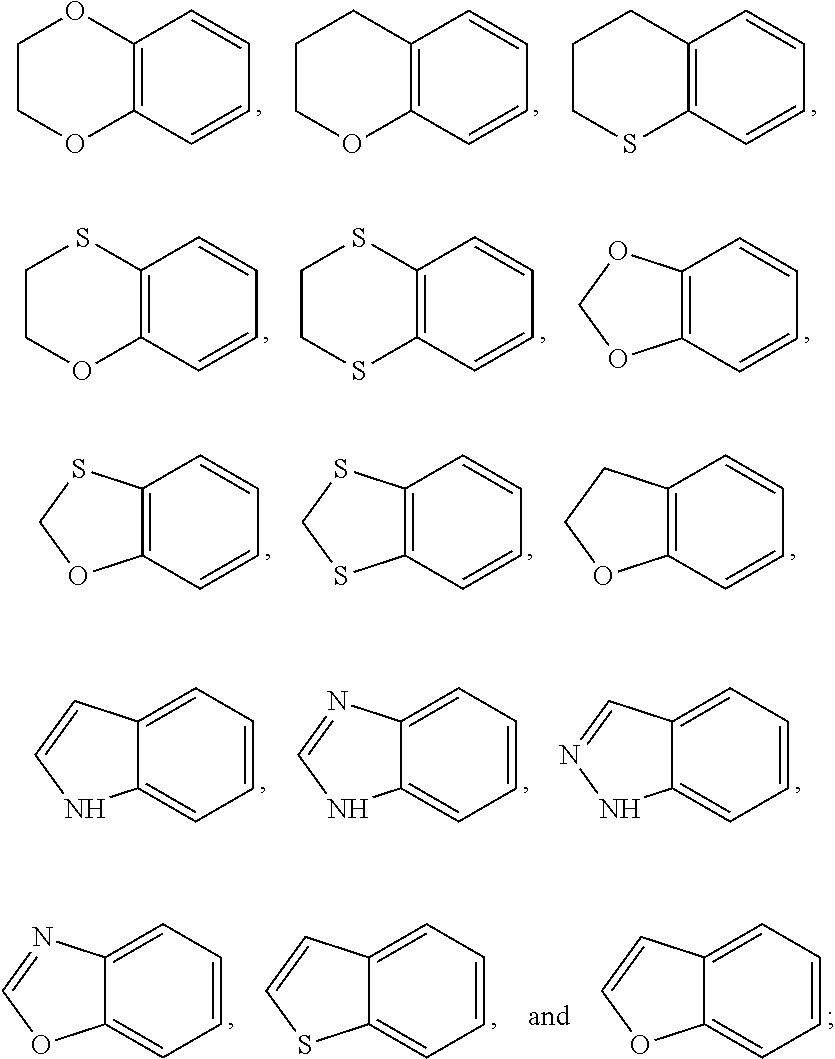
C00015
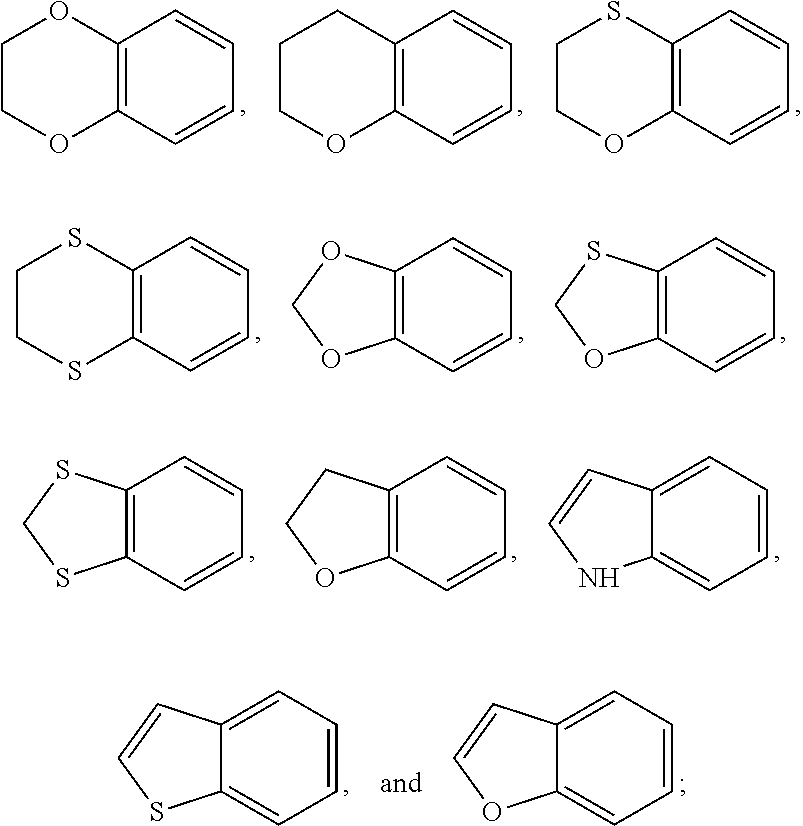
C00016
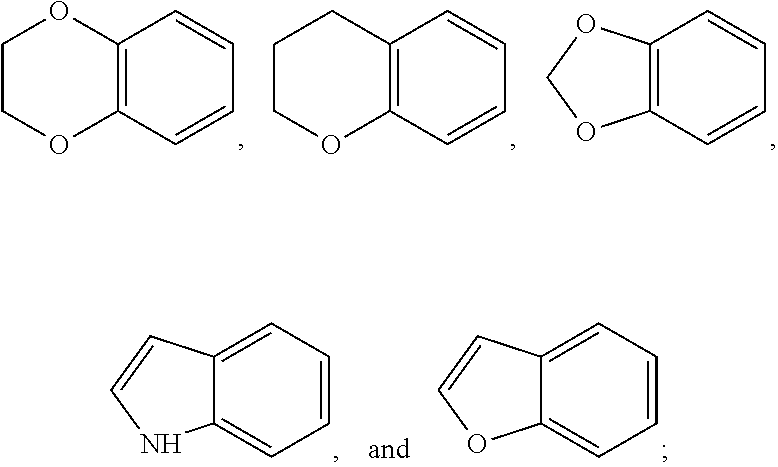
C00017

C00018

C00019

C00020

C00021

C00022
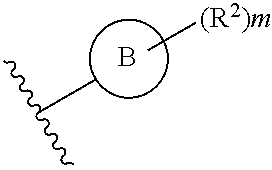
C00023

C00024

C00025

C00026

C00027
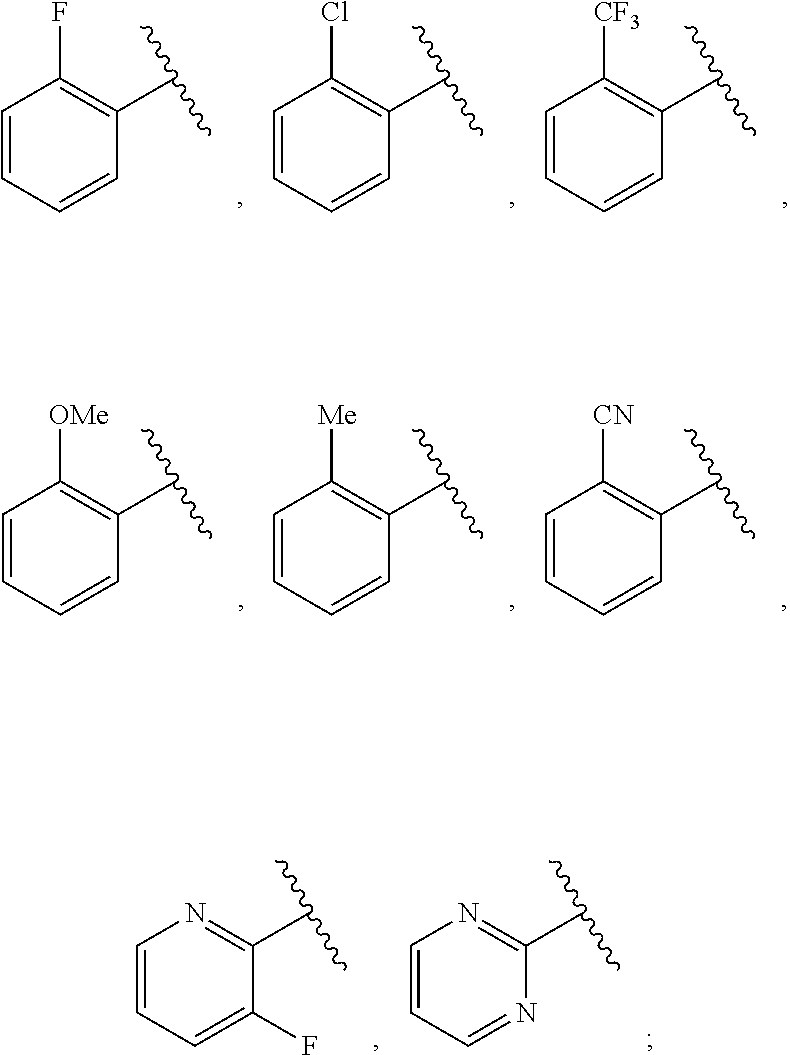
C00028

C00029

C00030

C00031

C00032
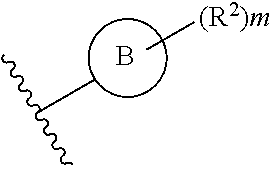
C00033

C00034

C00035

C00036
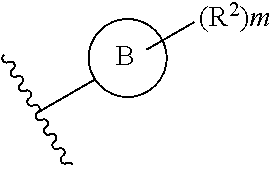
C00037
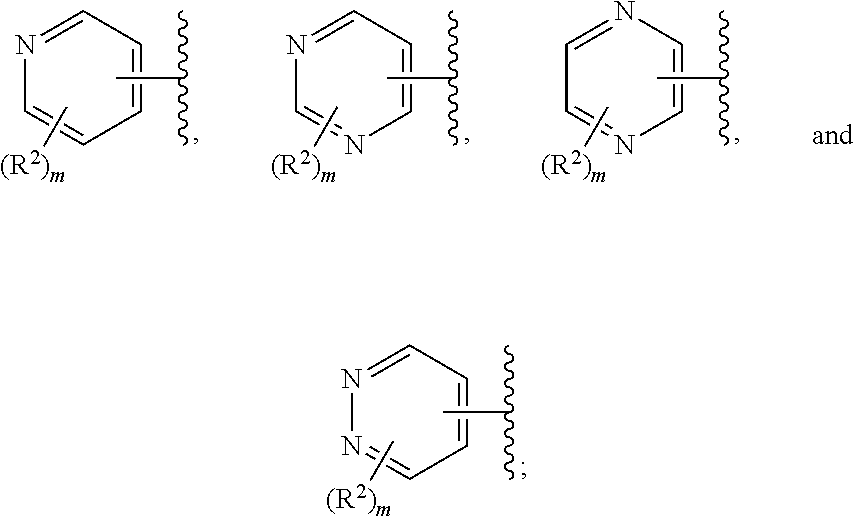
C00038
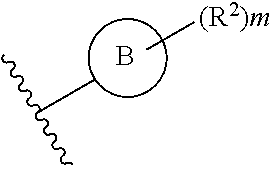
C00039

C00040

C00041
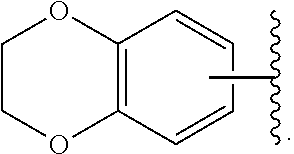
C00042
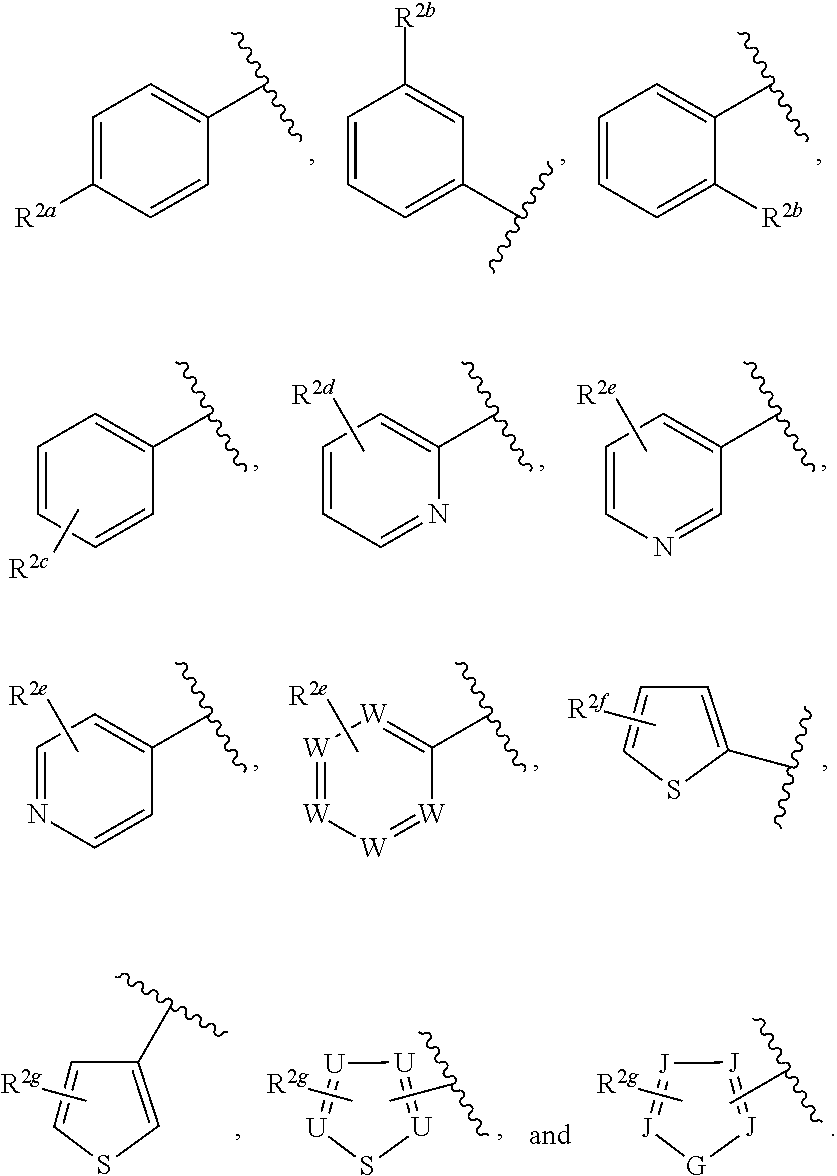
C00043

C00044

C00045

C00046

C00047
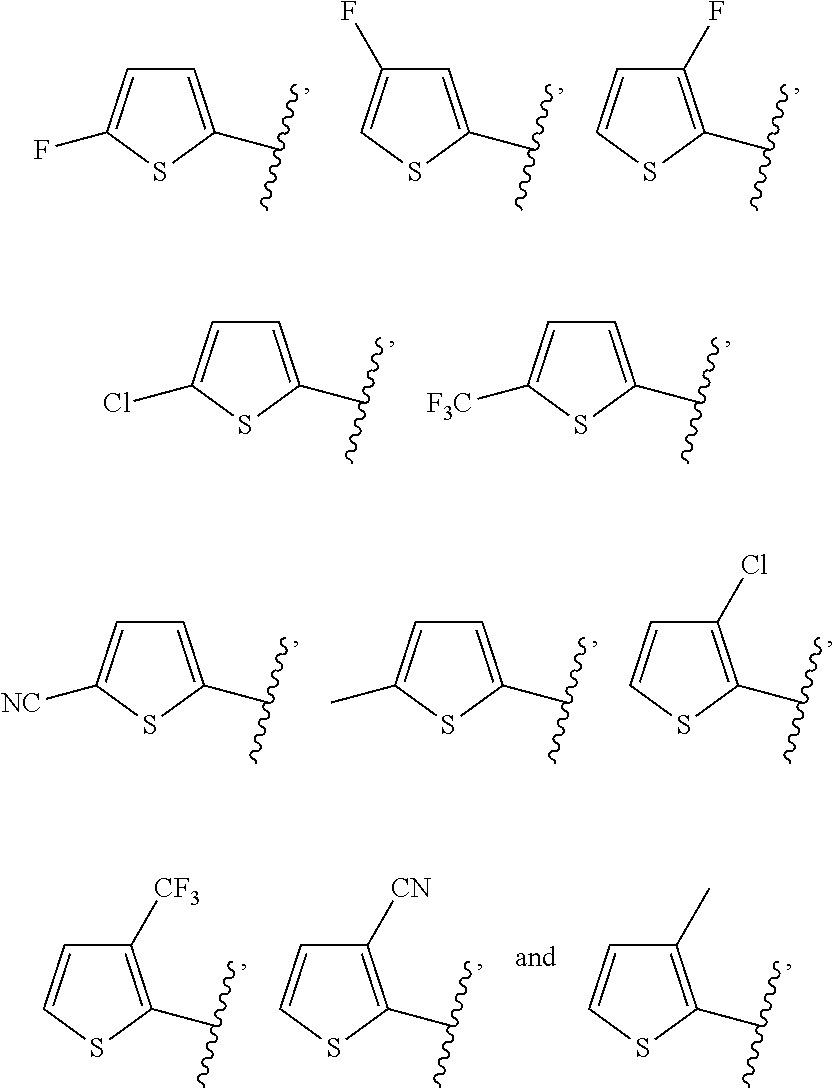
C00048

C00049

C00050

C00051

C00052

C00053
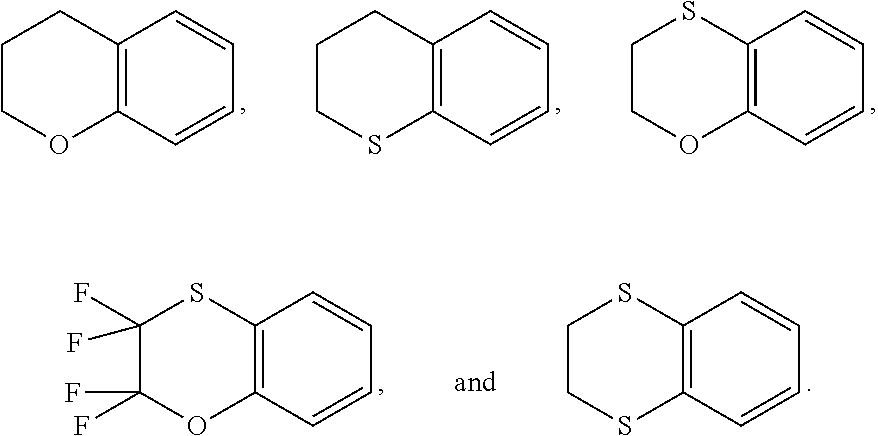
C00054

C00055
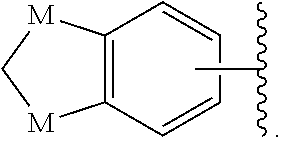
C00056

C00057

C00058

C00059

C00060

C00061

C00062
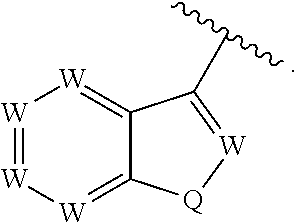
C00063

C00064

C00065

C00066

C00067

C00068

C00069

C00070

C00071

C00072

C00073

C00074

C00075
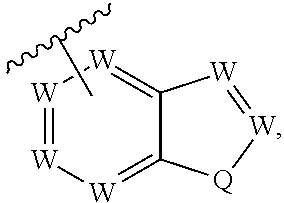
C00076

C00077

C00078

C00079

C00080
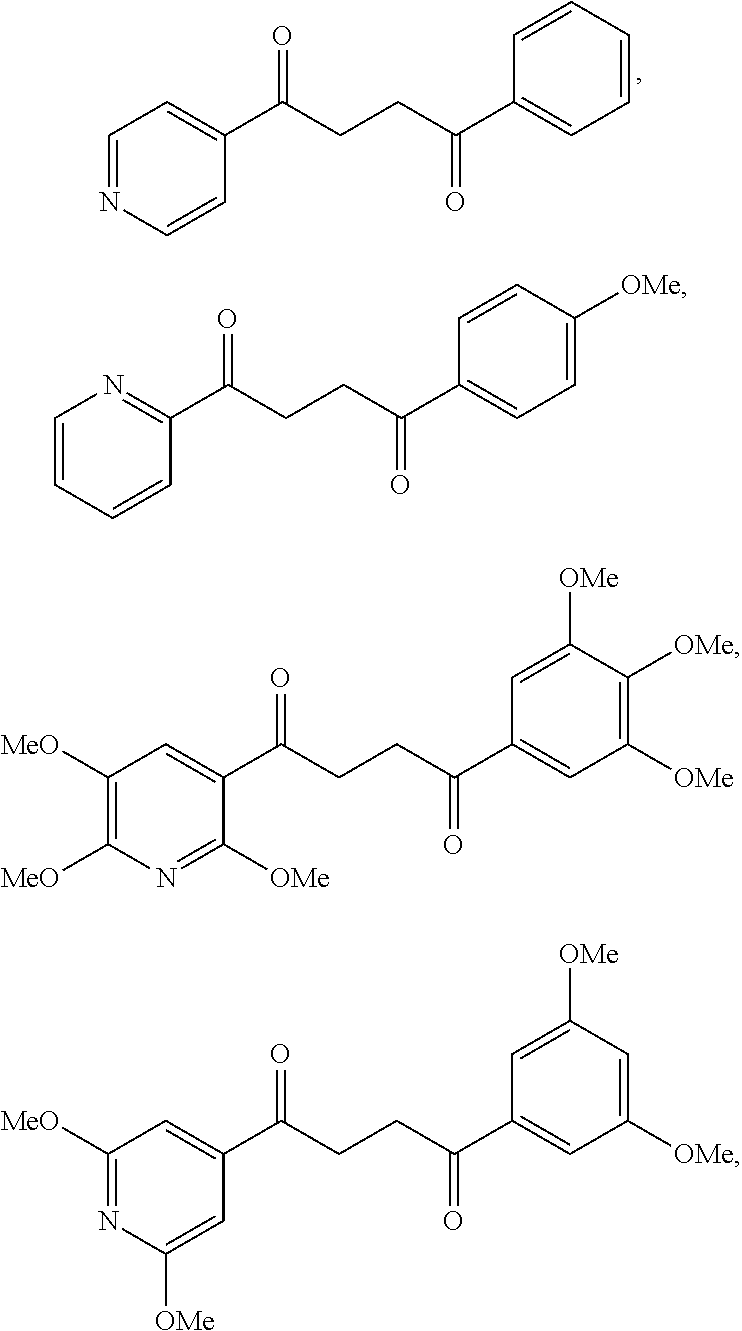
C00081

C00082

C00083

C00084

C00085

C00086

C00087

C00088
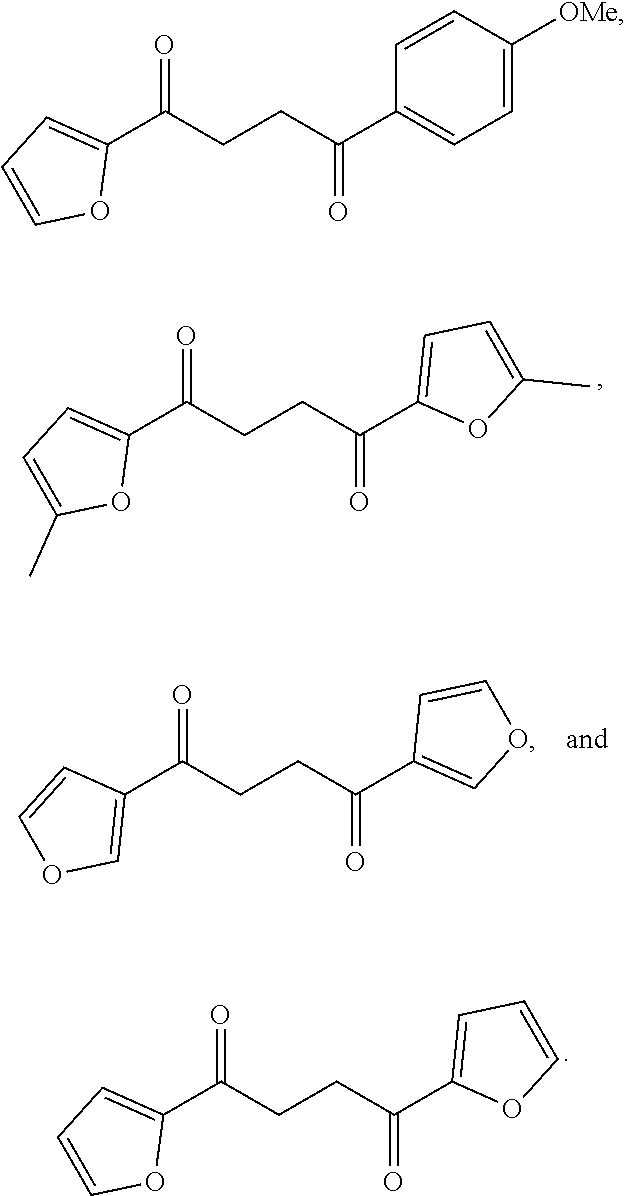
C00089

C00090
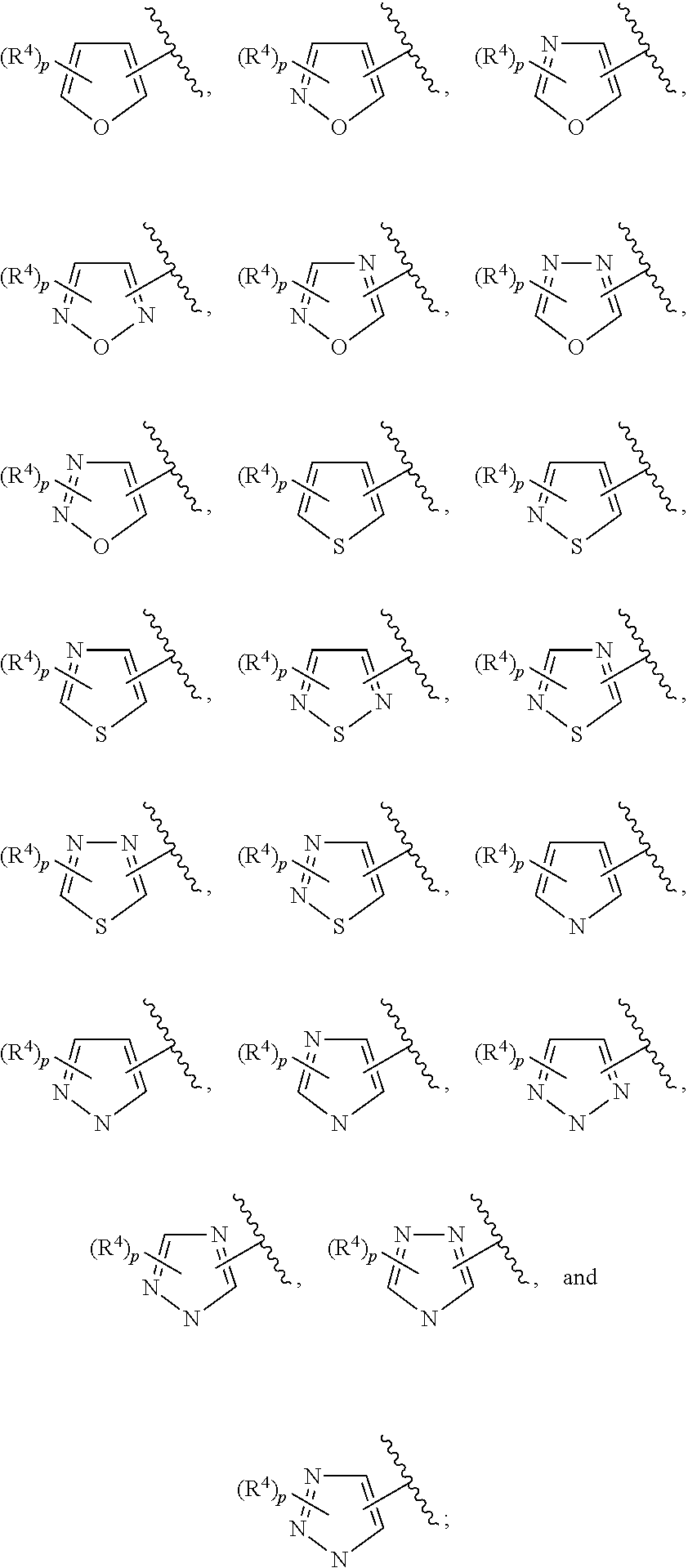
C00091

C00092

C00093

C00094
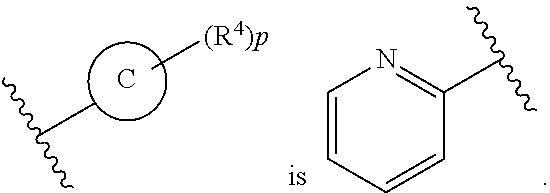
C00095

C00096

C00097

C00098

C00099

C00100

C00101
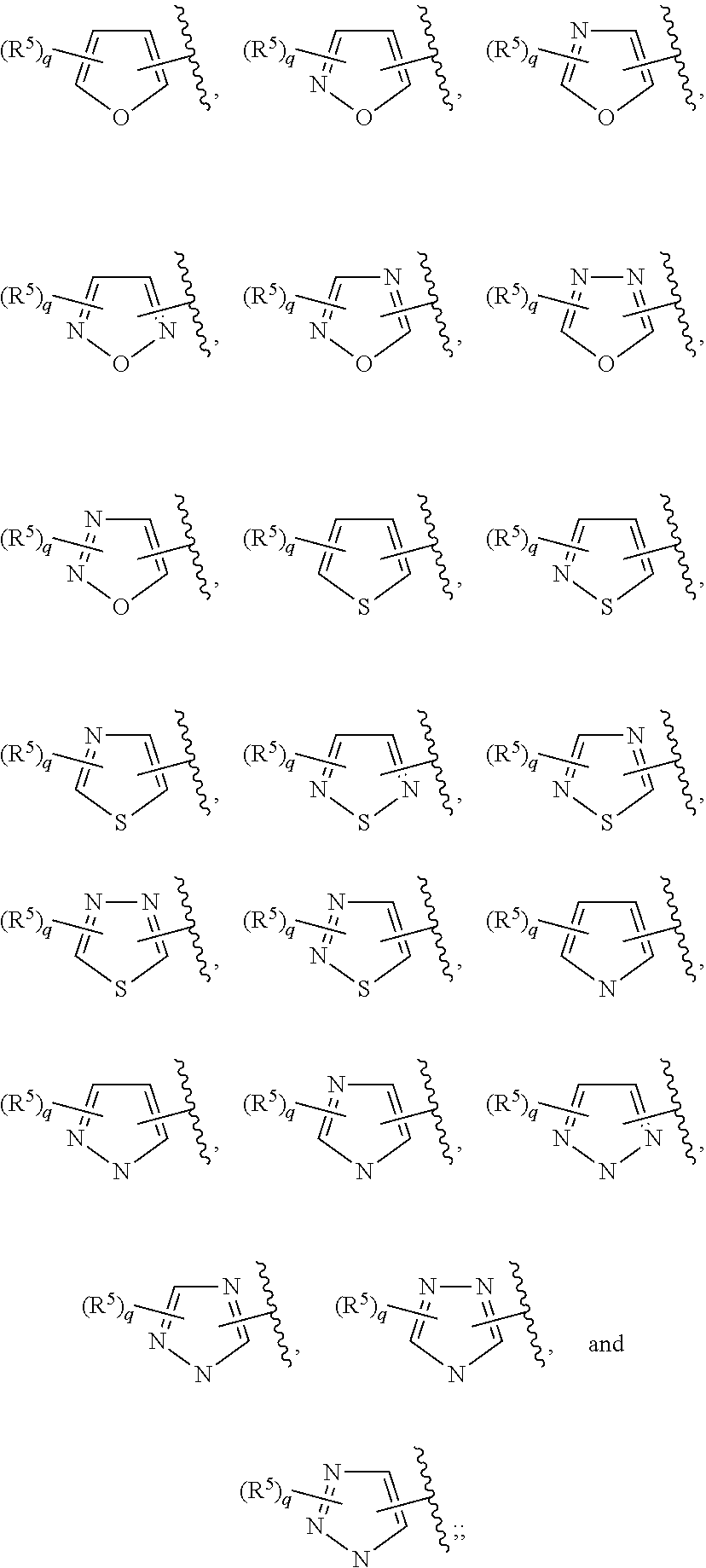
C00102
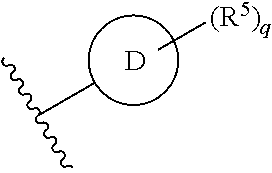
C00103

C00104

C00105

C00106
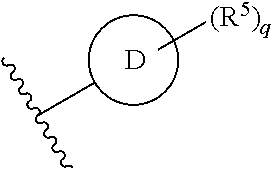
C00107
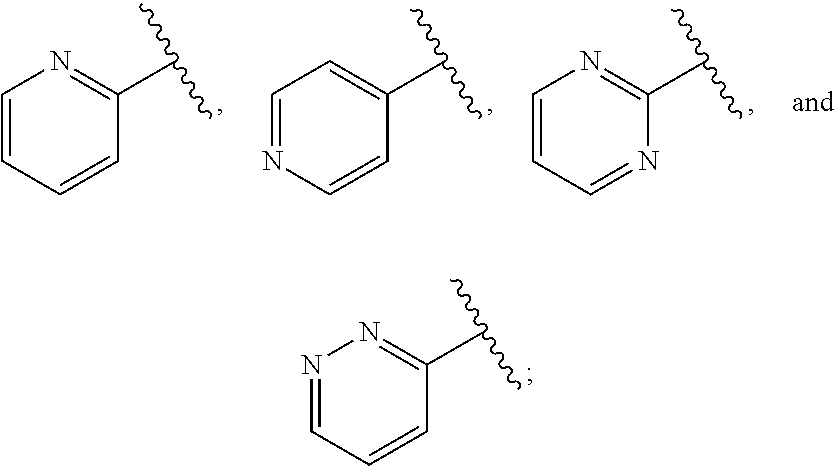
C00108
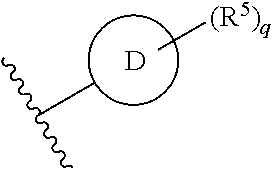
C00109
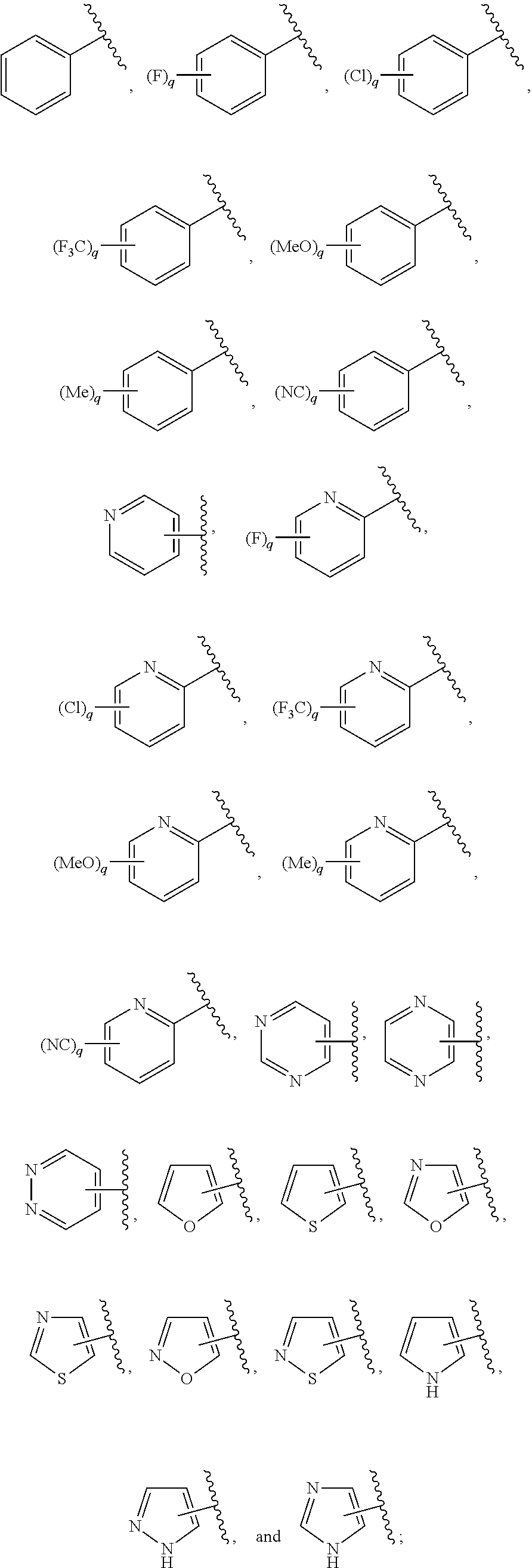
C00110
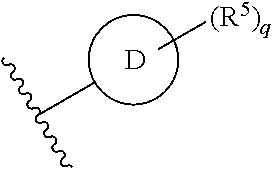
C00111
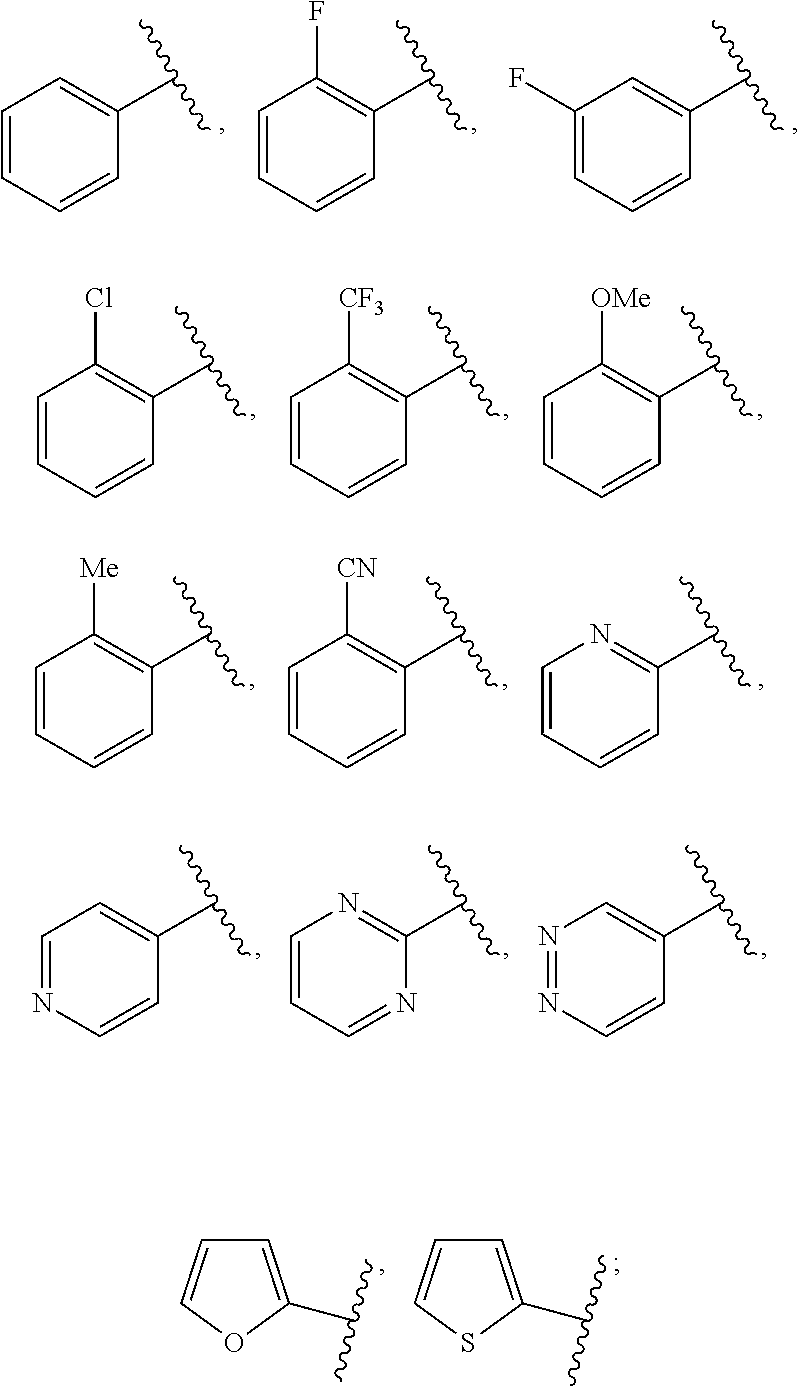
C00112

C00113
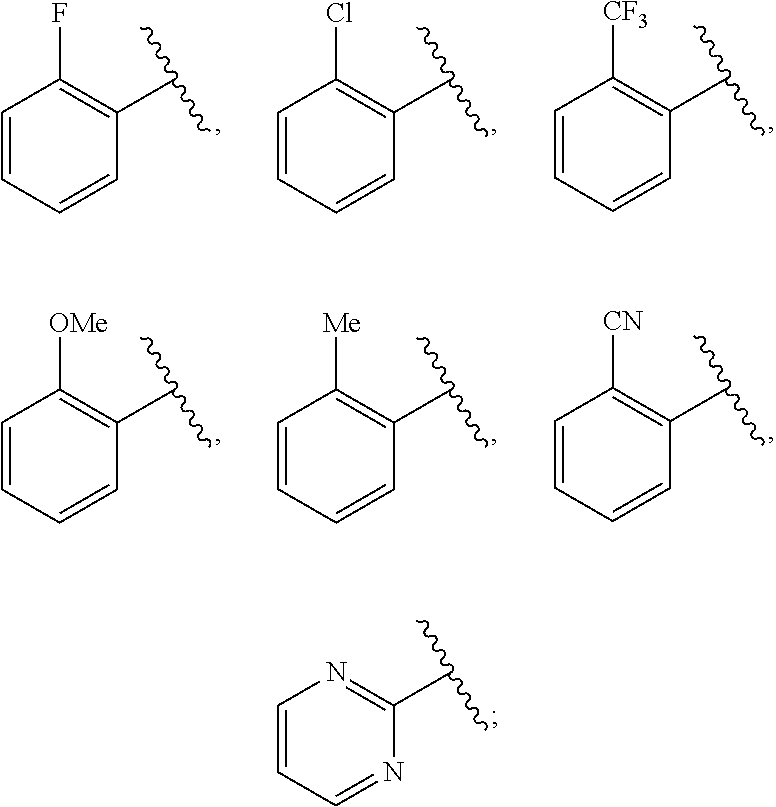
C00114

C00115

C00116
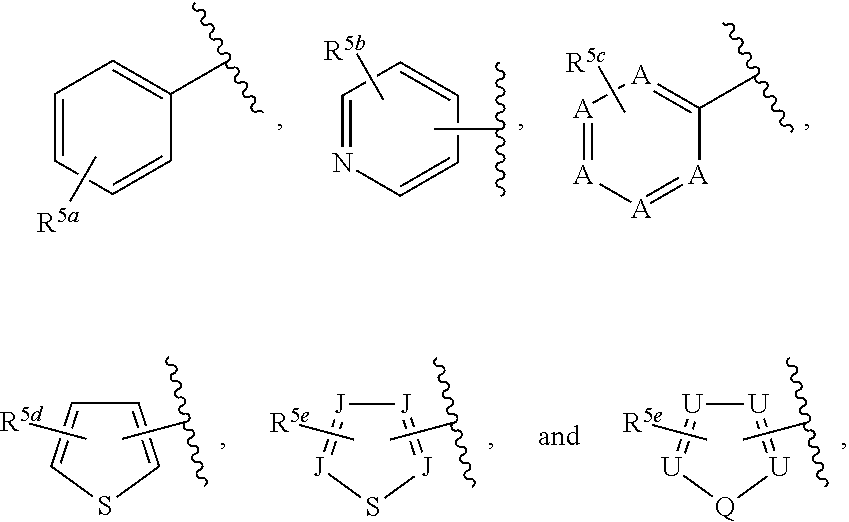
C00117

C00118

C00119

C00120

C00121

C00122

C00123
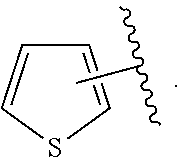
C00124

C00125

C00126

C00127

C00128
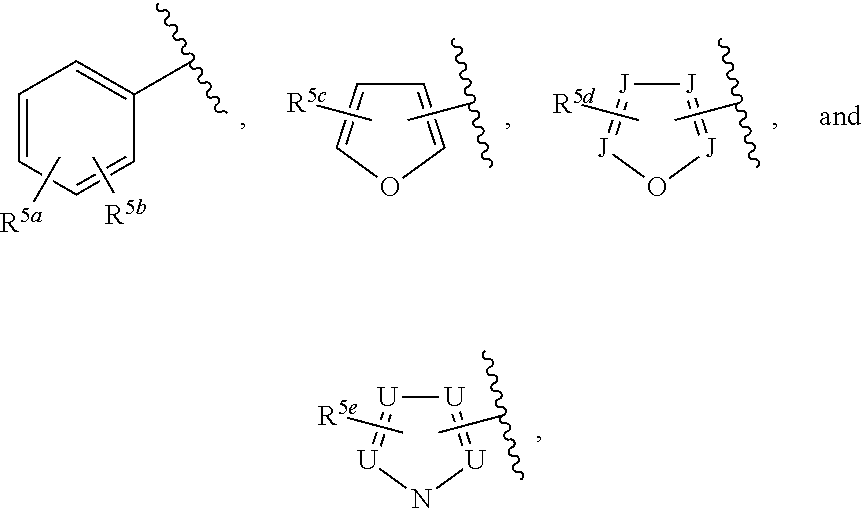
C00129

C00130

C00131
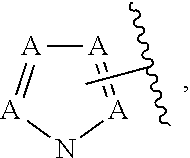
C00132

C00133

C00134
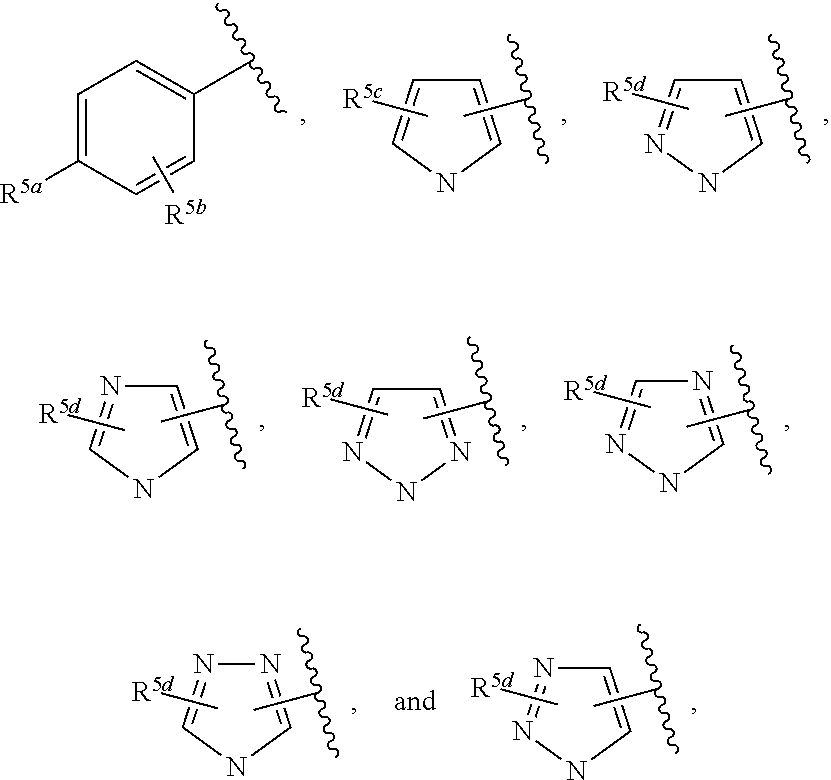
C00135

C00136
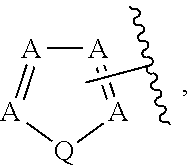
C00137

C00138
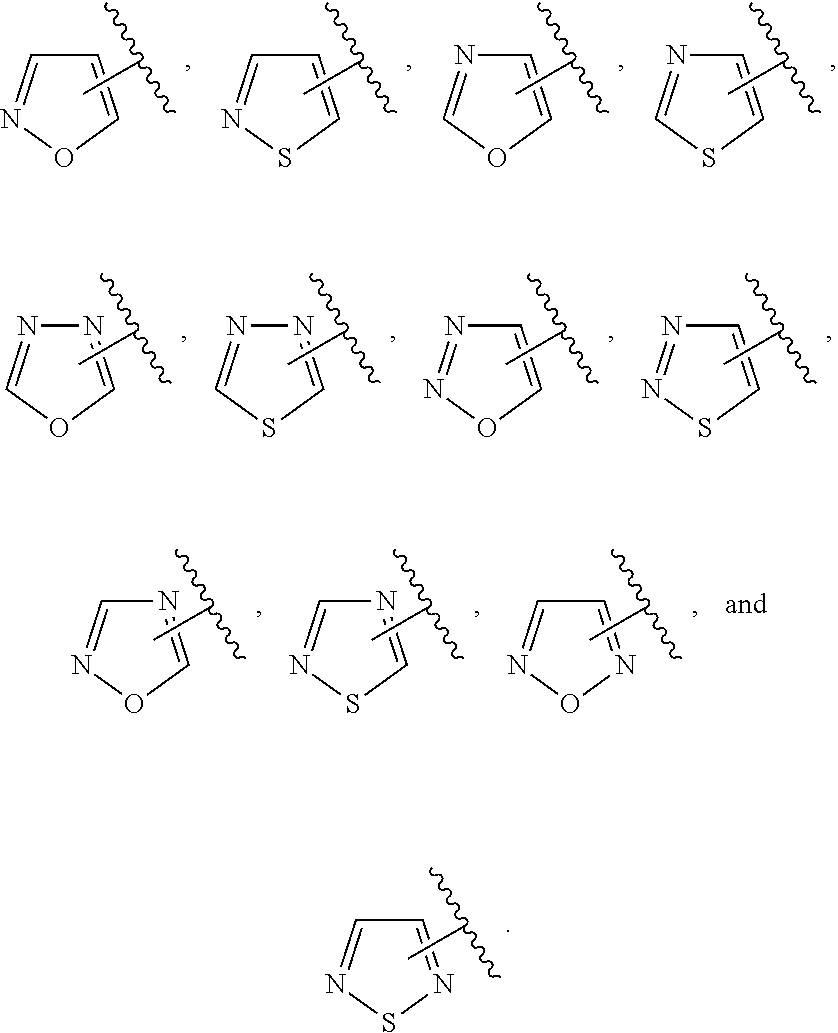
C00139
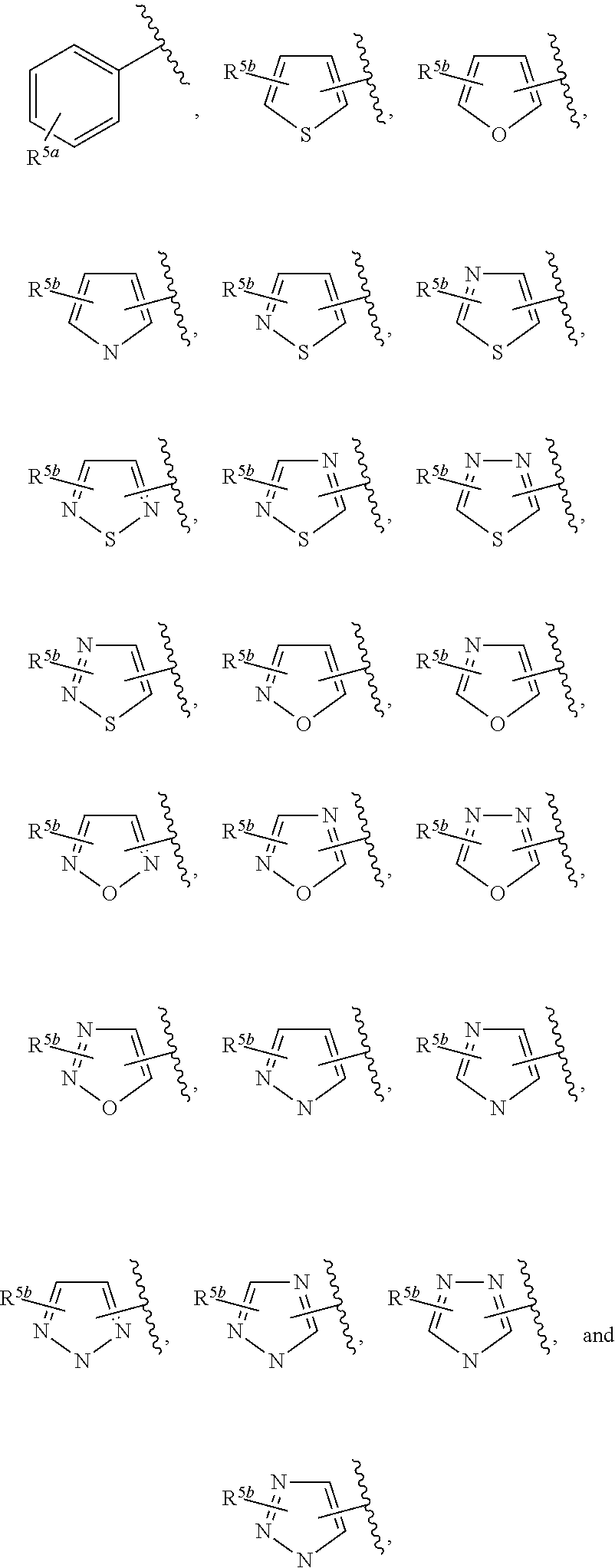
C00140

C00141
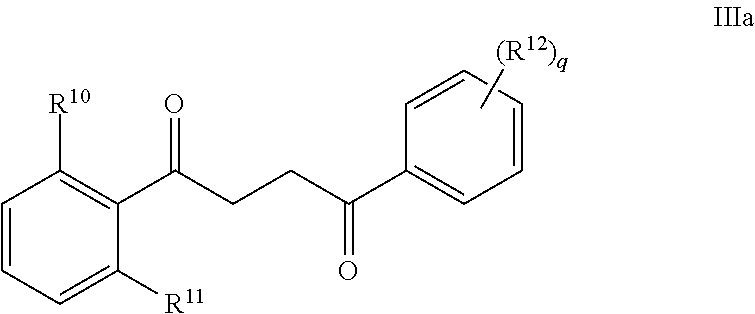
C00142

C00143

C00144

C00145

C00146
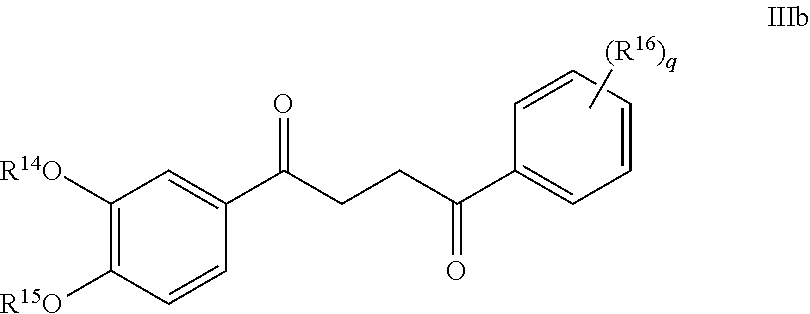
C00147
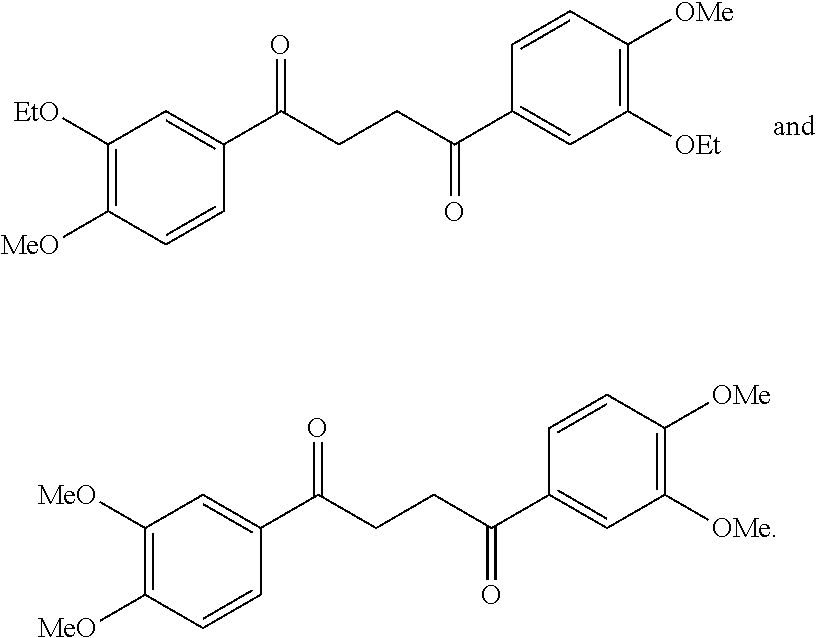
C00148
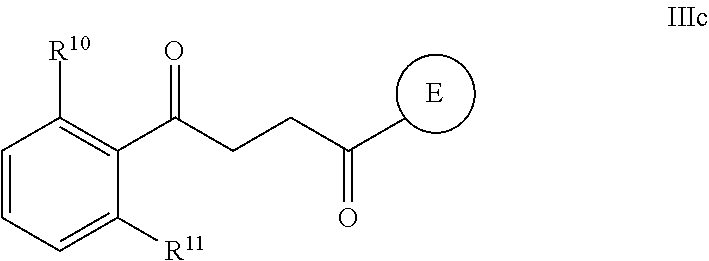
C00149

C00150

C00151

C00152

C00153

C00154
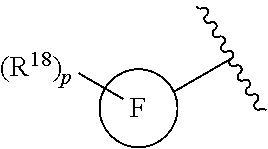
C00155

C00156

C00157

C00158
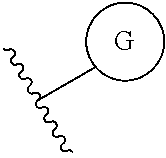
C00159

C00160

C00161

C00162

C00163

C00164
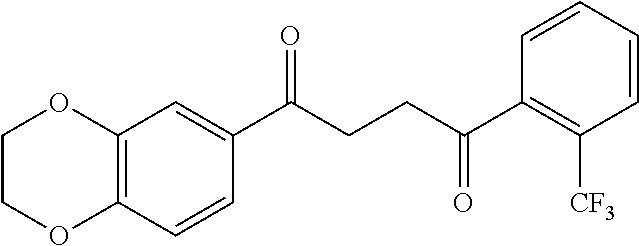
C00165
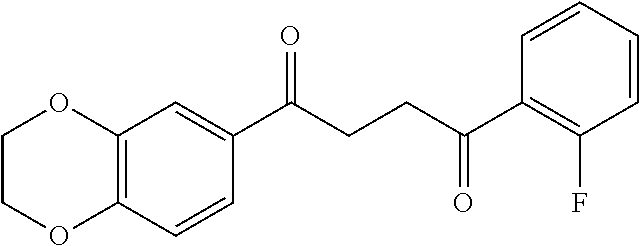
C00166

C00167
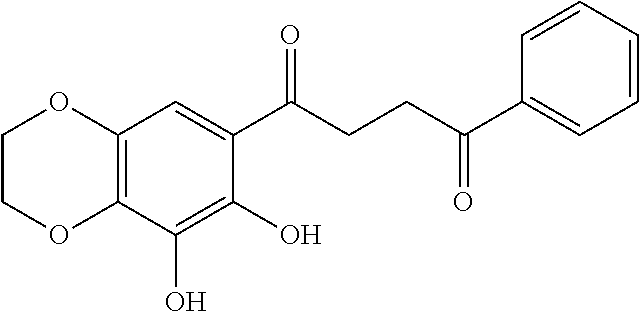
C00168
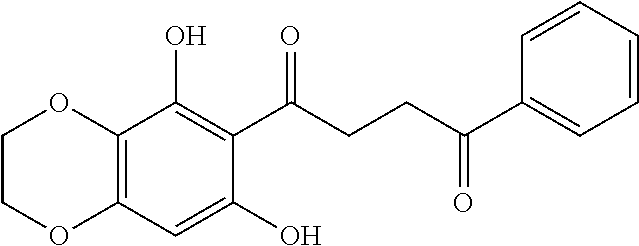
C00169

C00170

C00171

C00172

C00173

C00174

C00175

C00176
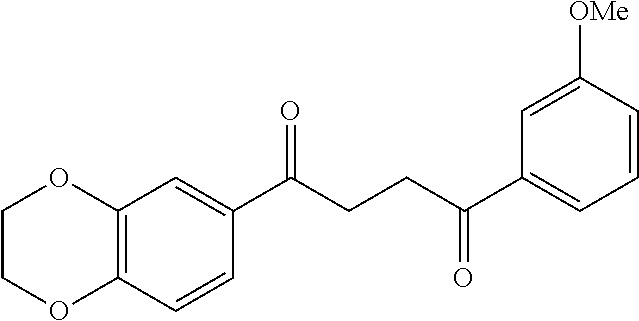
C00177

C00178
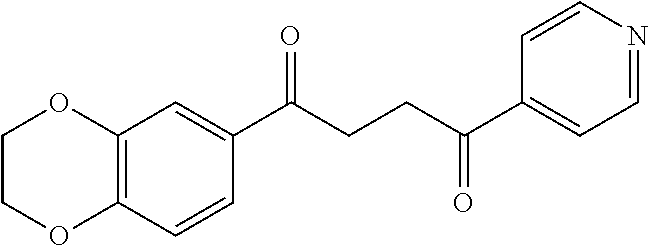
C00179
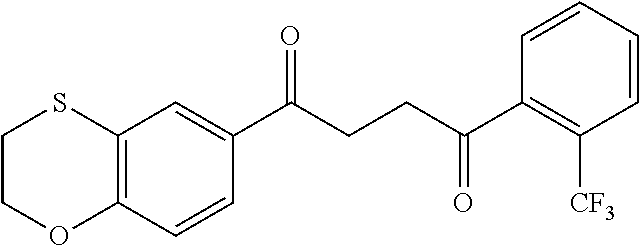
C00180
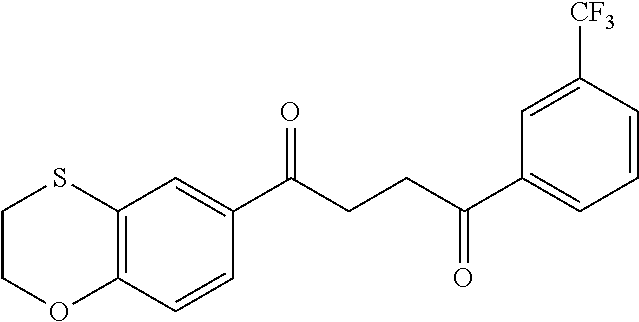
C00181

C00182

C00183
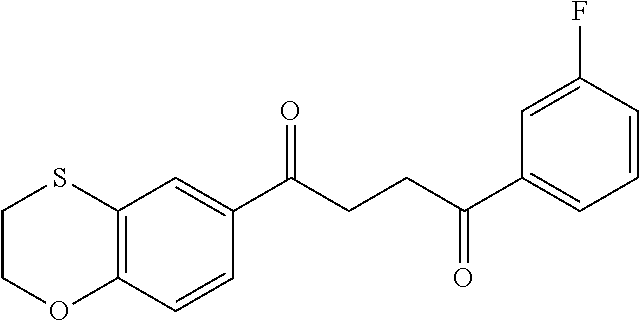
C00184
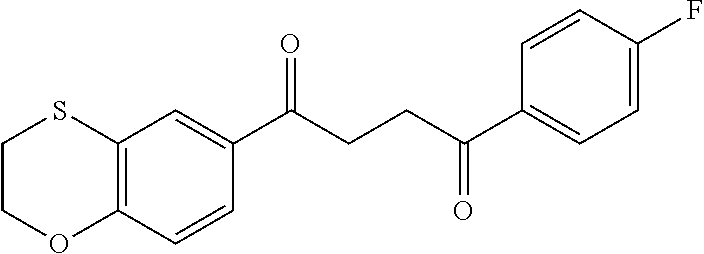
C00185

C00186

C00187
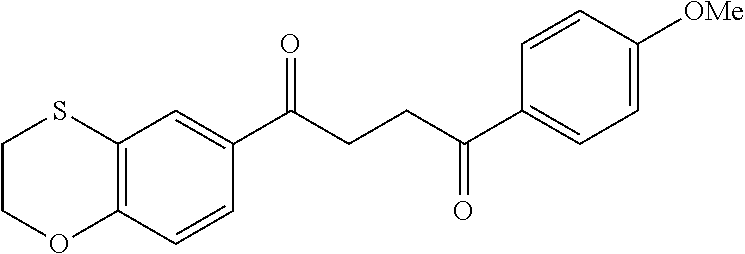
C00188
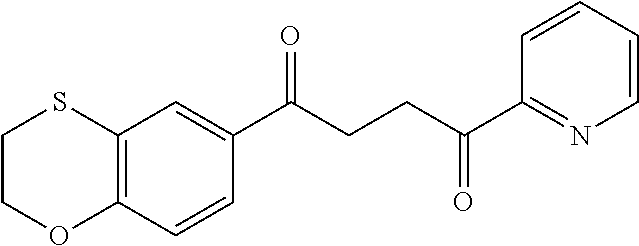
C00189
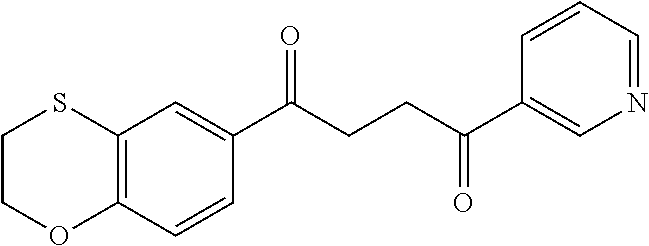
C00190

C00191

C00192
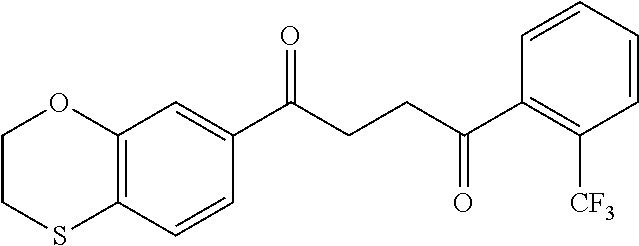
C00193

C00194
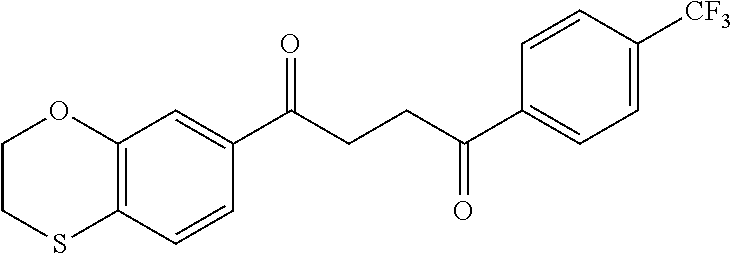
C00195

C00196

C00197

C00198

C00199
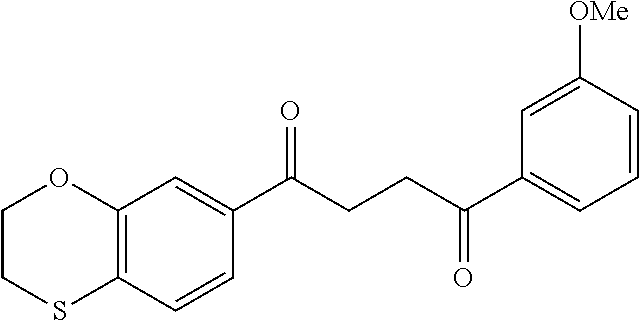
C00200

C00201

C00202
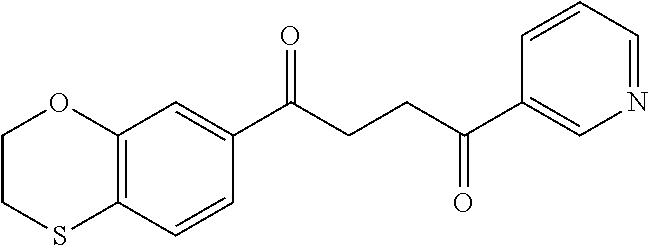
C00203
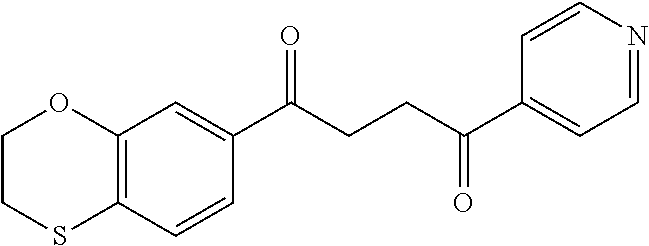
C00204

C00205
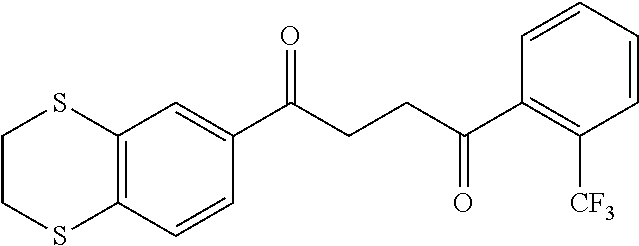
C00206

C00207
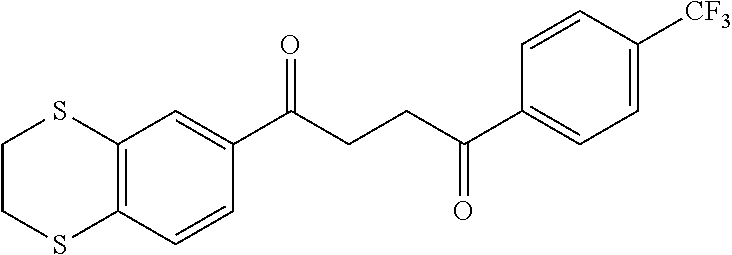
C00208

C00209

C00210

C00211

C00212
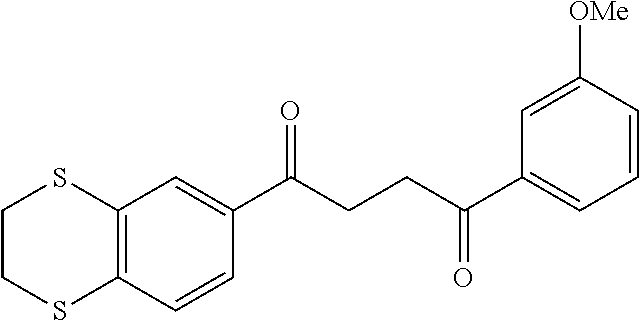
C00213
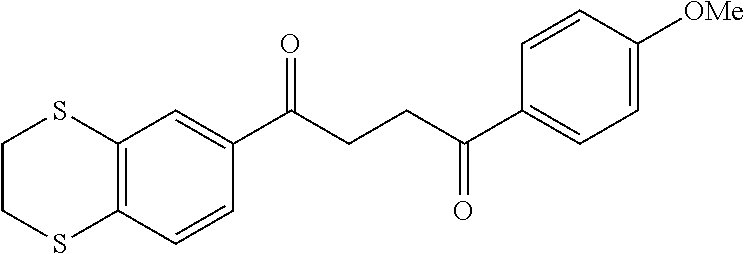
C00214
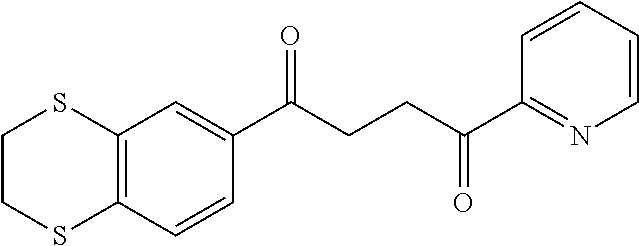
C00215
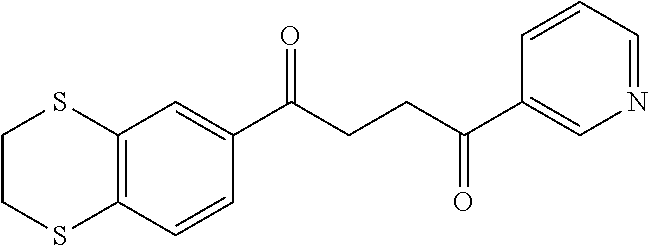
C00216

C00217
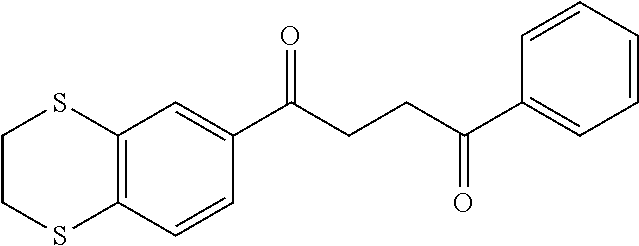
C00218

C00219
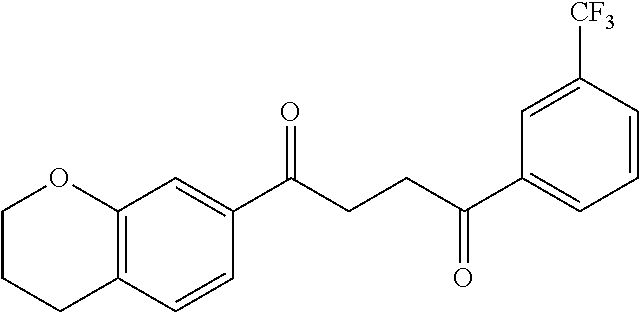
C00220
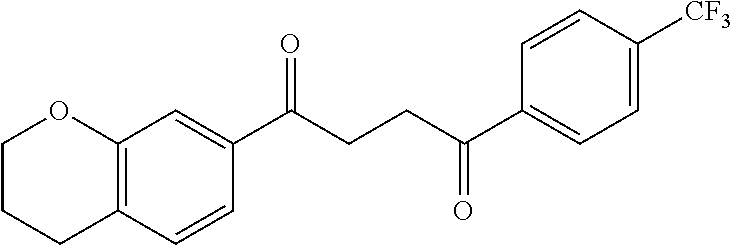
C00221
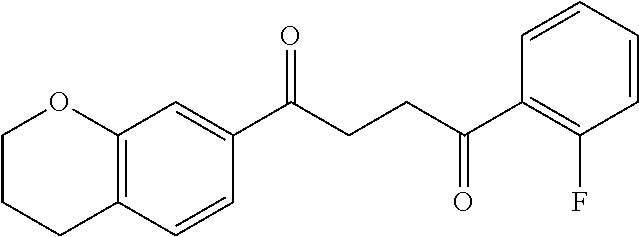
C00222
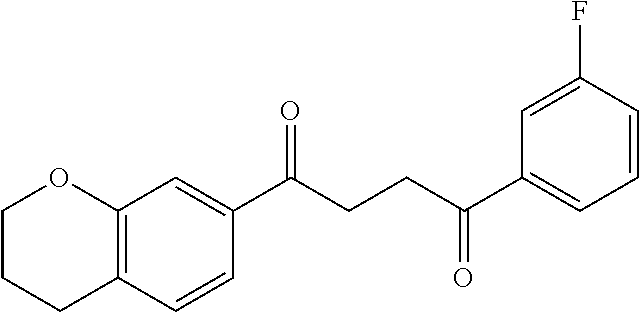
C00223
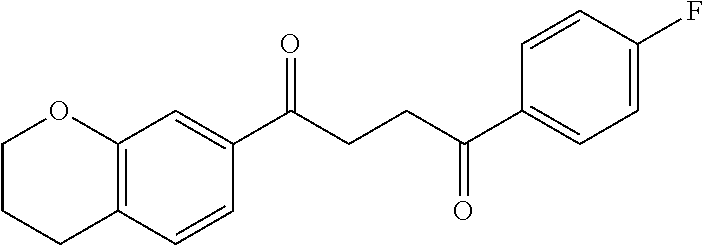
C00224
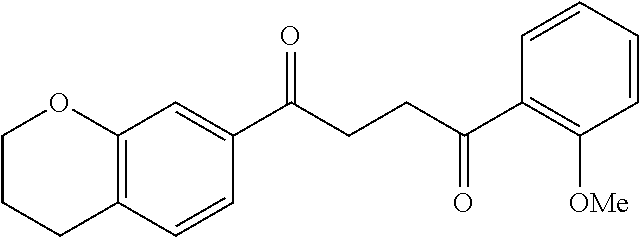
C00225
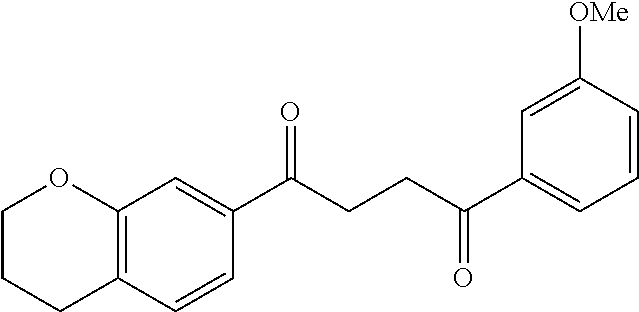
C00226

C00227
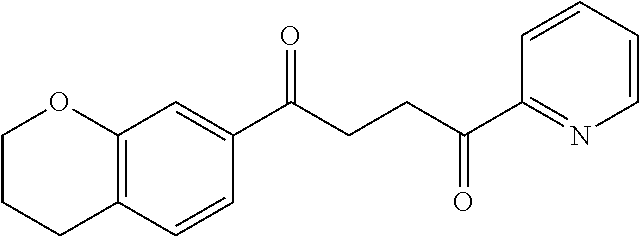
C00228

C00229

C00230
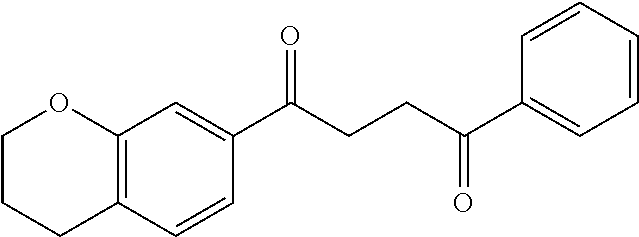
C00231
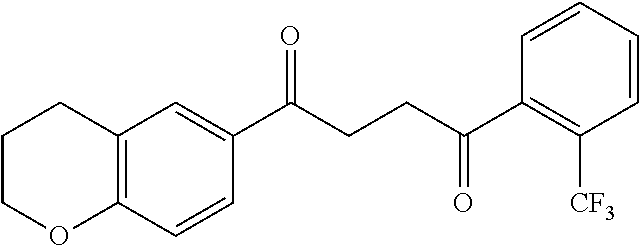
C00232
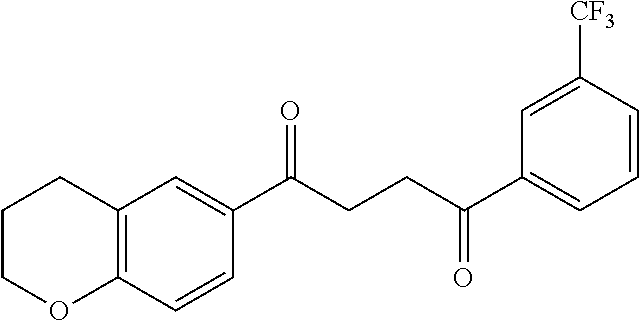
C00233

C00234

C00235

C00236

C00237

C00238

C00239

C00240
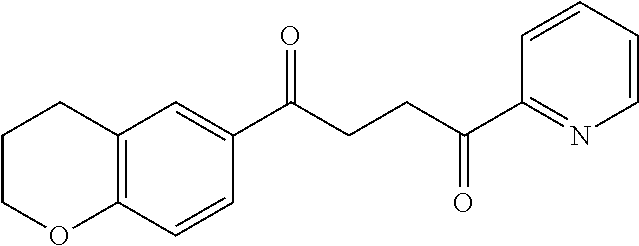
C00241
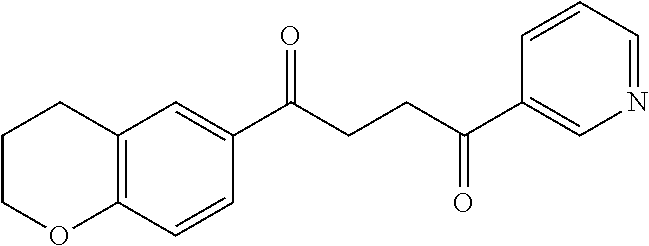
C00242

C00243

C00244

C00245
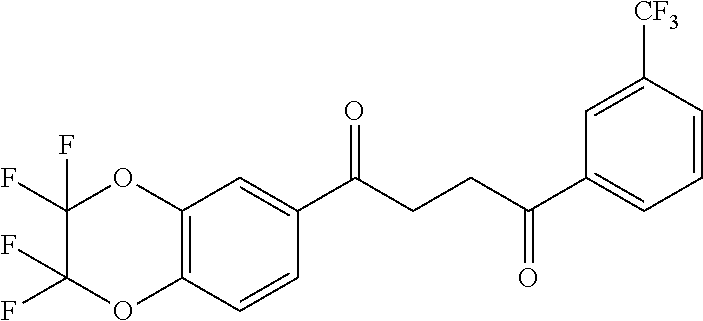
C00246

C00247
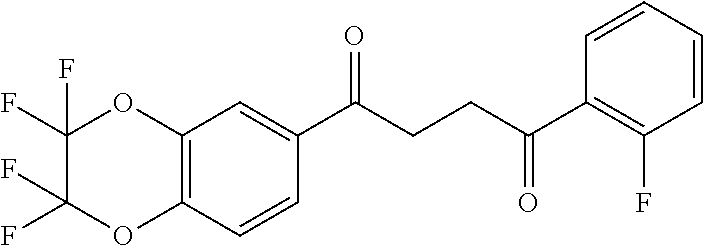
C00248

C00249

C00250

C00251
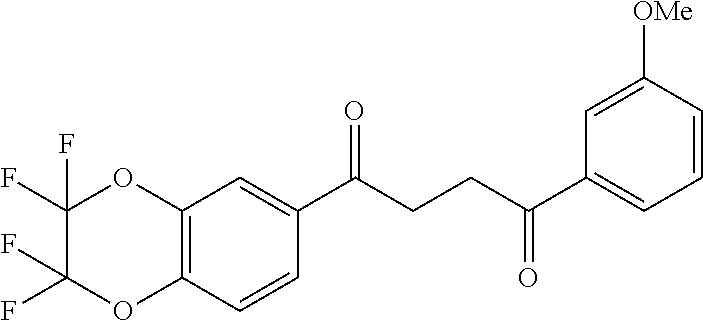
C00252

C00253

C00254

C00255

C00256

C00257
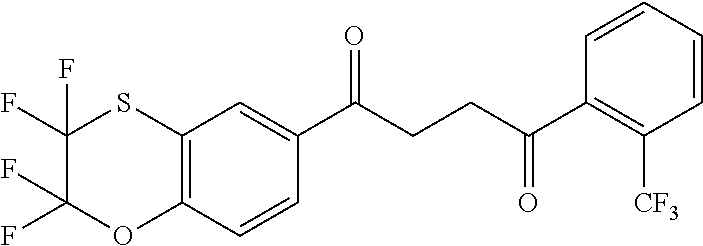
C00258

C00259

C00260

C00261
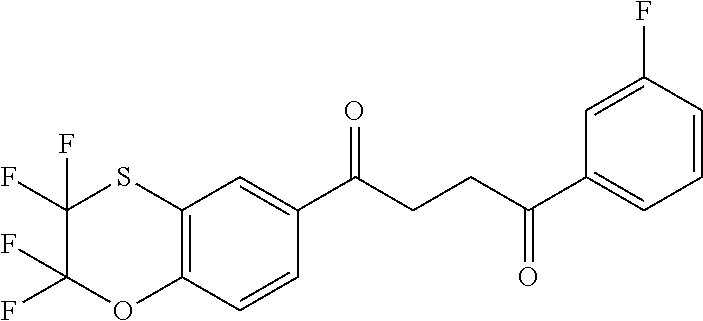
C00262

C00263

C00264
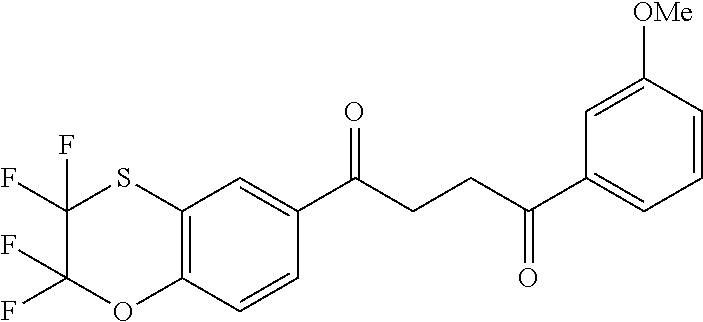
C00265

C00266

C00267
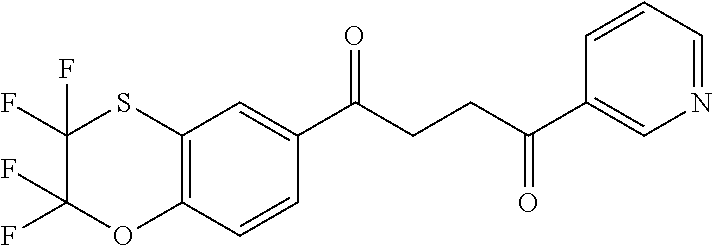
C00268

C00269

C00270
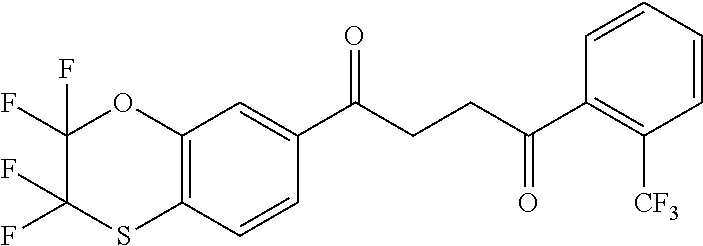
C00271

C00272

C00273
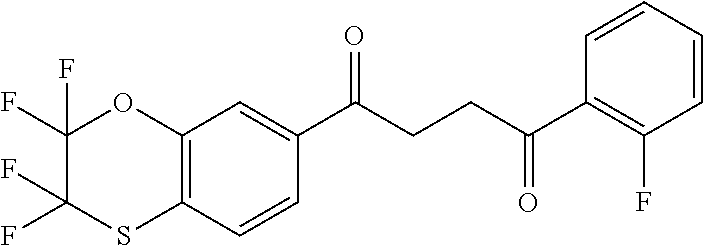
C00274
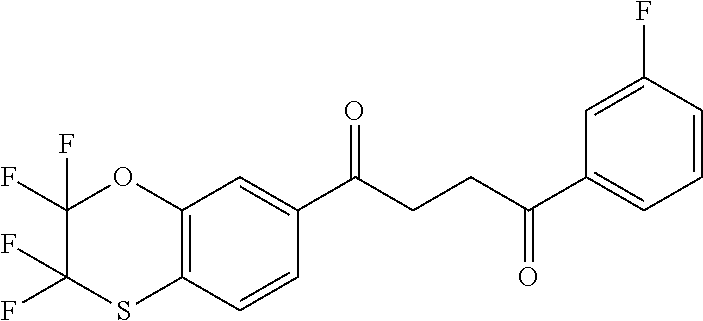
C00275

C00276

C00277
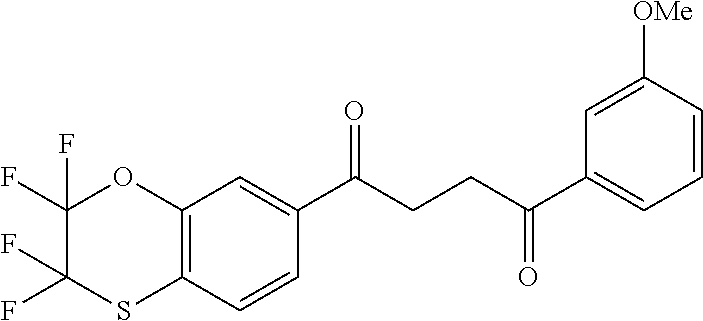
C00278

C00279

C00280

C00281
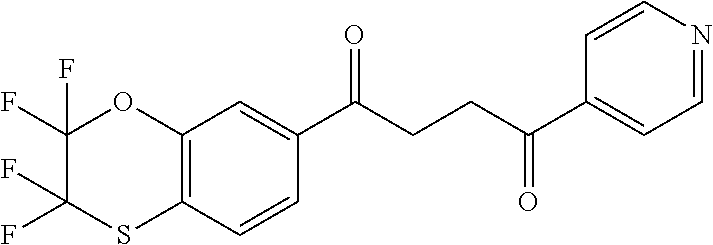
C00282
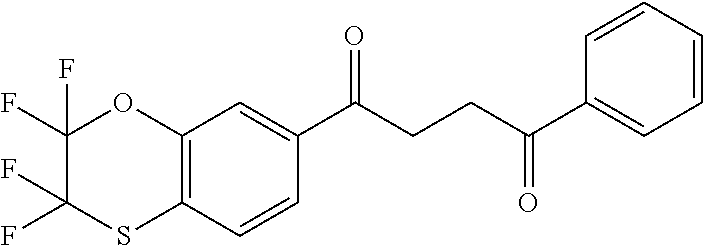
C00283
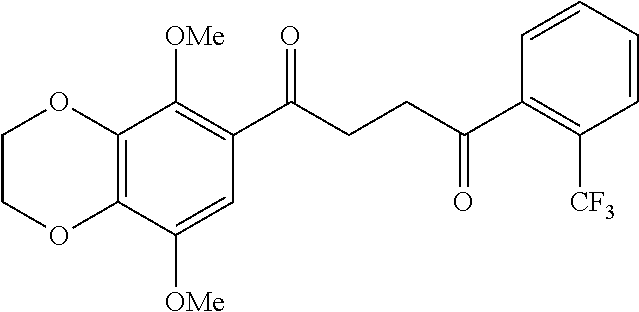
C00284
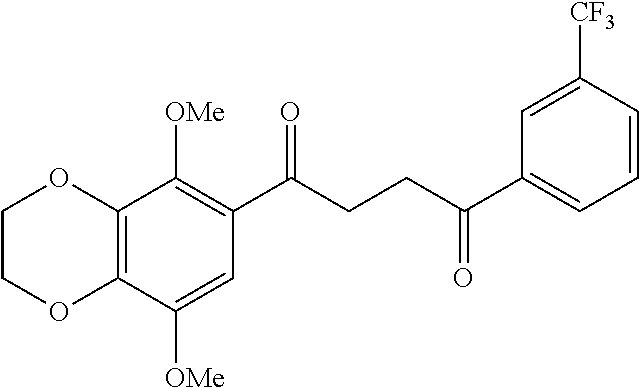
C00285
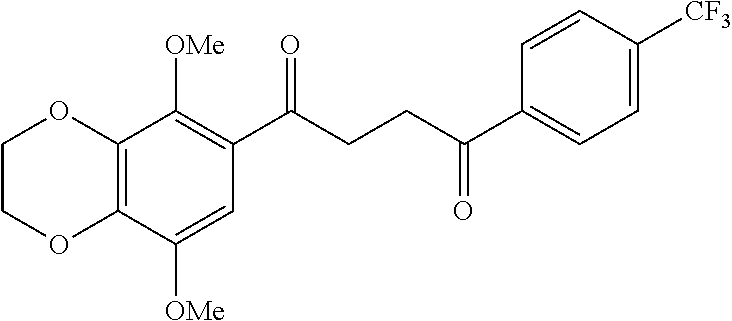
C00286
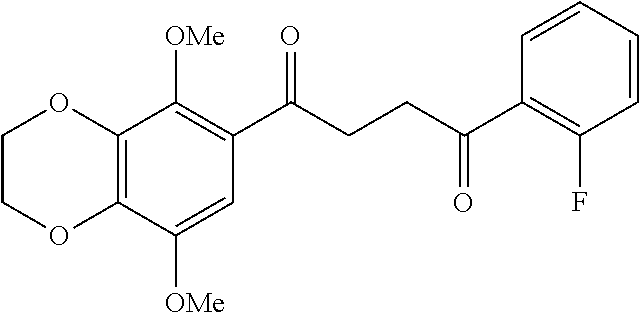
C00287
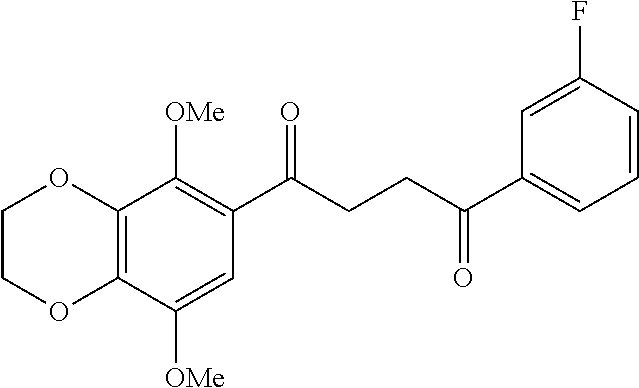
C00288

C00289

C00290
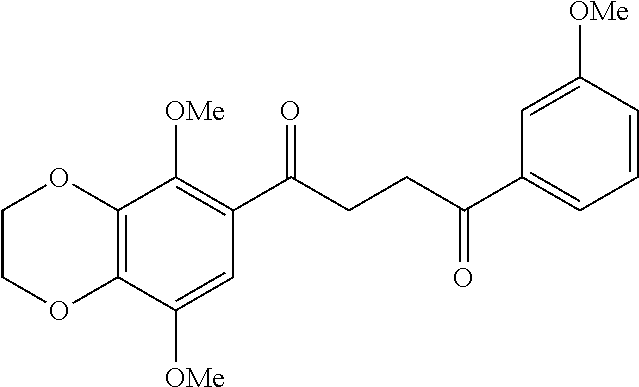
C00291

C00292
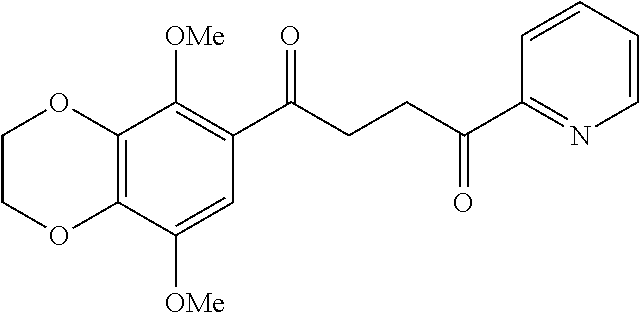
C00293

C00294

C00295

C00296
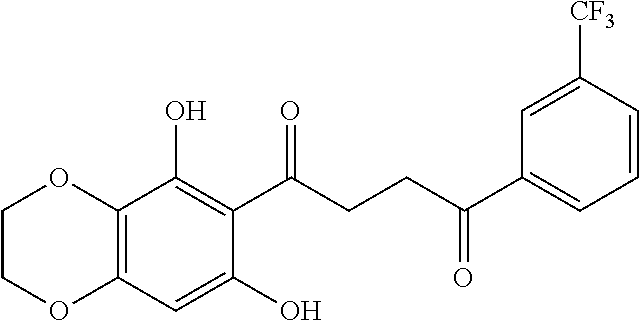
C00297

C00298
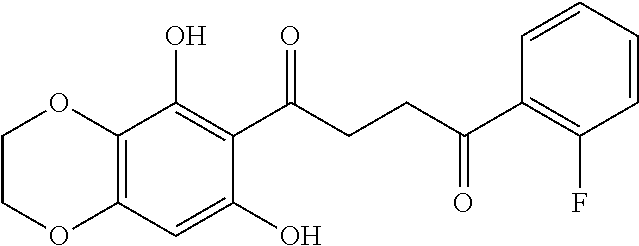
C00299

C00300

C00301

C00302

C00303

C00304
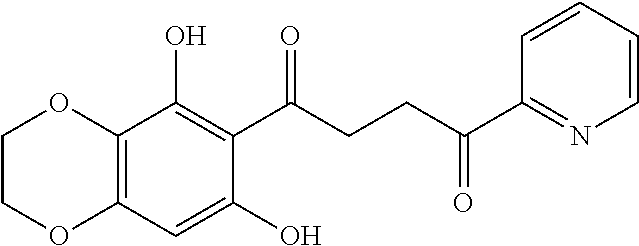
C00305
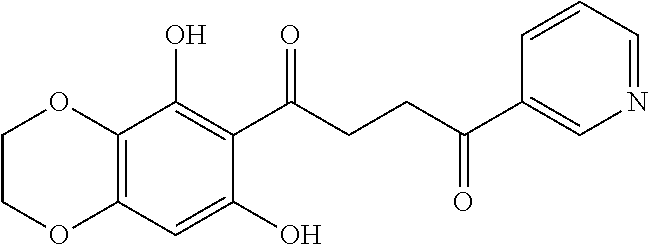
C00306

C00307

C00308

C00309

C00310

C00311

C00312

C00313

C00314

C00315

C00316

C00317
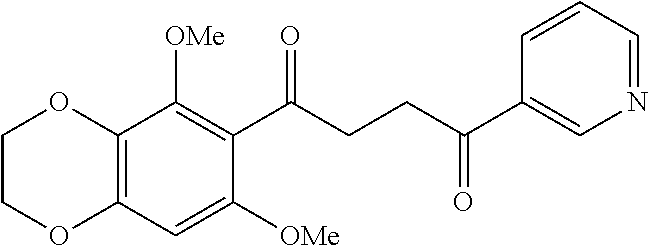
C00318

C00319
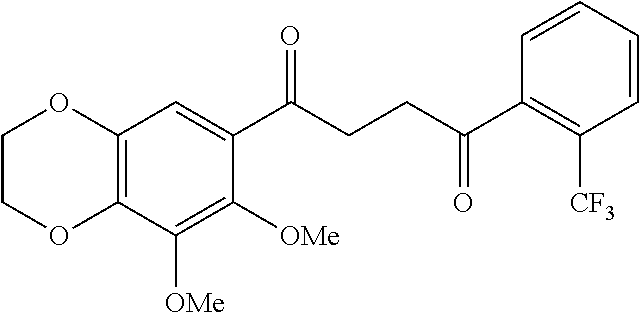
C00320

C00321
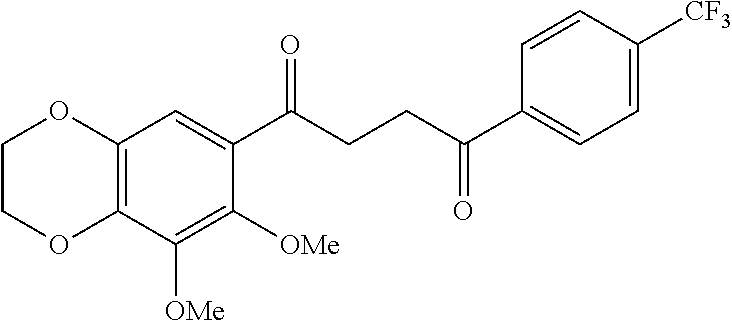
C00322
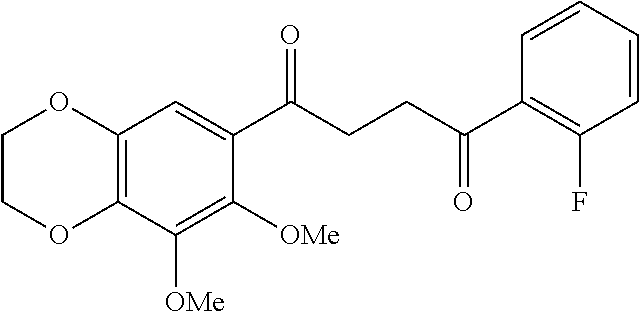
C00323

C00324

C00325

C00326
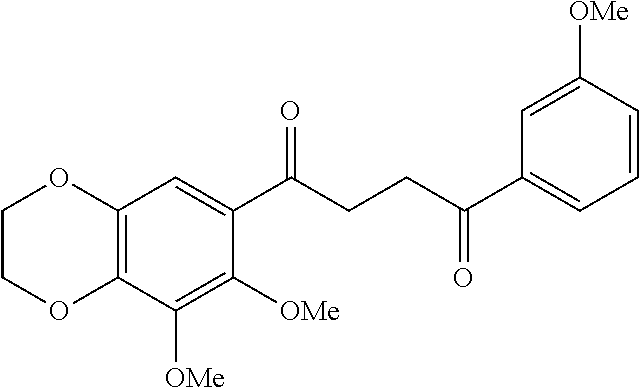
C00327
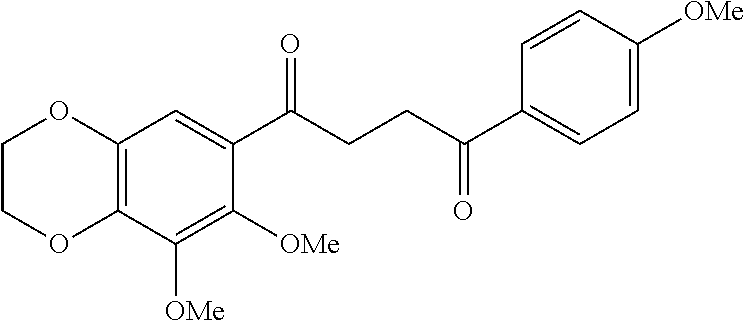
C00328
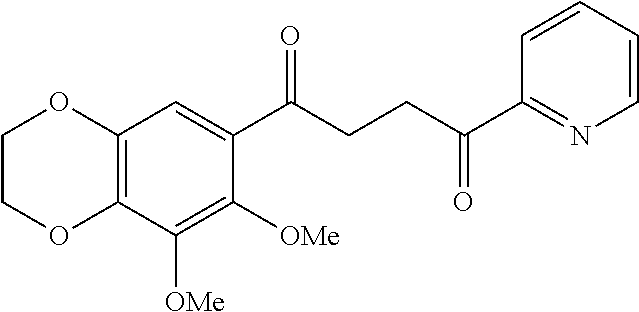
C00329
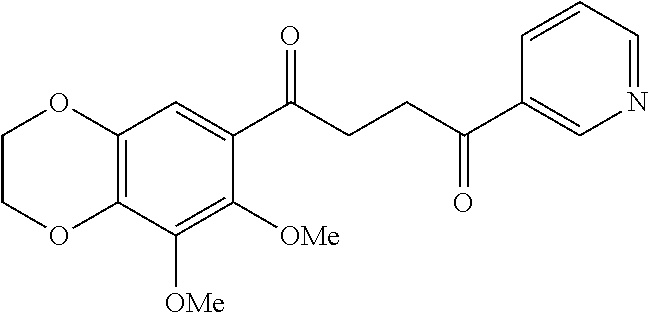
C00330

C00331

C00332
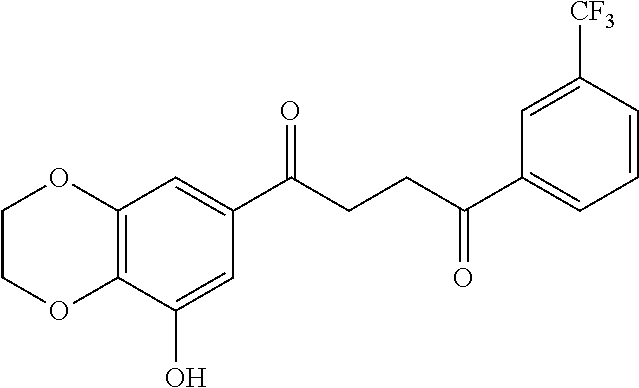
C00333
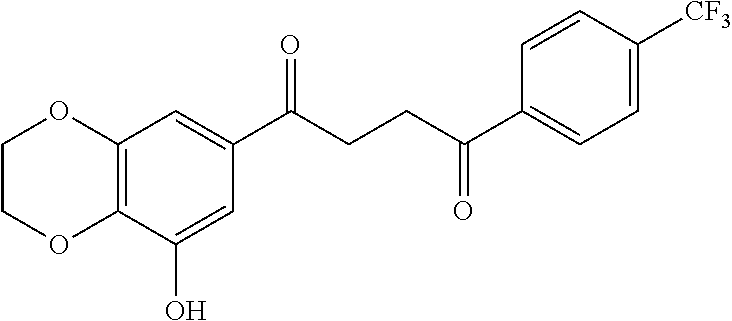
C00334

C00335

C00336

C00337
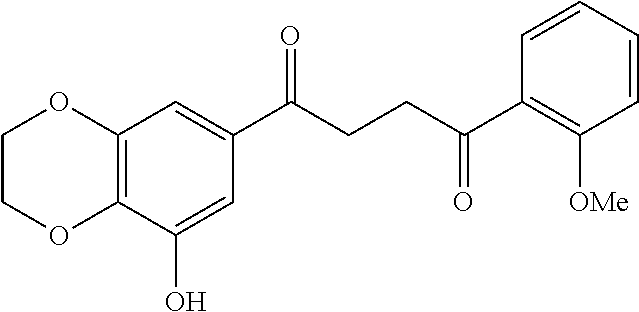
C00338
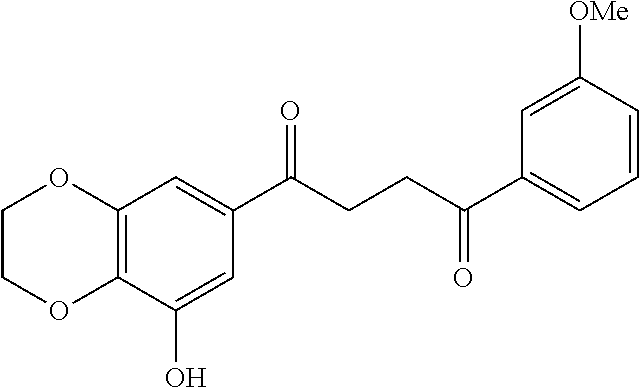
C00339

C00340
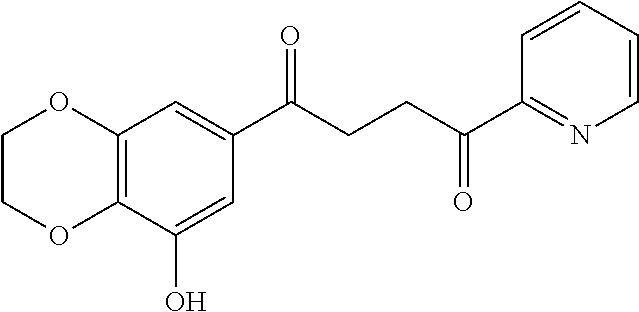
C00341
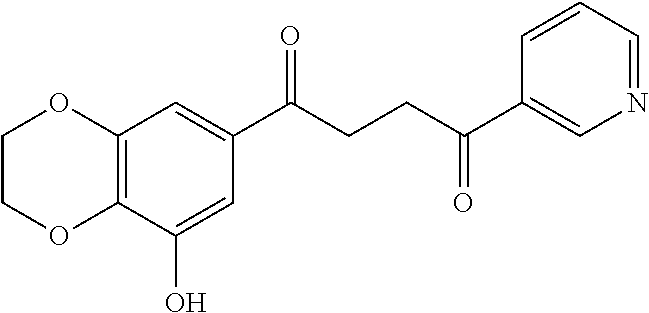
C00342

C00343

C00344
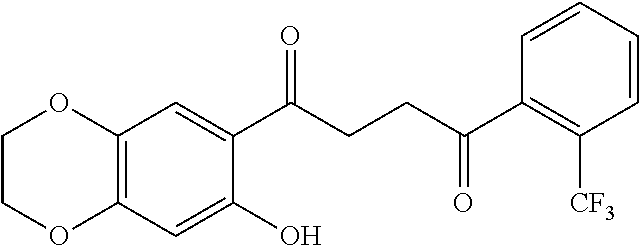
C00345
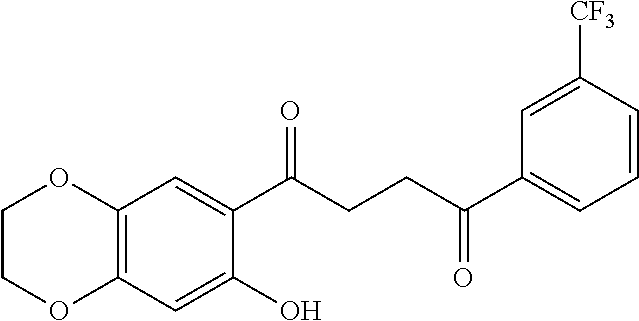
C00346

C00347
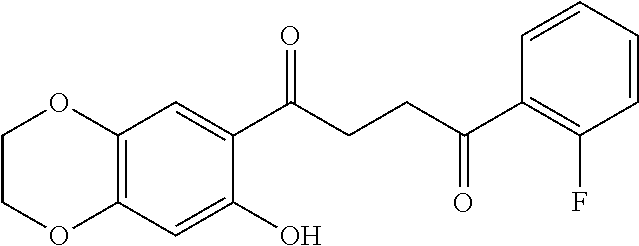
C00348

C00349
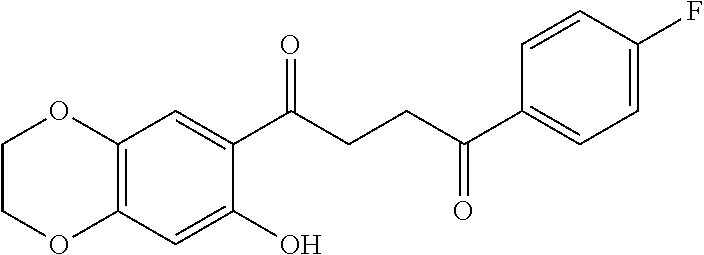
C00350

C00351

C00352

C00353

C00354

C00355
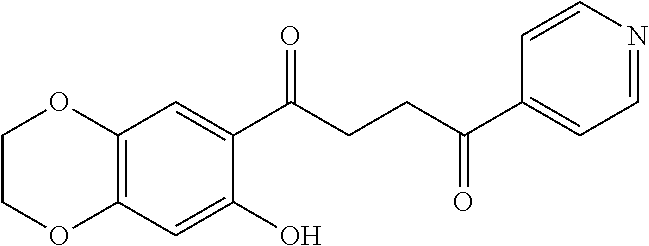
C00356
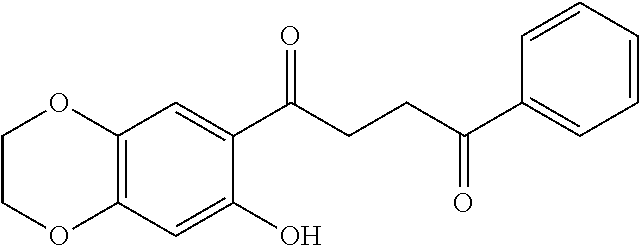
C00357
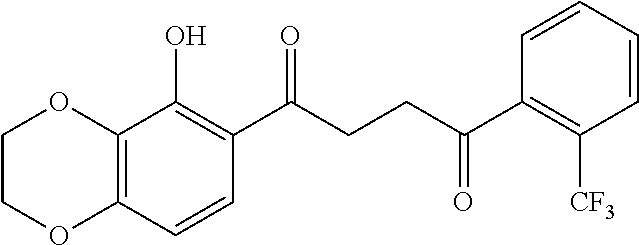
C00358
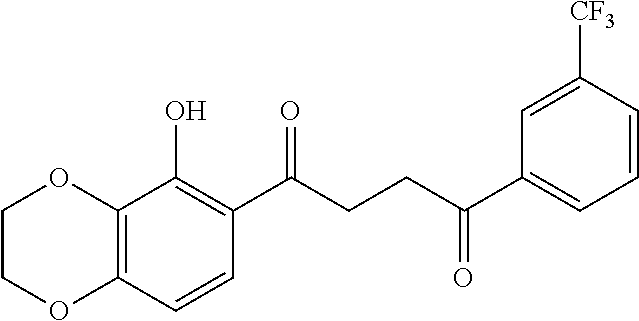
C00359

C00360

C00361
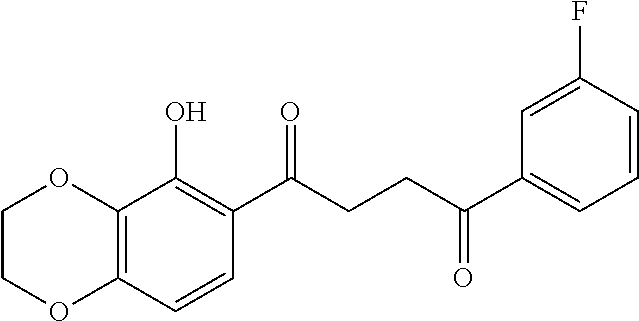
C00362

C00363

C00364

C00365

C00366

C00367

C00368
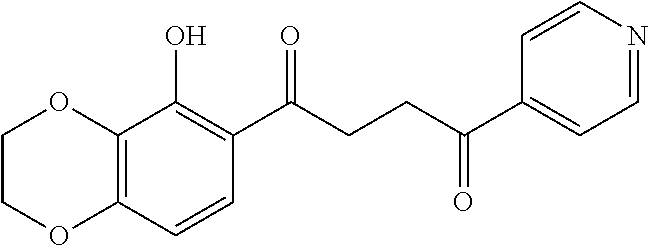
C00369
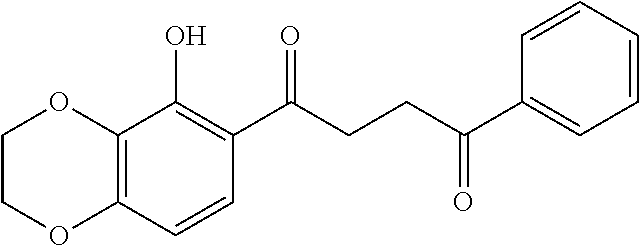
C00370

C00371
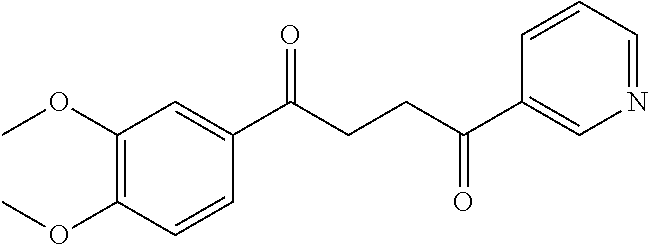
C00372
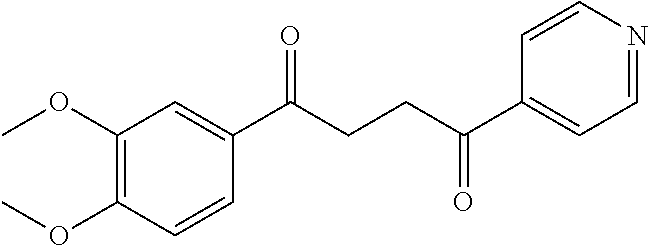
C00373

C00374

C00375

C00376
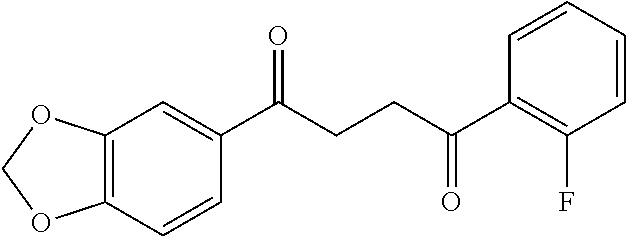
C00377

C00378

C00379

C00380

C00381
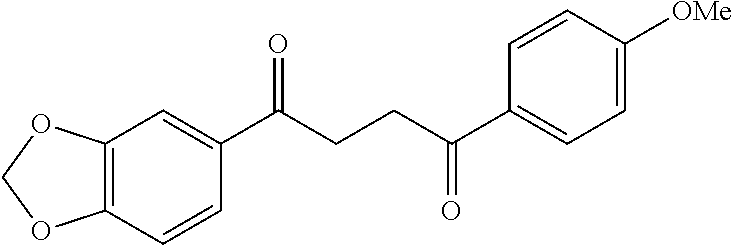
C00382

C00383
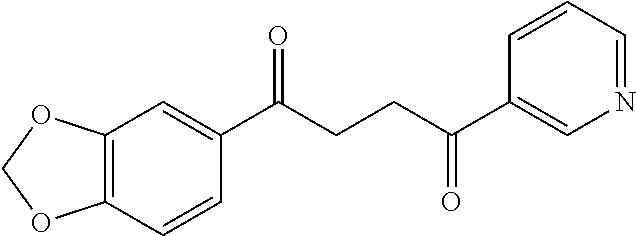
C00384

C00385

C00386
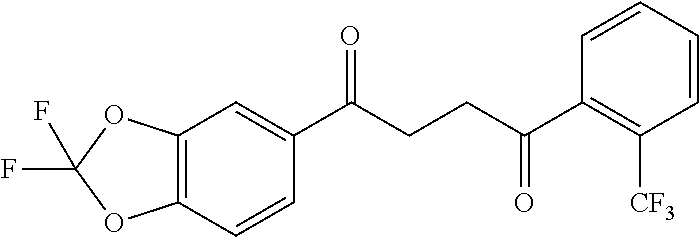
C00387

C00388

C00389

C00390
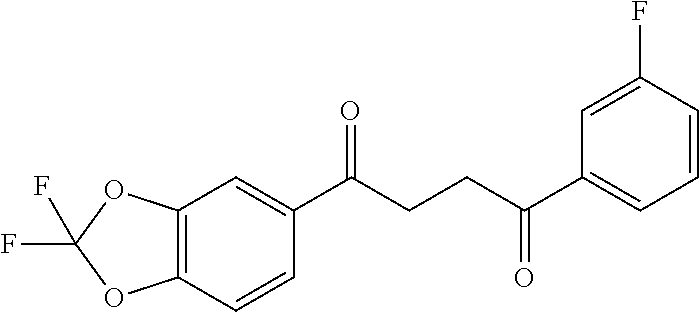
C00391

C00392

C00393

C00394

C00395
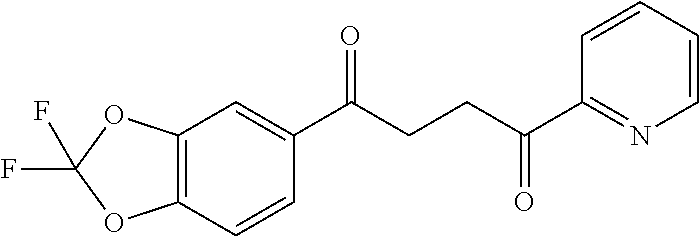
C00396

C00397
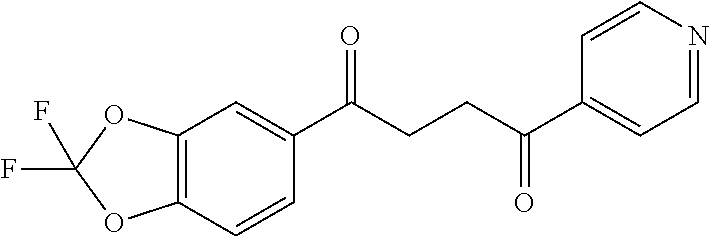
C00398

C00399
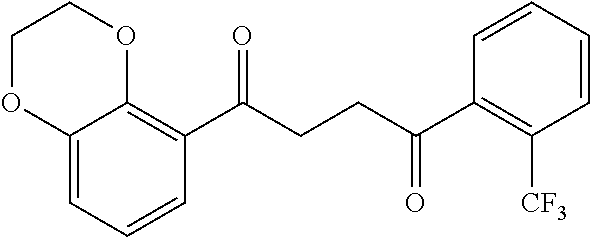
C00400

C00401

C00402
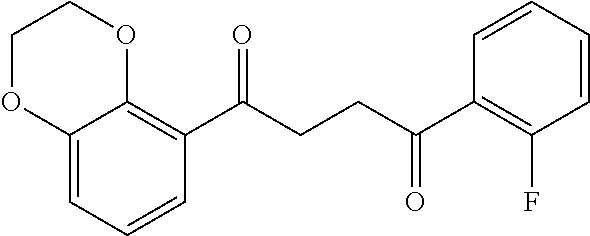
C00403
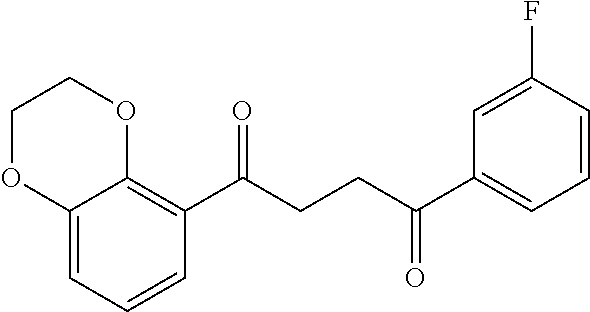
C00404

C00405

C00406
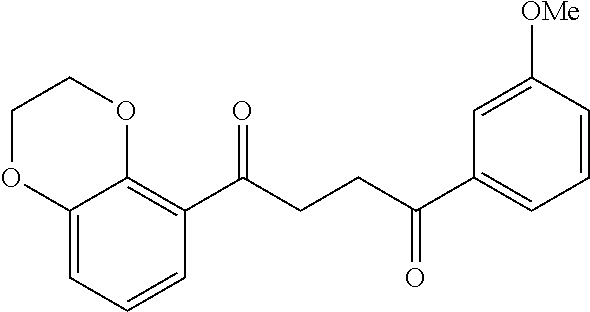
C00407
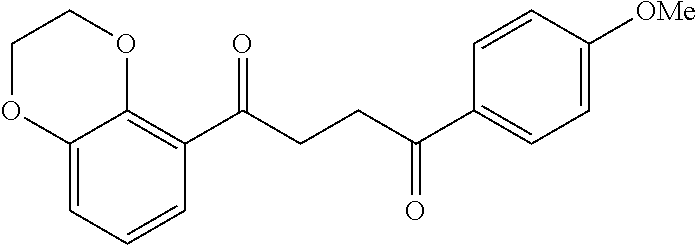
C00408
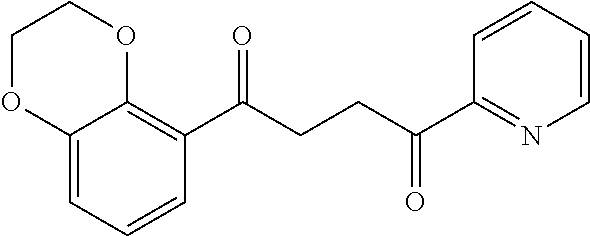
C00409

C00410
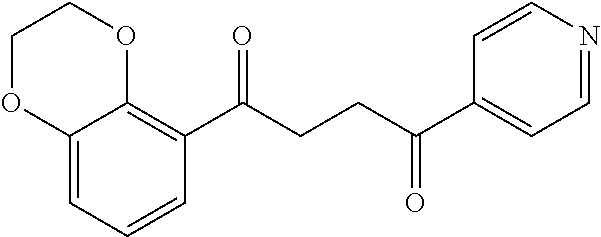
C00411

C00412
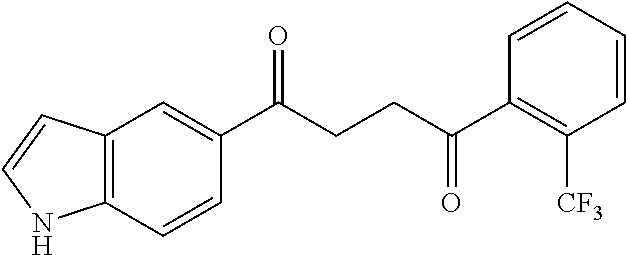
C00413

C00414

C00415
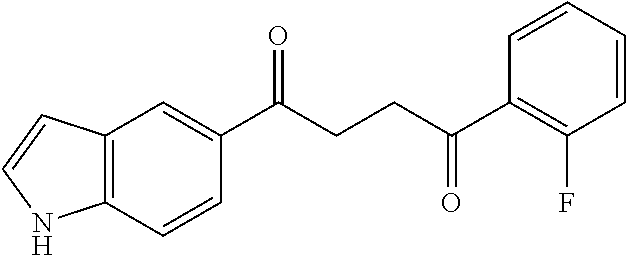
C00416

C00417

C00418

C00419

C00420

C00421
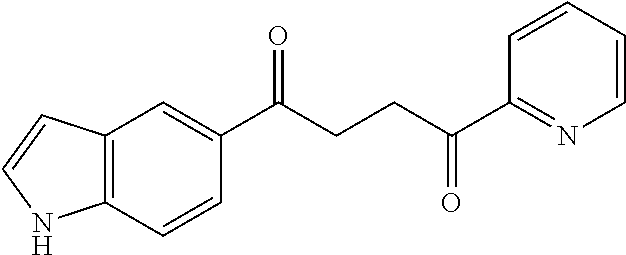
C00422

C00423

C00424

C00425

C00426

C00427

C00428

C00429

C00430

C00431

C00432
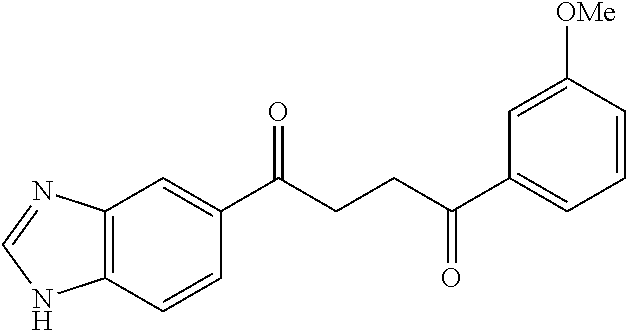
C00433

C00434

C00435
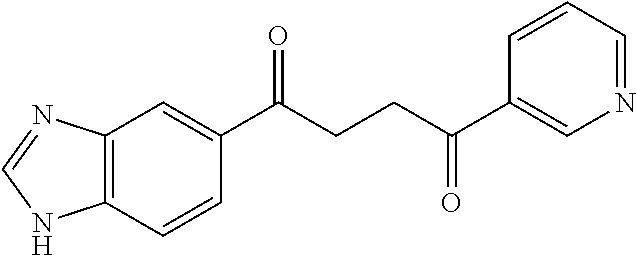
C00436

C00437
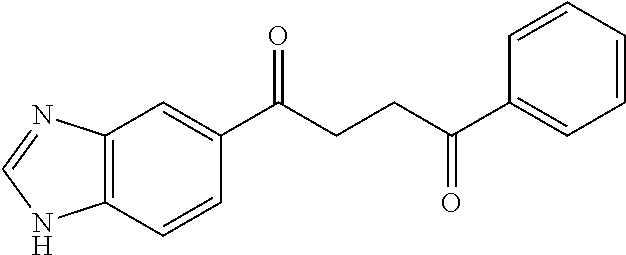
C00438

C00439

C00440
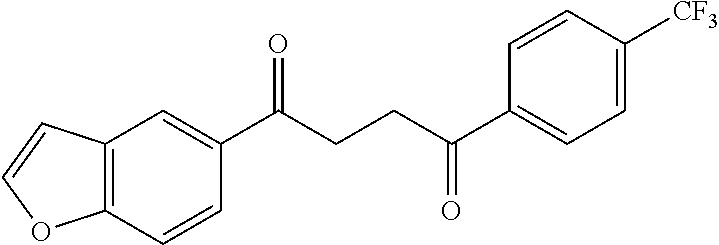
C00441

C00442

C00443
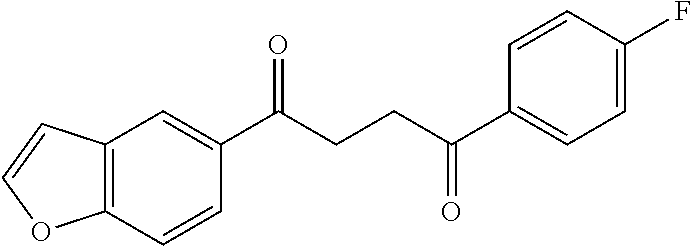
C00444

C00445

C00446

C00447
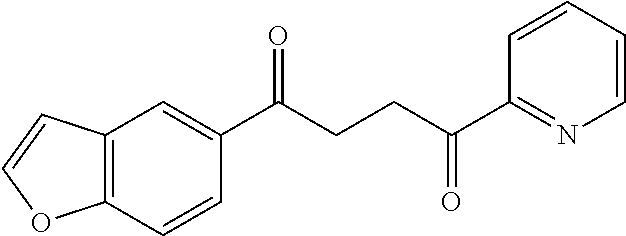
C00448
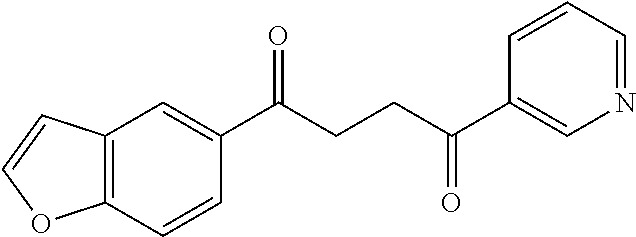
C00449

C00450

C00451
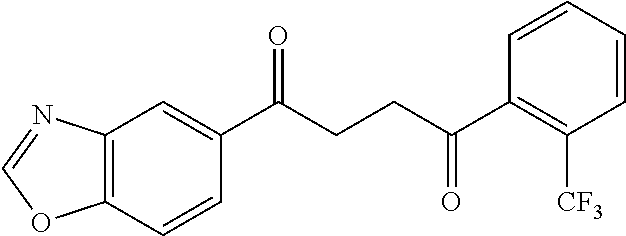
C00452
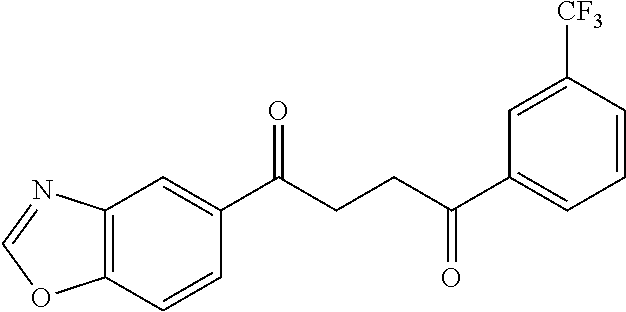
C00453
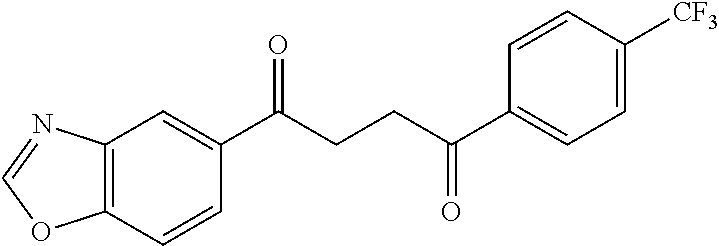
C00454
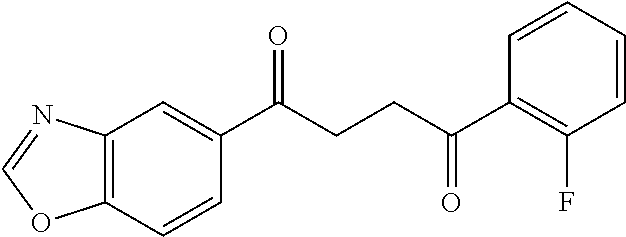
C00455
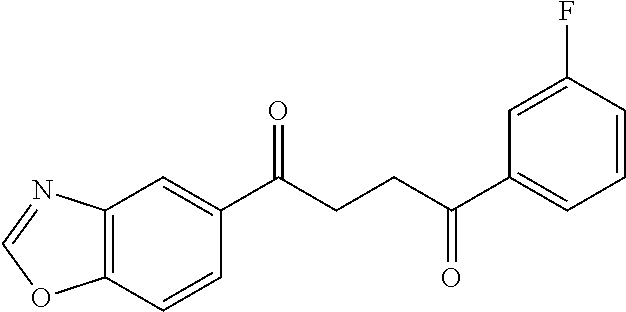
C00456
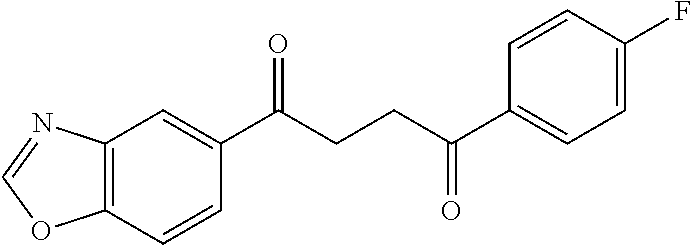
C00457

C00458

C00459
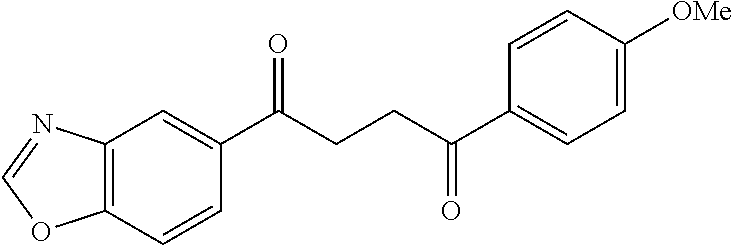
C00460

C00461

C00462
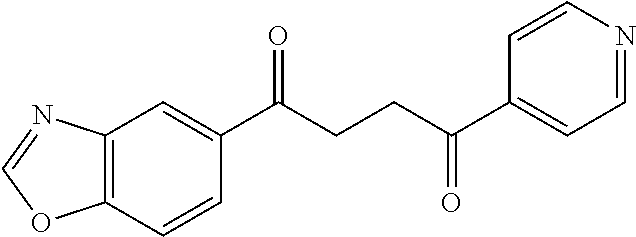
C00463

C00464

C00465
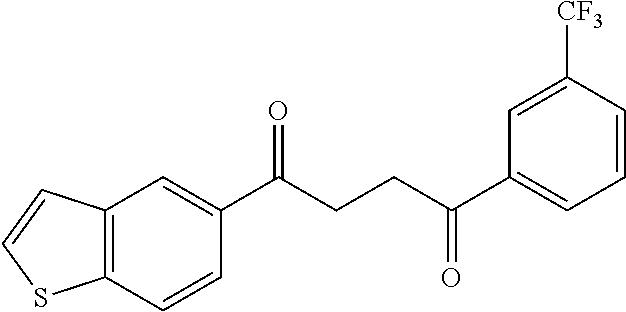
C00466

C00467

C00468
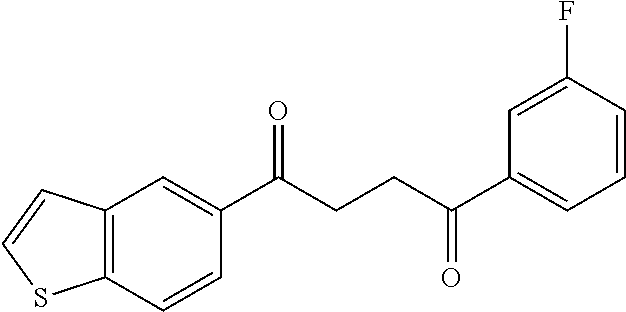
C00469

C00470
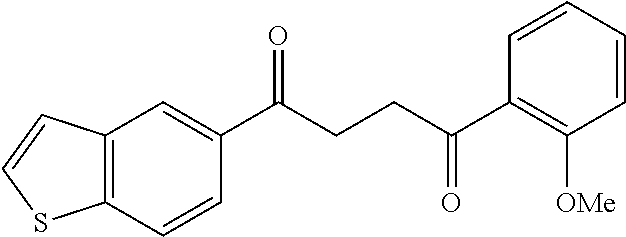
C00471

C00472

C00473

C00474

C00475
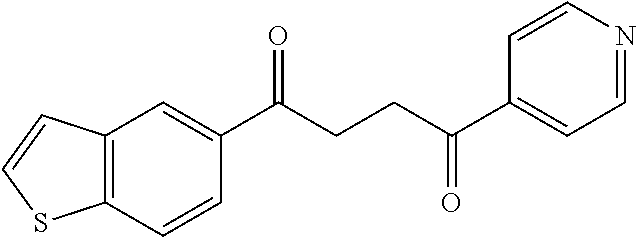
C00476
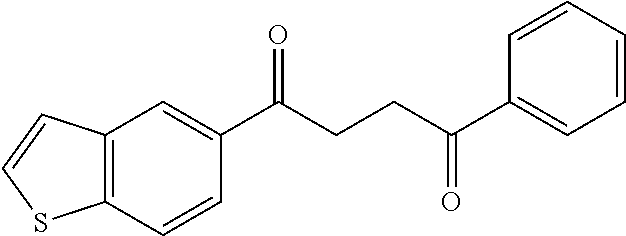
C00477

C00478

C00479

C00480
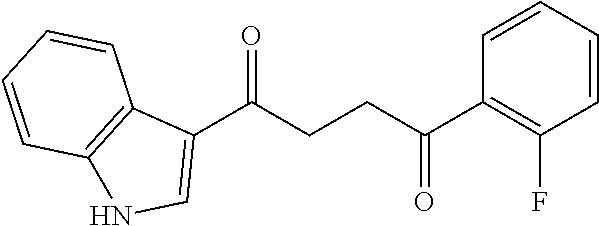
C00481
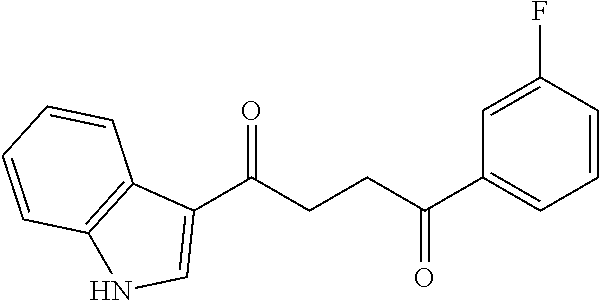
C00482

C00483

C00484

C00485

C00486

C00487
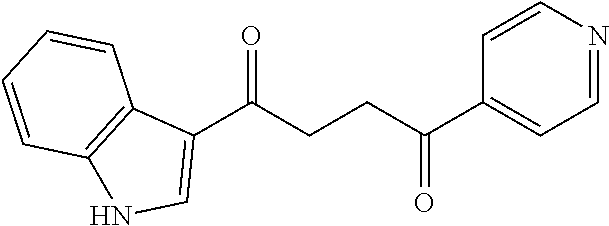
C00488
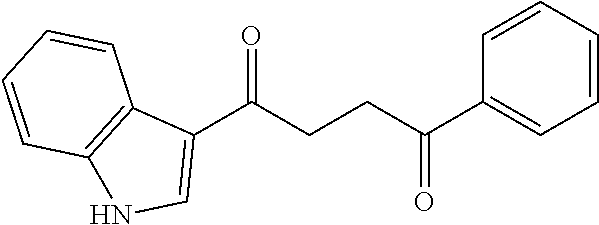
C00489
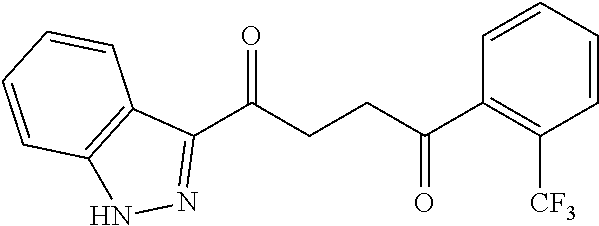
C00490
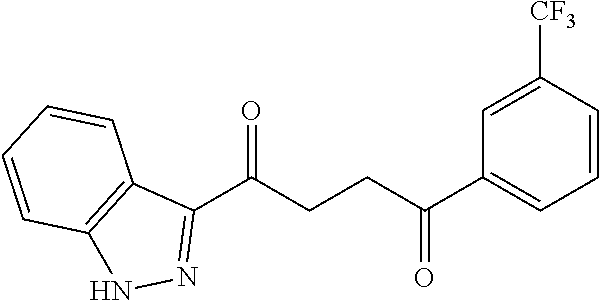
C00491

C00492

C00493

C00494
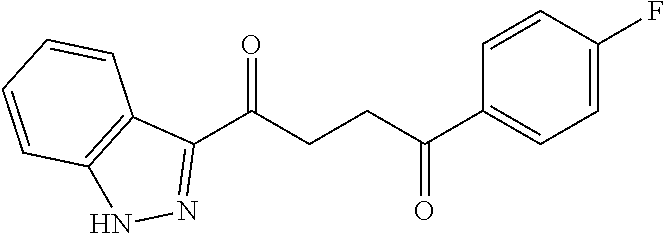
C00495
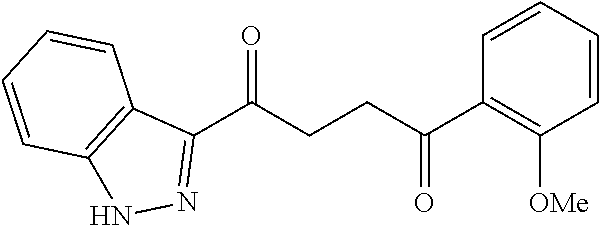
C00496
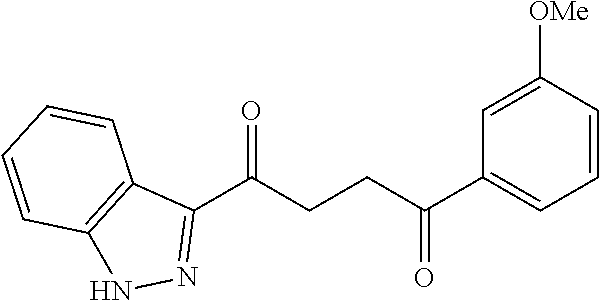
C00497

C00498

C00499

C00500
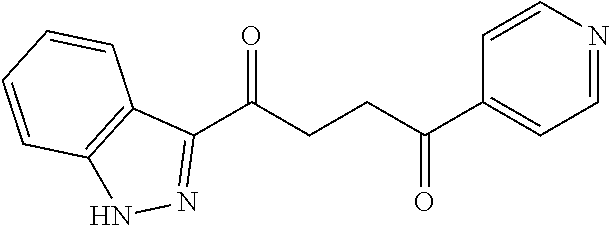
C00501
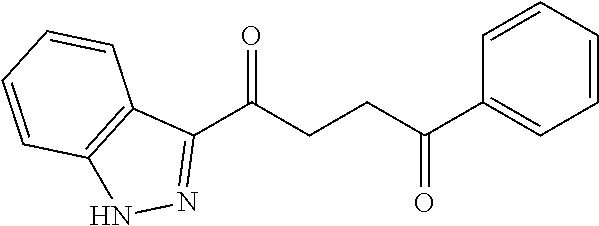
C00502
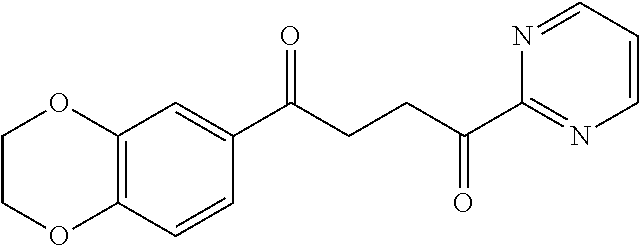
C00503

C00504

C00505
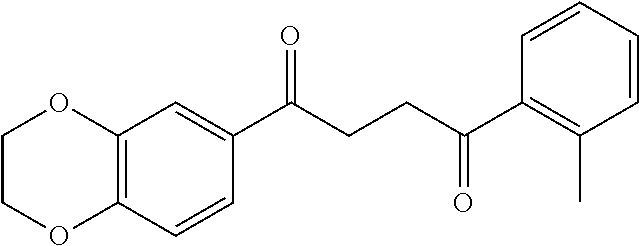
C00506
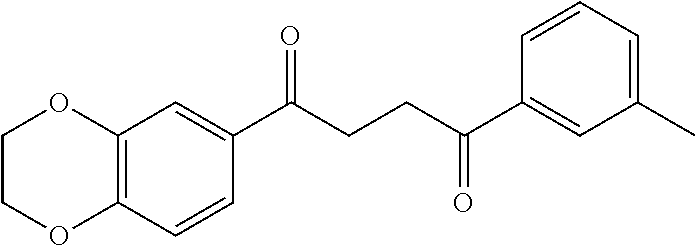
C00507

C00508

C00509

C00510

C00511
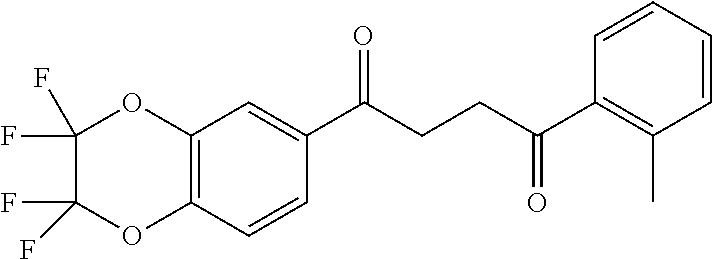
C00512
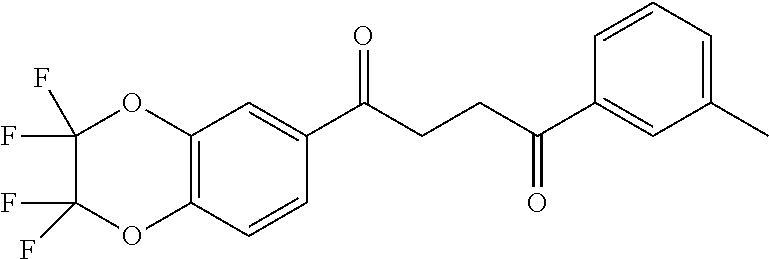
C00513

C00514

C00515

C00516
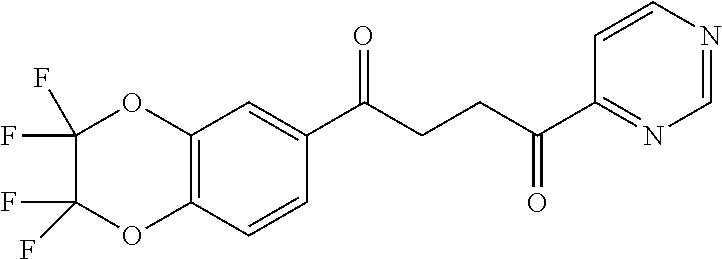
C00517
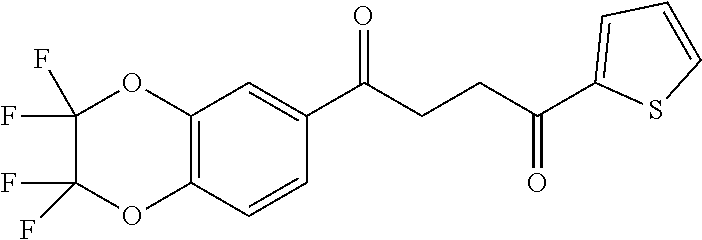
C00518
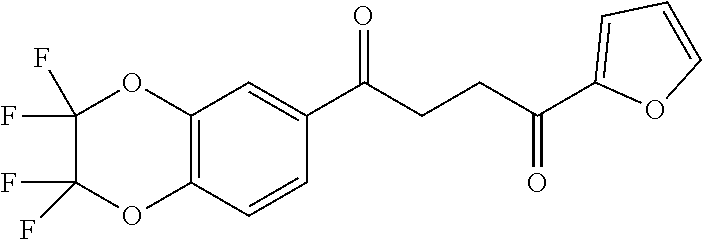
C00519
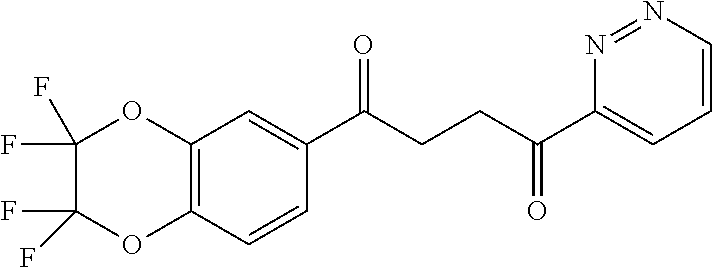
C00520
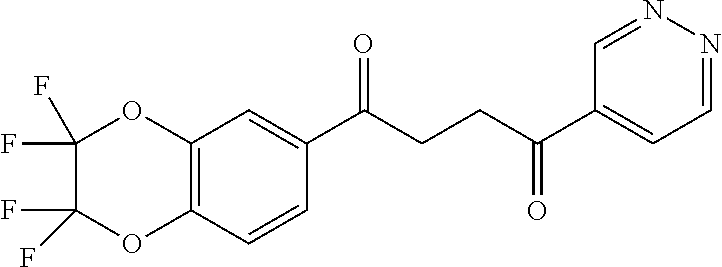
C00521

C00522

C00523

C00524

C00525
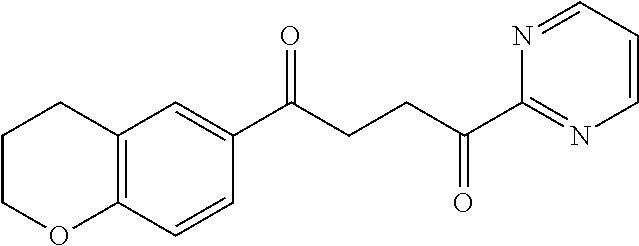
C00526

C00527

C00528
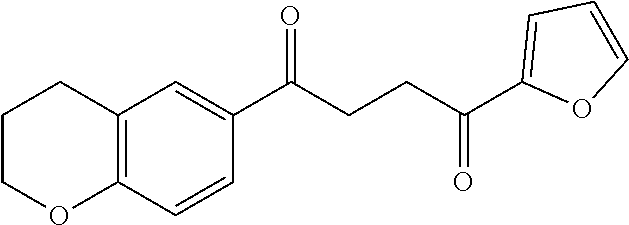
C00529

C00530
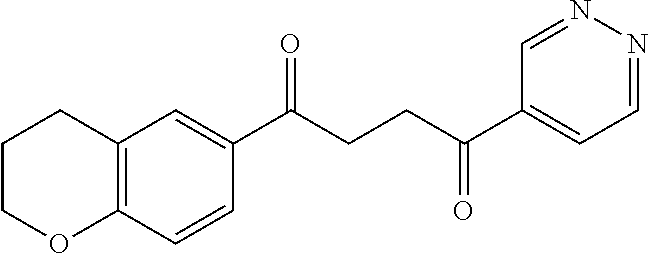
C00531

C00532

C00533

C00534
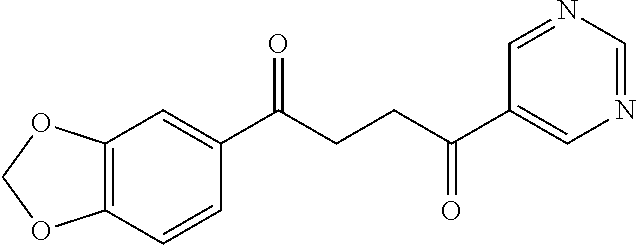
C00535

C00536

C00537
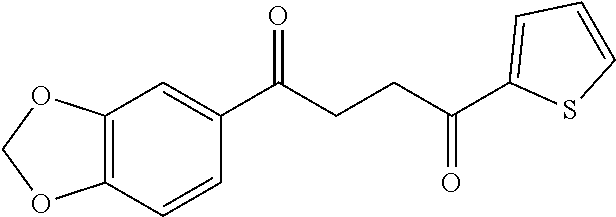
C00538

C00539

C00540

C00541

C00542

C00543

C00544
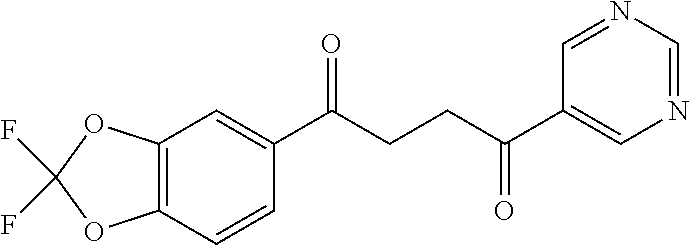
C00545
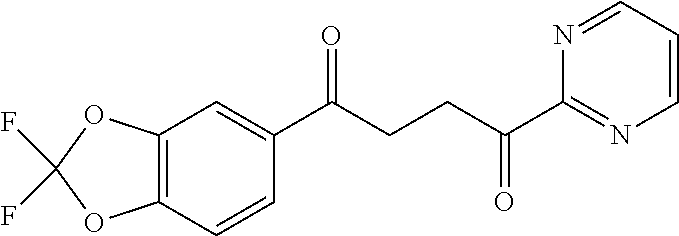
C00546
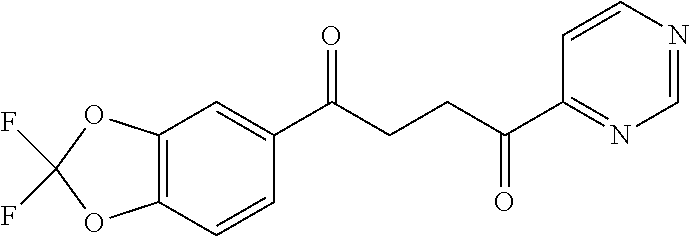
C00547

C00548

C00549
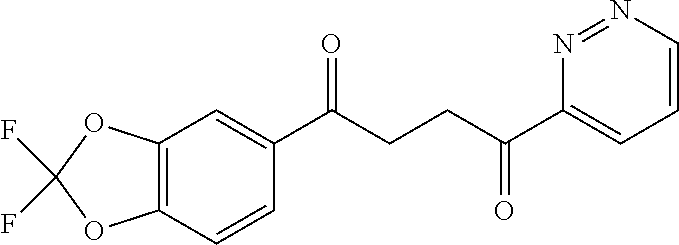
C00550
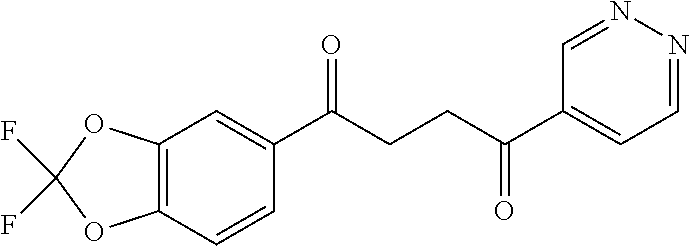
C00551
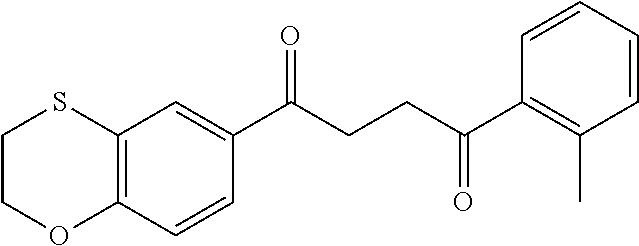
C00552

C00553
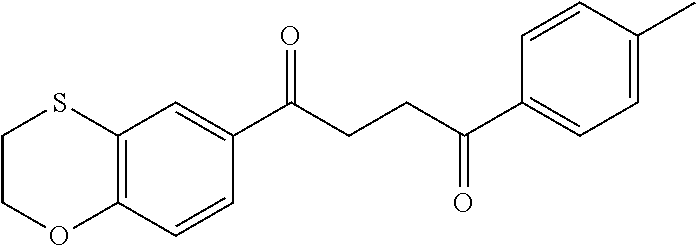
C00554

C00555

C00556
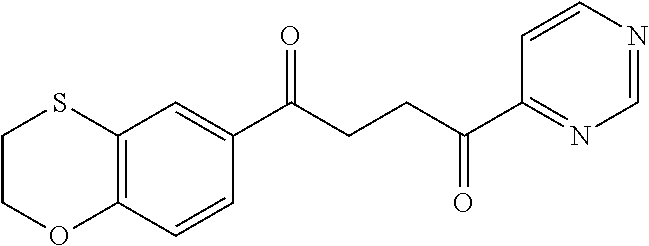
C00557

C00558

C00559

C00560
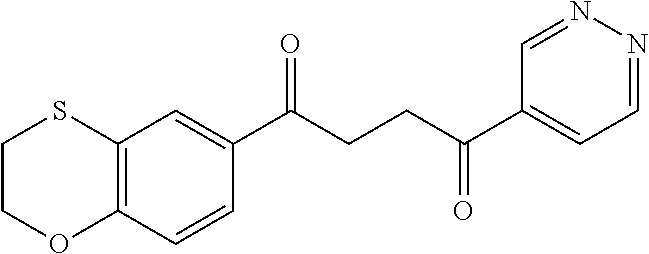
C00561

C00562
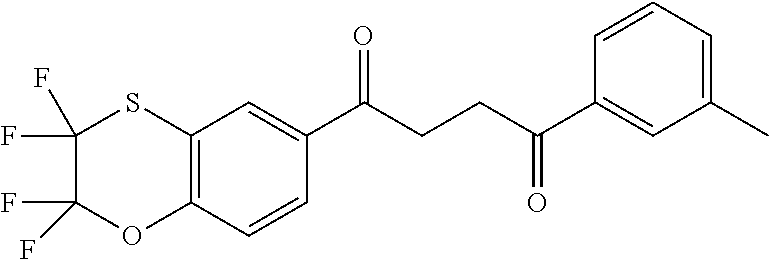
C00563
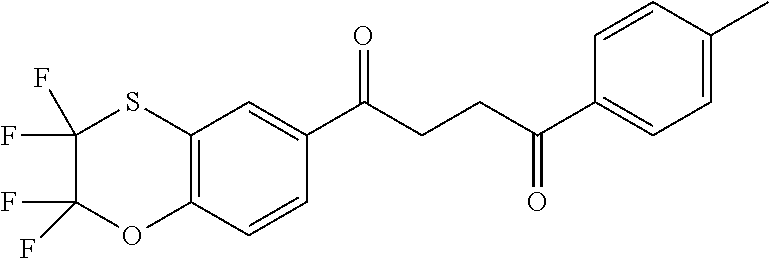
C00564
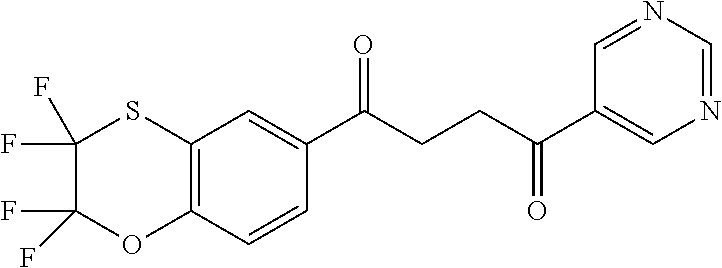
C00565
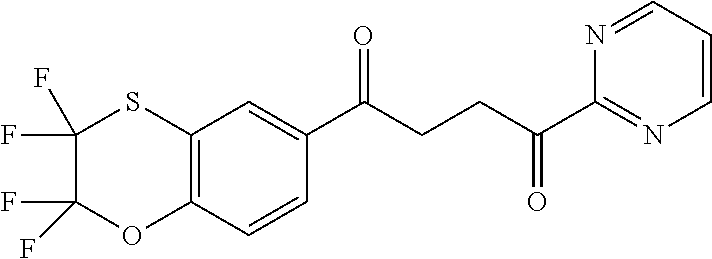
C00566
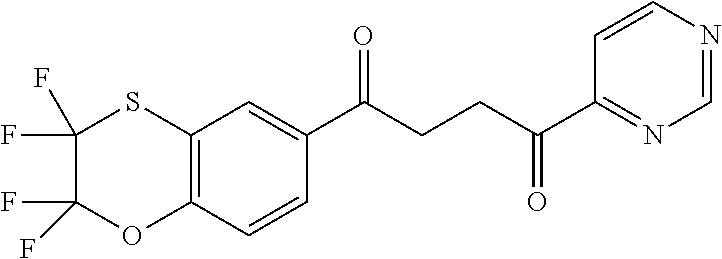
C00567
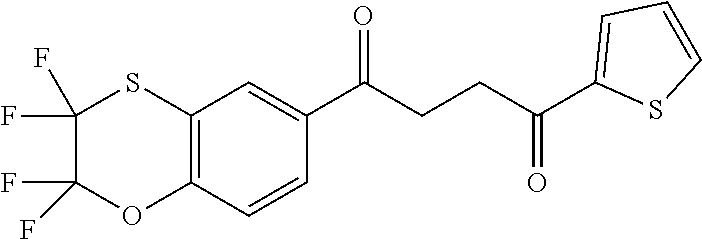
C00568

C00569

C00570

C00571

C00572

C00573

C00574

C00575

C00576

C00577

C00578

C00579

C00580
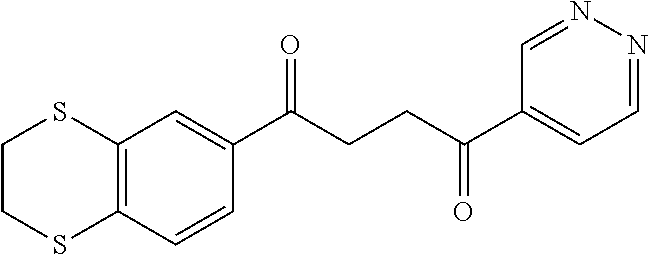
C00581

C00582

C00583
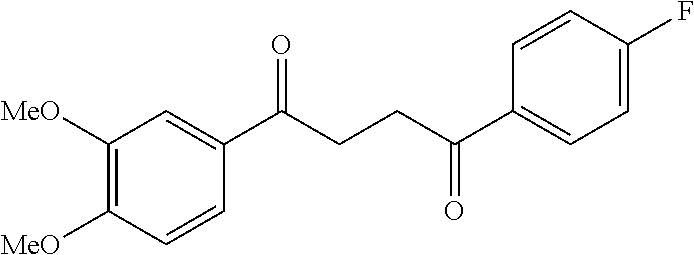
C00584

C00585

C00586

C00587

C00588
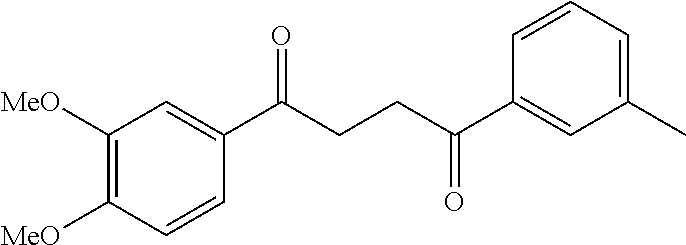
C00589
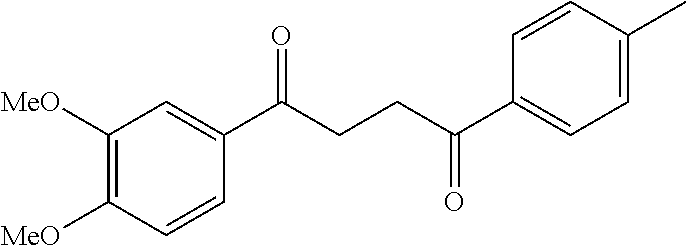
C00590
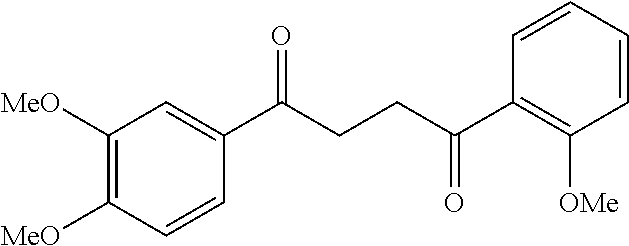
C00591

C00592
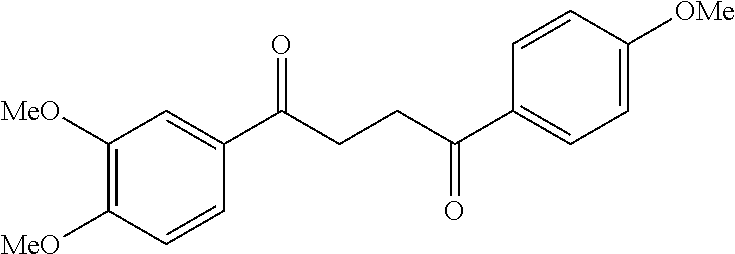
C00593

C00594

C00595
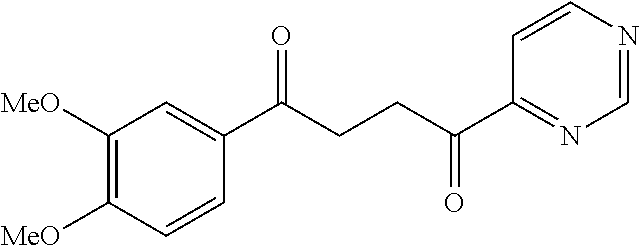
C00596

C00597
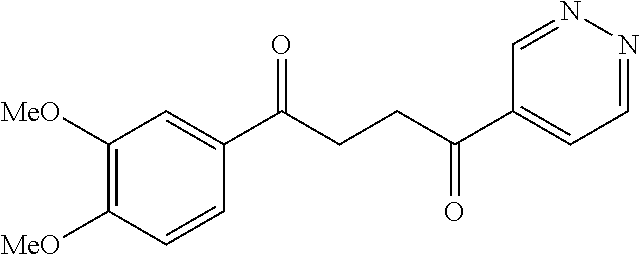
C00598

C00599
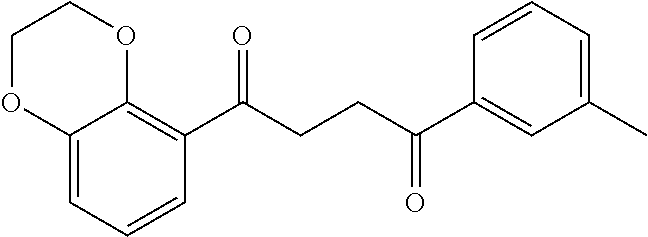
C00600

C00601

C00602

C00603

C00604
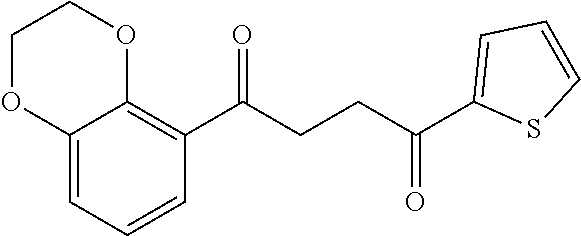
C00605
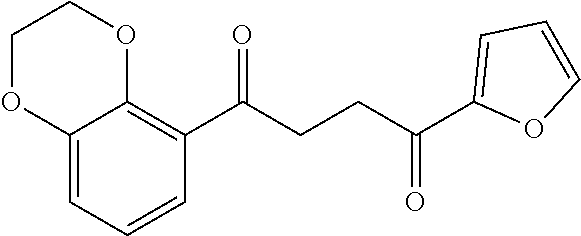
C00606

C00607

C00608

C00609

C00610
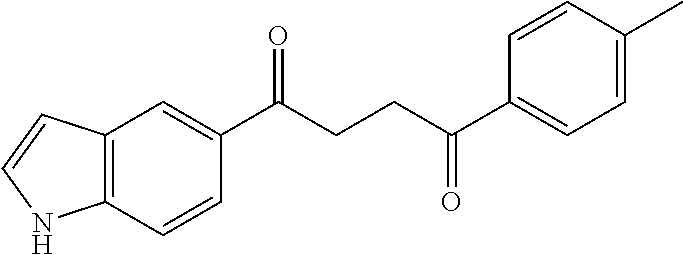
C00611

C00612

C00613

C00614

C00615
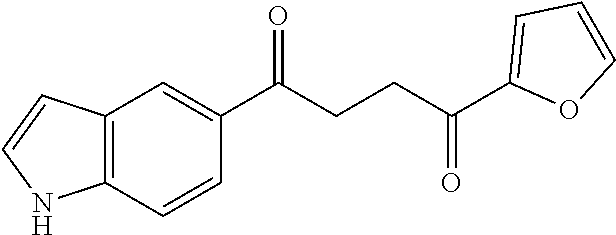
C00616
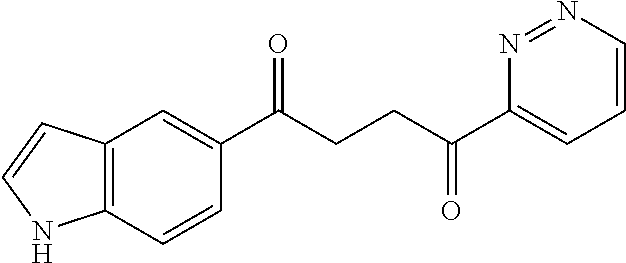
C00617

C00618

C00619

C00620

C00621

C00622
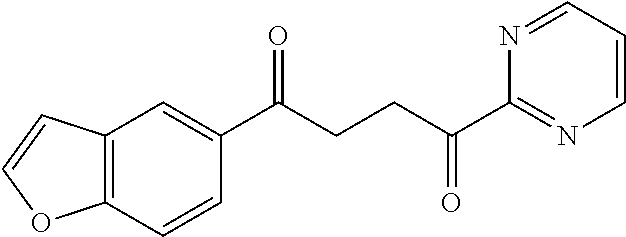
C00623
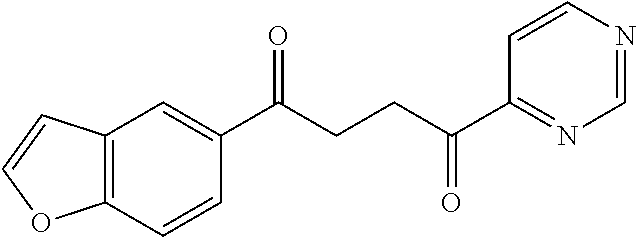
C00624
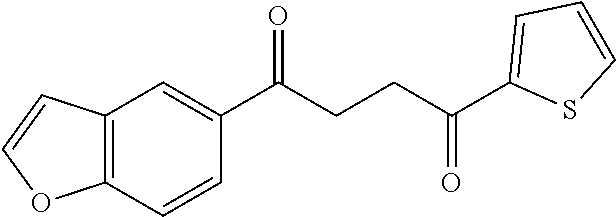
C00625

C00626
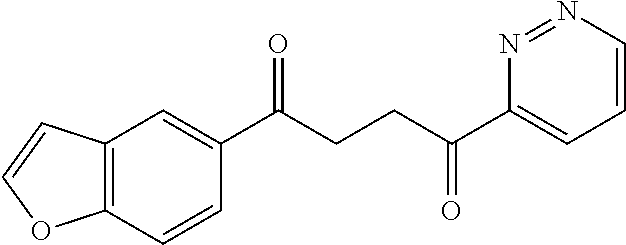
C00627

C00628

C00629

C00630

C00631

C00632
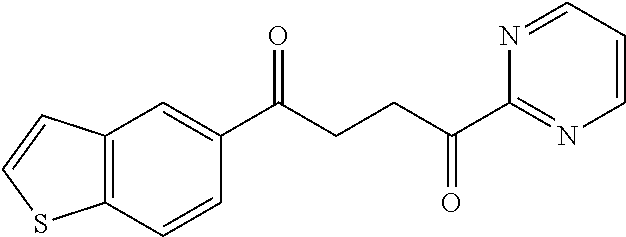
C00633

C00634
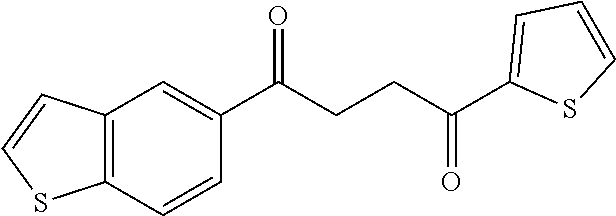
C00635

C00636

C00637
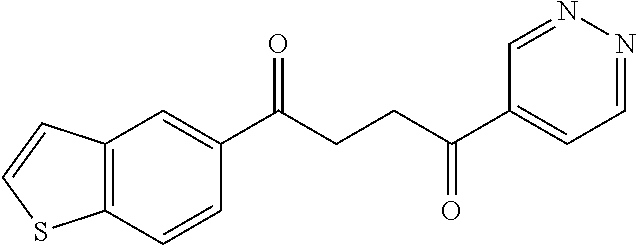
C00638

C00639

C00640

C00641
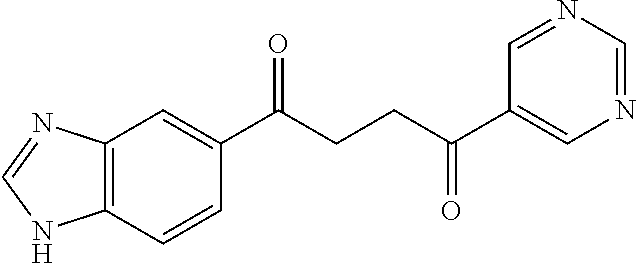
C00642

C00643

C00644

C00645
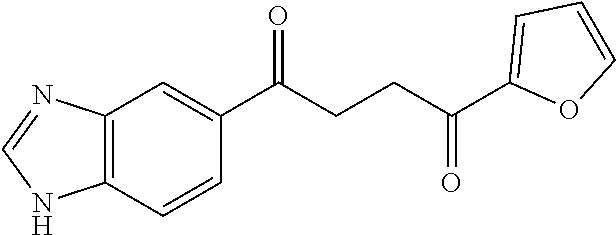
C00646
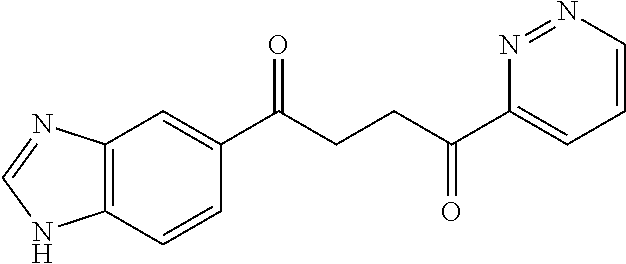
C00647

C00648

C00649

C00650
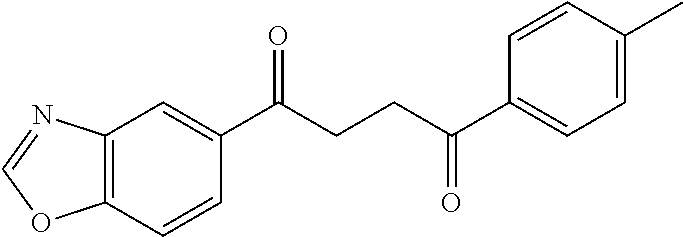
C00651
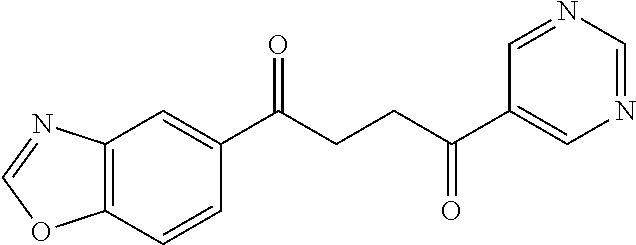
C00652
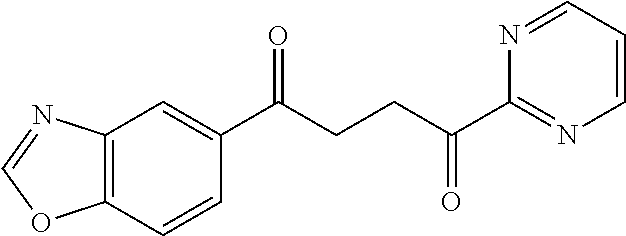
C00653
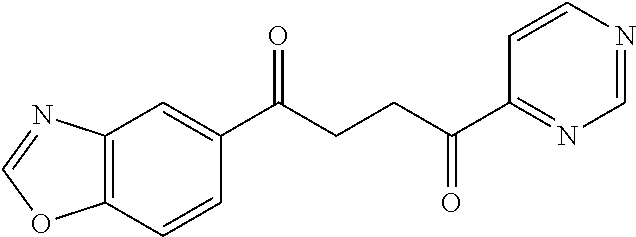
C00654

C00655

C00656

C00657
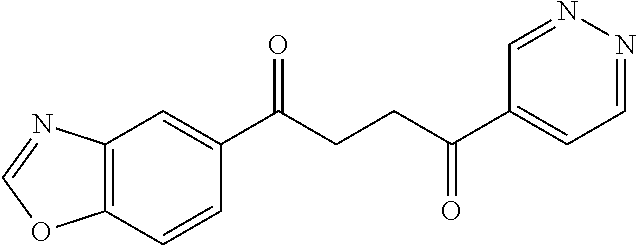
C00658
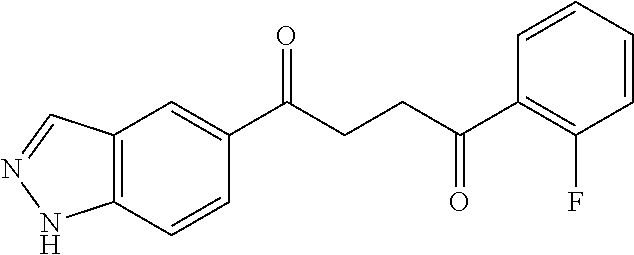
C00659

C00660

C00661

C00662
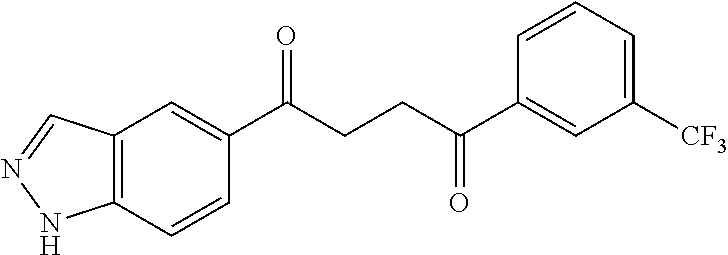
C00663
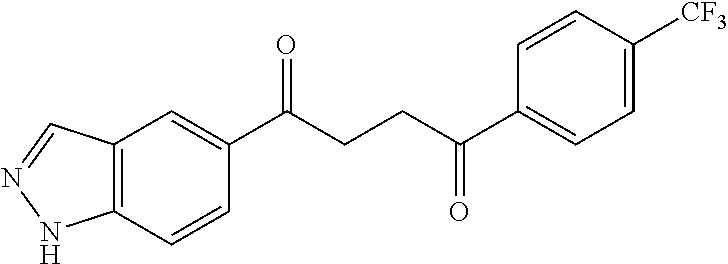
C00664
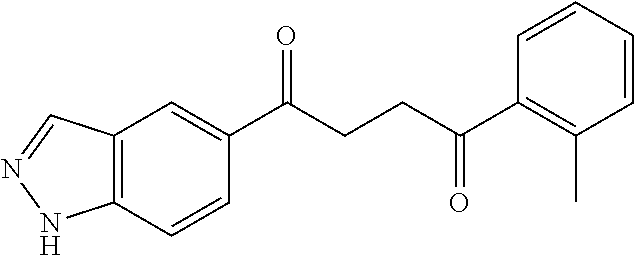
C00665
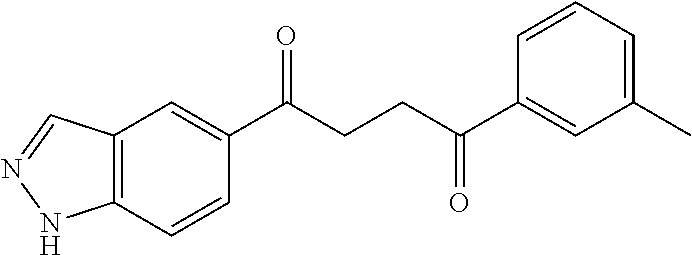
C00666
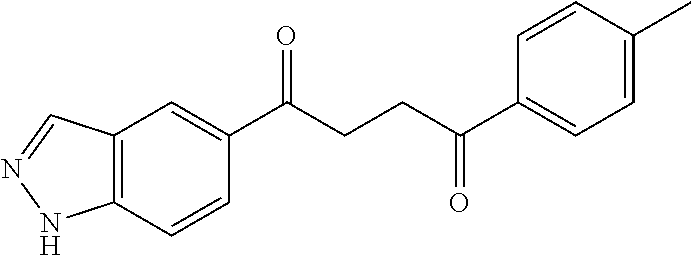
C00667

C00668

C00669
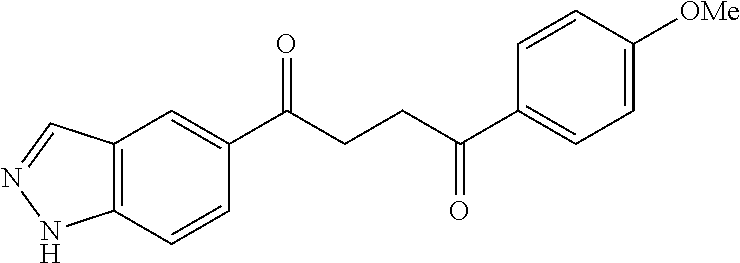
C00670

C00671
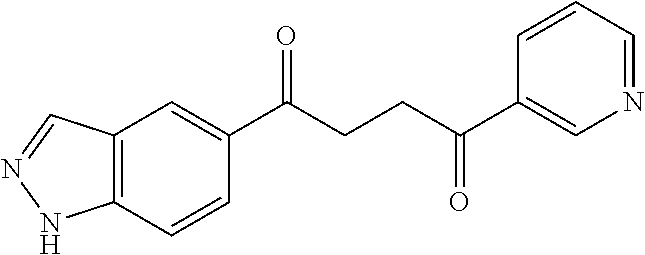
C00672

C00673

C00674
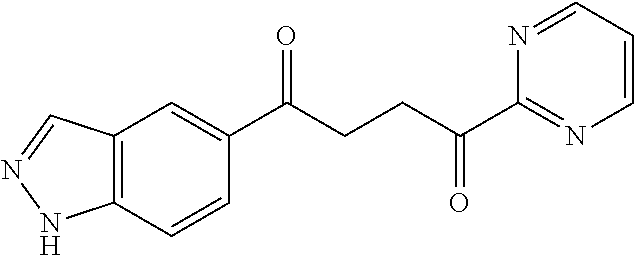
C00675
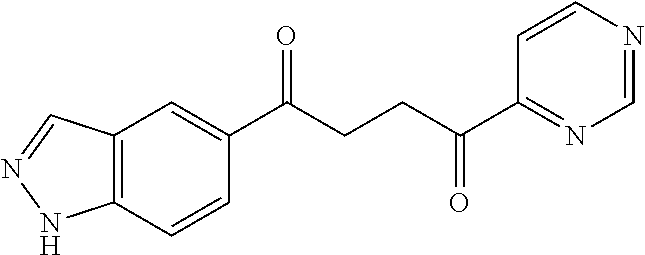
C00676

C00677

C00678
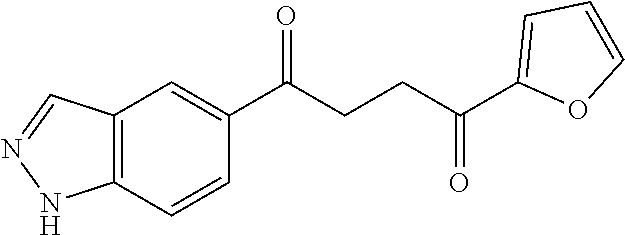
C00679
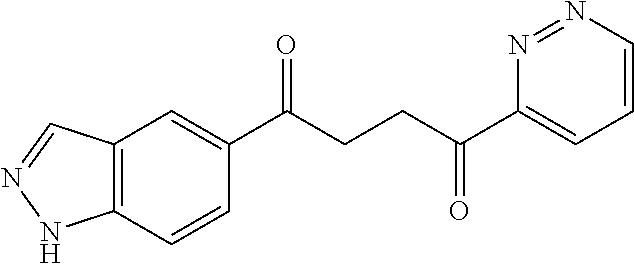
C00680
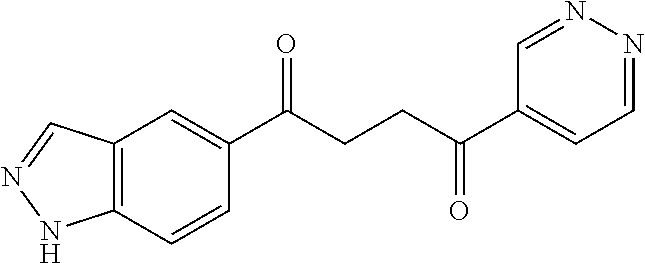
C00681

C00682

C00683
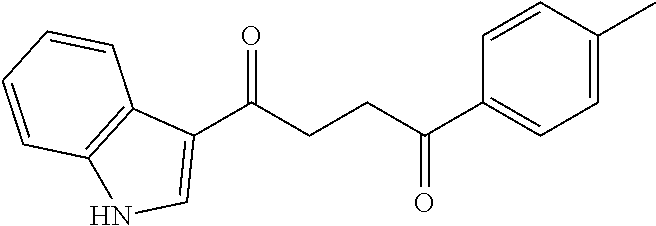
C00684

C00685
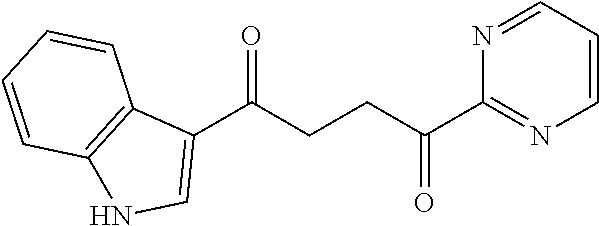
C00686

C00687
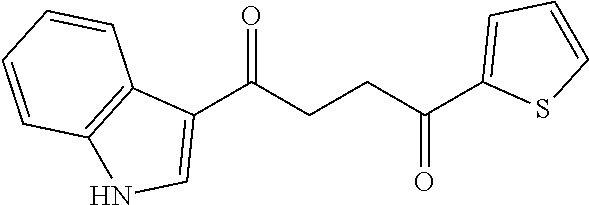
C00688

C00689
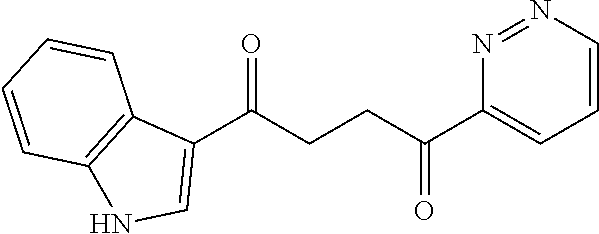
C00690
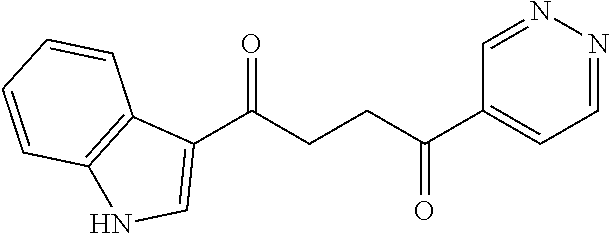
C00691
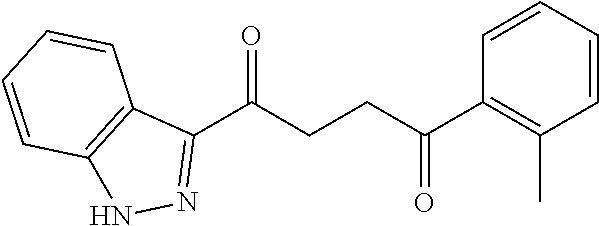
C00692
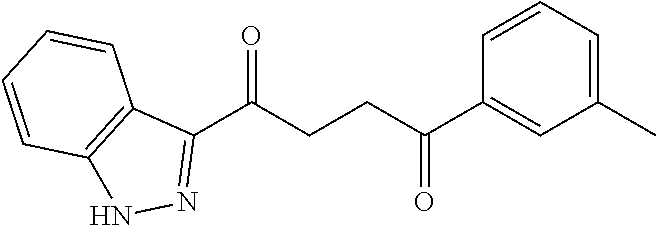
C00693

C00694

C00695

C00696

C00697

C00698

C00699

C00700

C00701
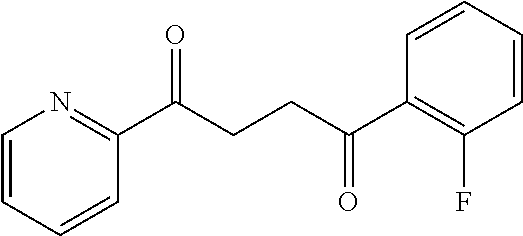
C00702
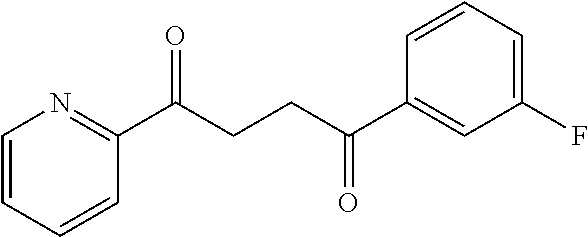
C00703
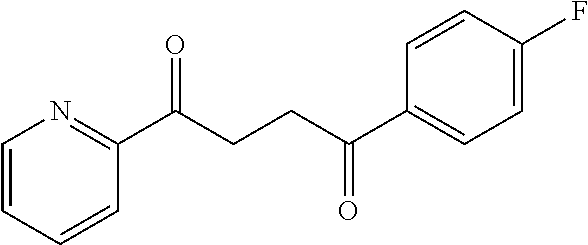
C00704

C00705

C00706

C00707
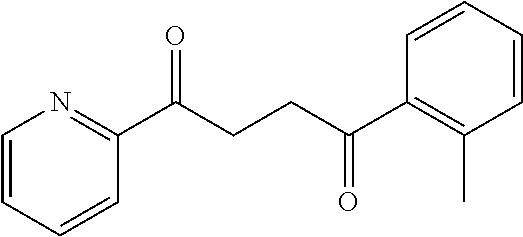
C00708

C00709

C00710

C00711
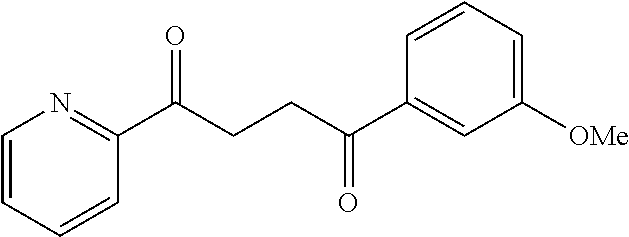
C00712

C00713
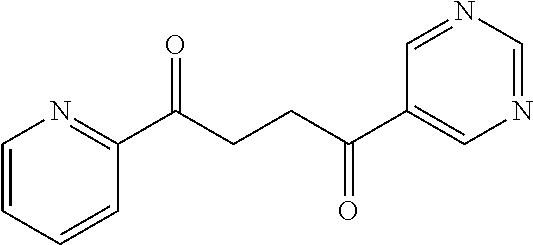
C00714

C00715

C00716

C00717
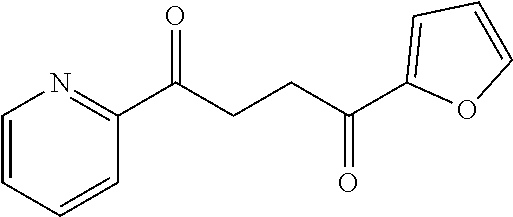
C00718

C00719

C00720

C00721
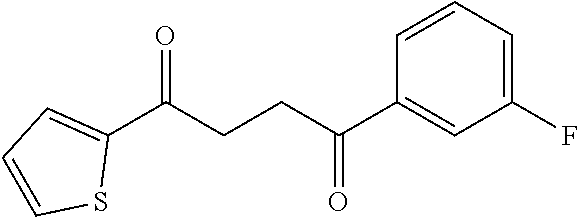
C00722

C00723
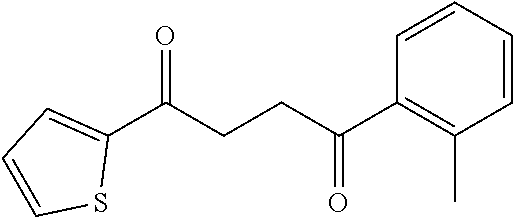
C00724

C00725
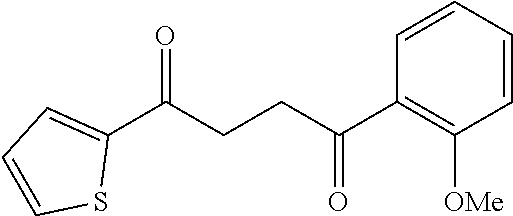
C00726
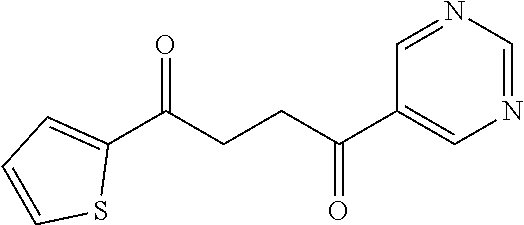
C00727
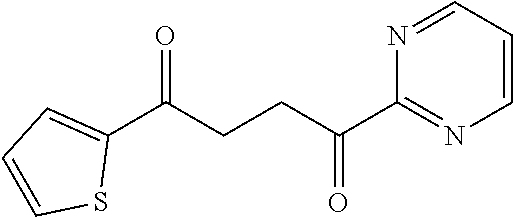
C00728
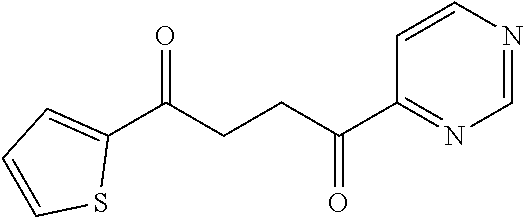
C00729
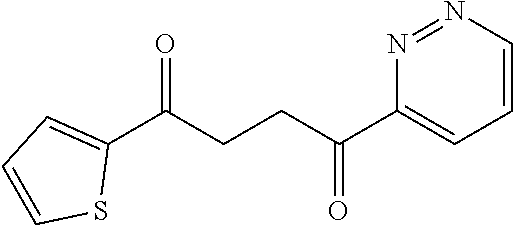
C00730

C00731

C00732
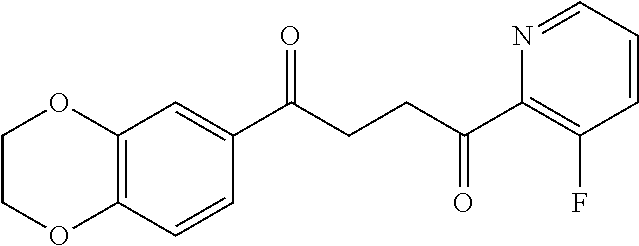
C00733

C00734

C00735
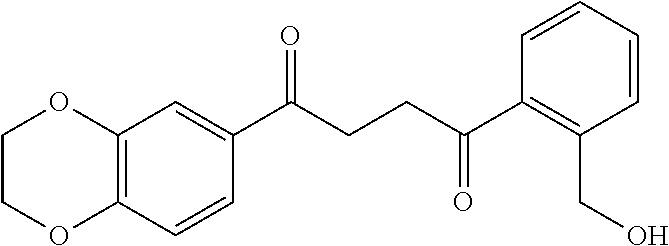
C00736

C00737

C00738
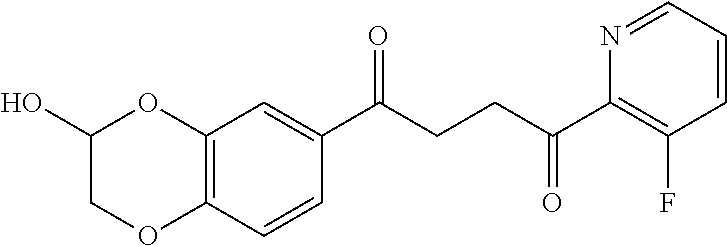
C00739

C00740

C00741

C00742

C00743
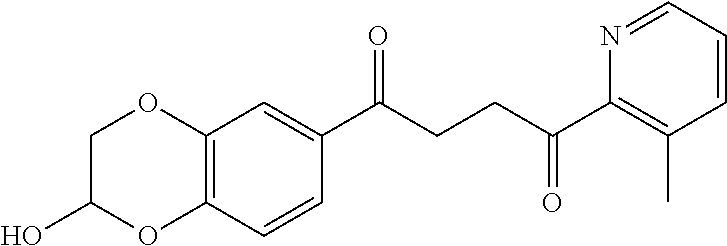
C00744

C00745
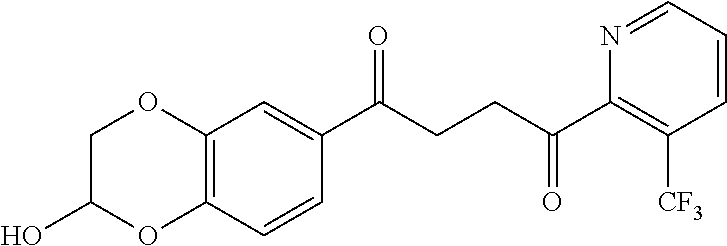
C00746

C00747

C00748

C00749

C00750
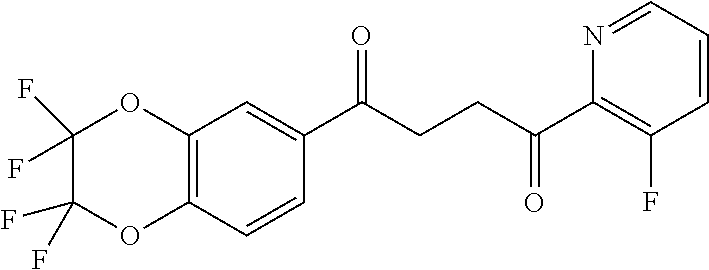
C00751

C00752
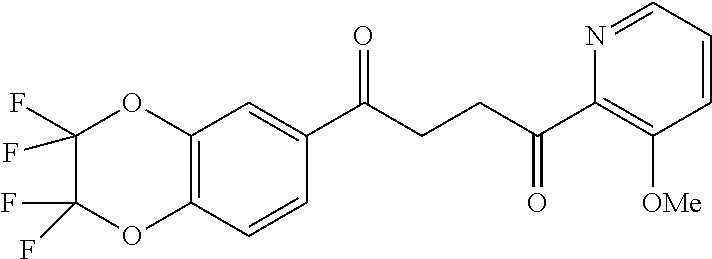
C00753
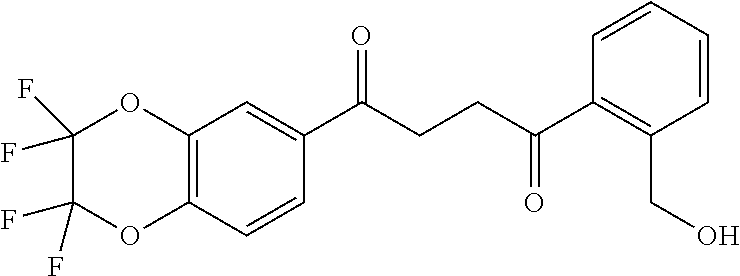
C00754

C00755

C00756

C00757
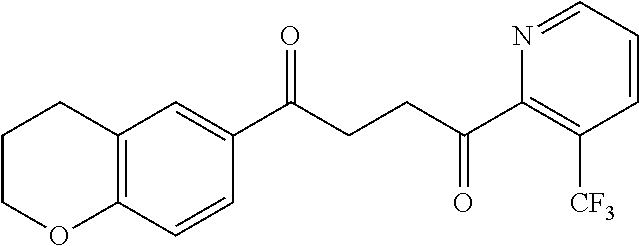
C00758

C00759
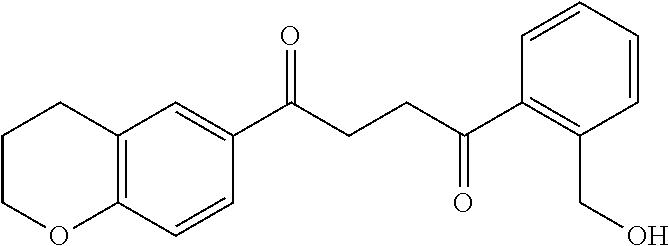
C00760
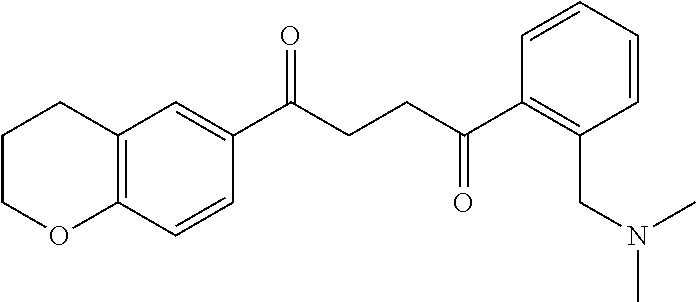
C00761
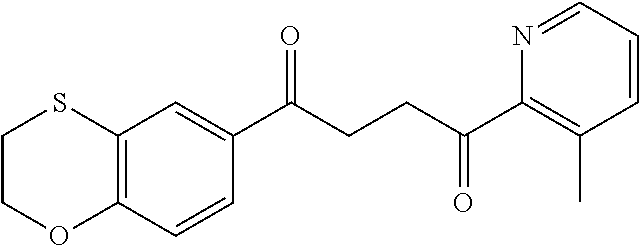
C00762

C00763

C00764

C00765

C00766

C00767

C00768
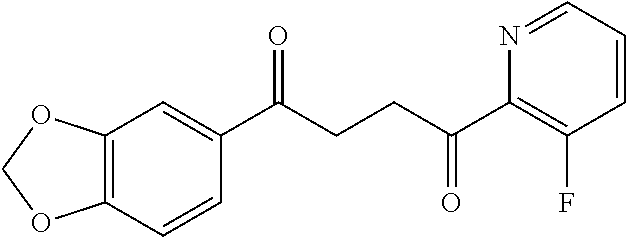
C00769

C00770
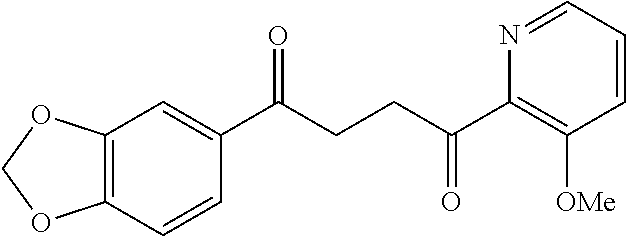
C00771
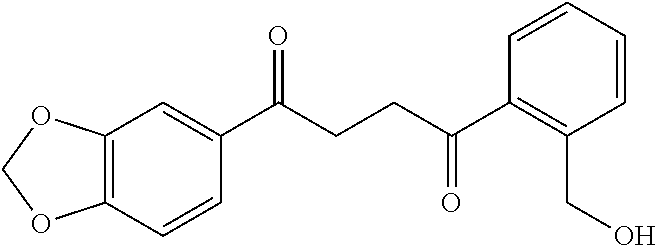
C00772

C00773

C00774
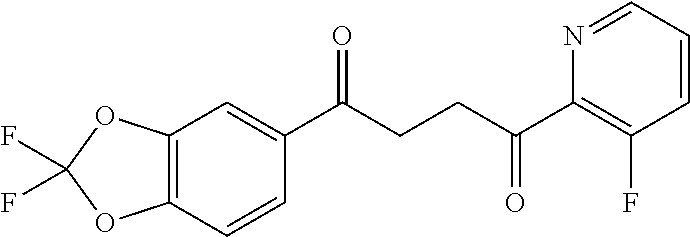
C00775

C00776
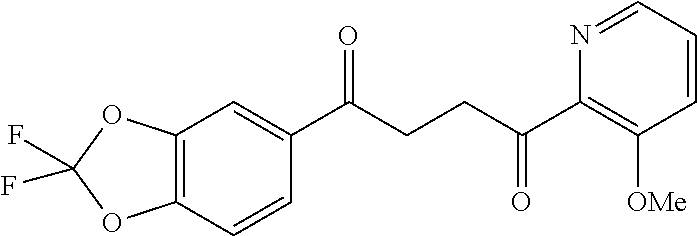
C00777

C00778
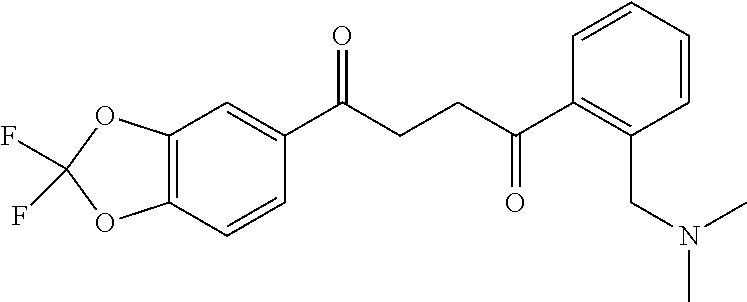
C00779

C00780
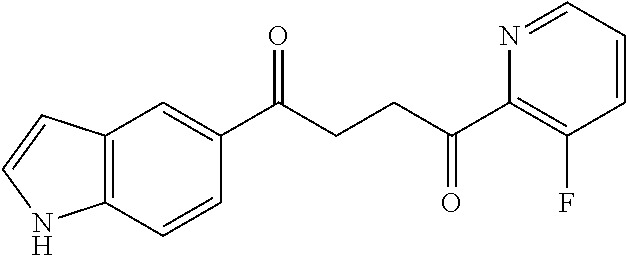
C00781

C00782

C00783

C00784
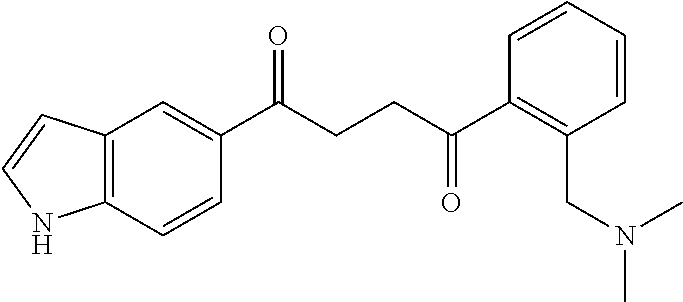
C00785

C00786
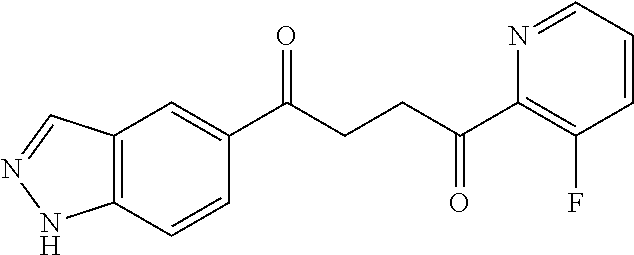
C00787

C00788

C00789
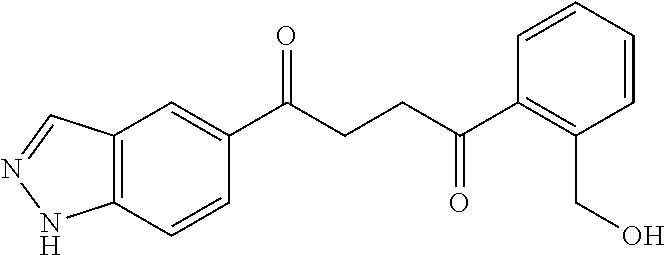
C00790

C00791

C00792
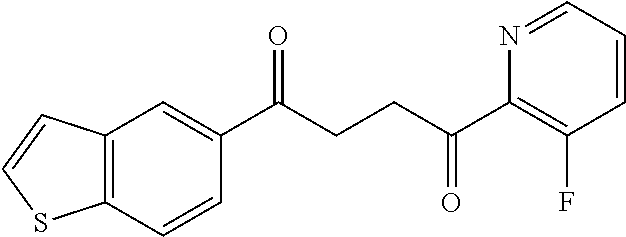
C00793

C00794

C00795

C00796

C00797

C00798
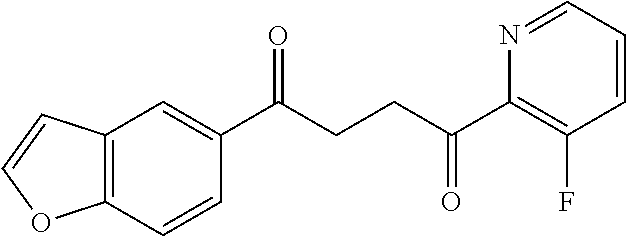
C00799
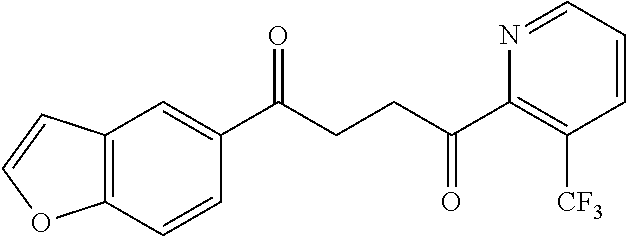
C00800

C00801

C00802

C00803
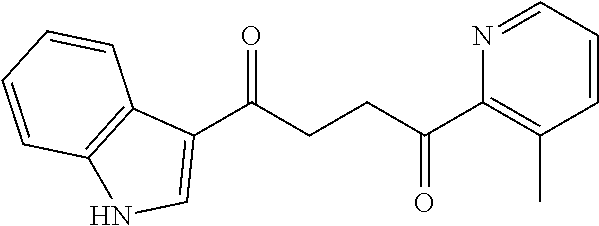
C00804

C00805
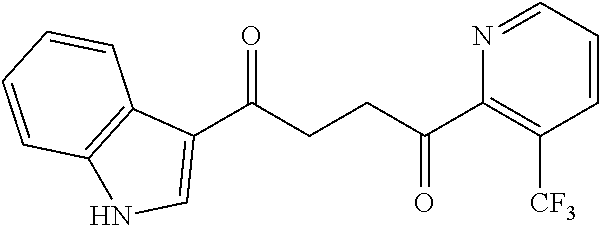
C00806

C00807

C00808

C00809
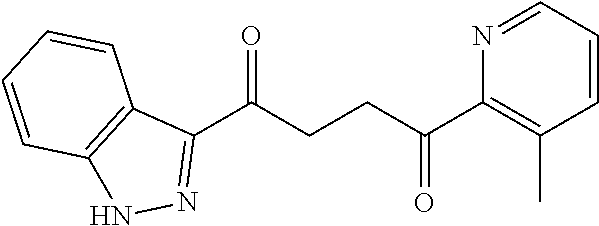
C00810

C00811
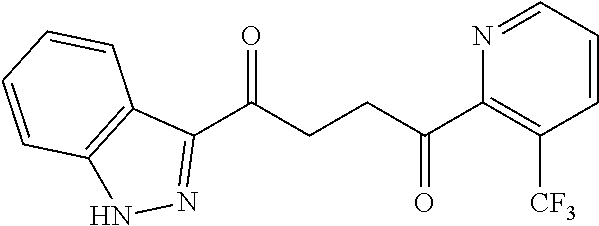
C00812
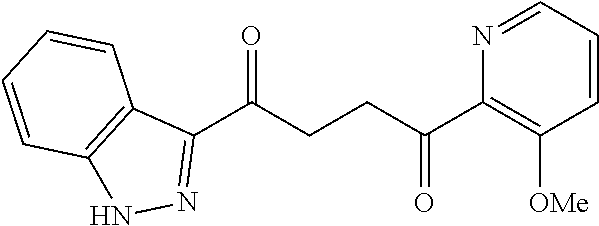
C00813
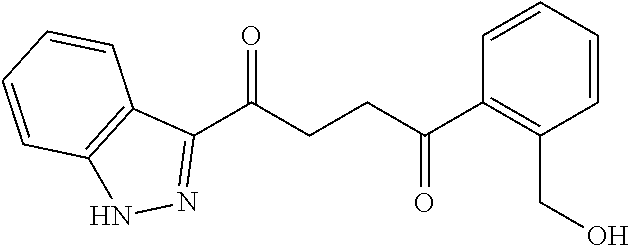
C00814

C00815

C00816

C00817

C00818

C00819
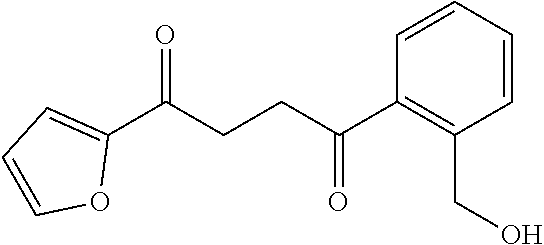
C00820

C00821

C00822
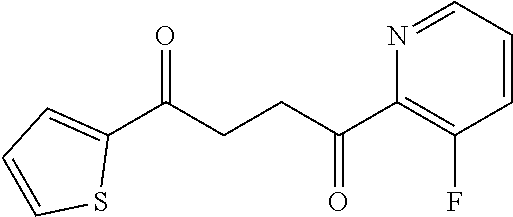
C00823
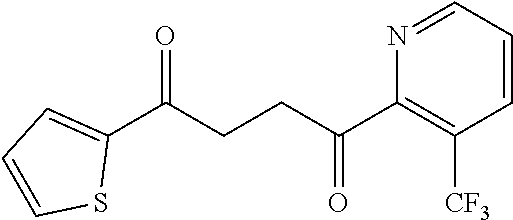
C00824

C00825
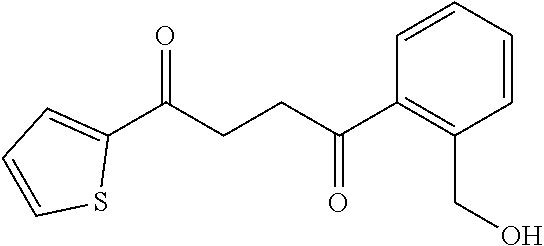
C00826

C00827

C00828

C00829

C00830

C00831

C00832
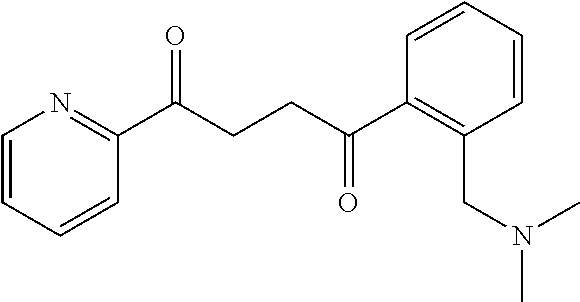
C00833
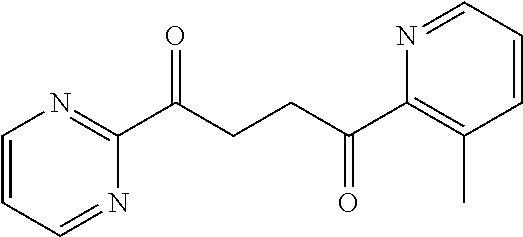
C00834
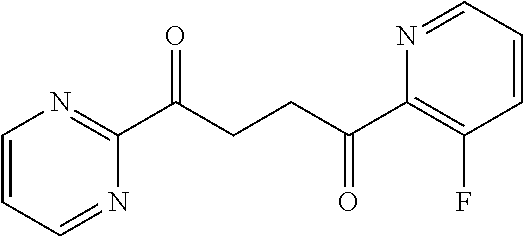
C00835

C00836
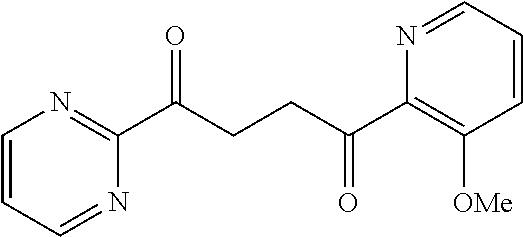
C00837

C00838

C00839

C00840

C00841

C00842

C00843
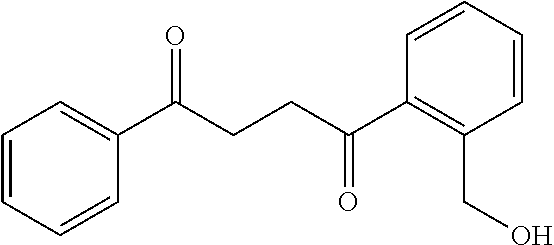
C00844
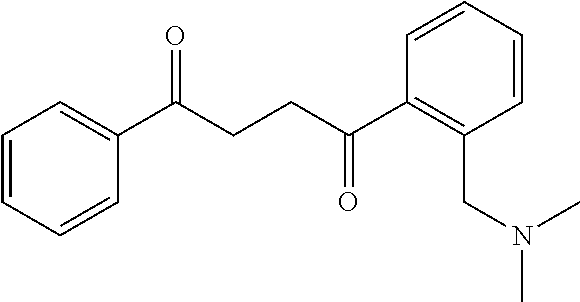
C00845

C00846
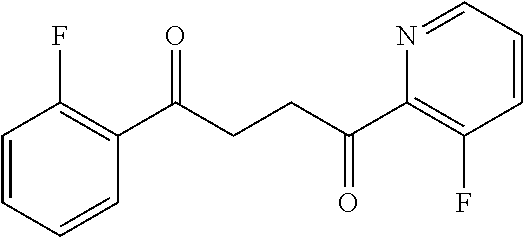
C00847
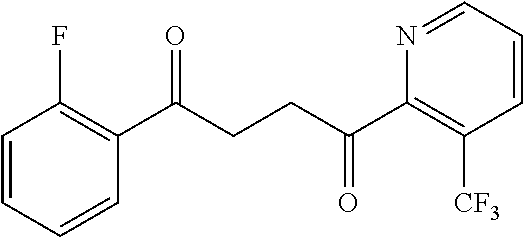
C00848
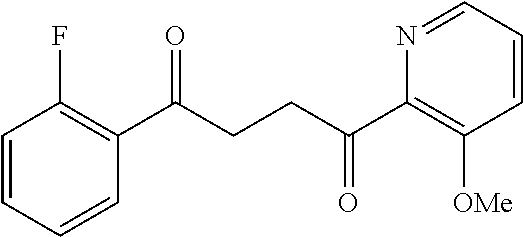
C00849

C00850
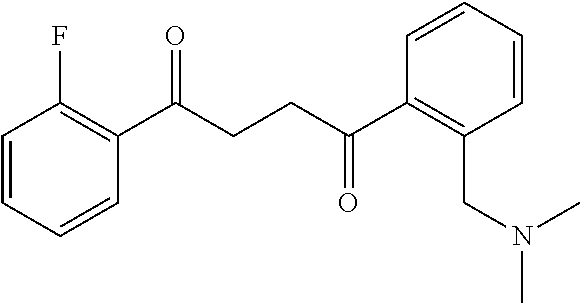
C00851

C00852
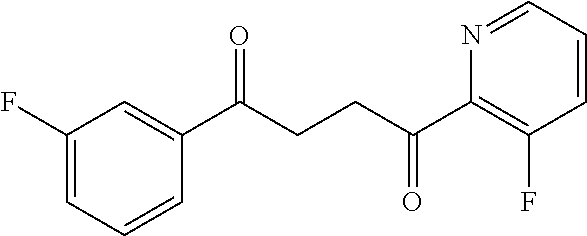
C00853
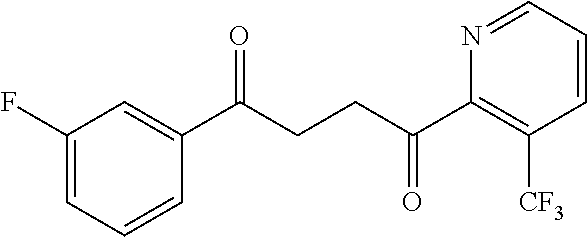
C00854
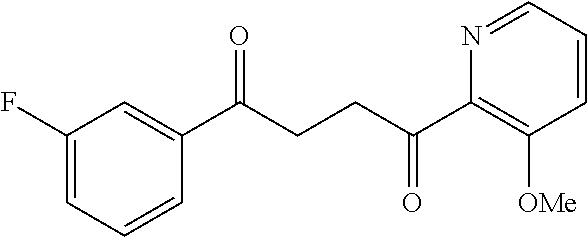
C00855

C00856

C00857
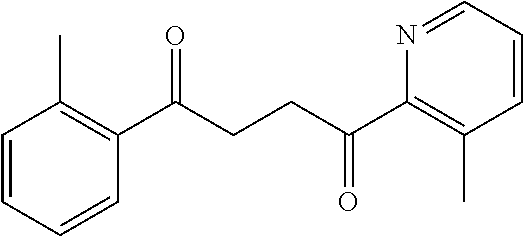
C00858

C00859

C00860

C00861
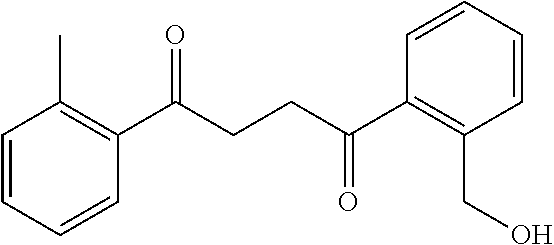
C00862

C00863

C00864
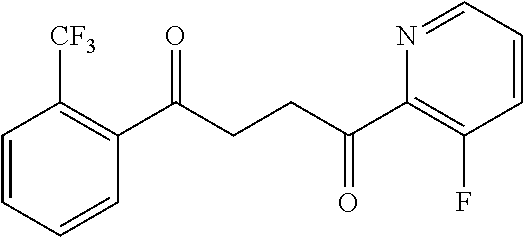
C00865
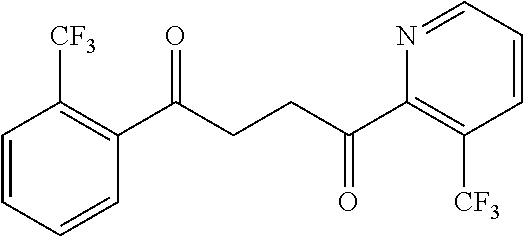
C00866

C00867

C00868
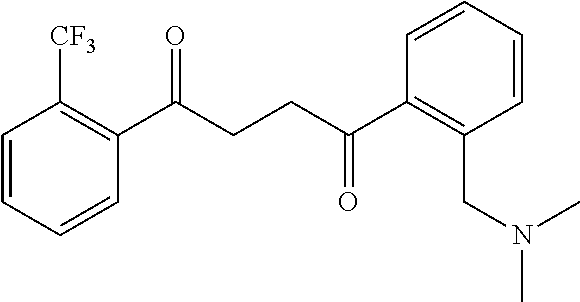
C00869

C00870
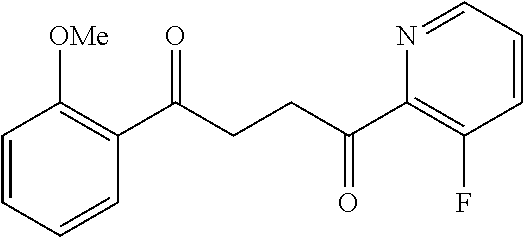
C00871
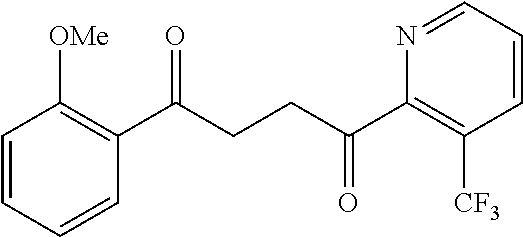
C00872

C00873
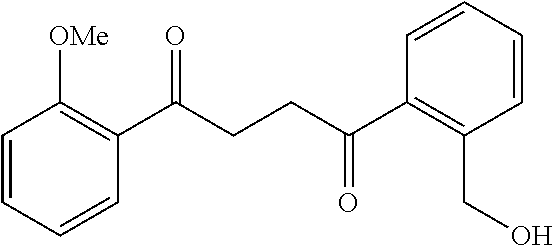
C00874
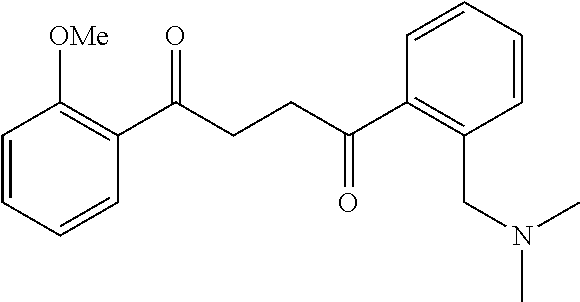
C00875
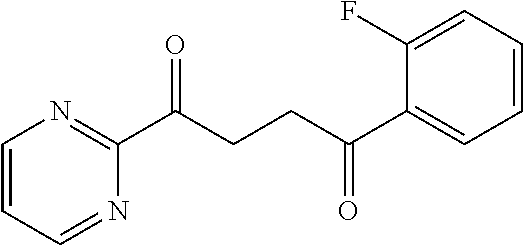
C00876

C00877

C00878

C00879
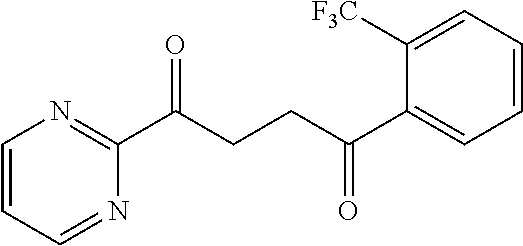
C00880
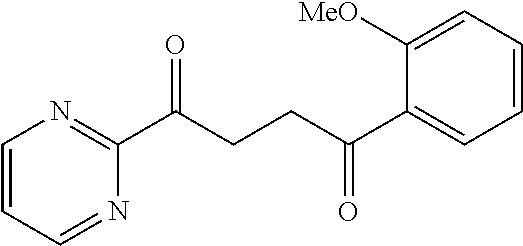
C00881

C00882

C00883

C00884

C00885

C00886

C00887

C00888
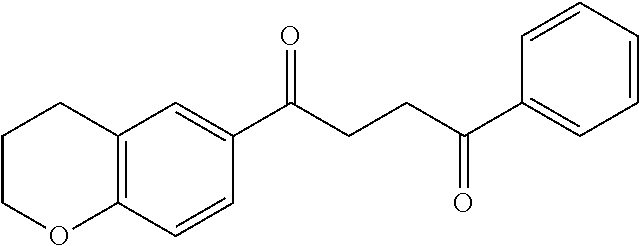
C00889

C00890
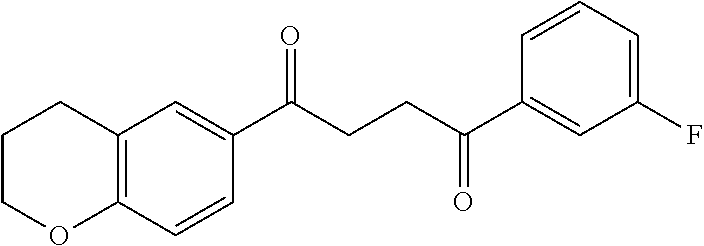
C00891
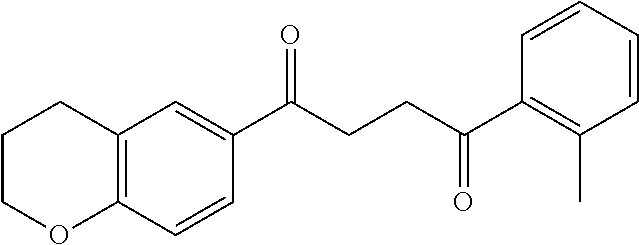
C00892

C00893
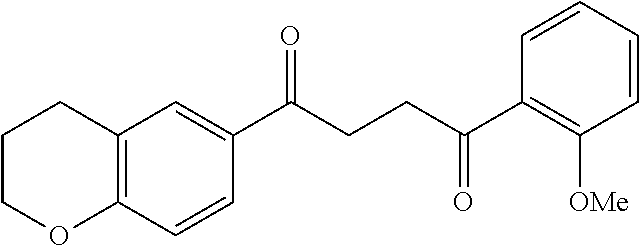
C00894

C00895
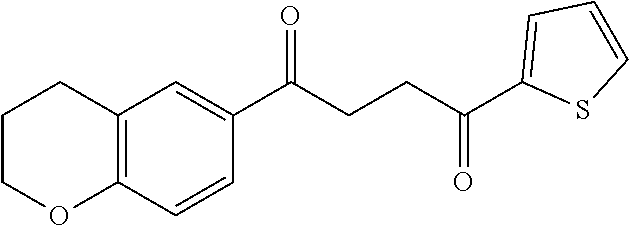
C00896
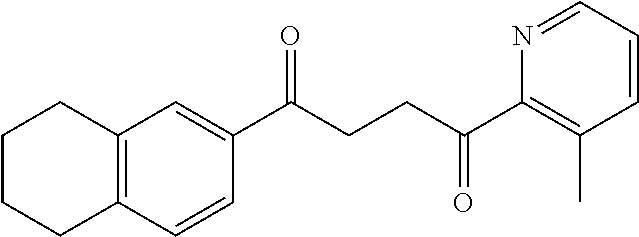
C00897
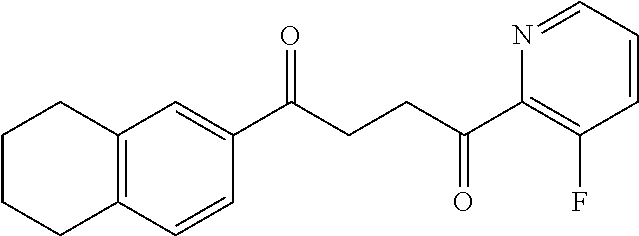
C00898
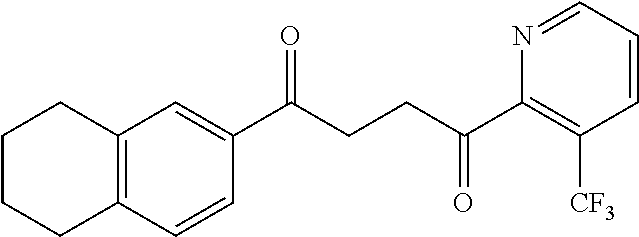
C00899

C00900
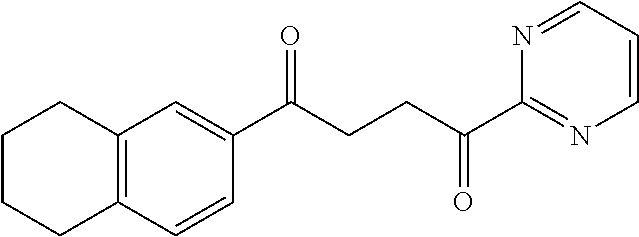
C00901
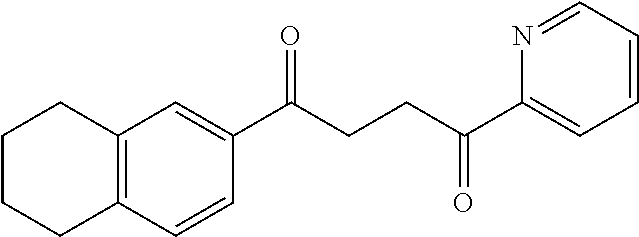
C00902
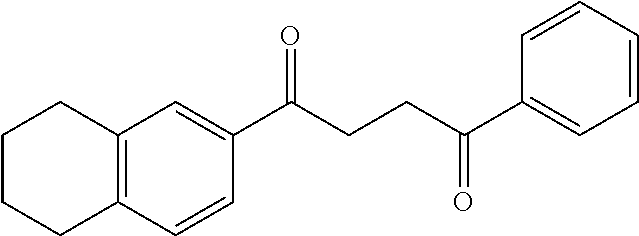
C00903
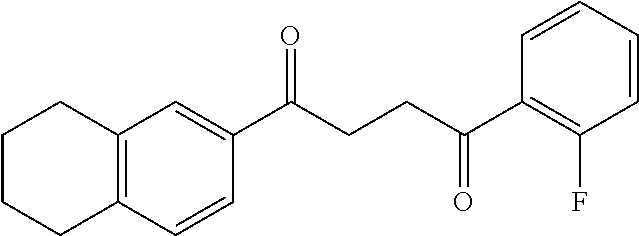
C00904
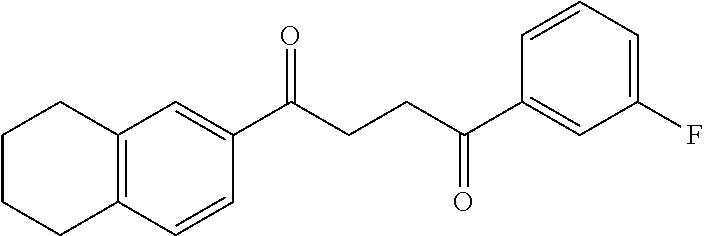
C00905
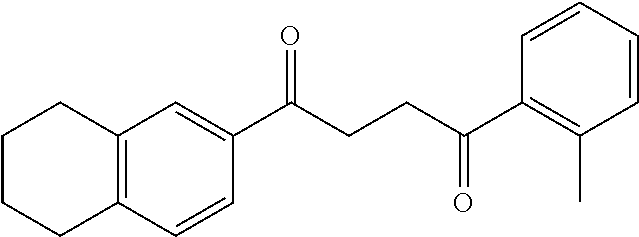
C00906
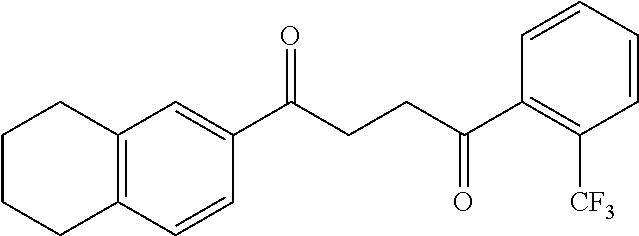
C00907

C00908
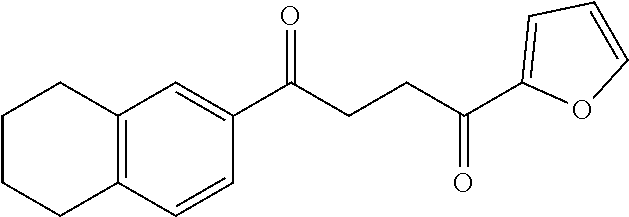
C00909

C00910

C00911
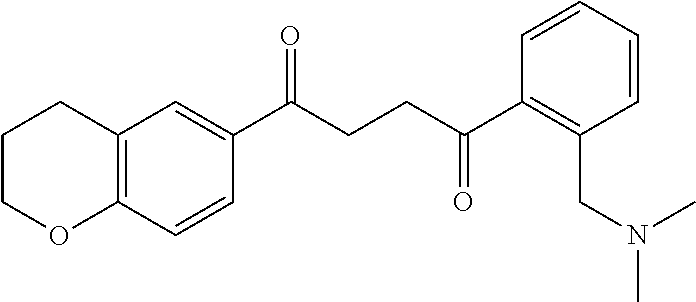
C00912

C00913

C00914

C00915

C00916

C00917
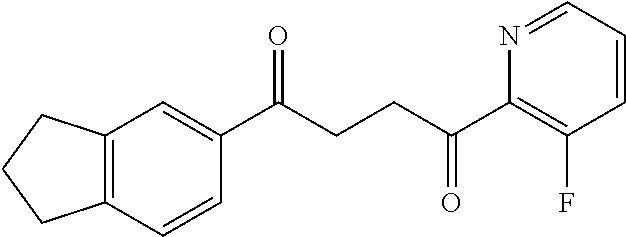
C00918
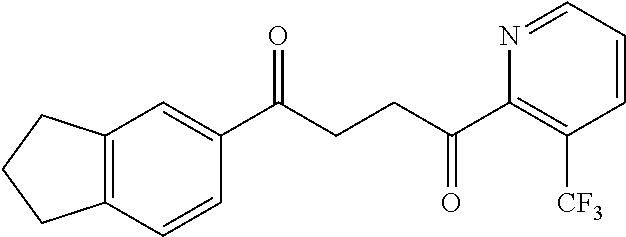
C00919

C00920
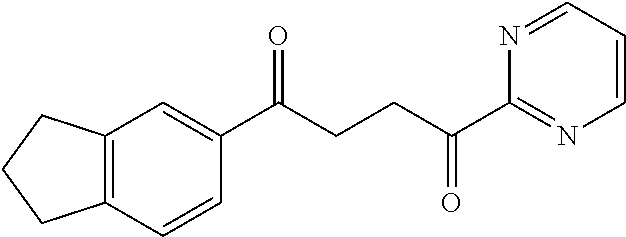
C00921
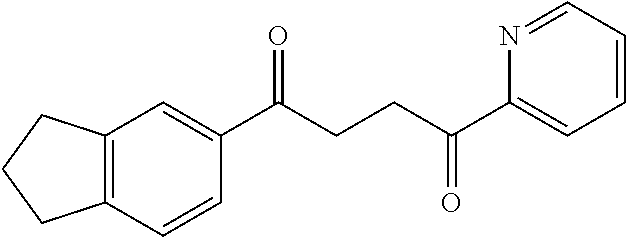
C00922

C00923

C00924

C00925
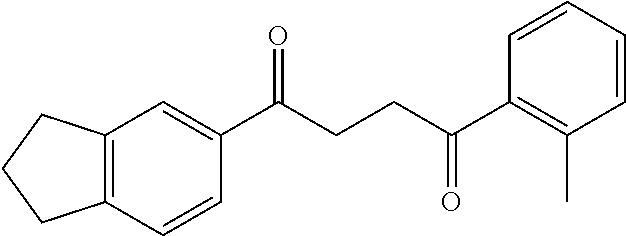
C00926

C00927
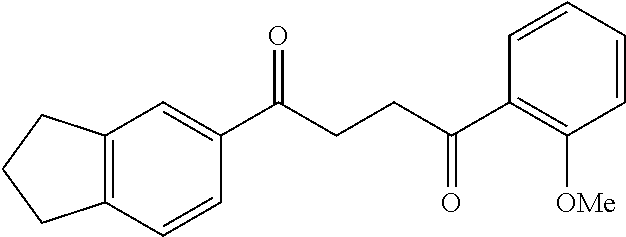
C00928

C00929

C00930
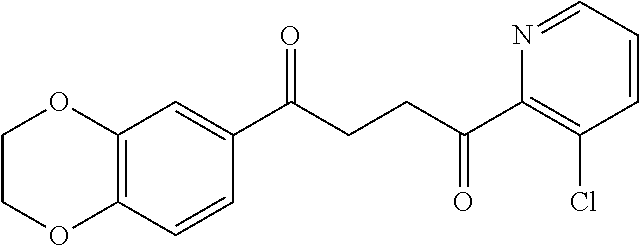
C00931

C00932
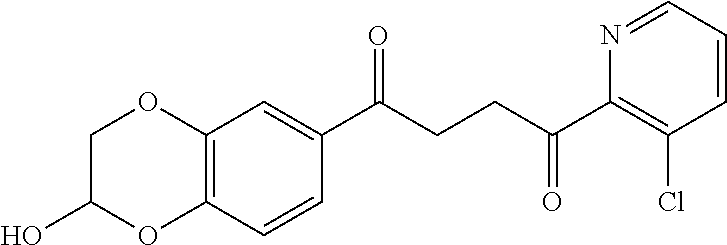
C00933
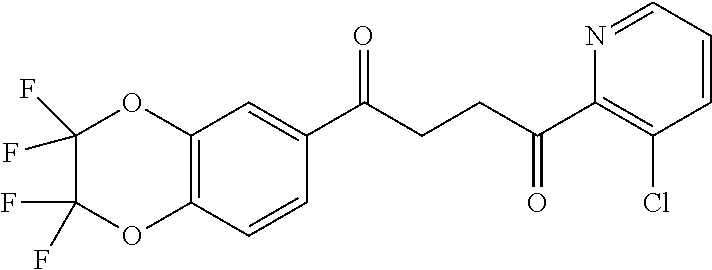
C00934

C00935

C00936
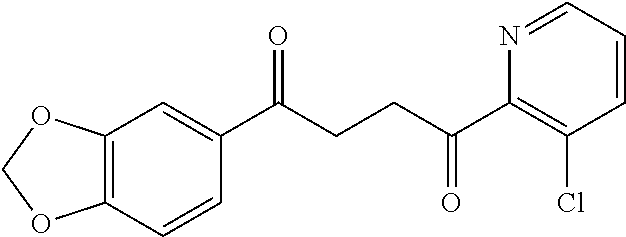
C00937

C00938

C00939
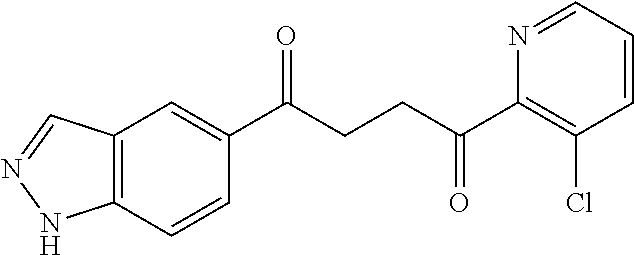
C00940

C00941
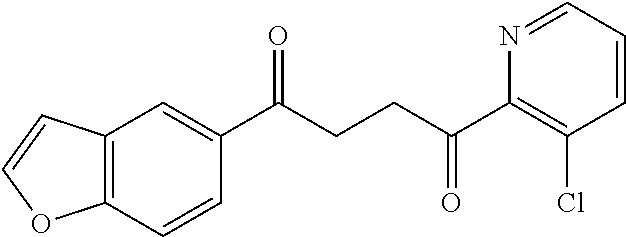
C00942

C00943
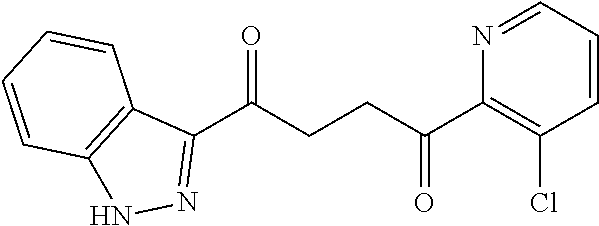
C00944

C00945

C00946
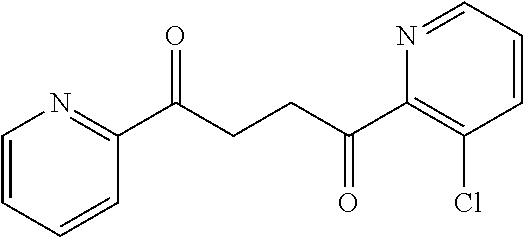
C00947

C00948
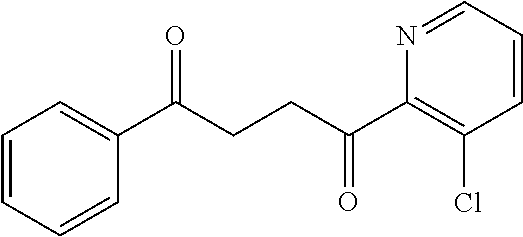
C00949

C00950
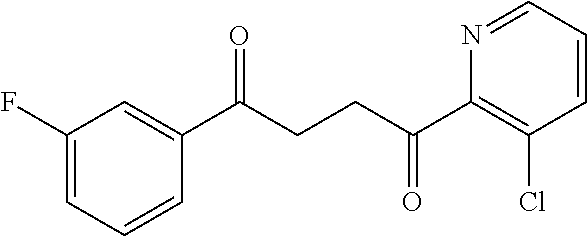
C00951
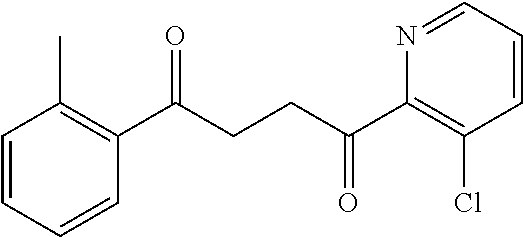
C00952
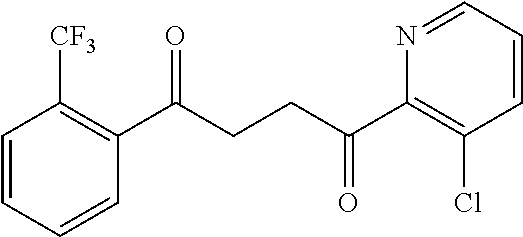
C00953

C00954
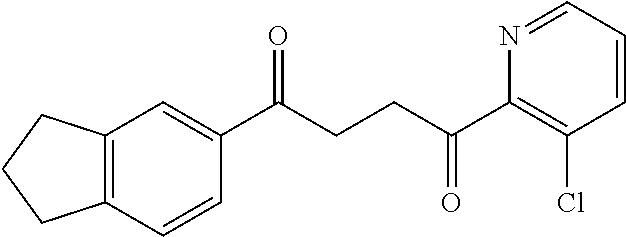
C00955

C00956

C00957

C00958

C00959
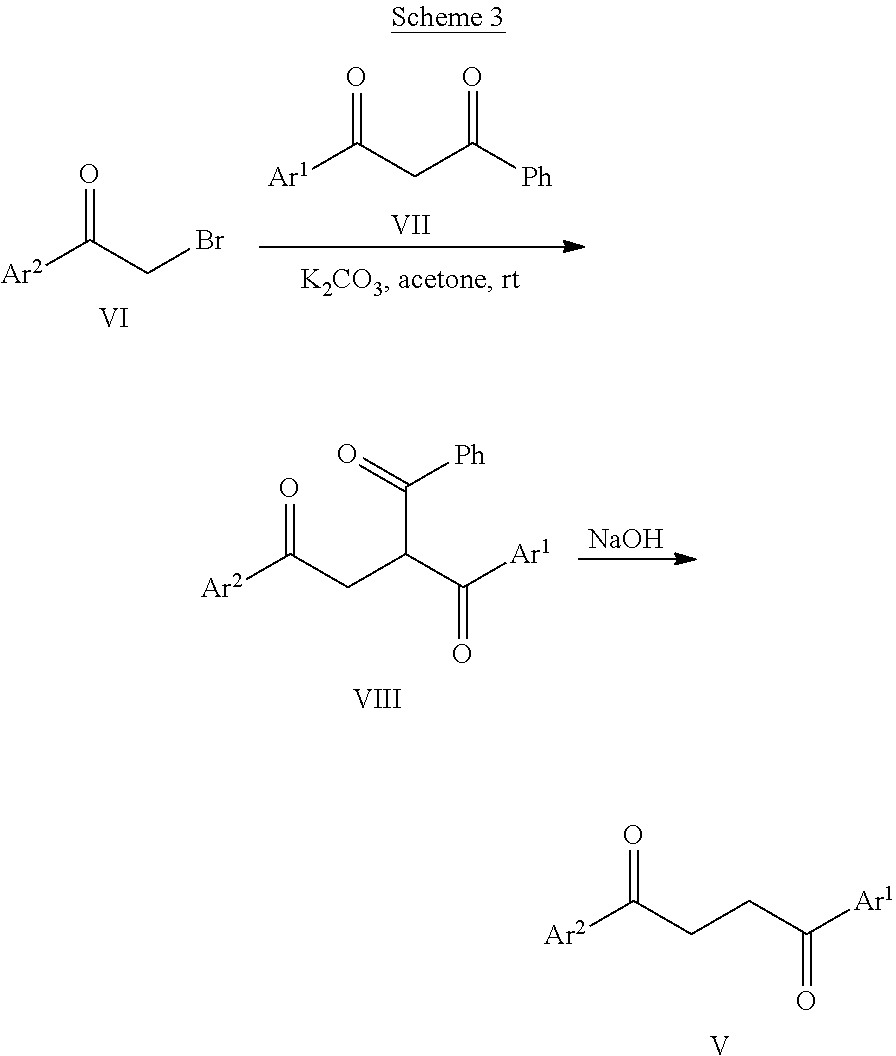
C00960
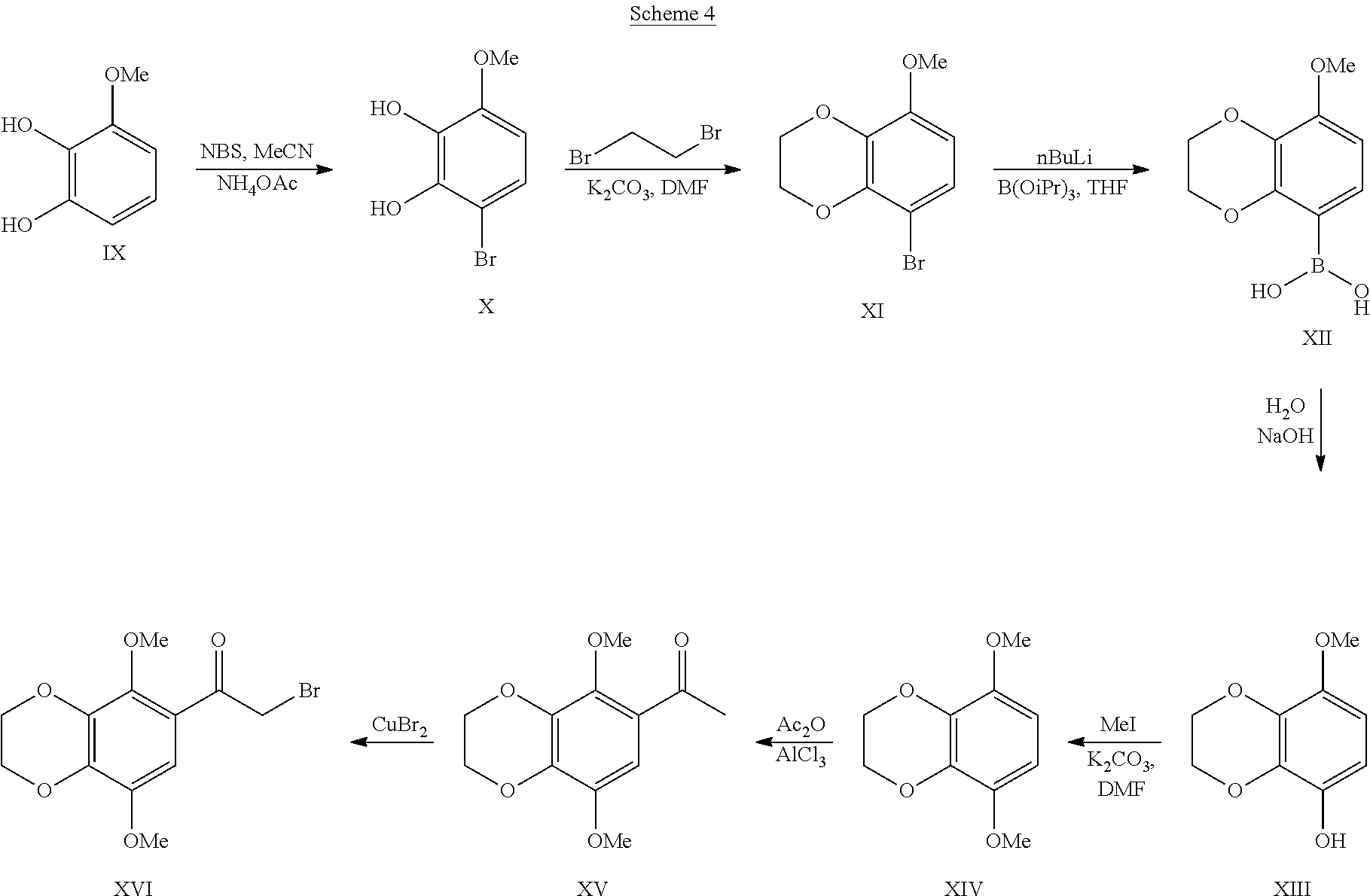
C00961

C00962

C00963
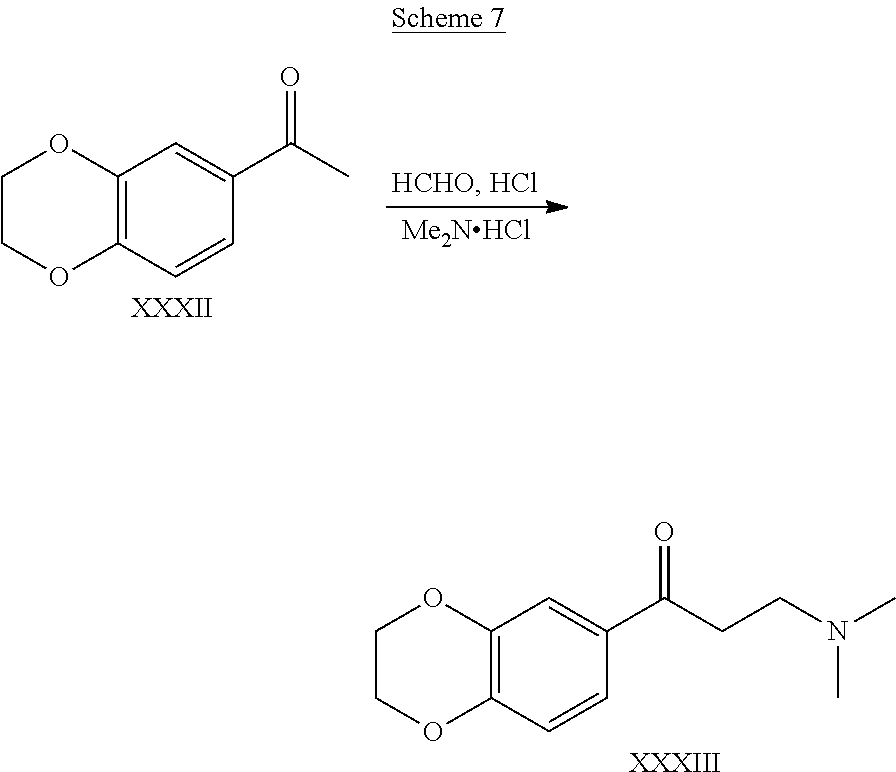
C00964

C00965

C00966
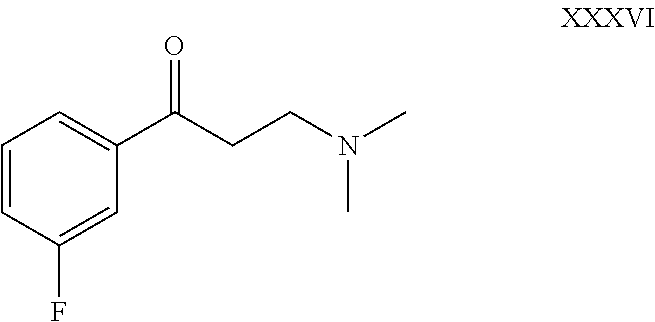
C00967
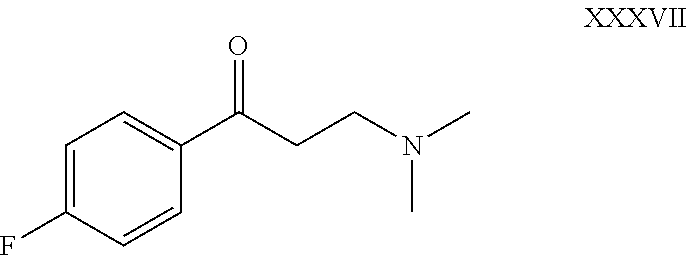
C00968

C00969

C00970
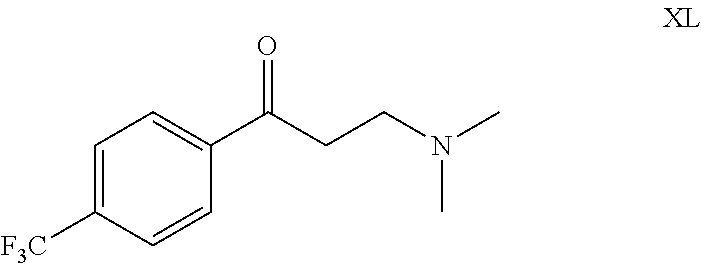
C00971

C00972

C00973
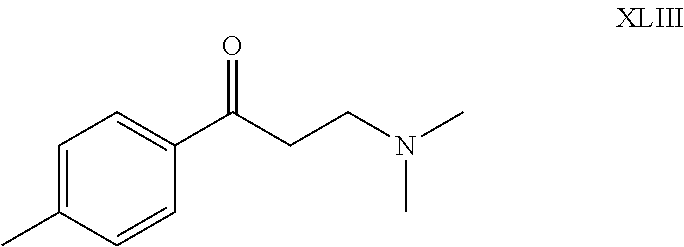
C00974

C00975
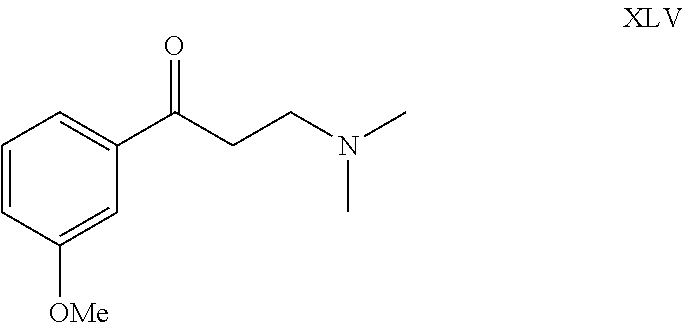
C00976

C00977

C00978

C00979

C00980
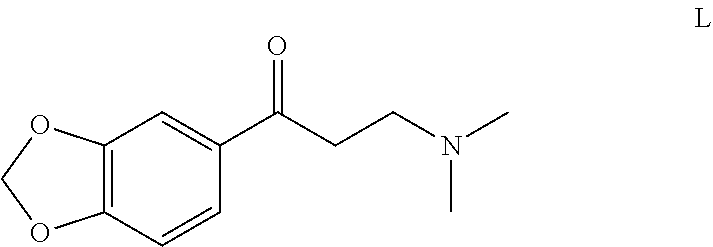
C00981

C00982

C00983

C00984

C00985

C00986

C00987
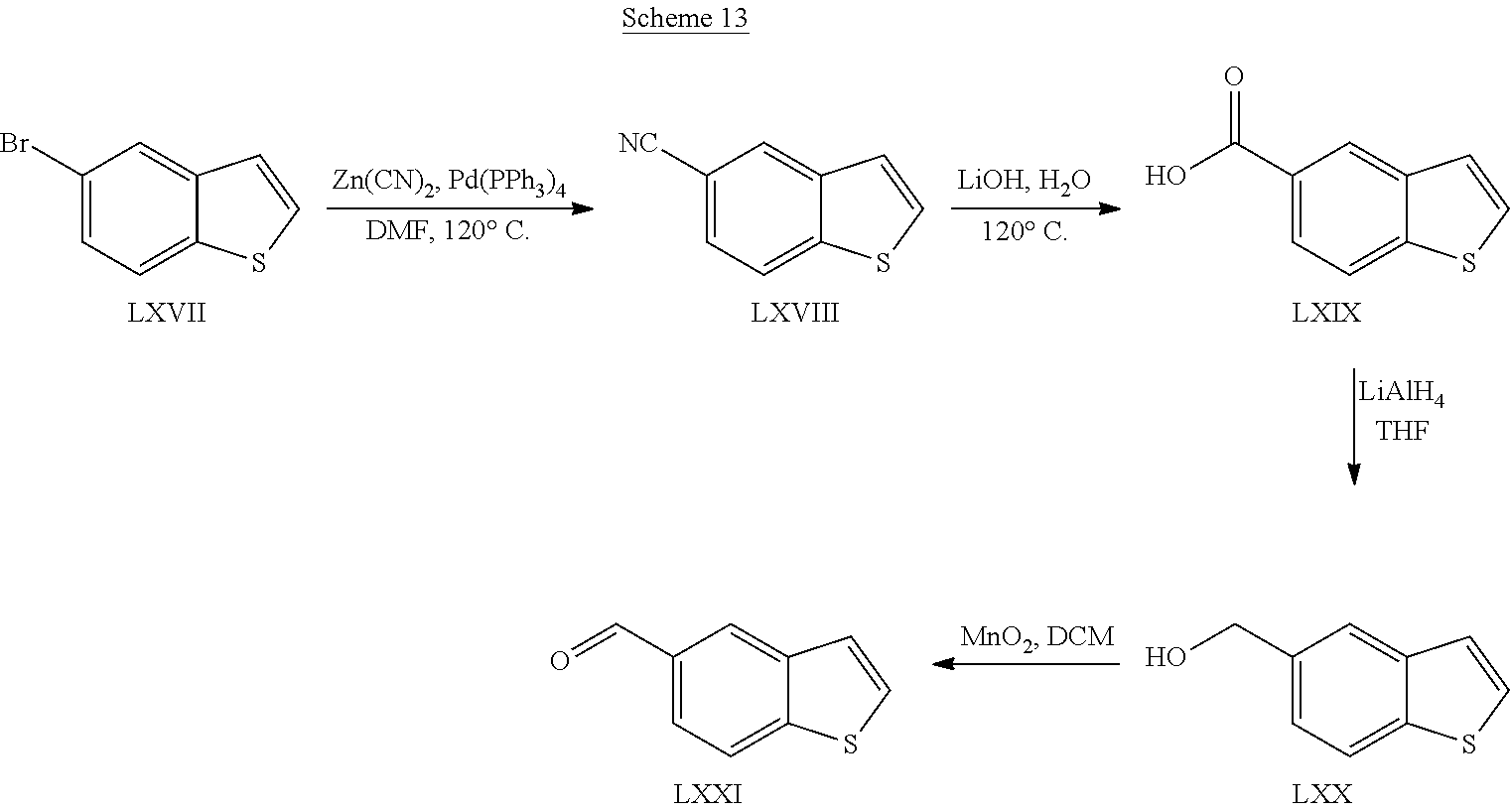
C00988

C00989

C00990

C00991

C00992

C00993

C00994

C00995
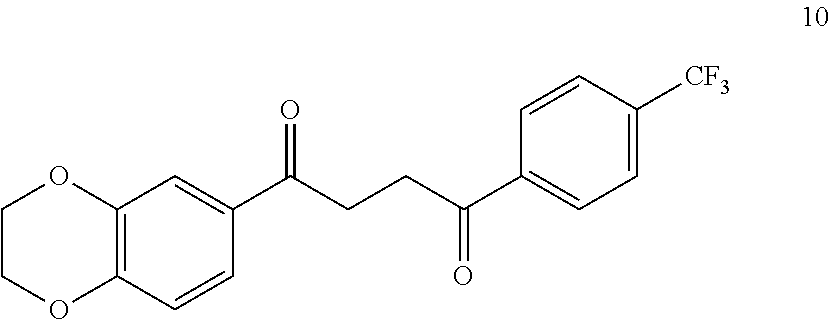
C00996
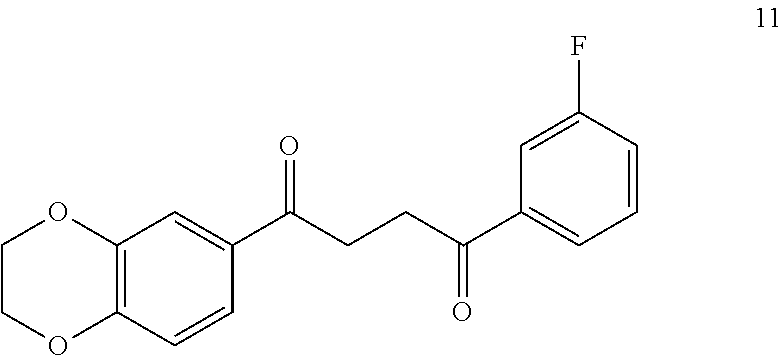
C00997
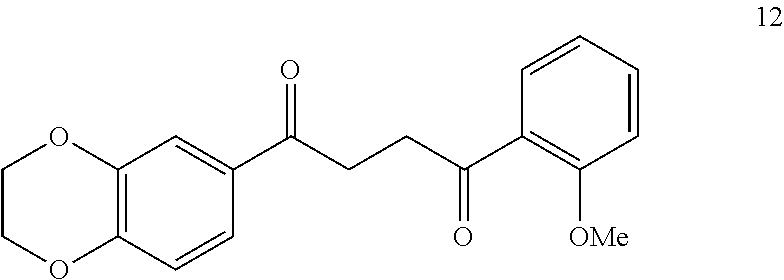
C00998
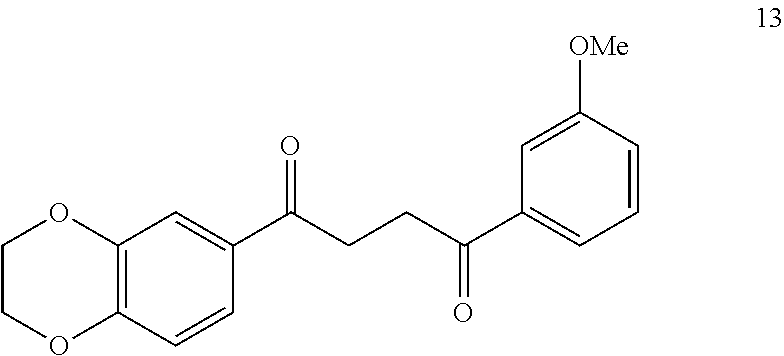
C00999
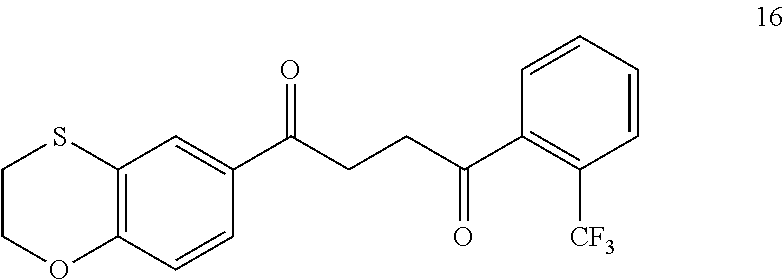
C01000

C01001
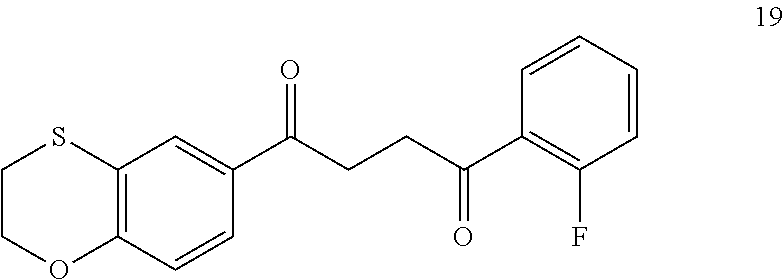
C01002

C01003

C01004

C01005
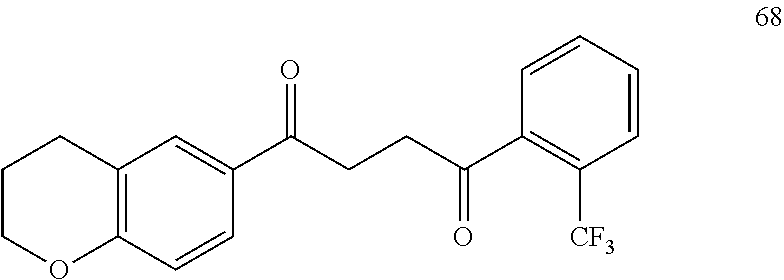
C01006
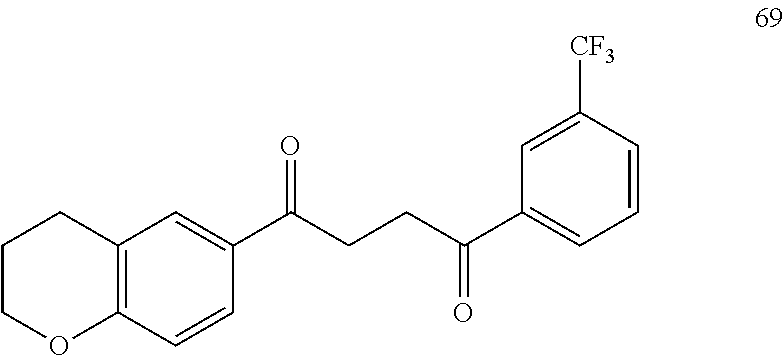
C01007

C01008
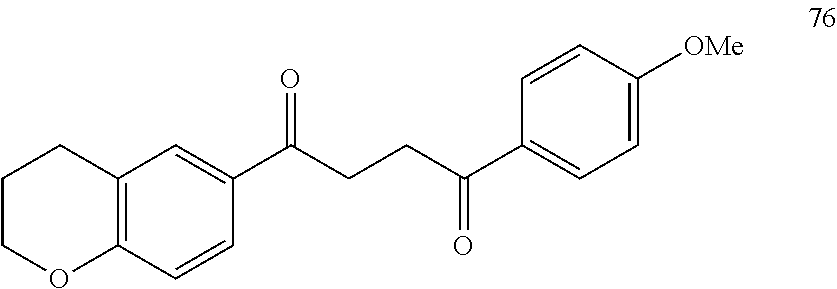
C01009

C01010
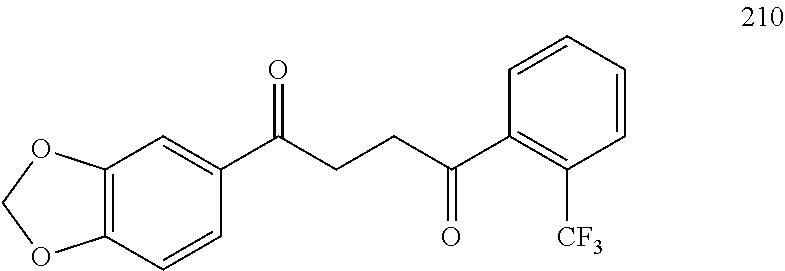
C01011

C01012
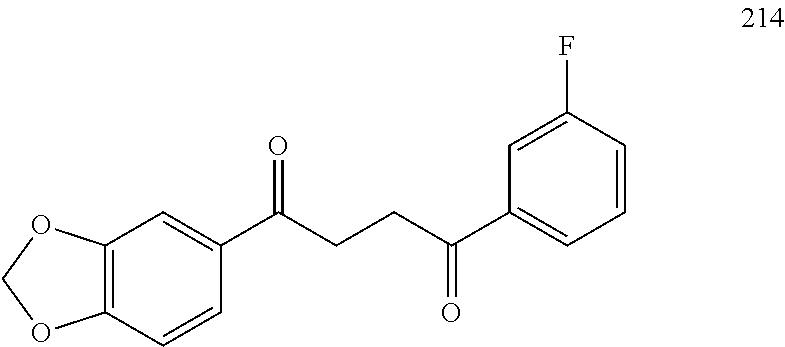
C01013

C01014
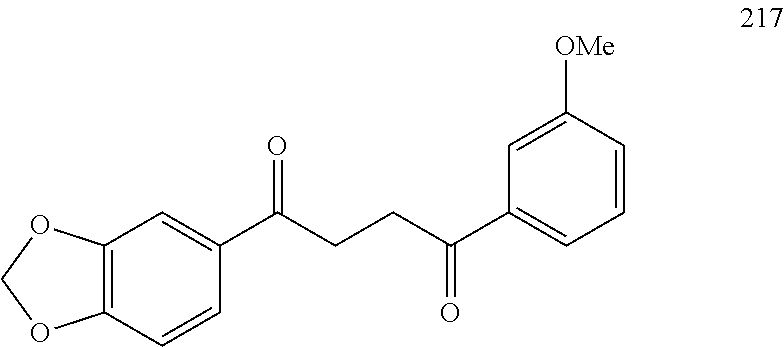
C01015

C01016

C01017

C01018
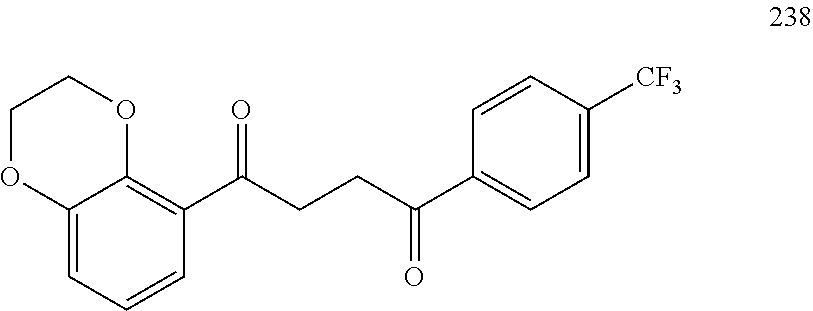
C01019
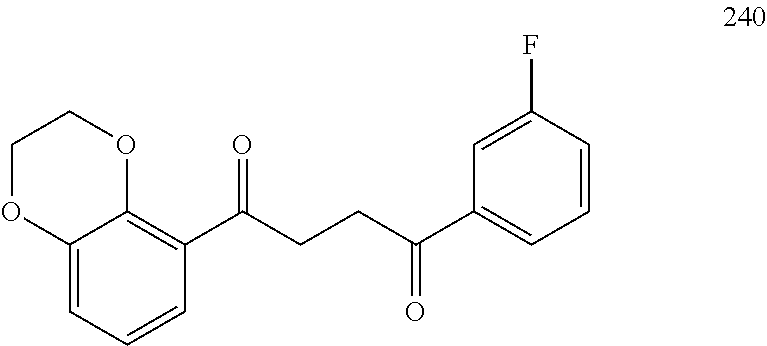
C01020

C01021

C01022

C01023
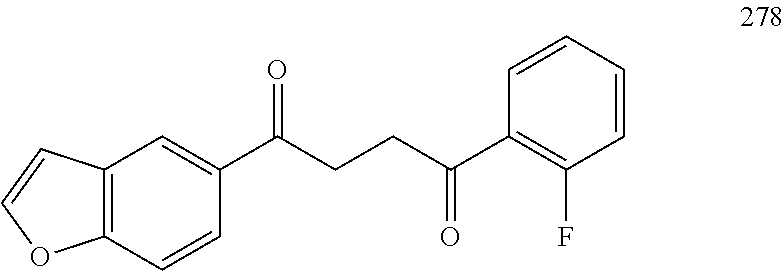
C01024
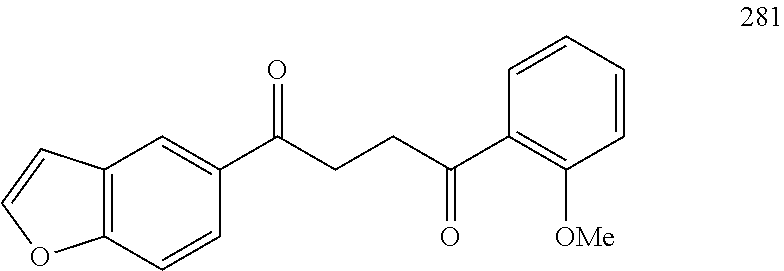
C01025
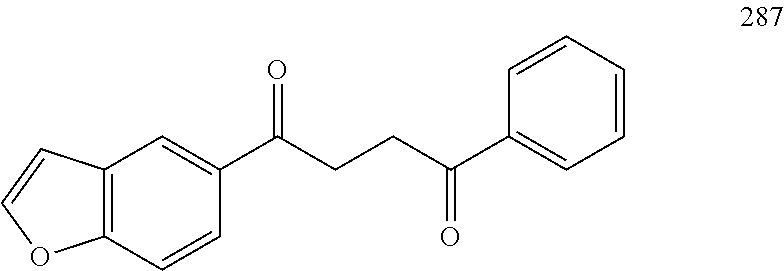
C01026
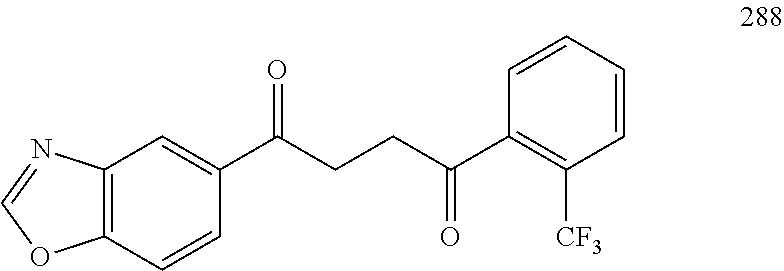
C01027
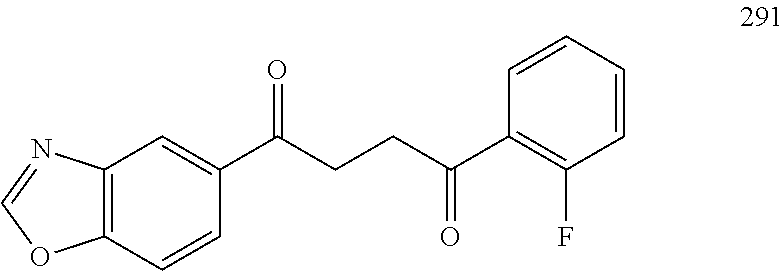
C01028

C01029

C01030

C01031

C01032
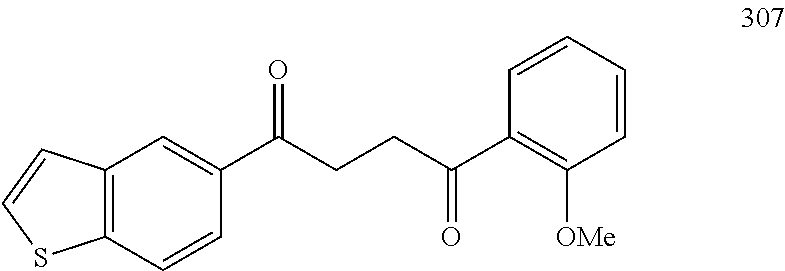
C01033

C01034
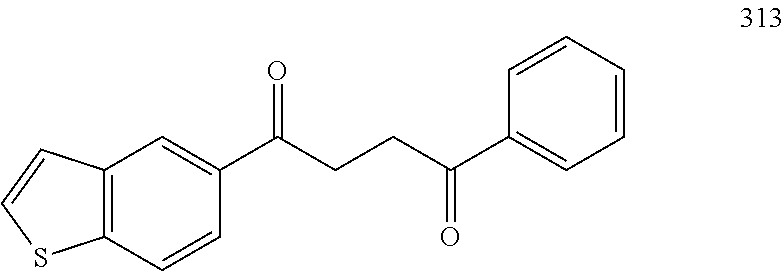
C01035
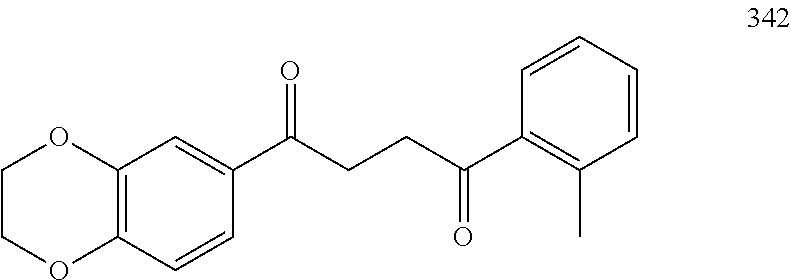
C01036

C01037

C01038

C01039

C01040

C01041

C01042

C01043

C01044

C01045

C01046
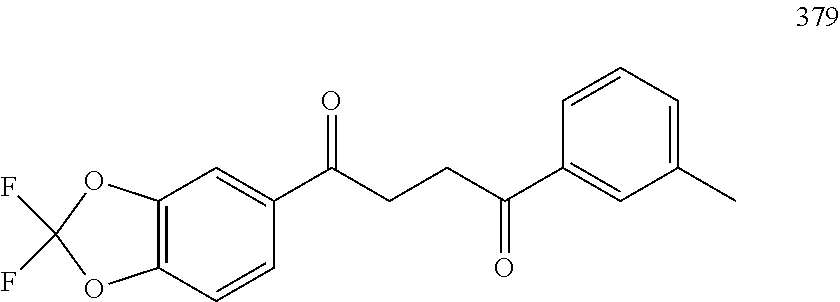
C01047

C01048

C01049
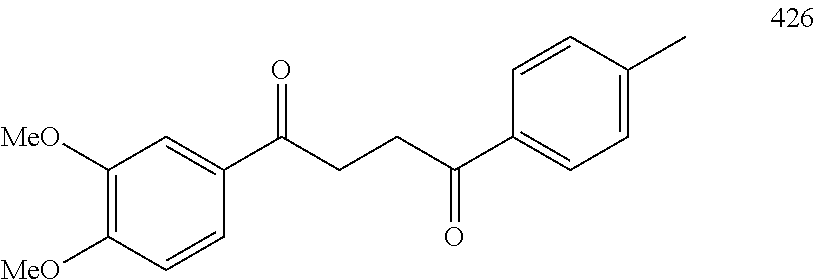
C01050
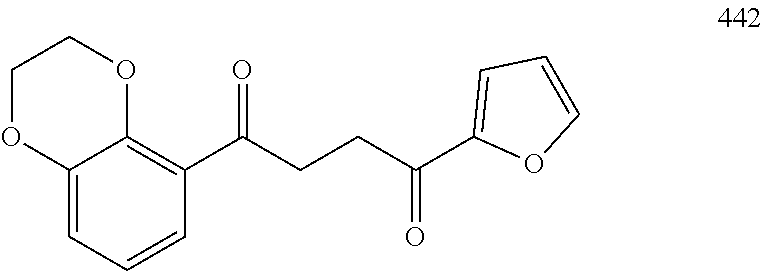
C01051
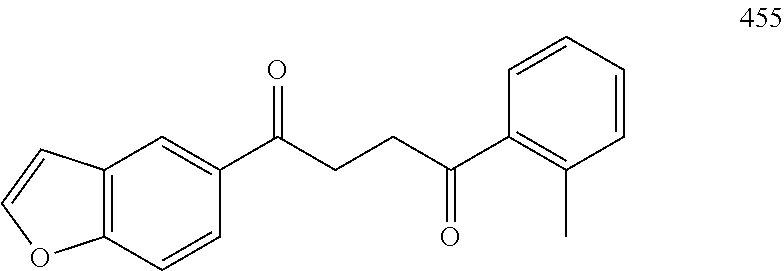
C01052

C01053

C01054

C01055
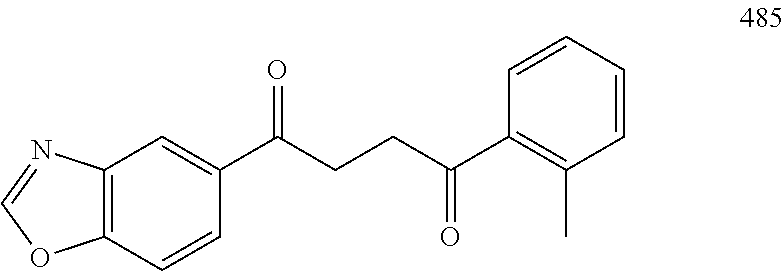
C01056

C01057

C01058
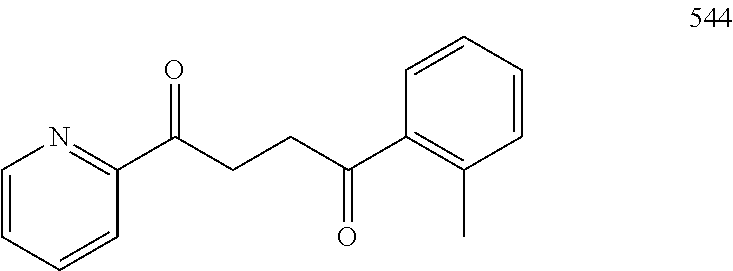
C01059

C01060
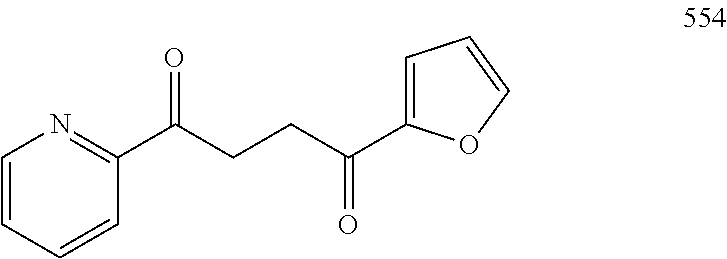
C01061

C01062

C01063

C01064
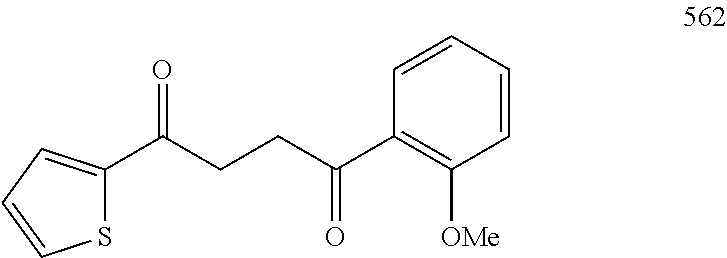
C01065

C01066
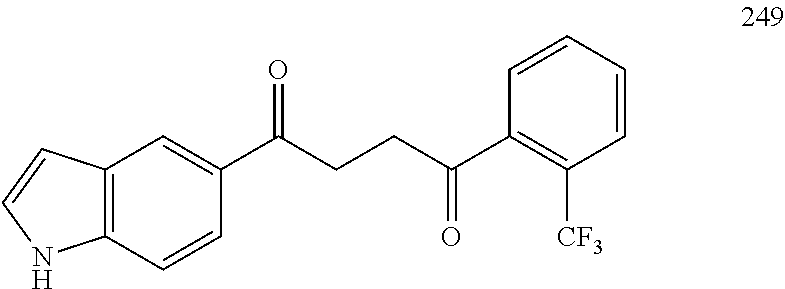
C01067
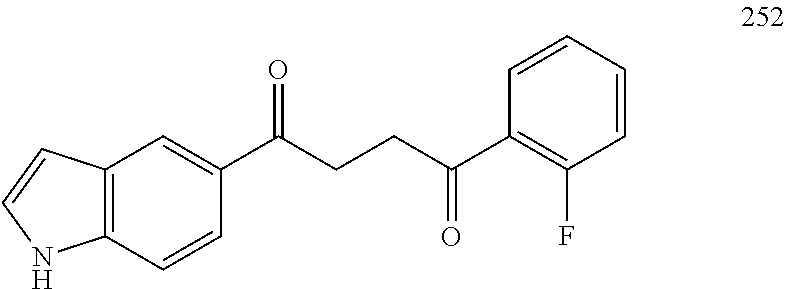
C01068
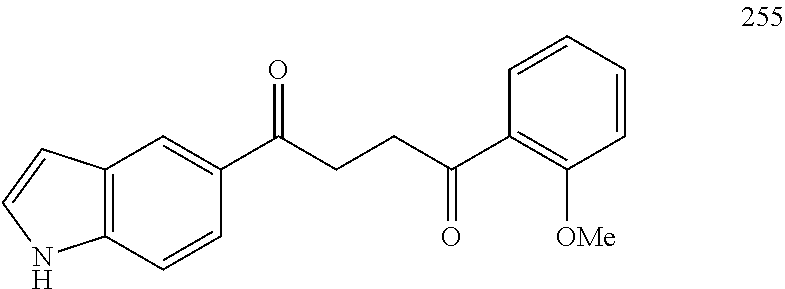
C01069

C01070

C01071

C01072

C01073
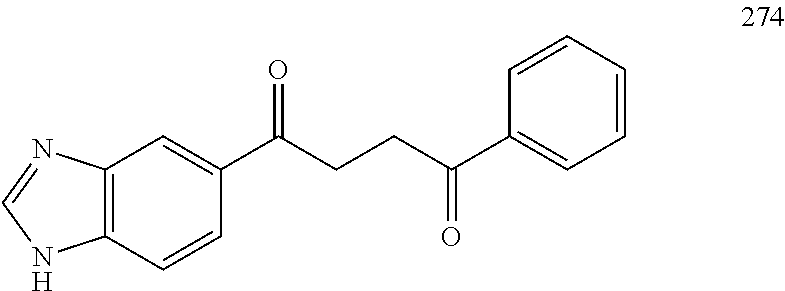
C01074

C01075

C01076
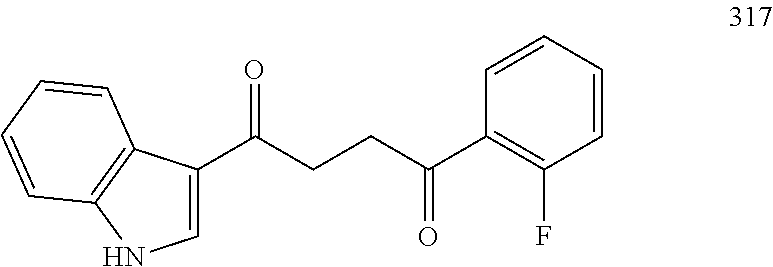
C01077
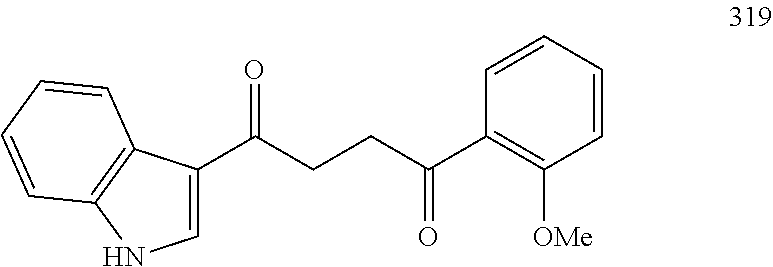
C01078
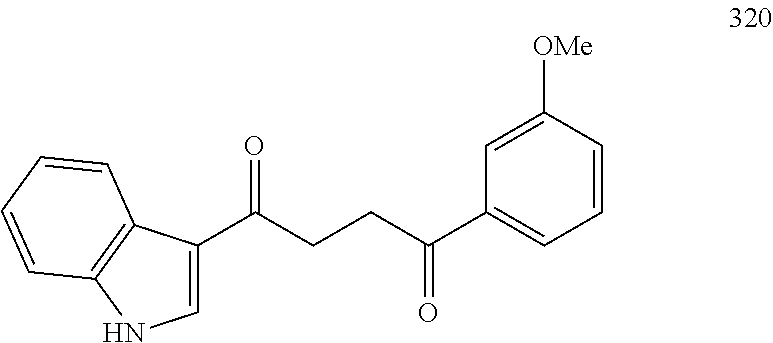
C01079

C01080

C01081
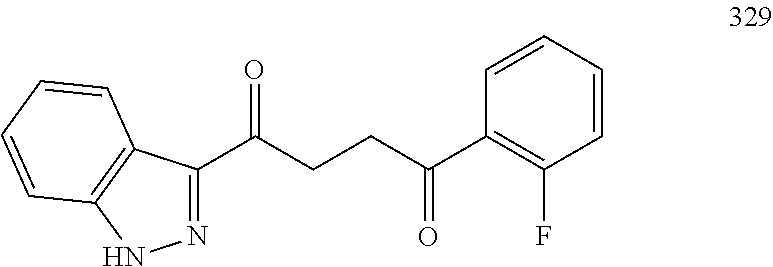
C01082
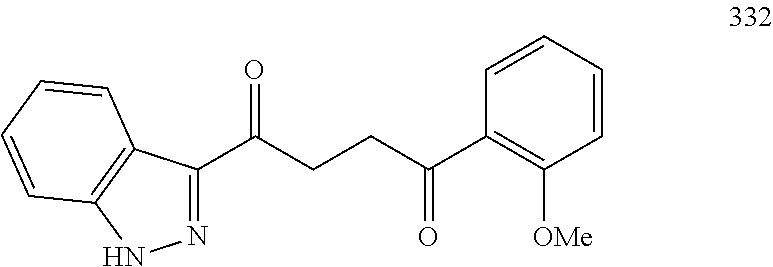
C01083
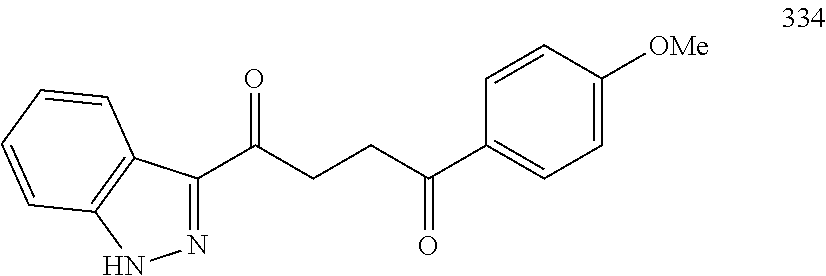
C01084
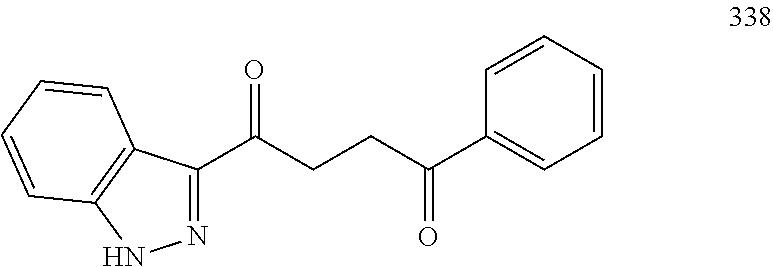
C01085
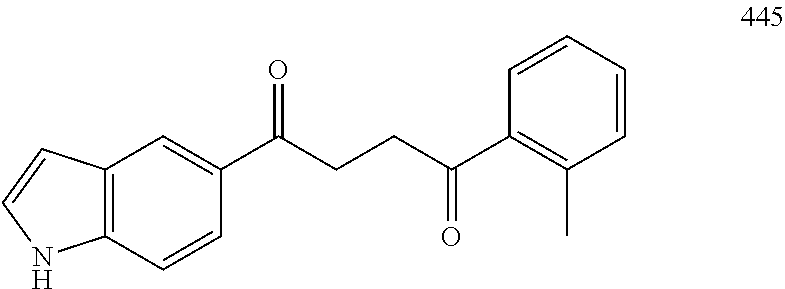
C01086
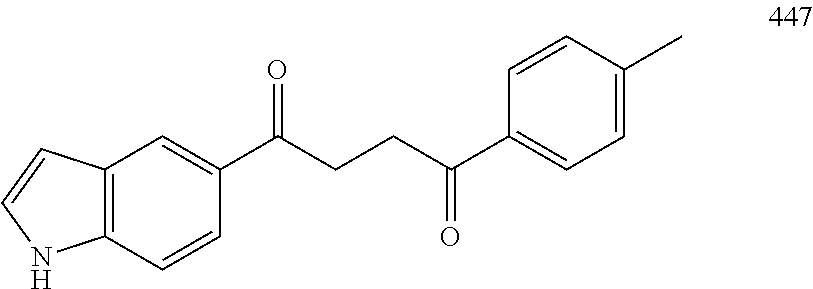
C01087
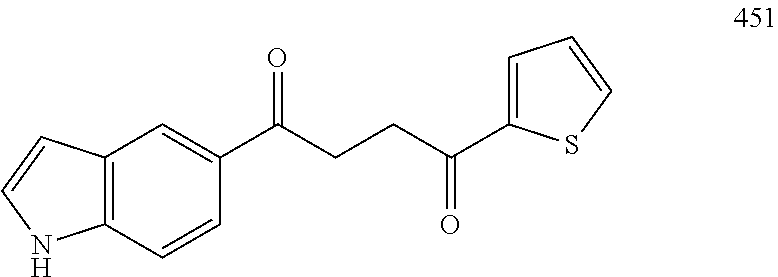
C01088
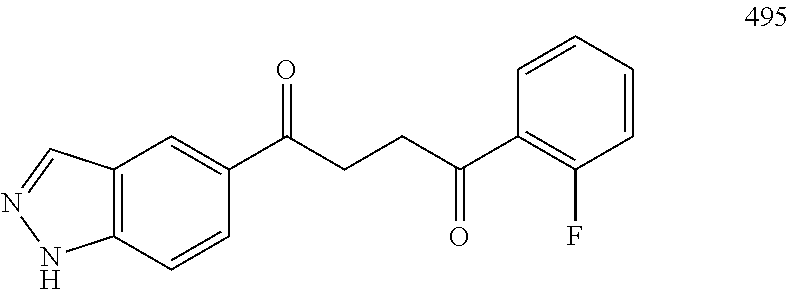
C01089

C01090

C01091

C01092

C01093
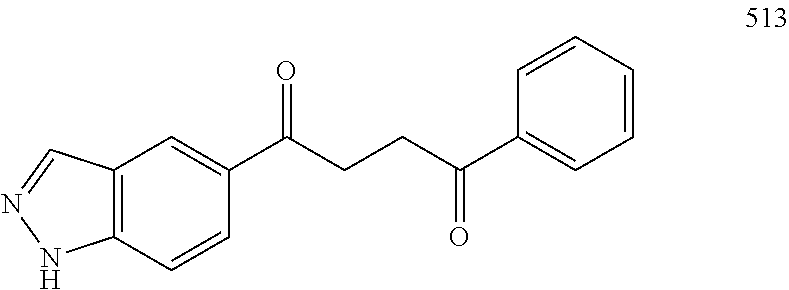
C01094
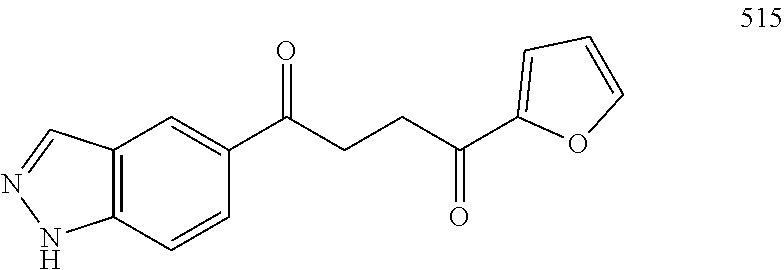
C01095

C01096

C01097
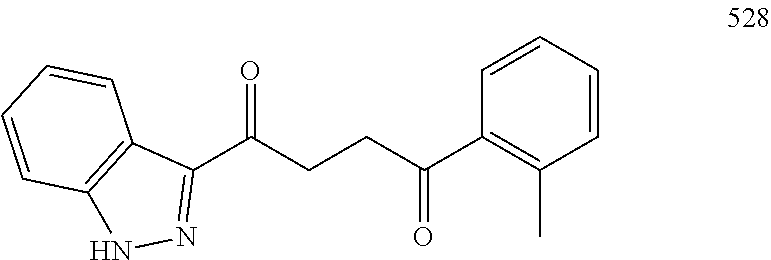
C01098

C01099

C01100
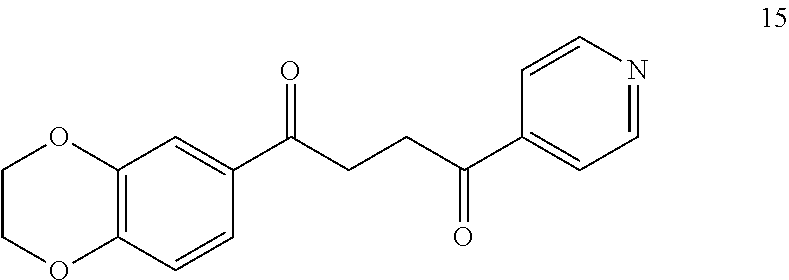
C01101

C01102
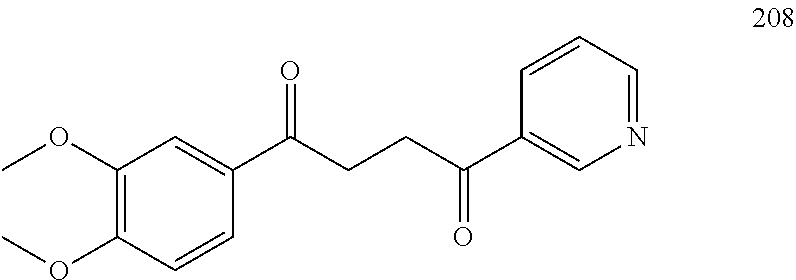
C01103

C01104
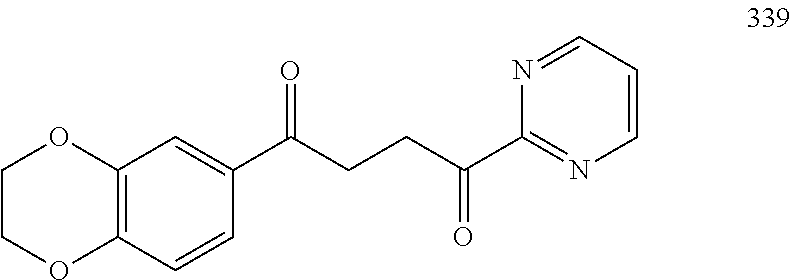
C01105
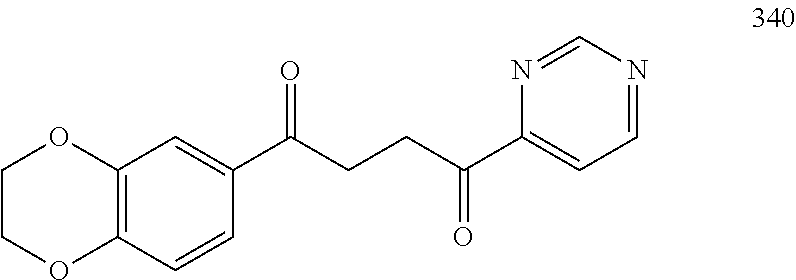
C01106

C01107

C01108

C01109

C01110
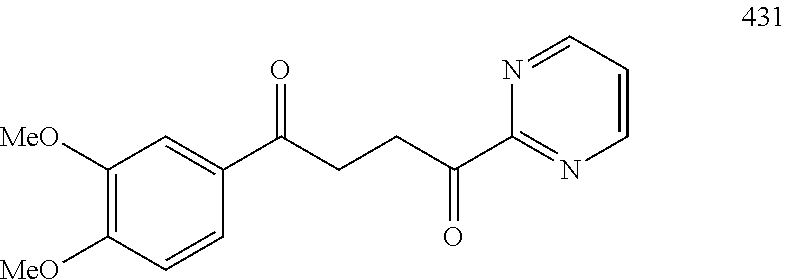
C01111
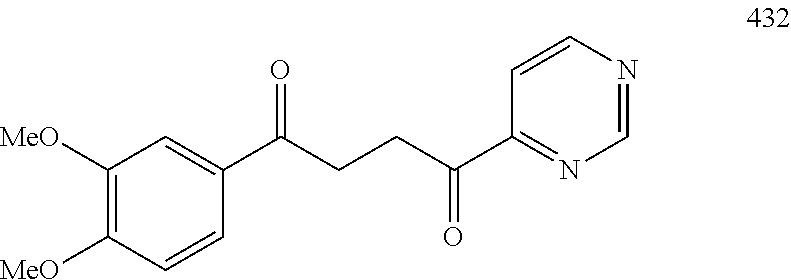
C01112

C01113
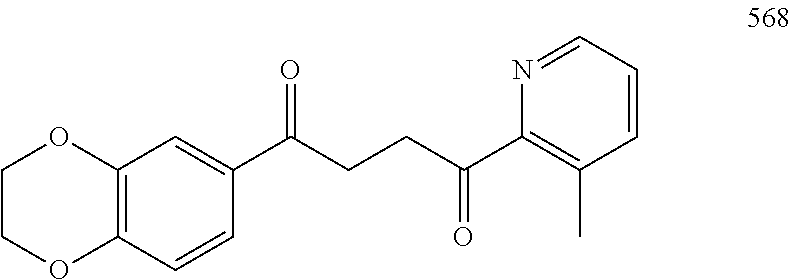
C01114

C01115

C01116

C01117

C01118
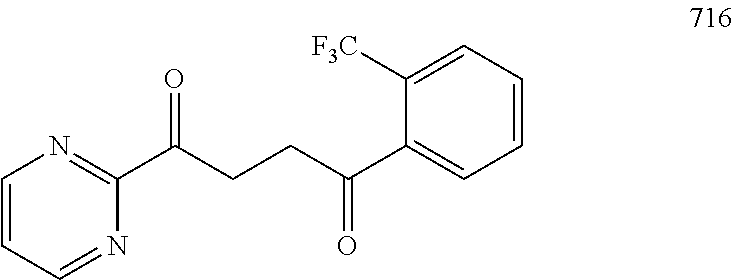
C01119
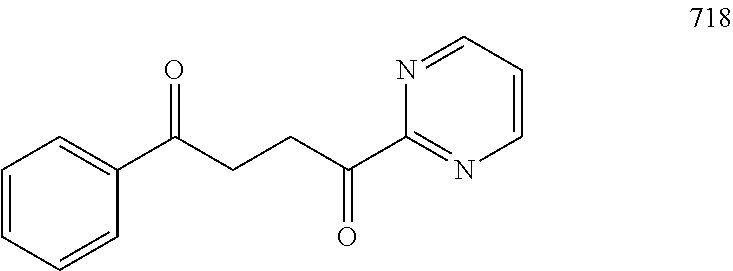
C01120
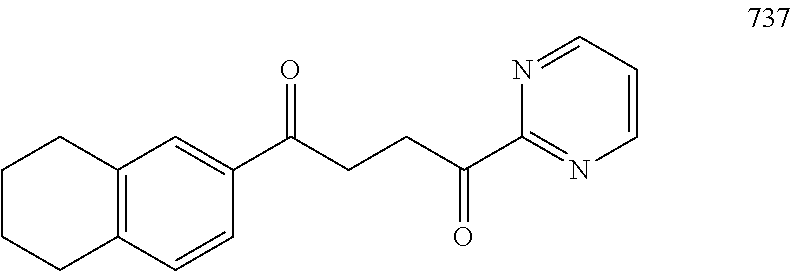
C01121
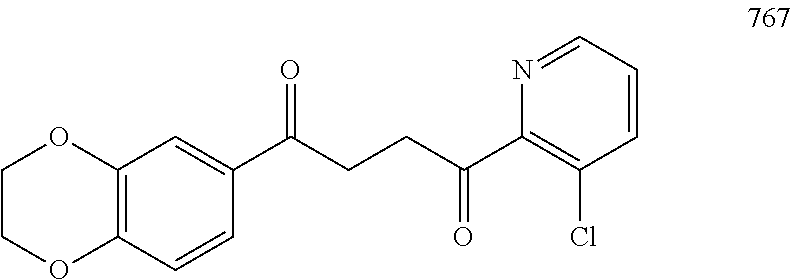
C01122
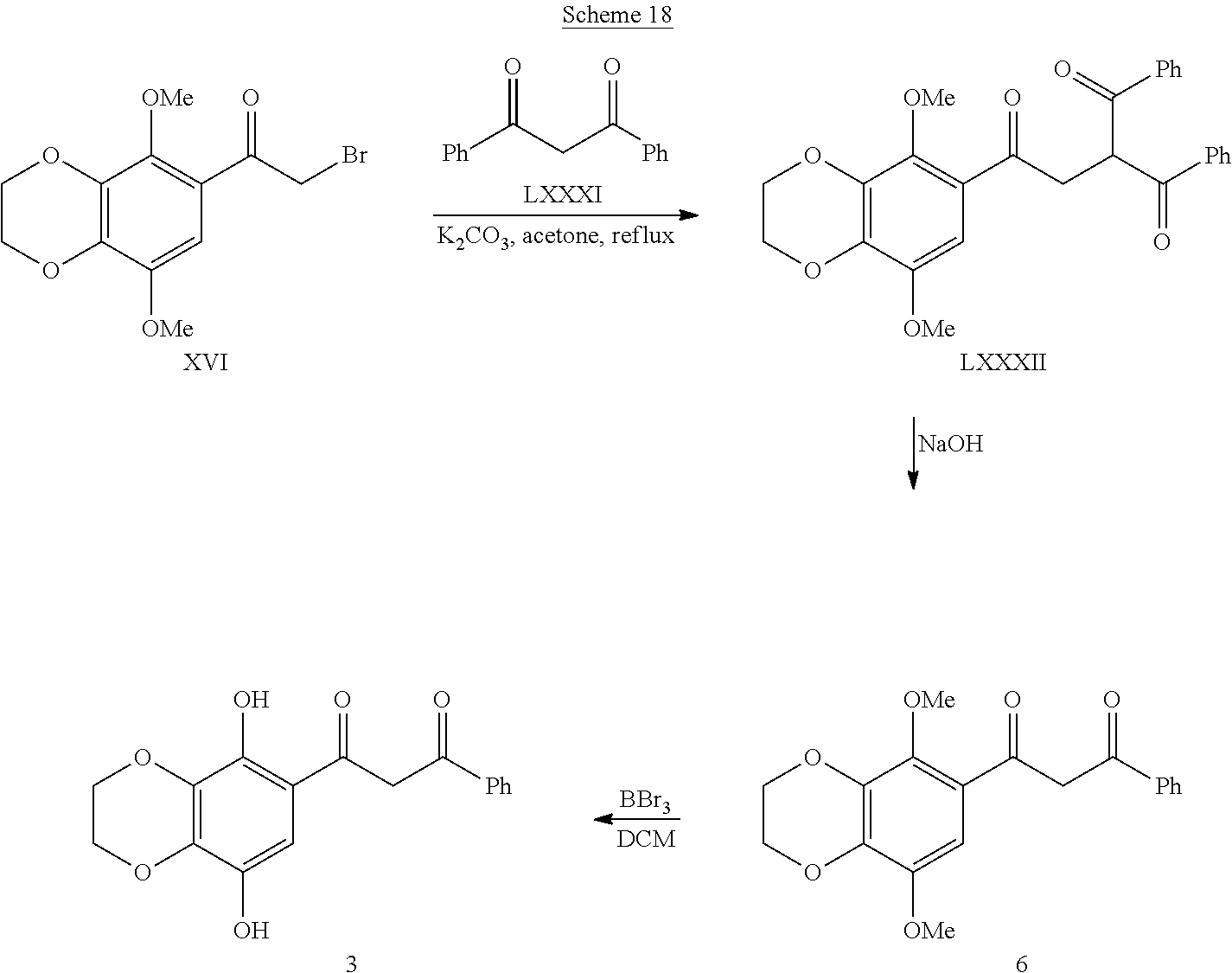
C01123

C01124
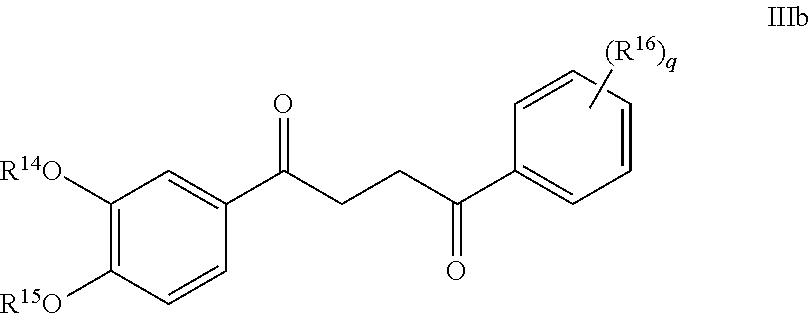
C01125
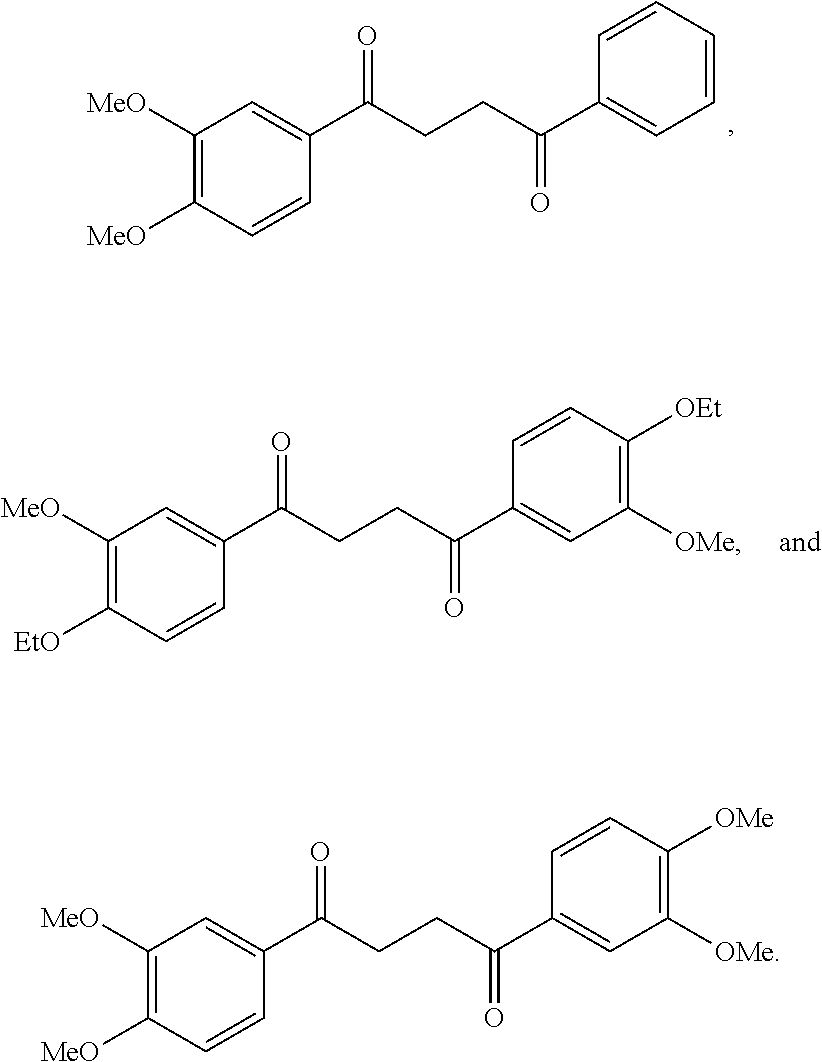
C01126

C01127

XML
uspto.report is an independent third-party trademark research tool that is not affiliated, endorsed, or sponsored by the United States Patent and Trademark Office (USPTO) or any other governmental organization. The information provided by uspto.report is based on publicly available data at the time of writing and is intended for informational purposes only.
While we strive to provide accurate and up-to-date information, we do not guarantee the accuracy, completeness, reliability, or suitability of the information displayed on this site. The use of this site is at your own risk. Any reliance you place on such information is therefore strictly at your own risk.
All official trademark data, including owner information, should be verified by visiting the official USPTO website at www.uspto.gov. This site is not intended to replace professional legal advice and should not be used as a substitute for consulting with a legal professional who is knowledgeable about trademark law.